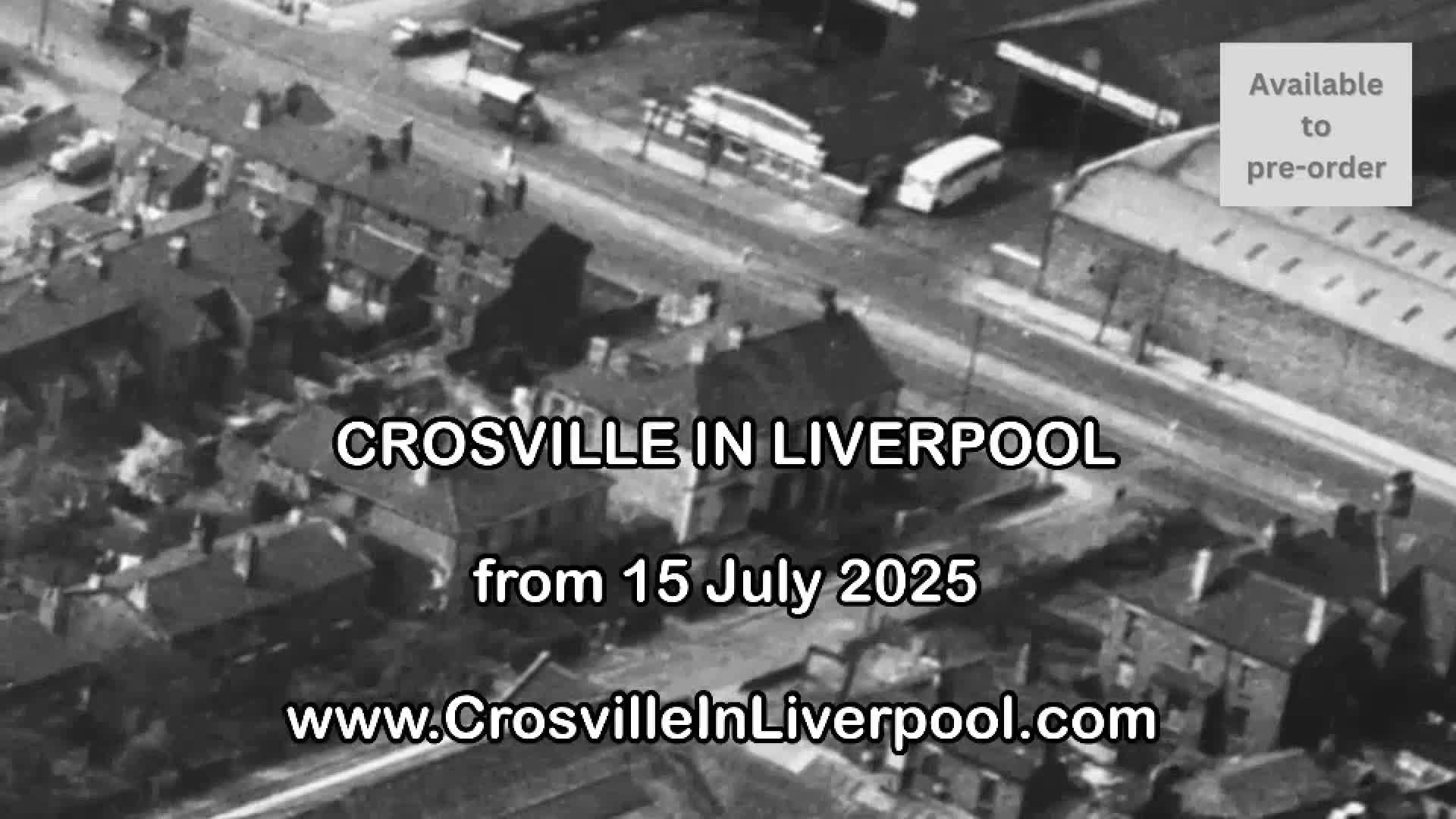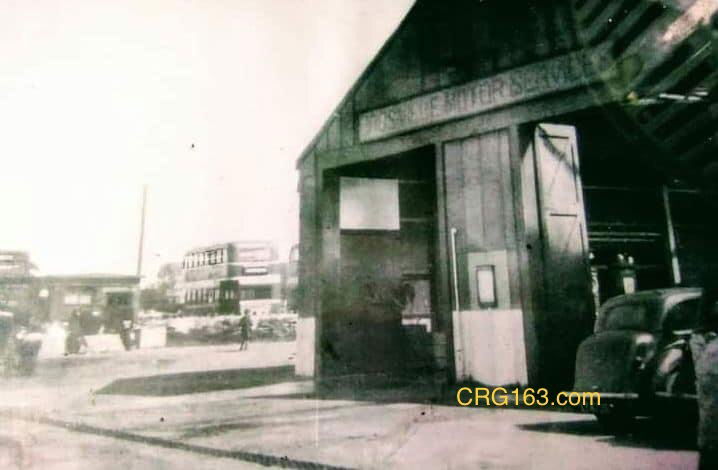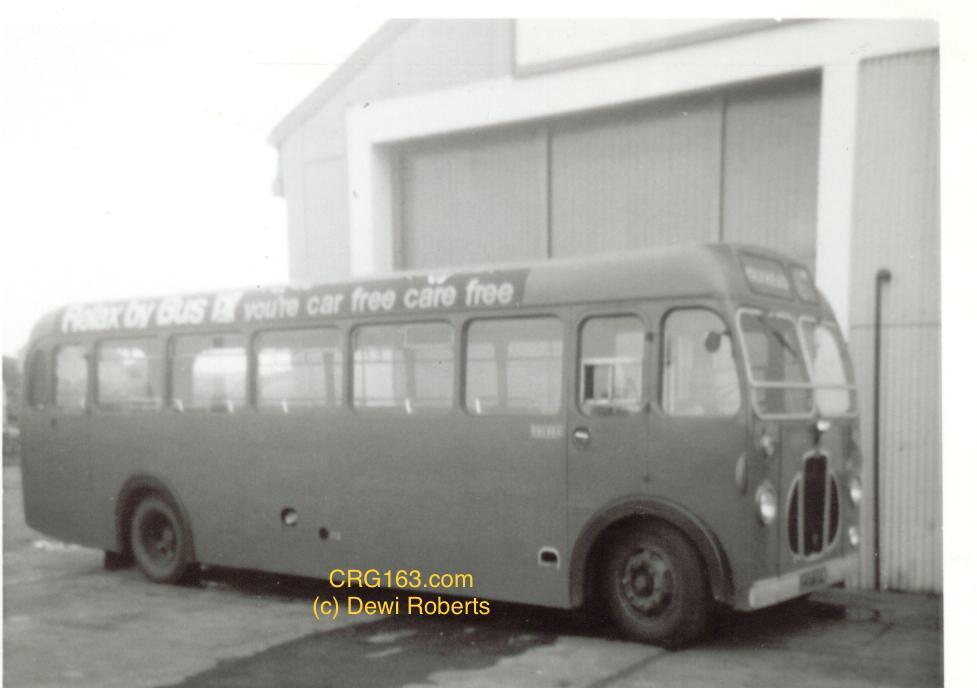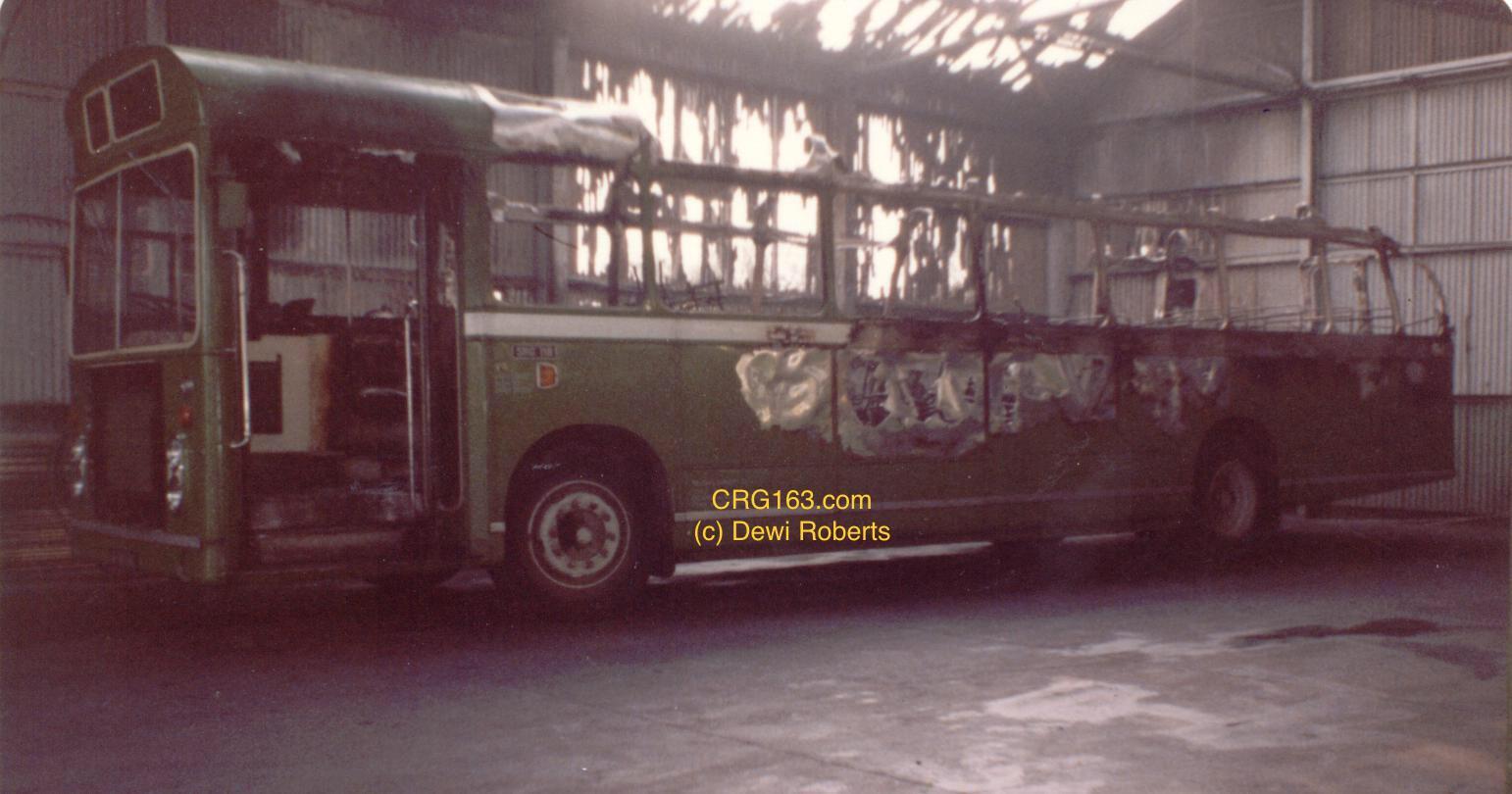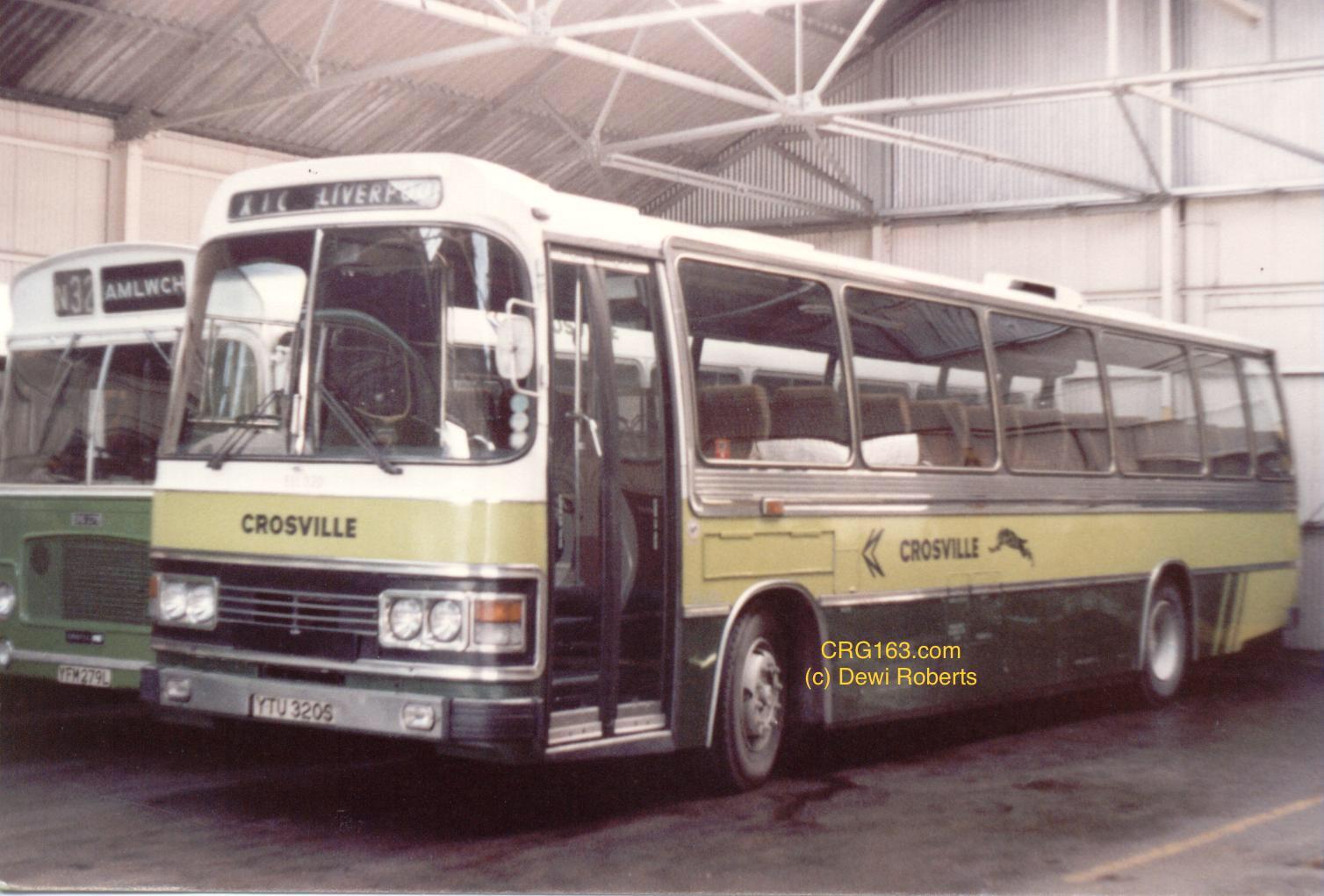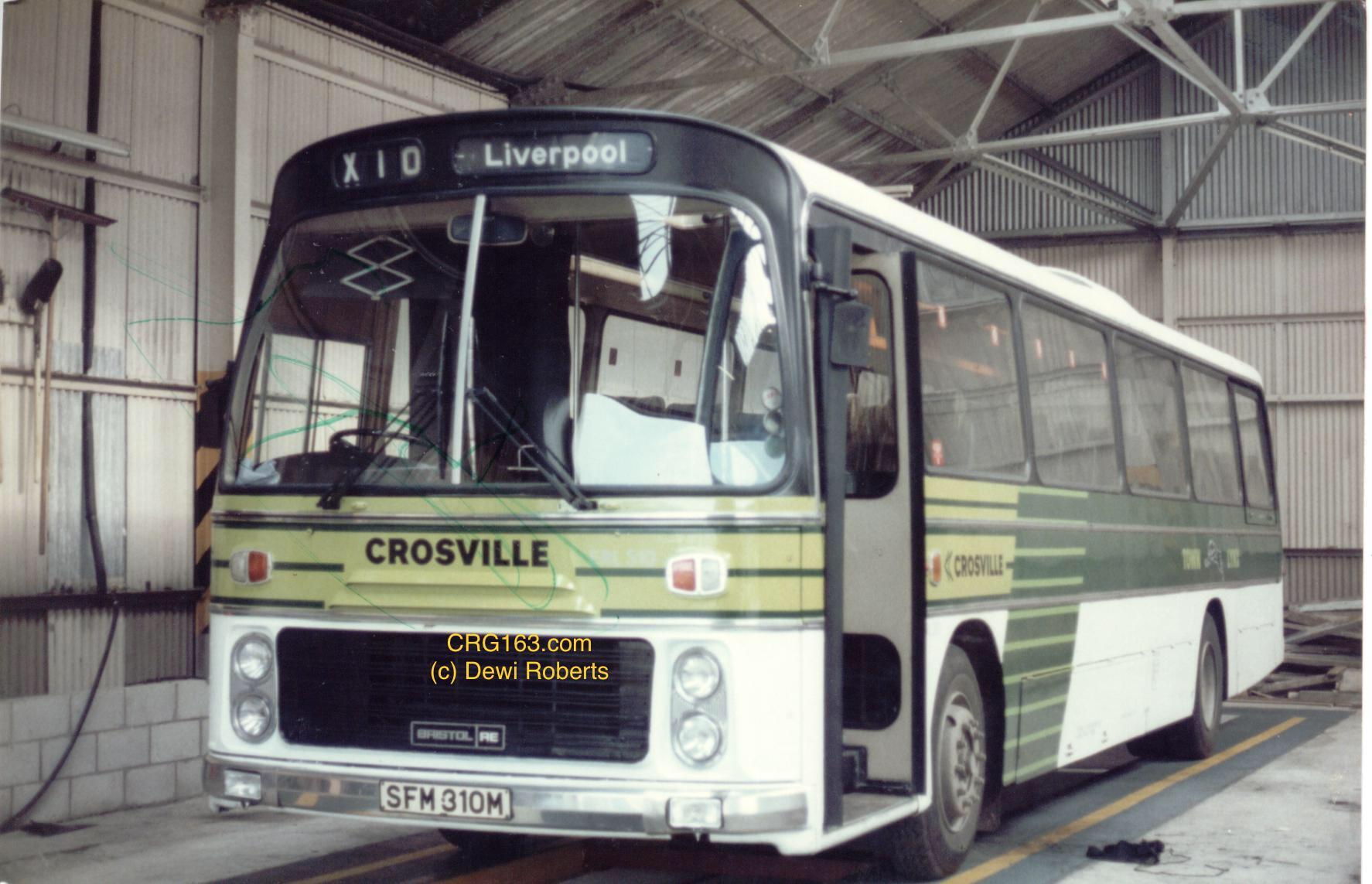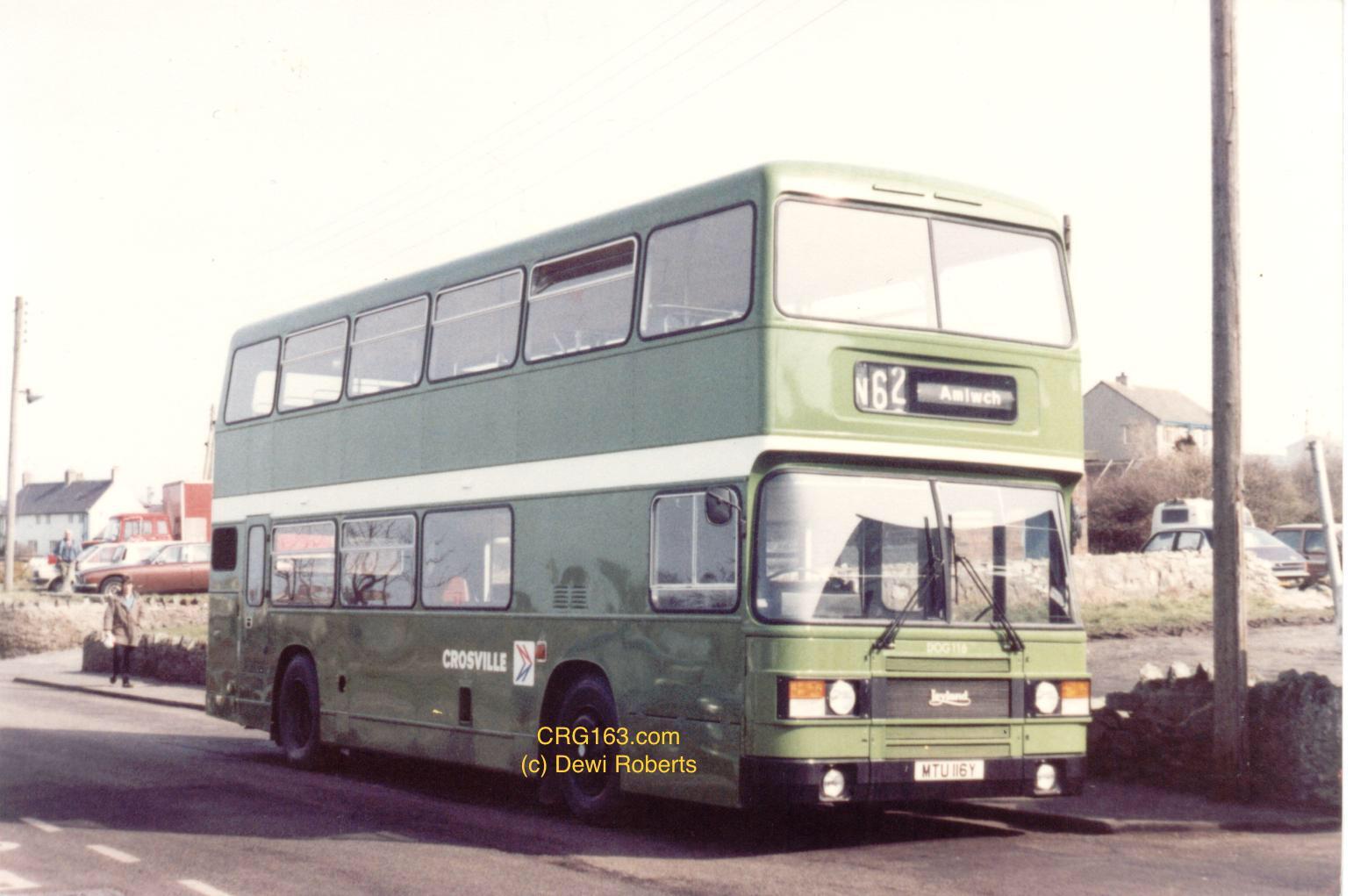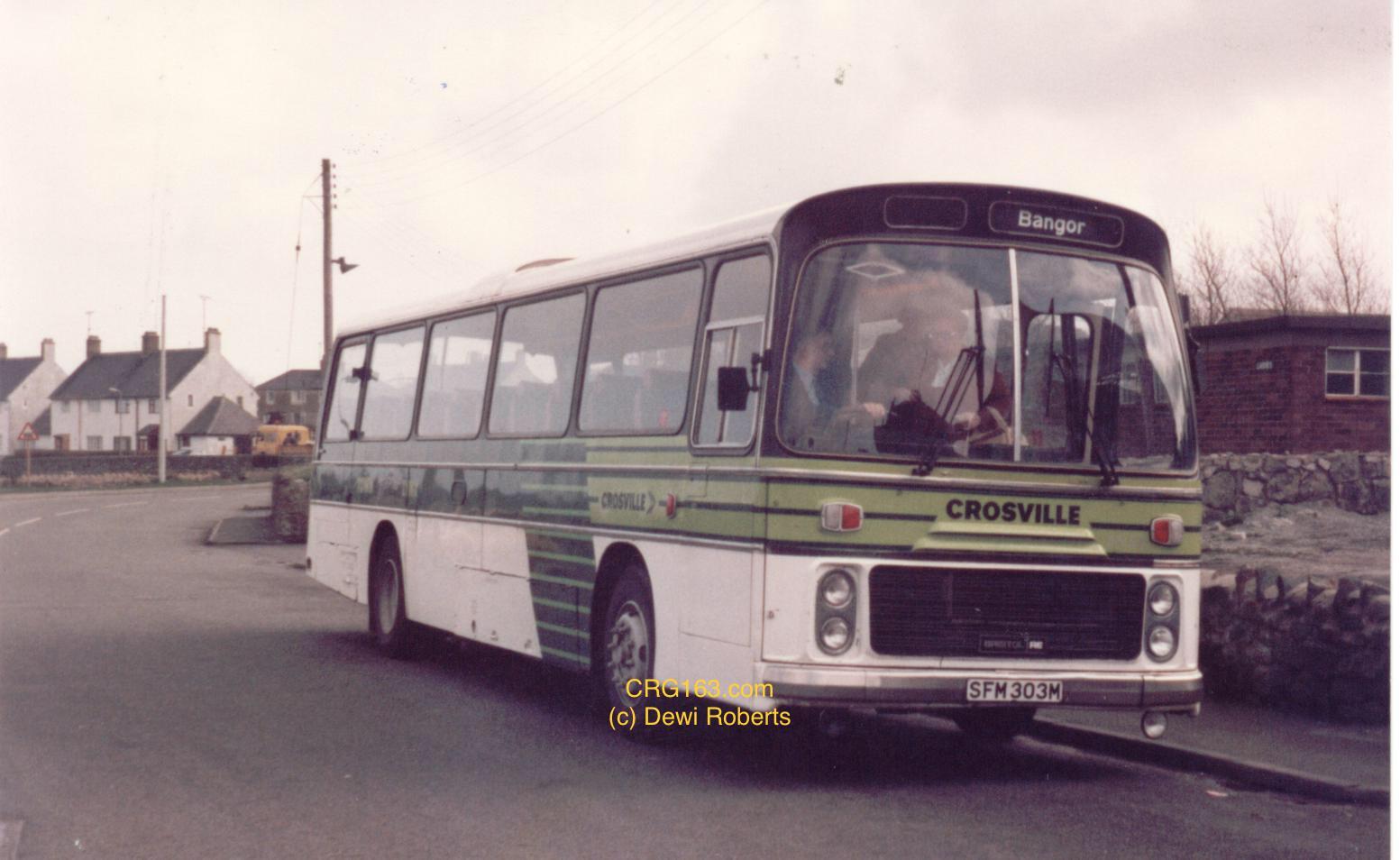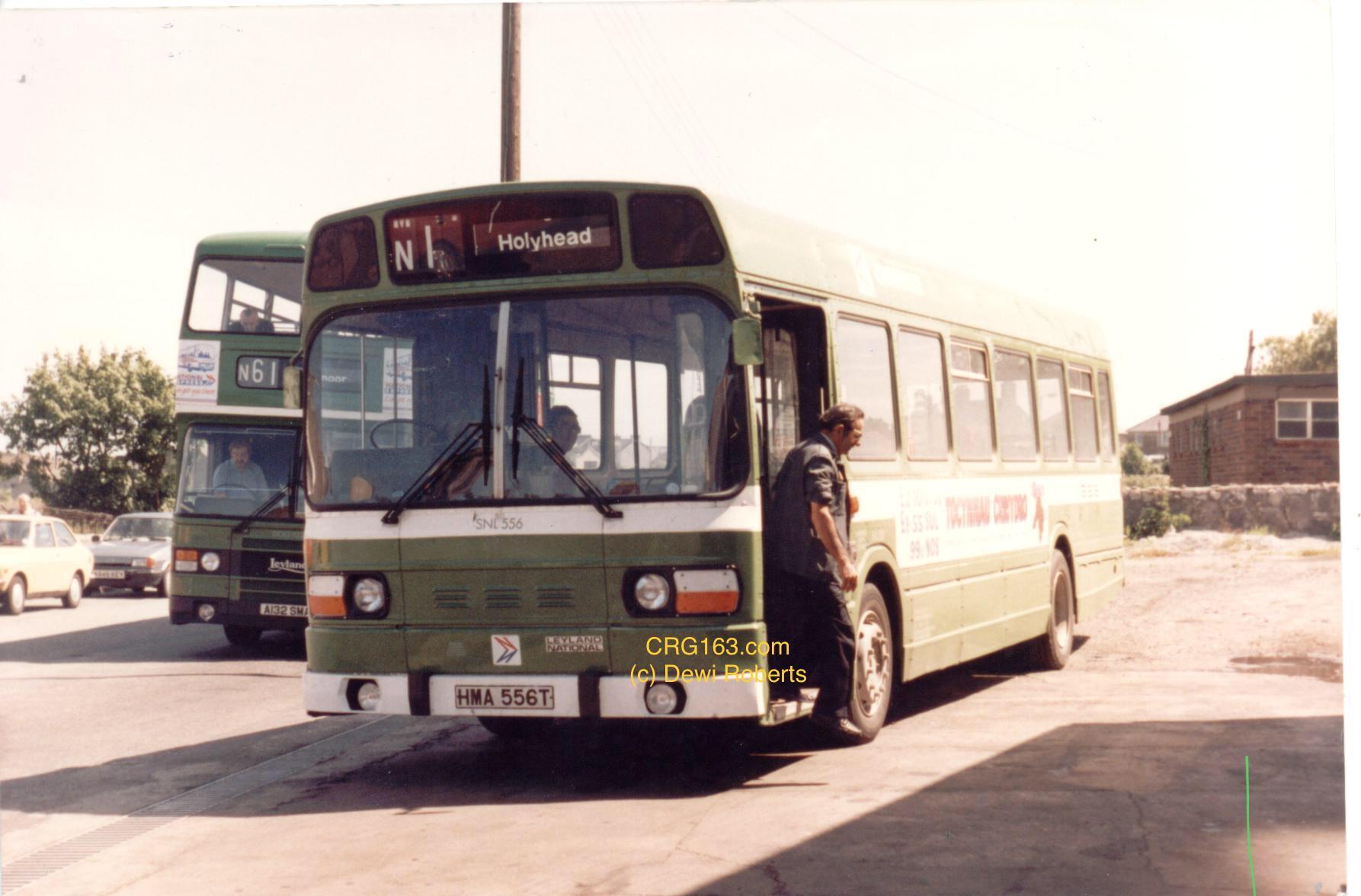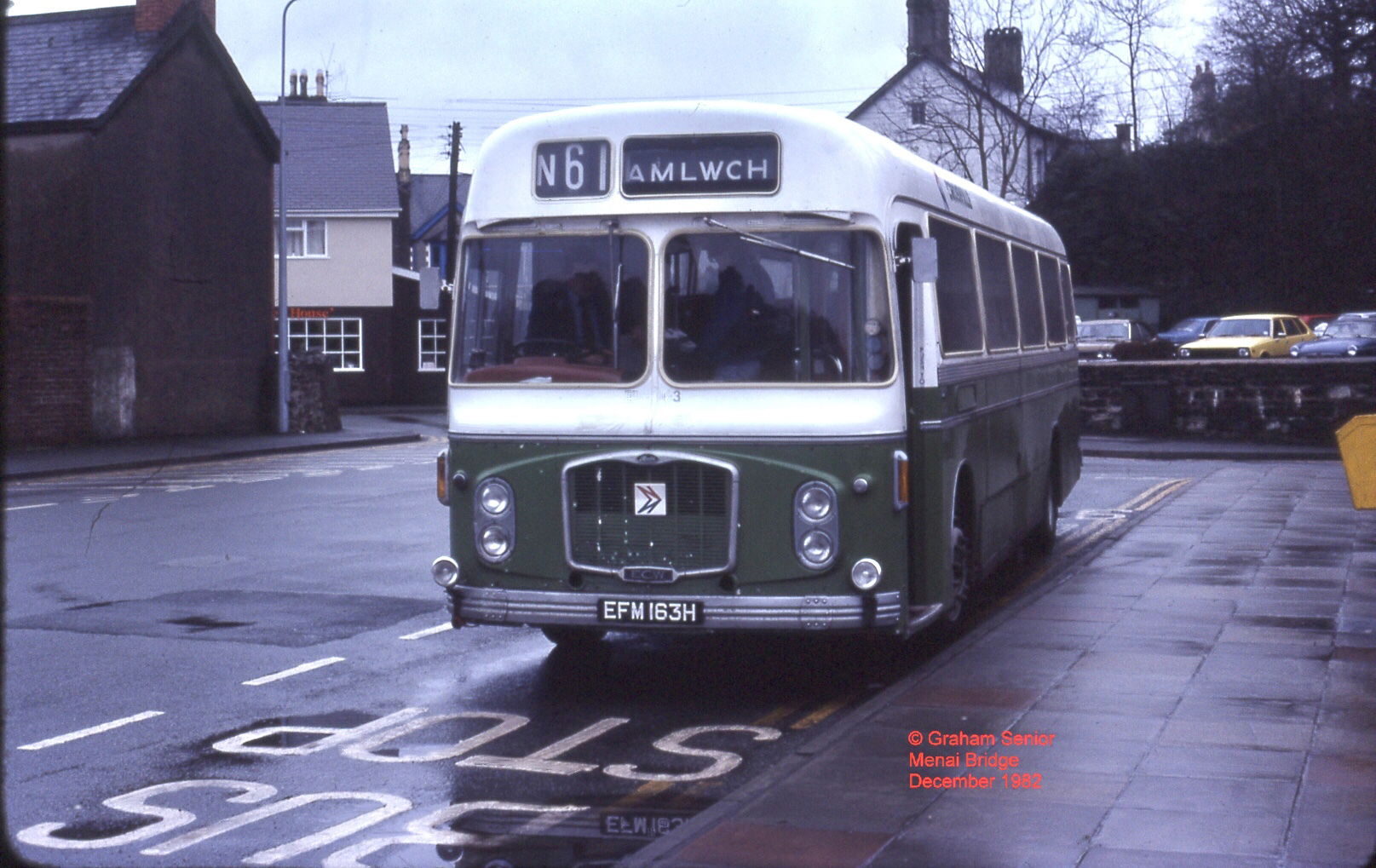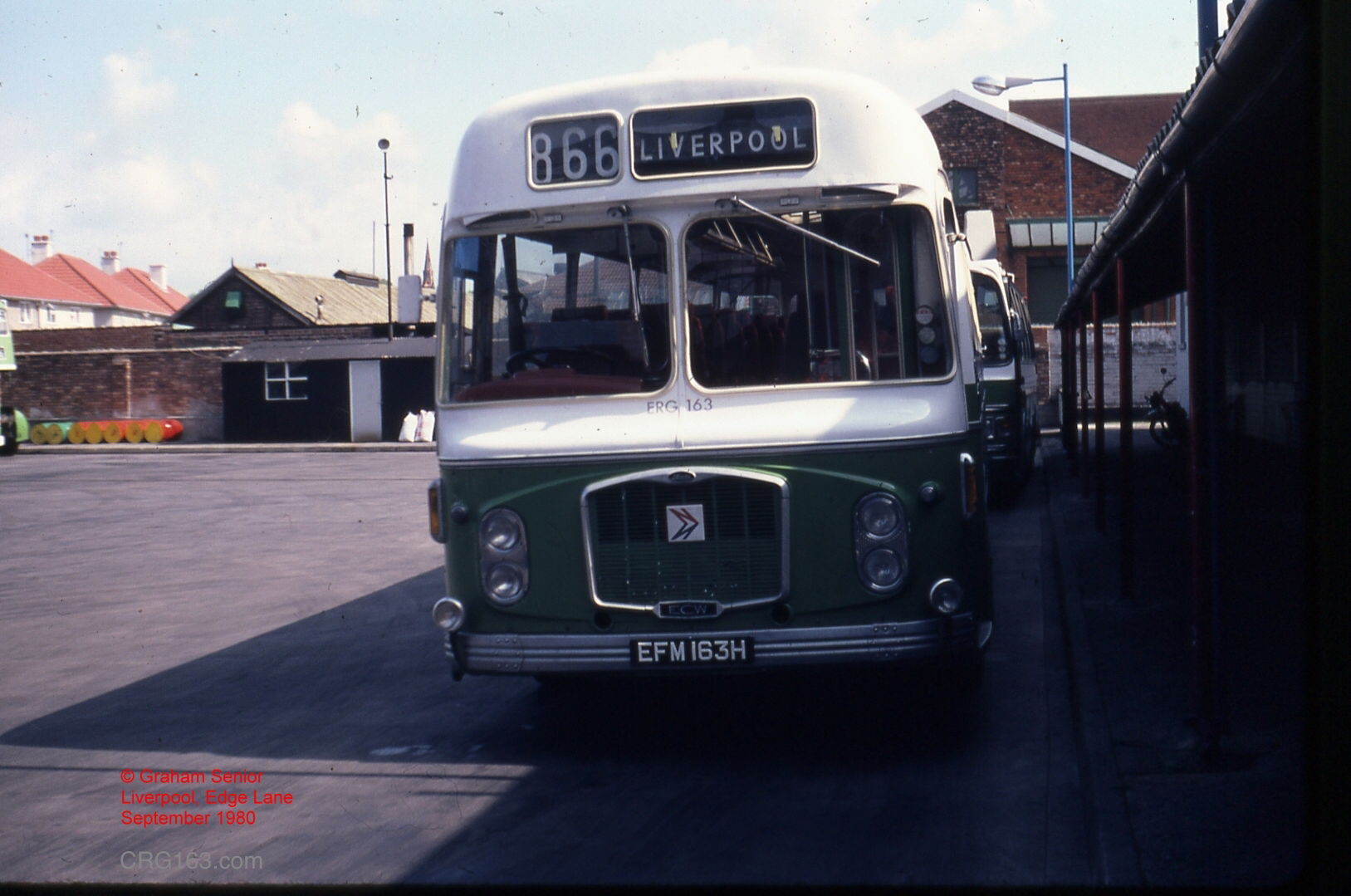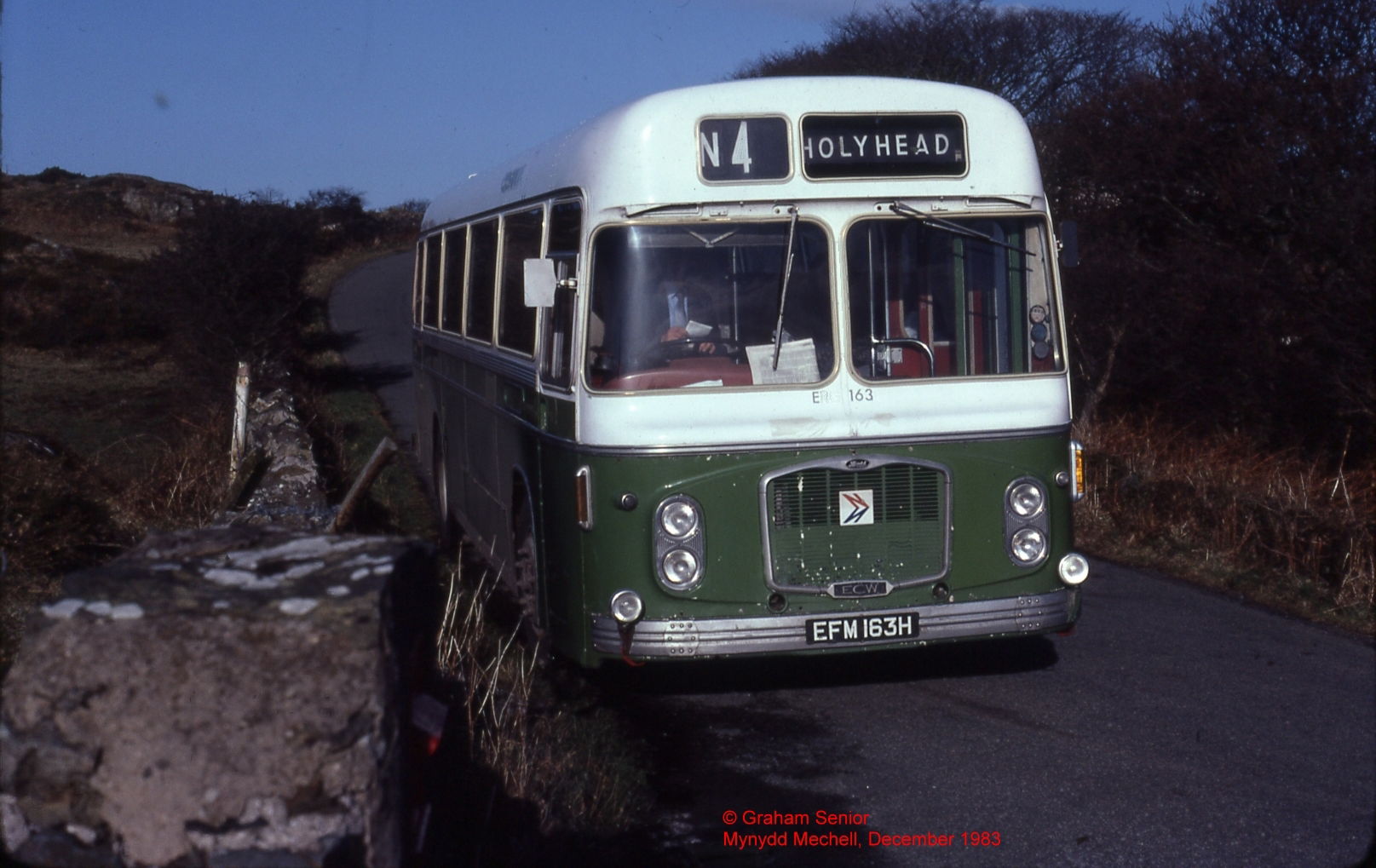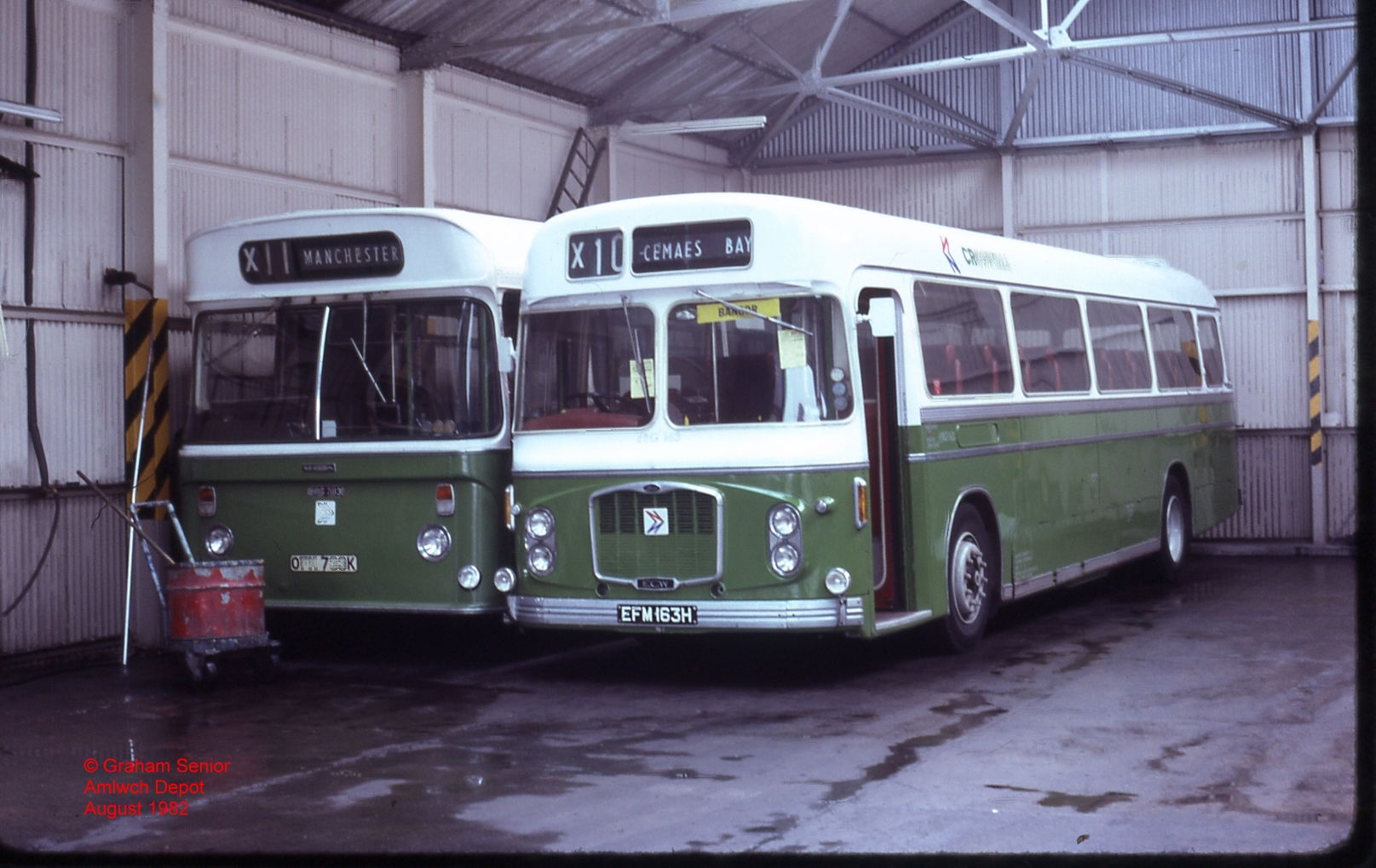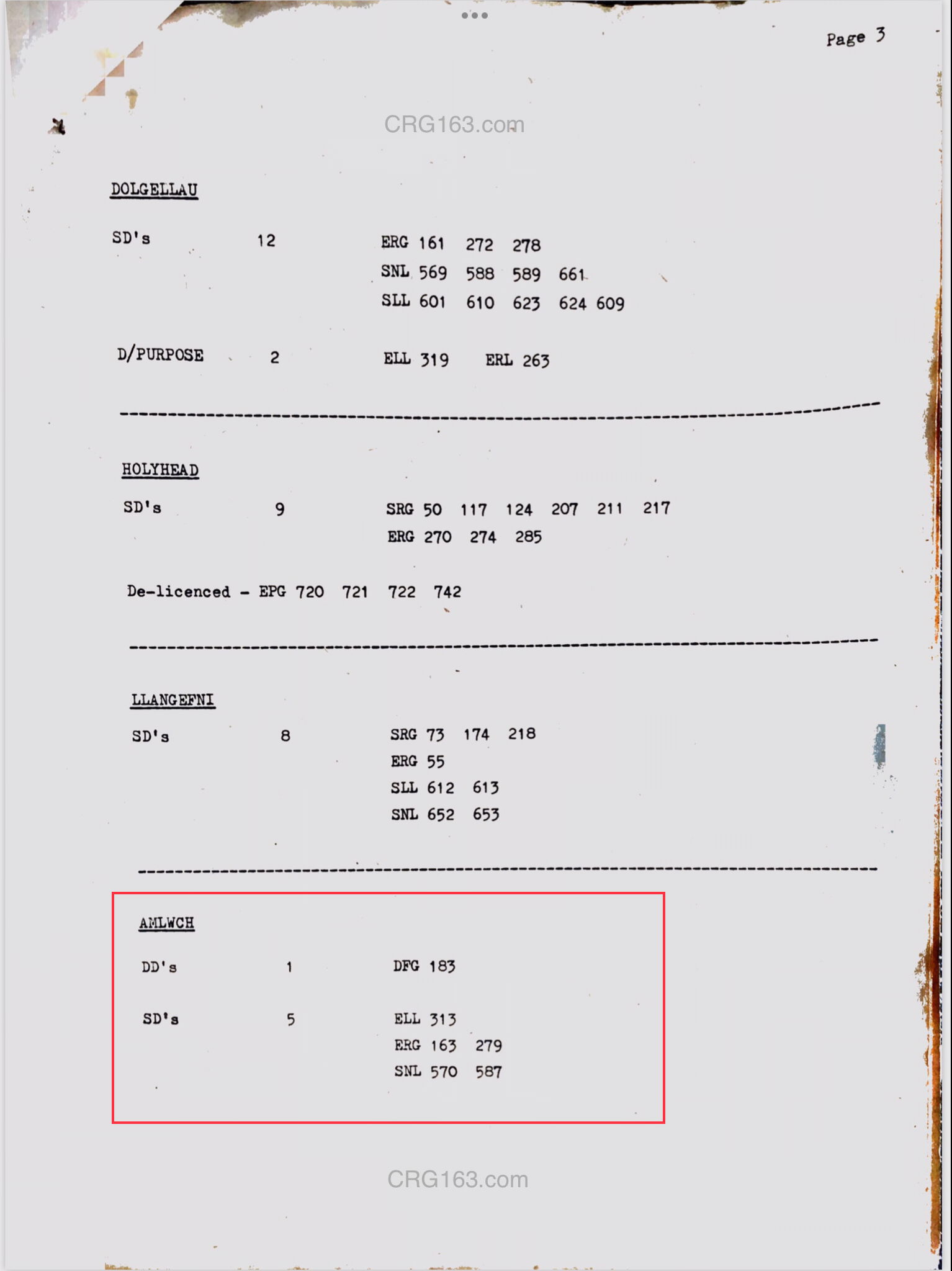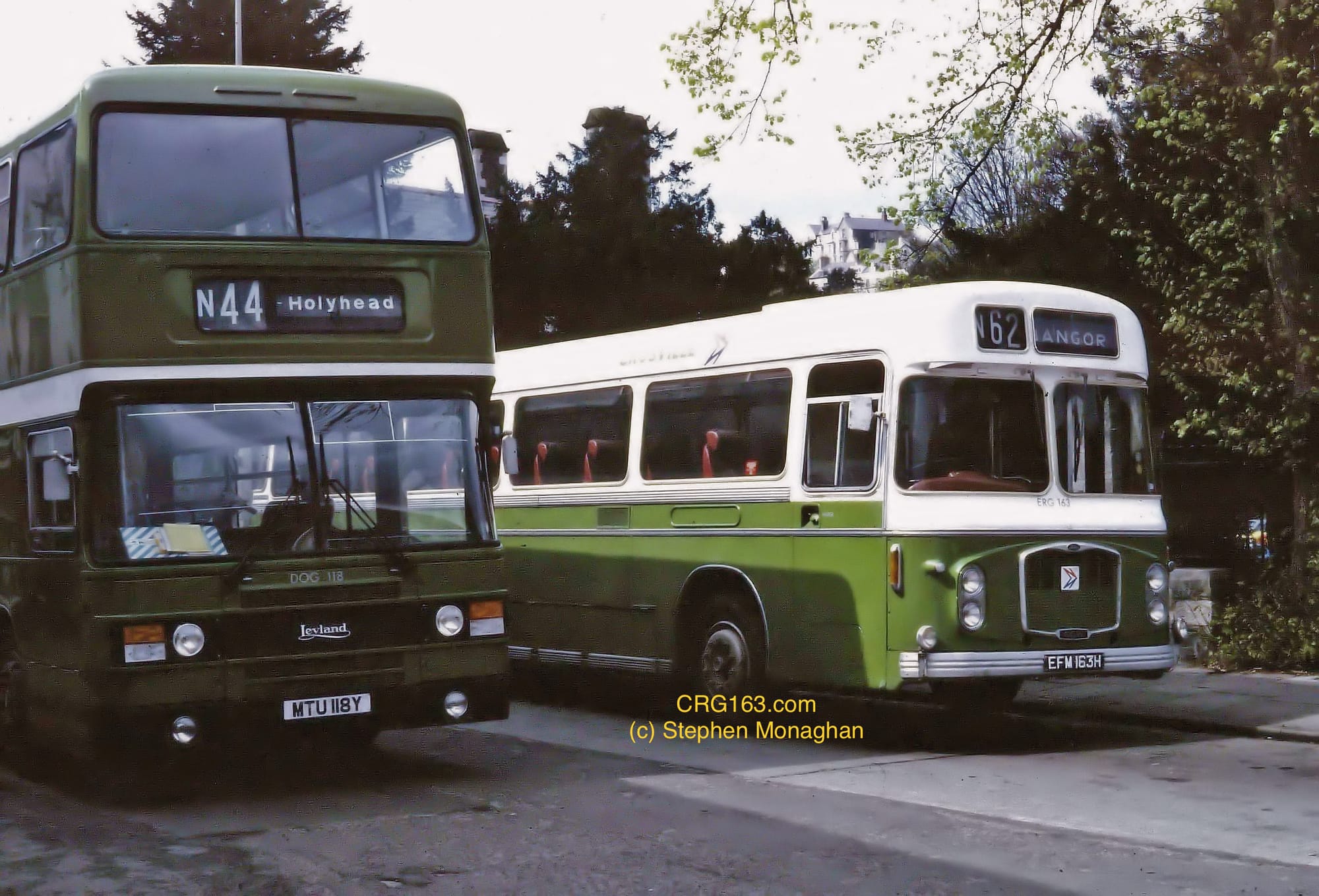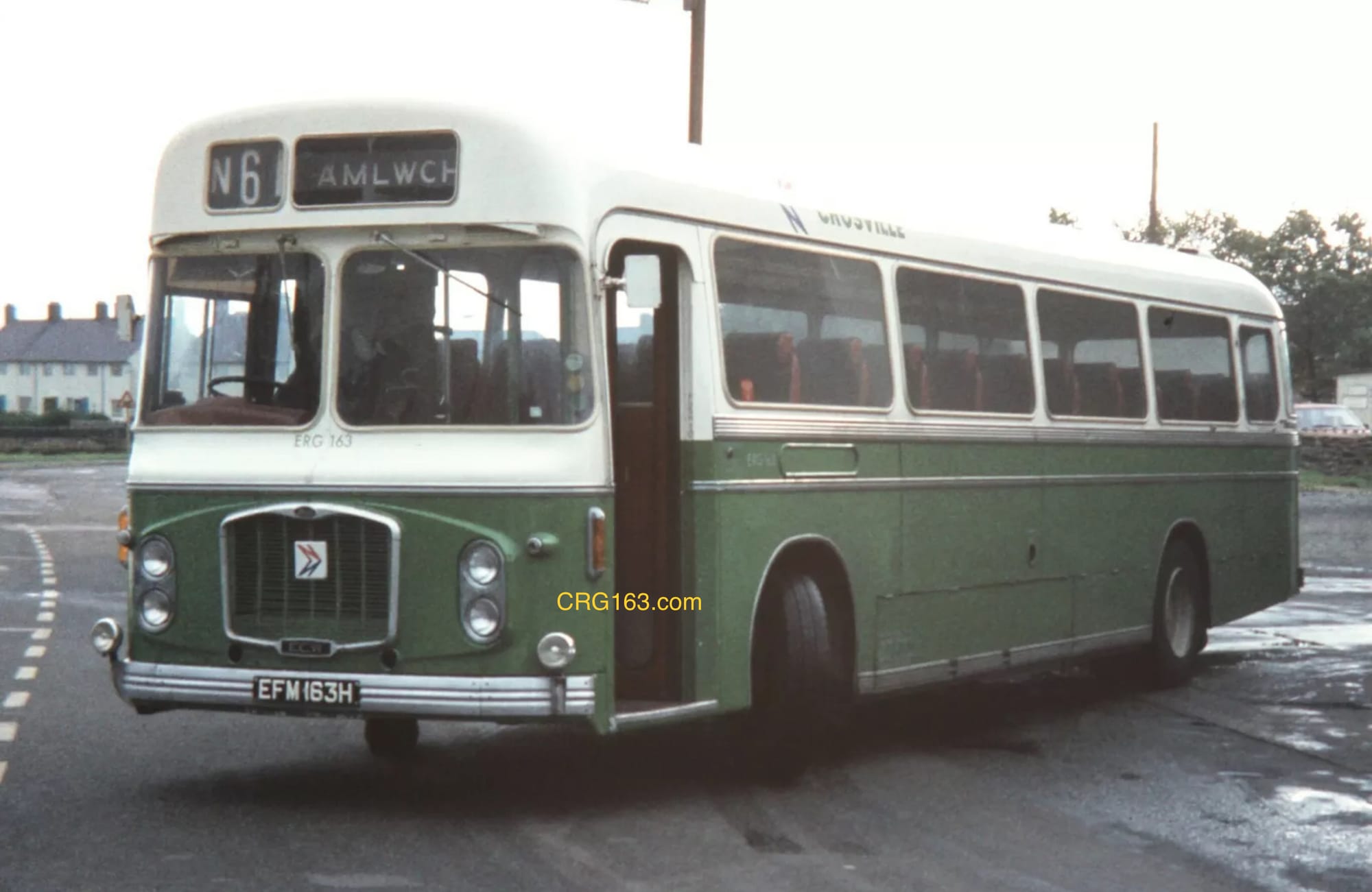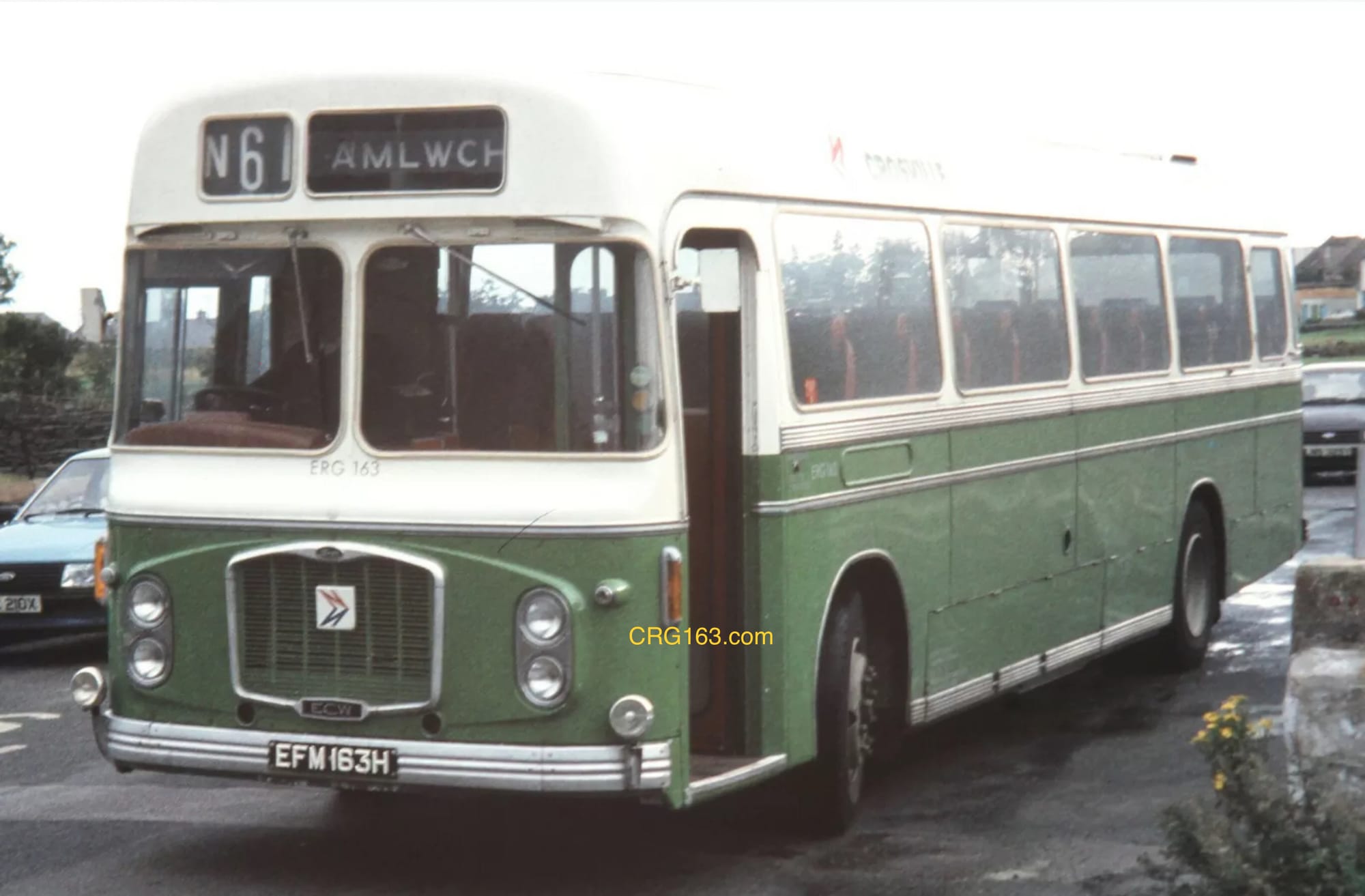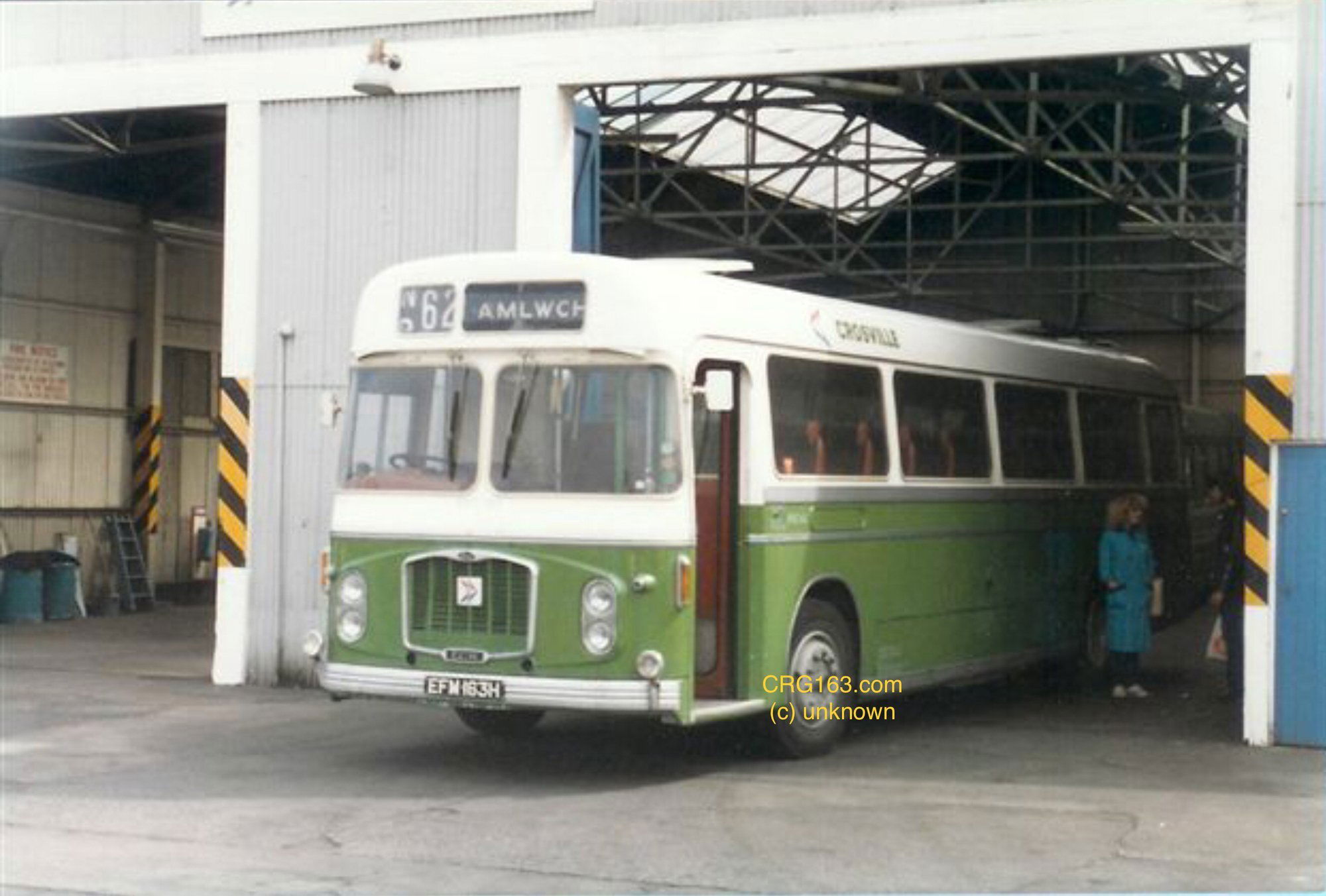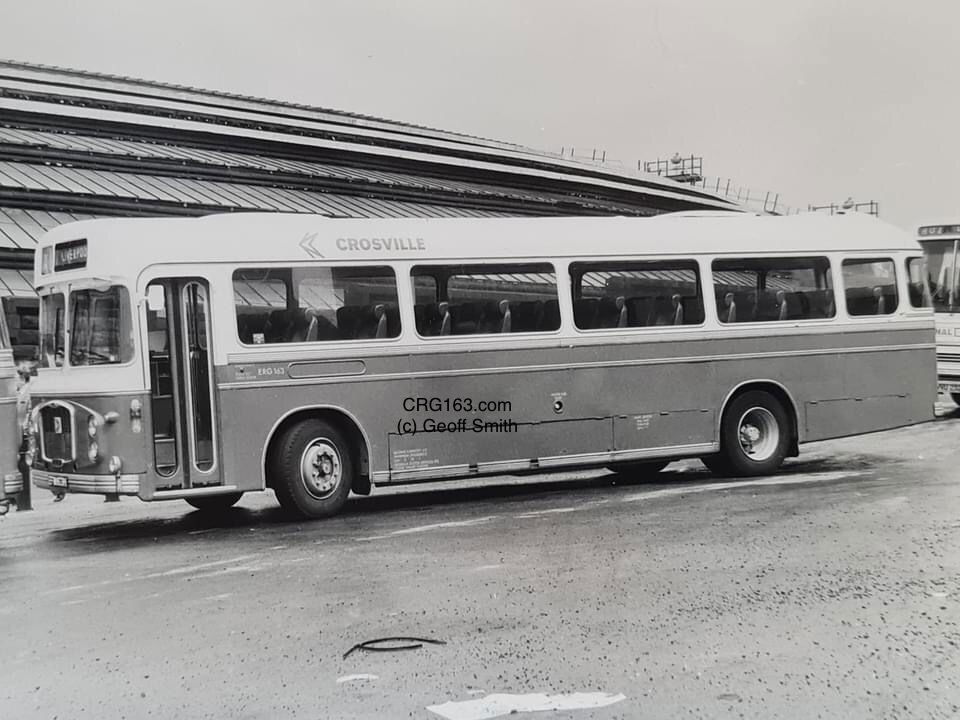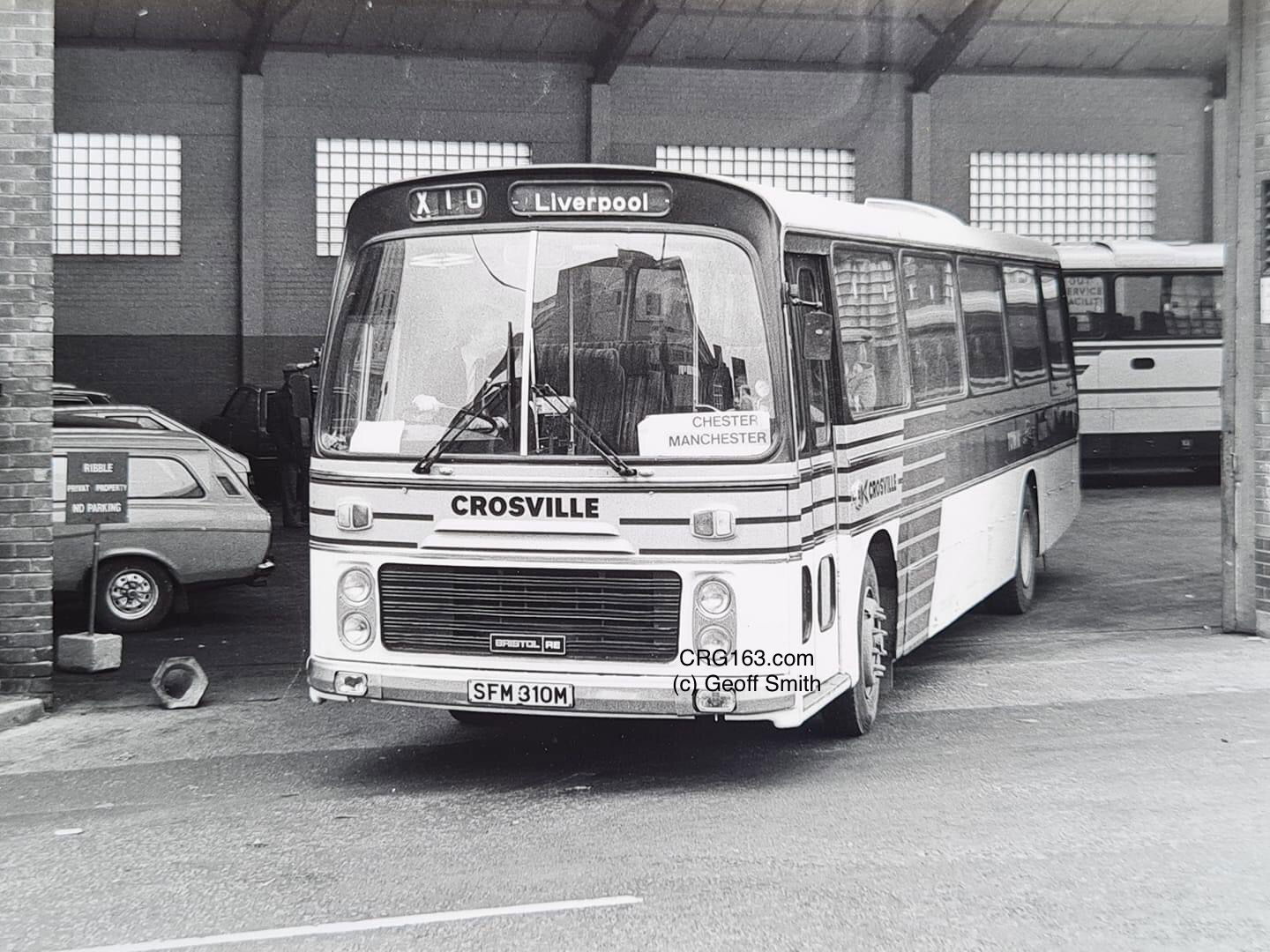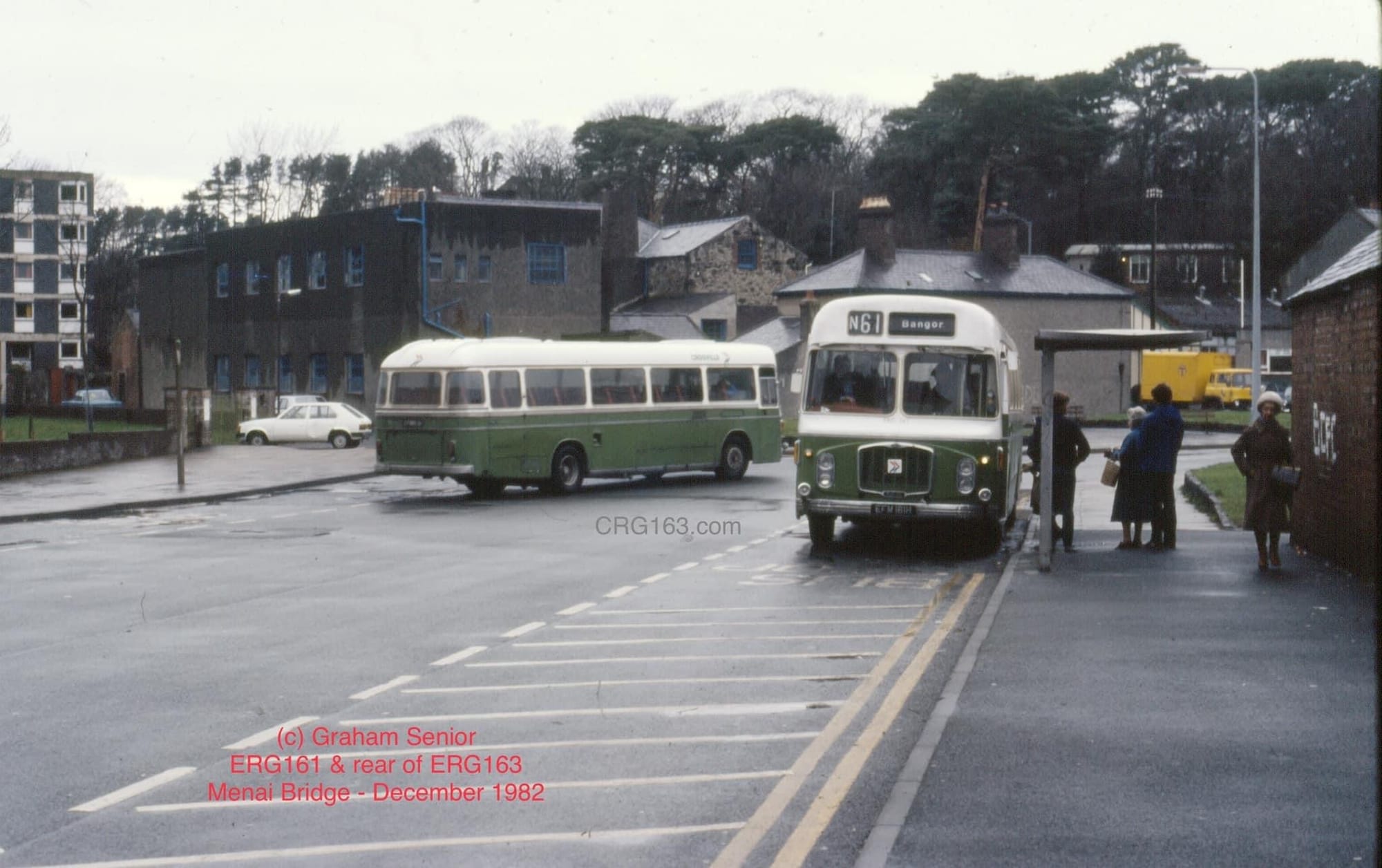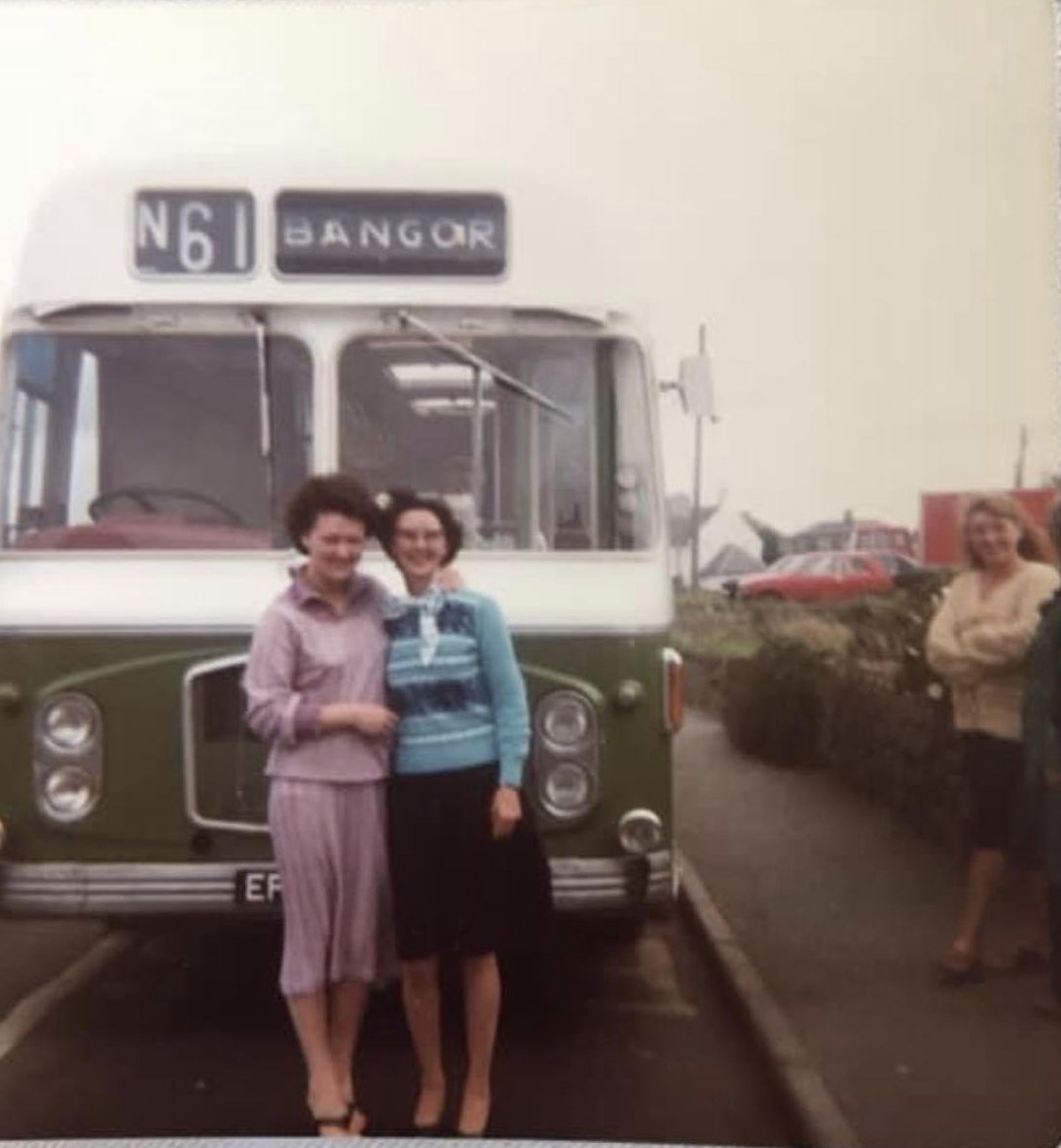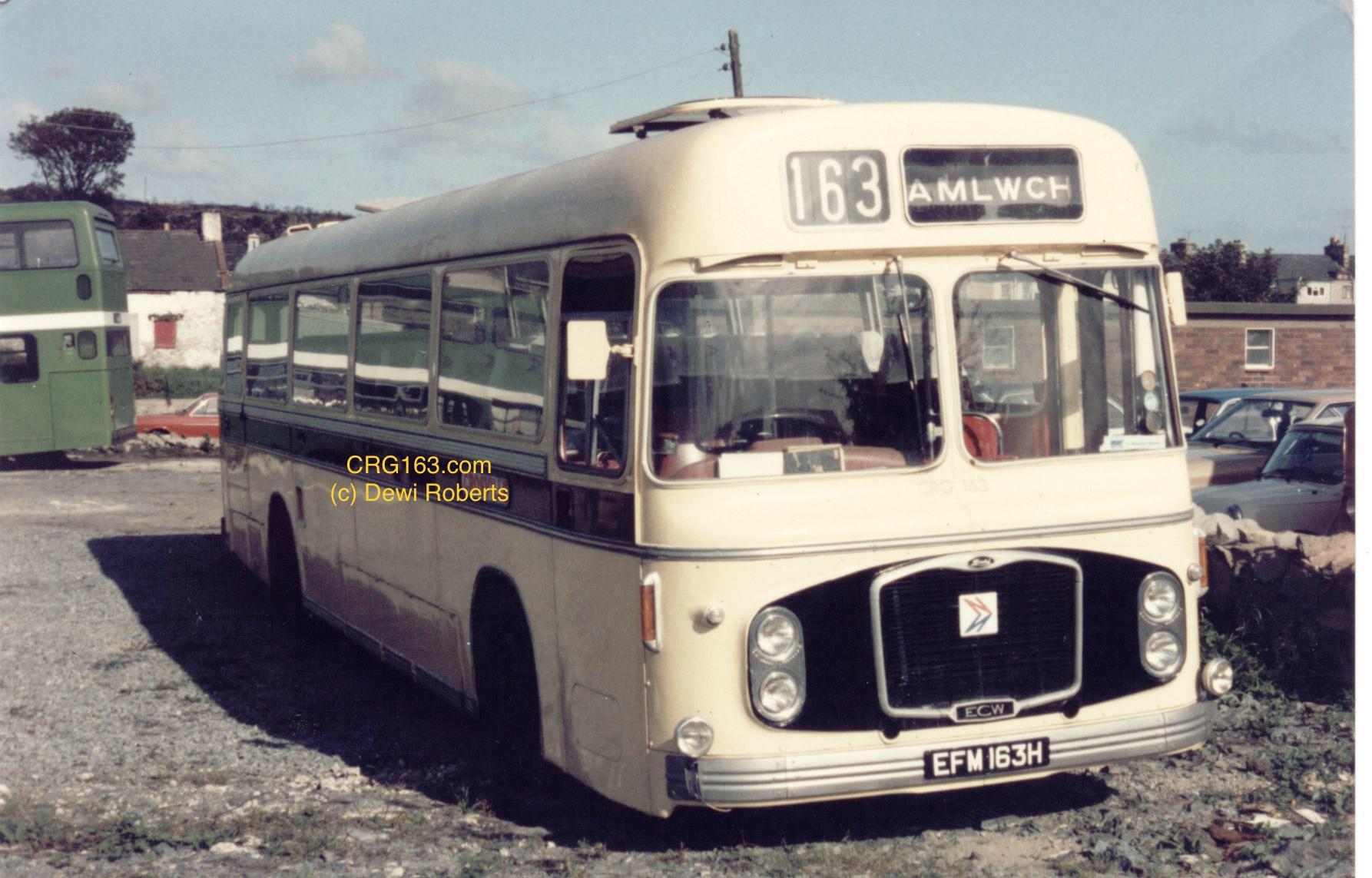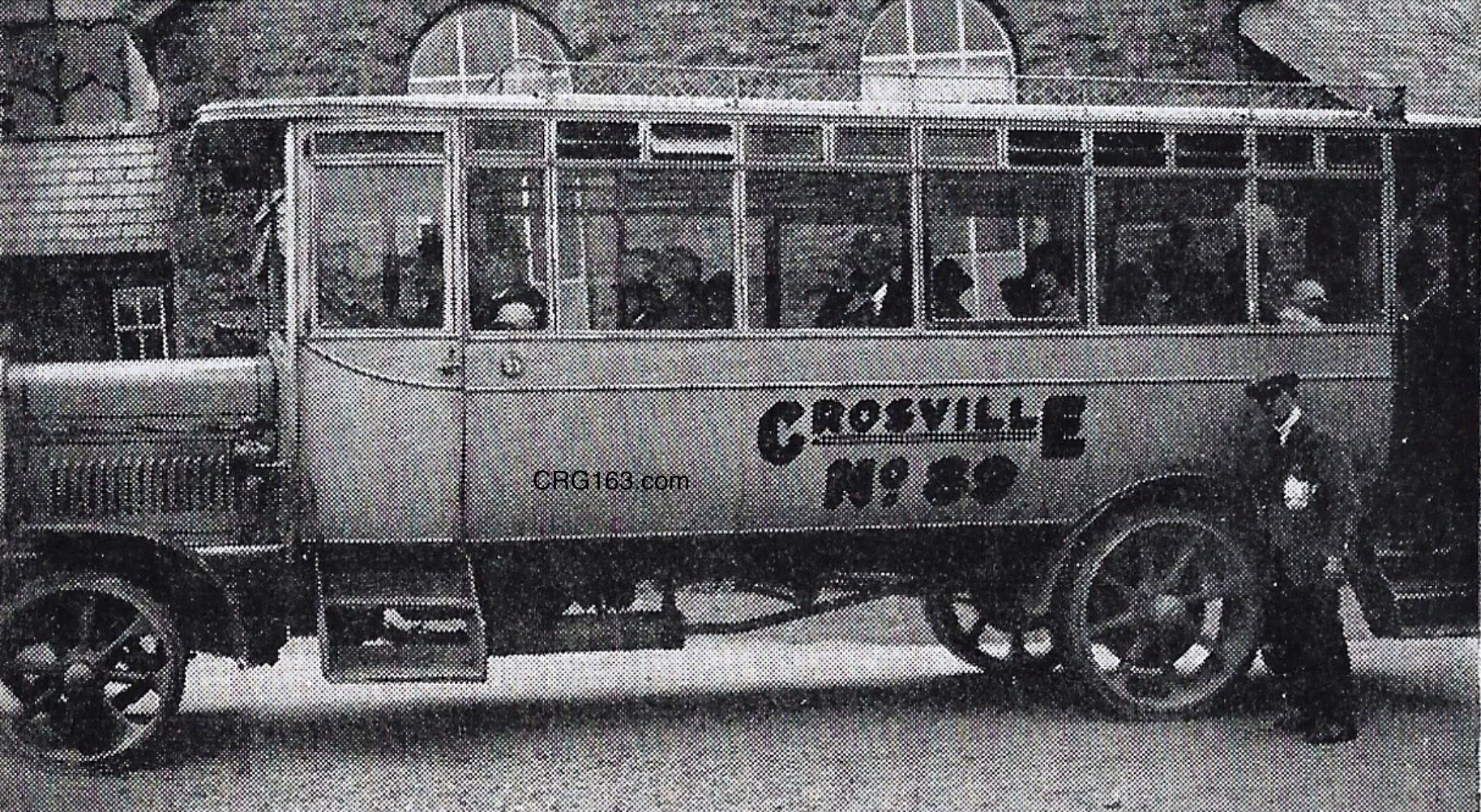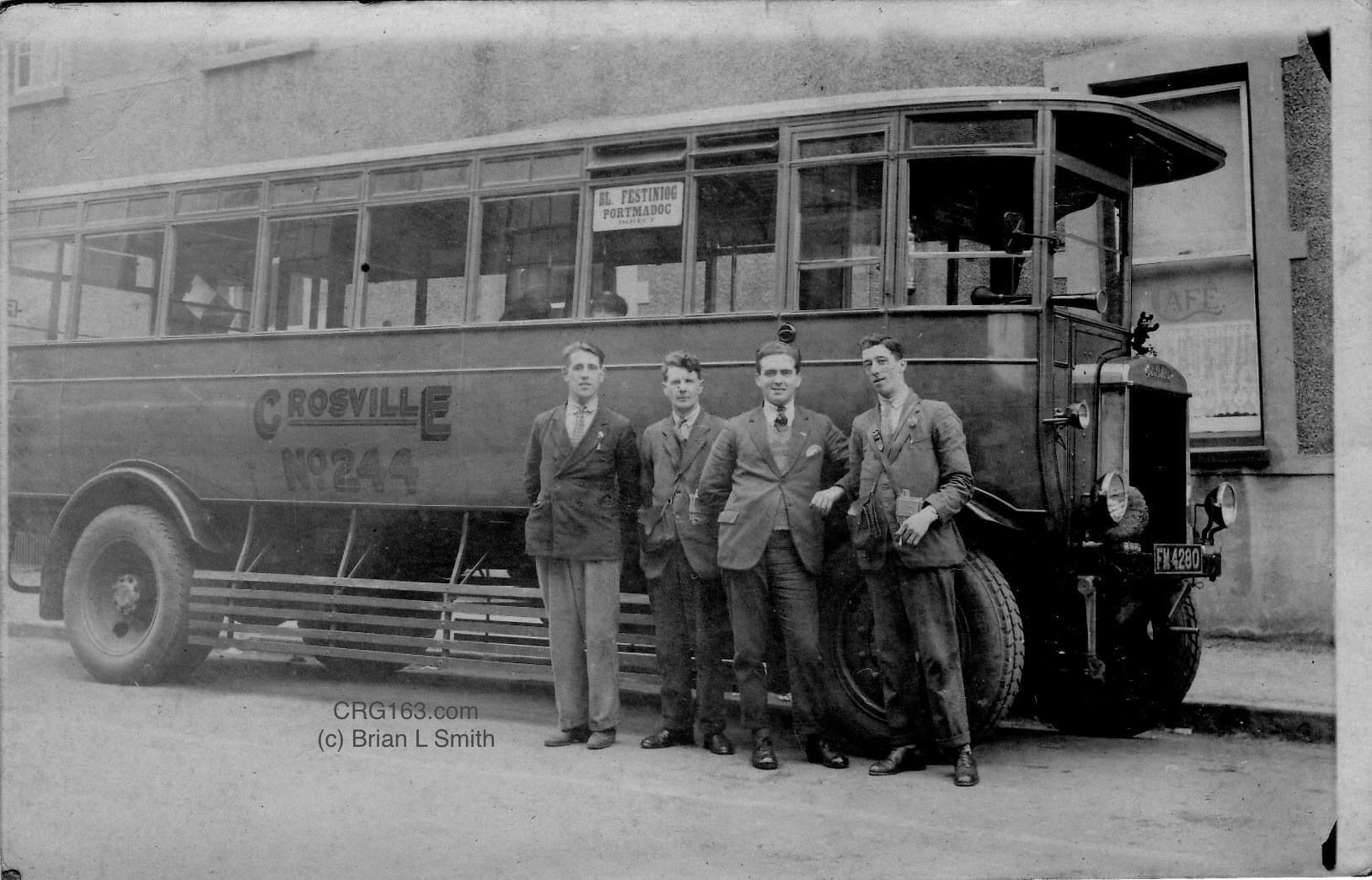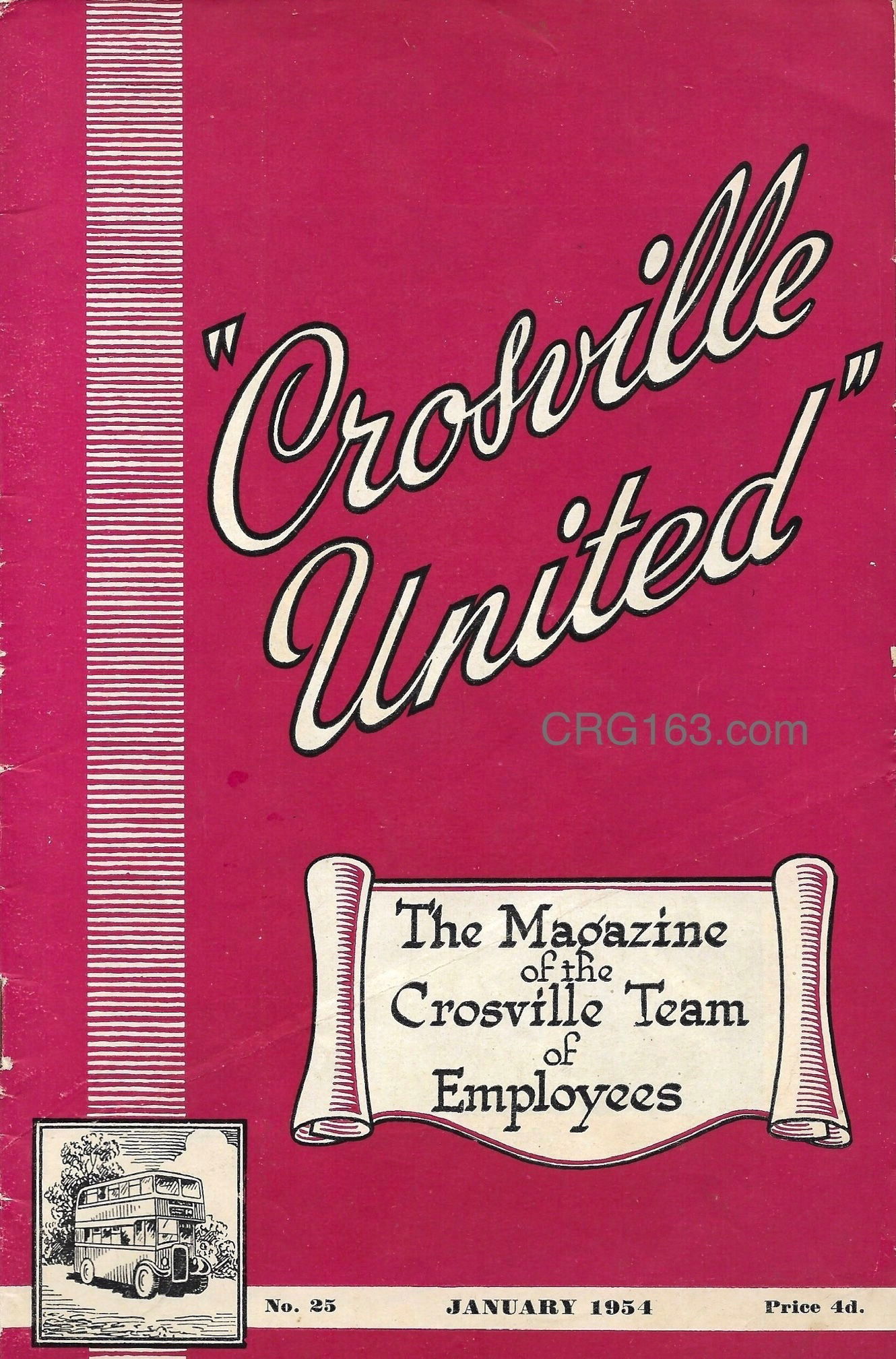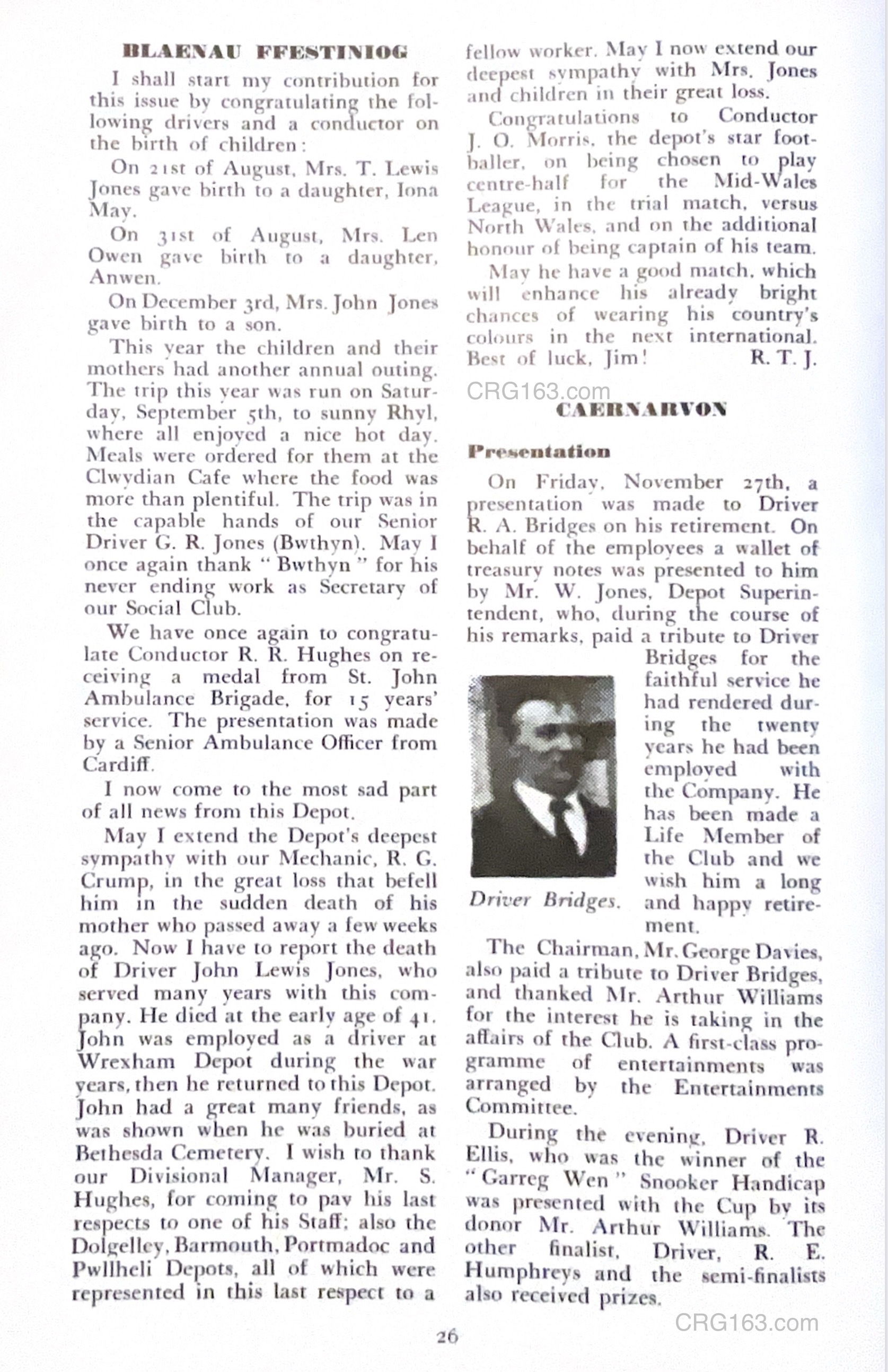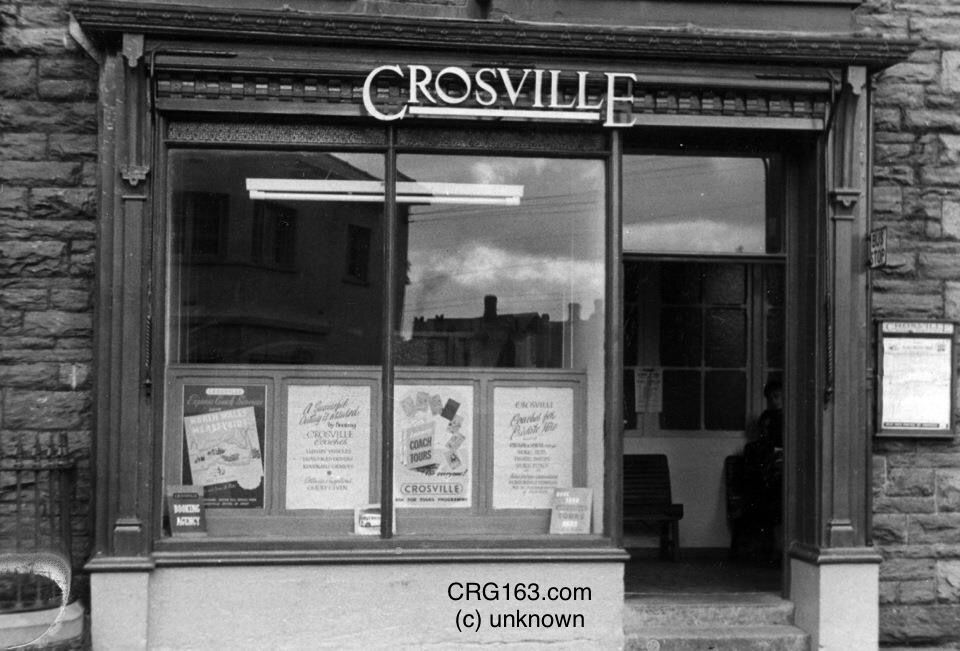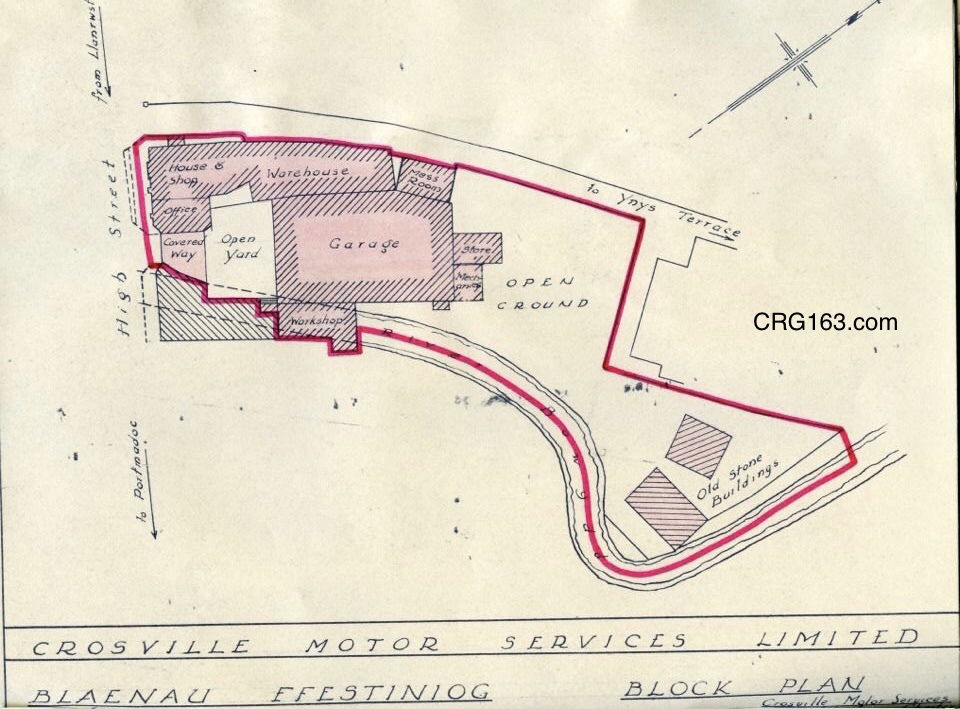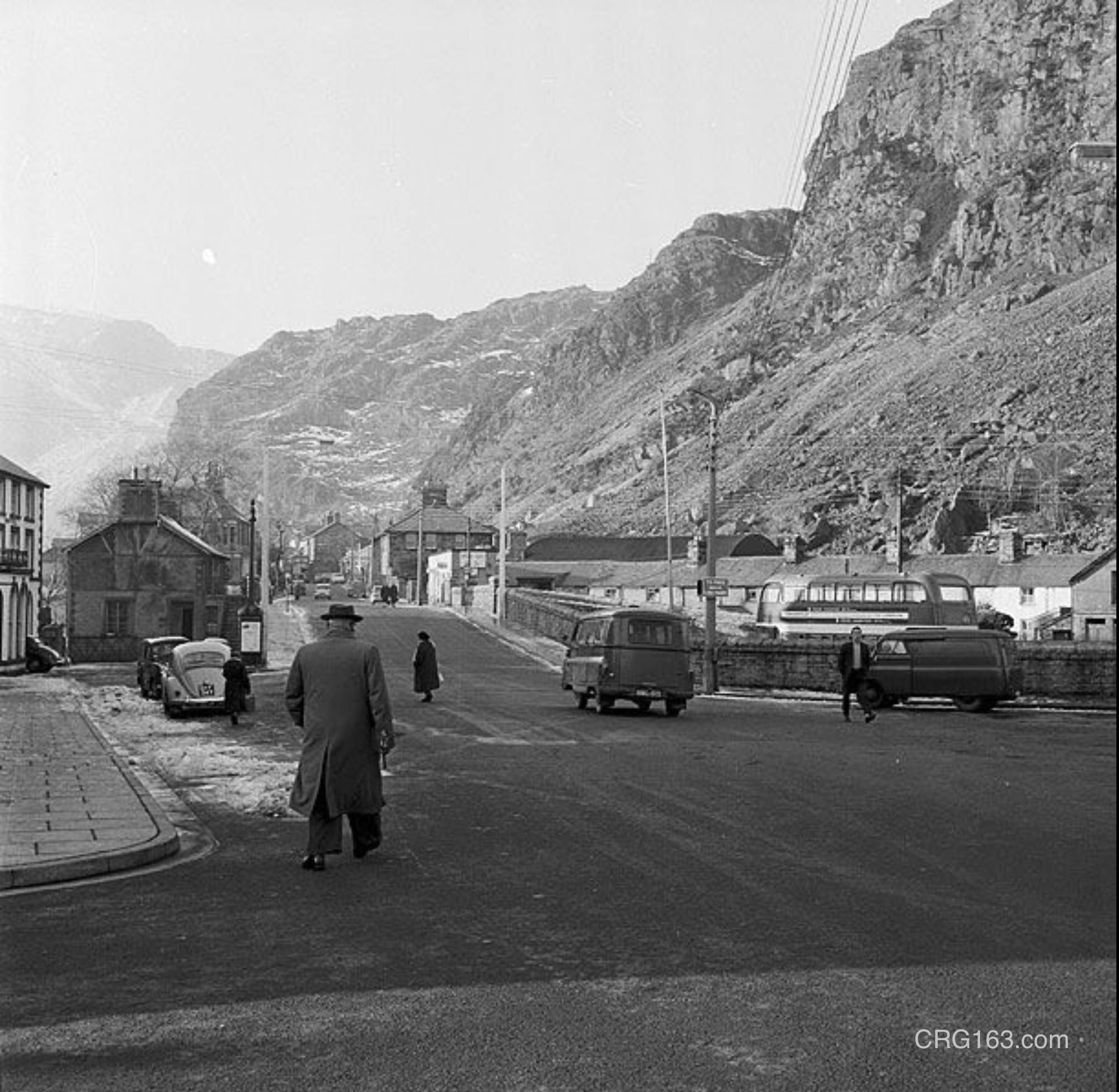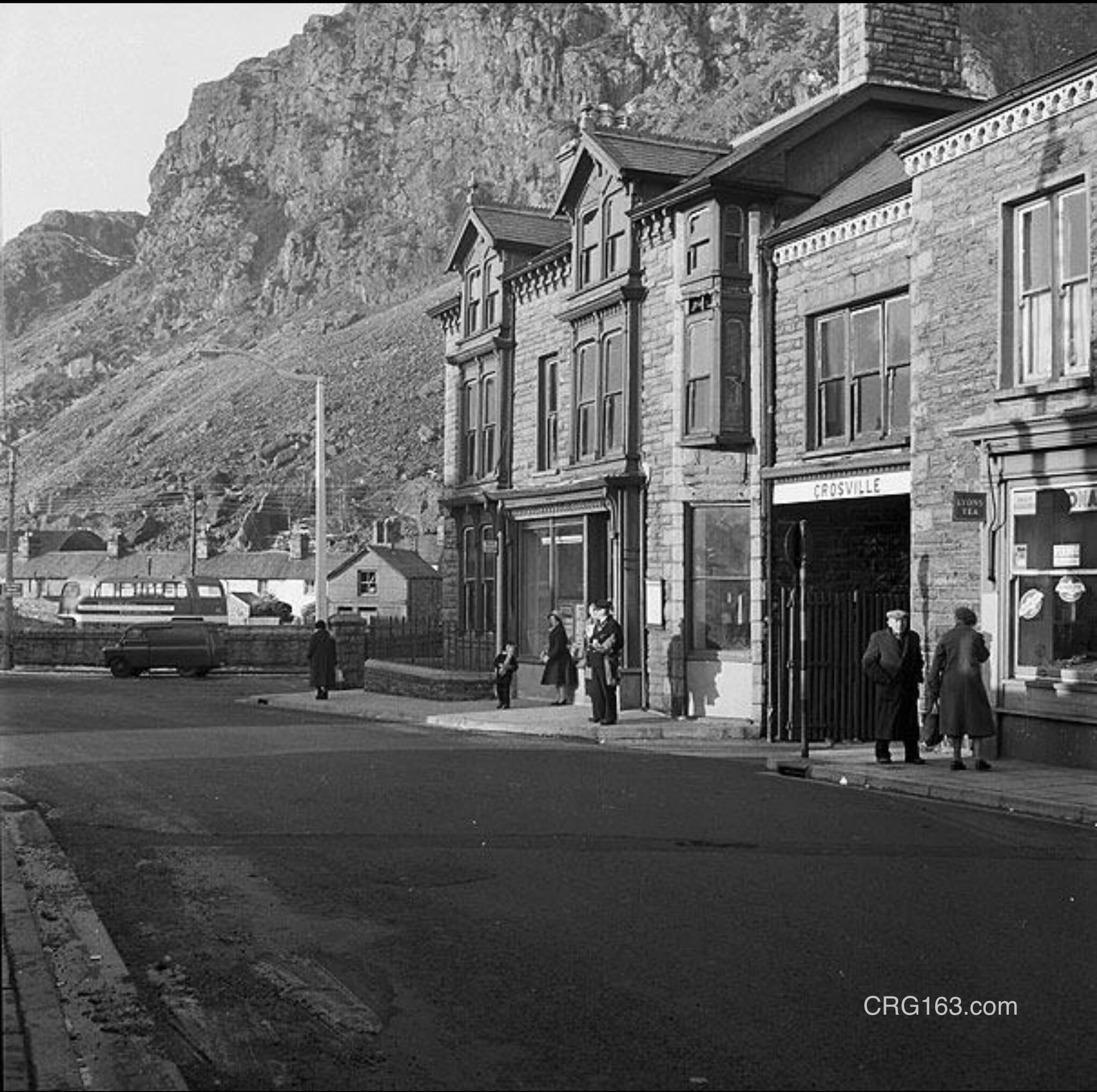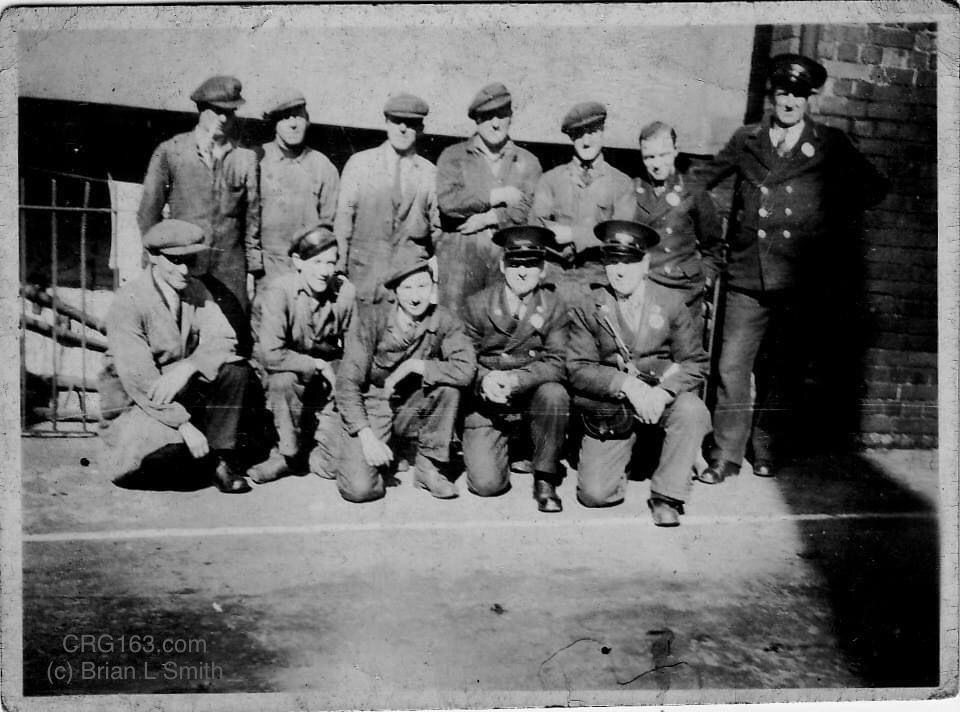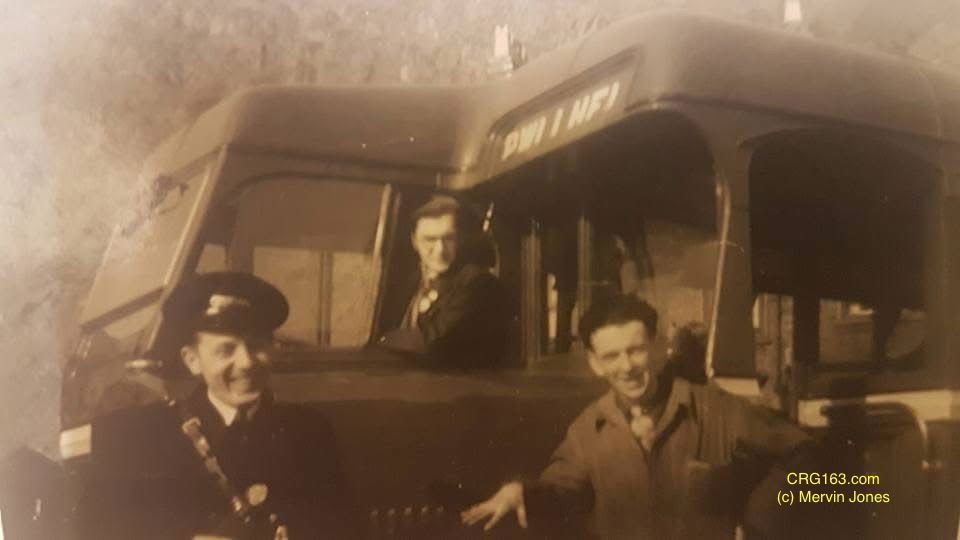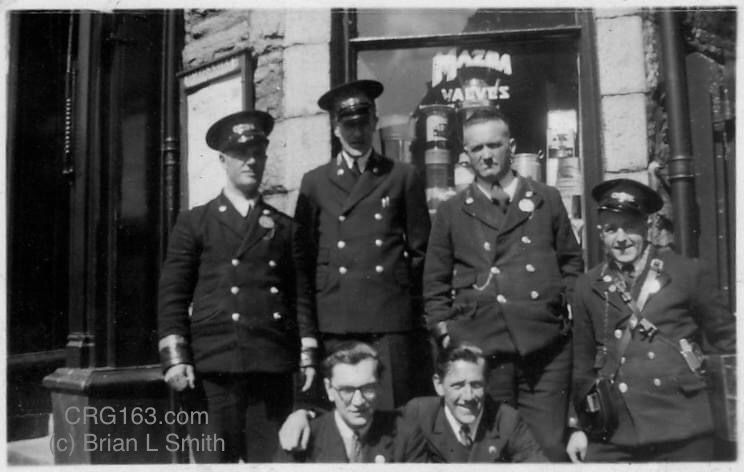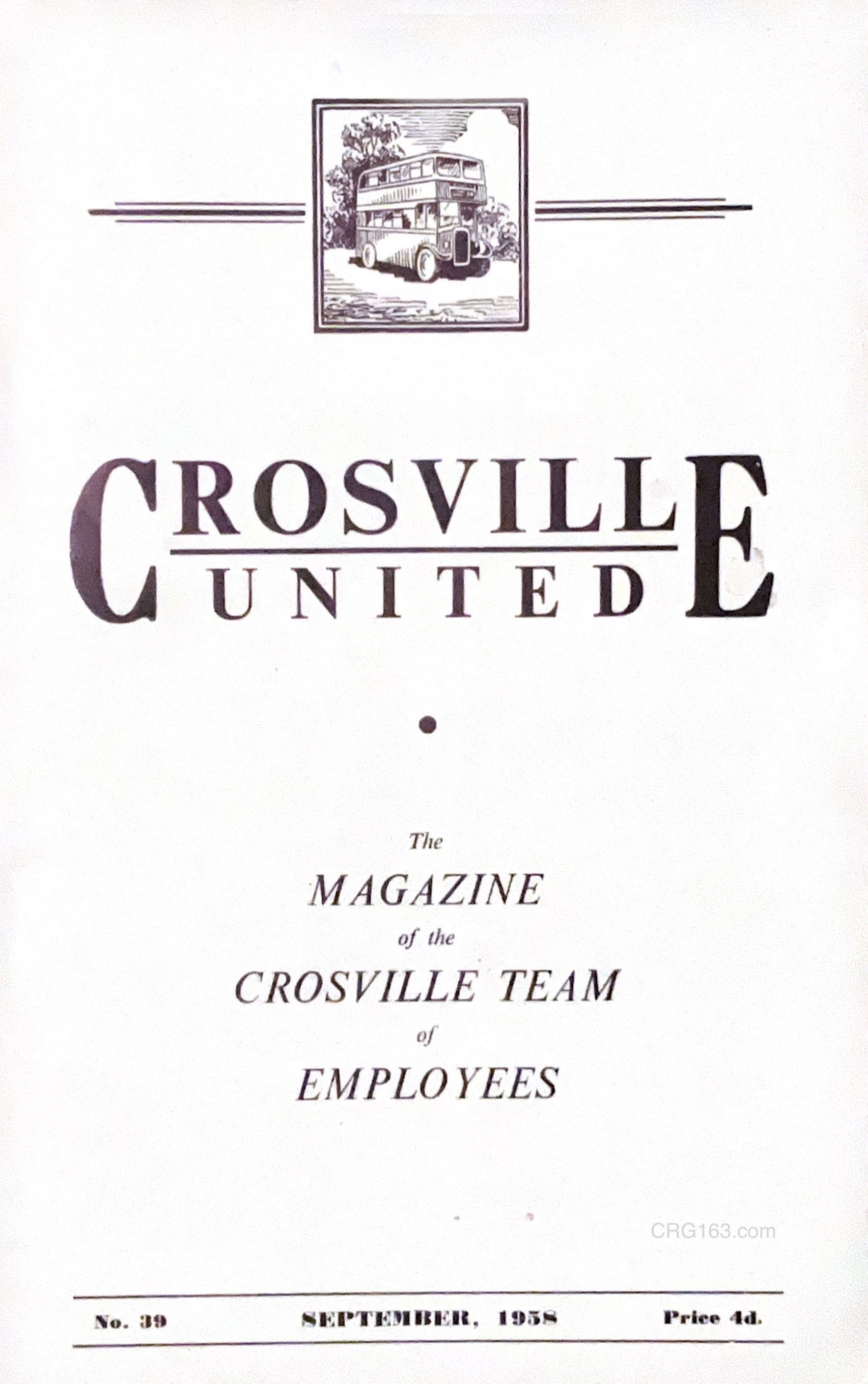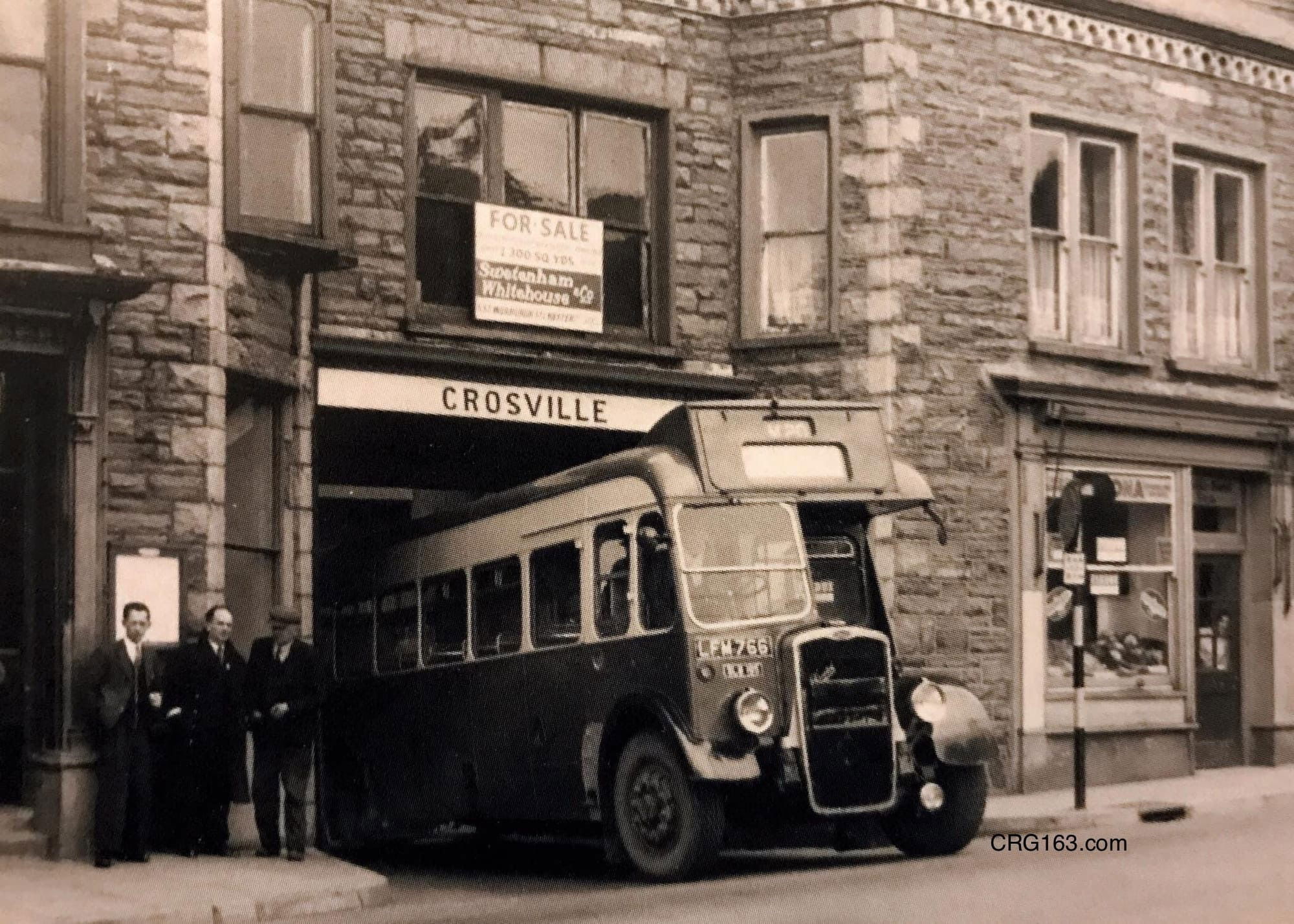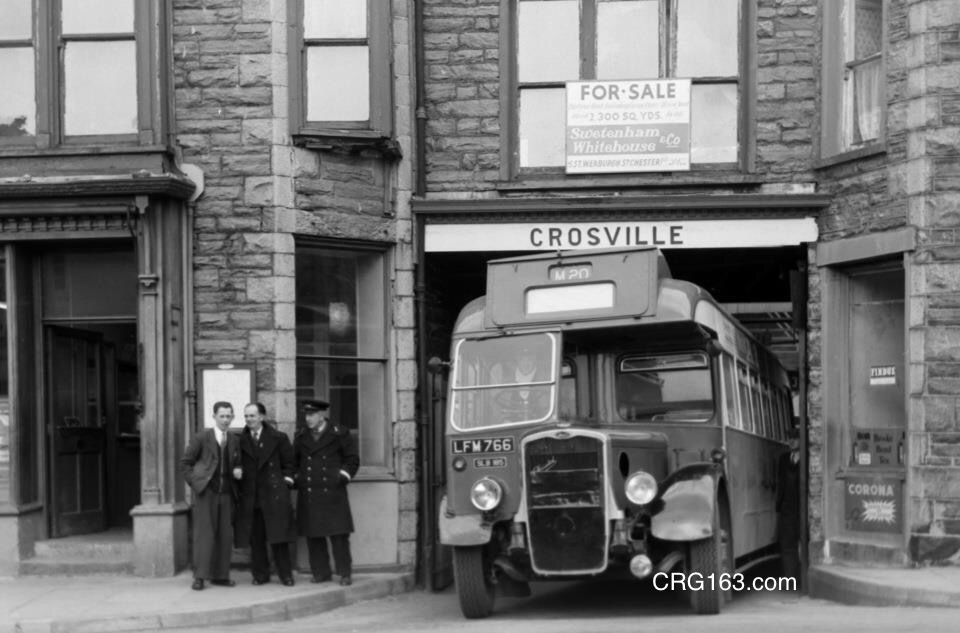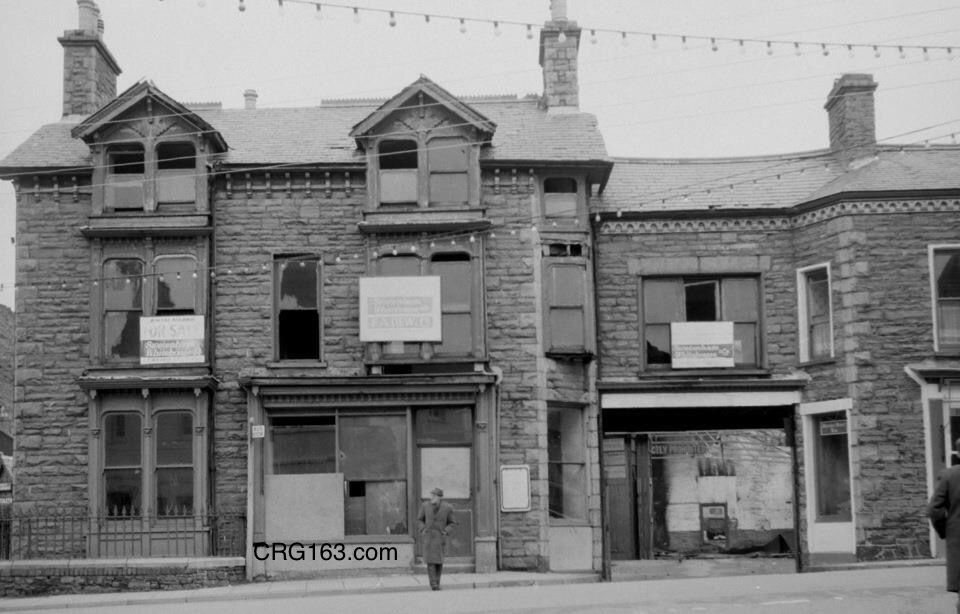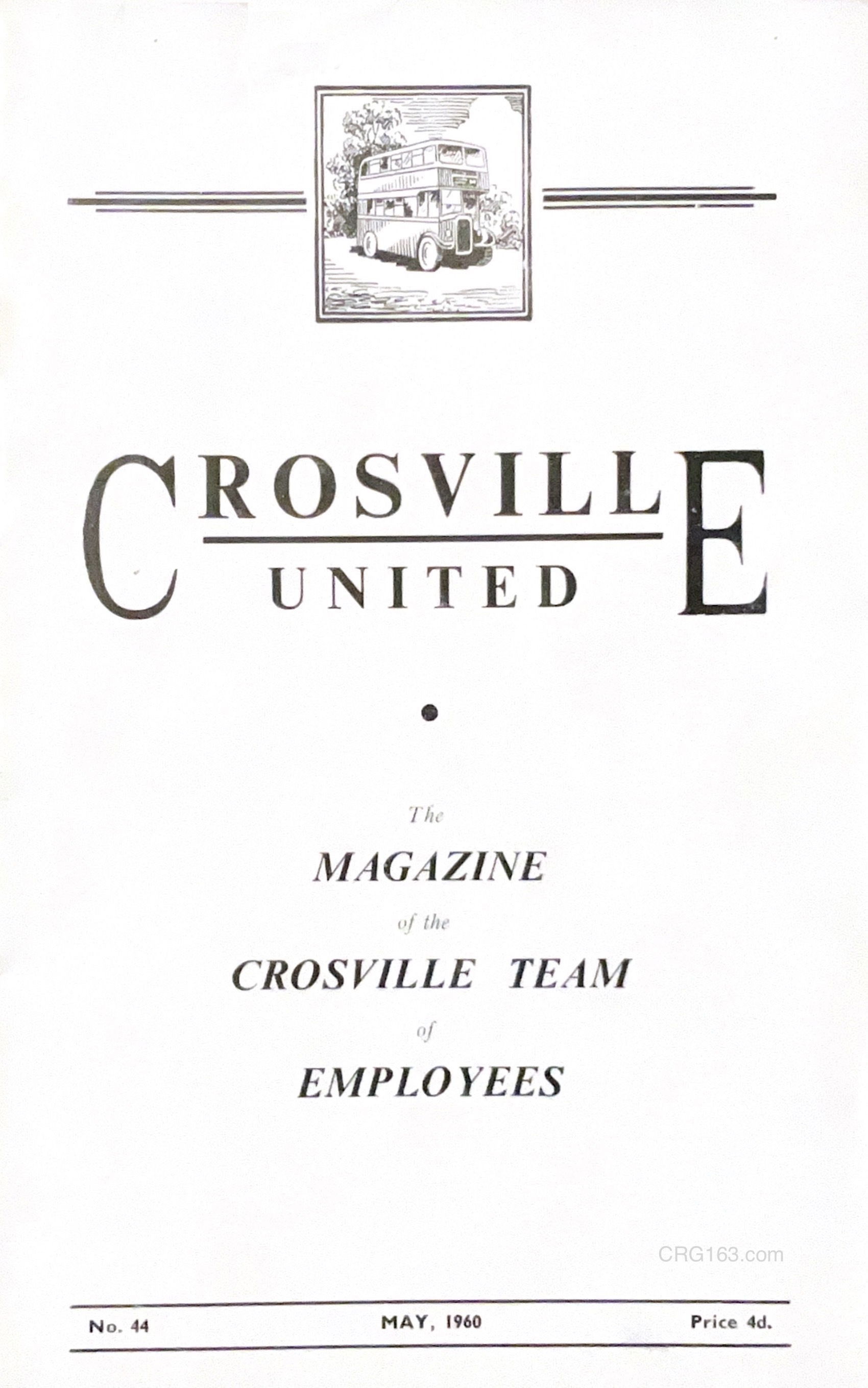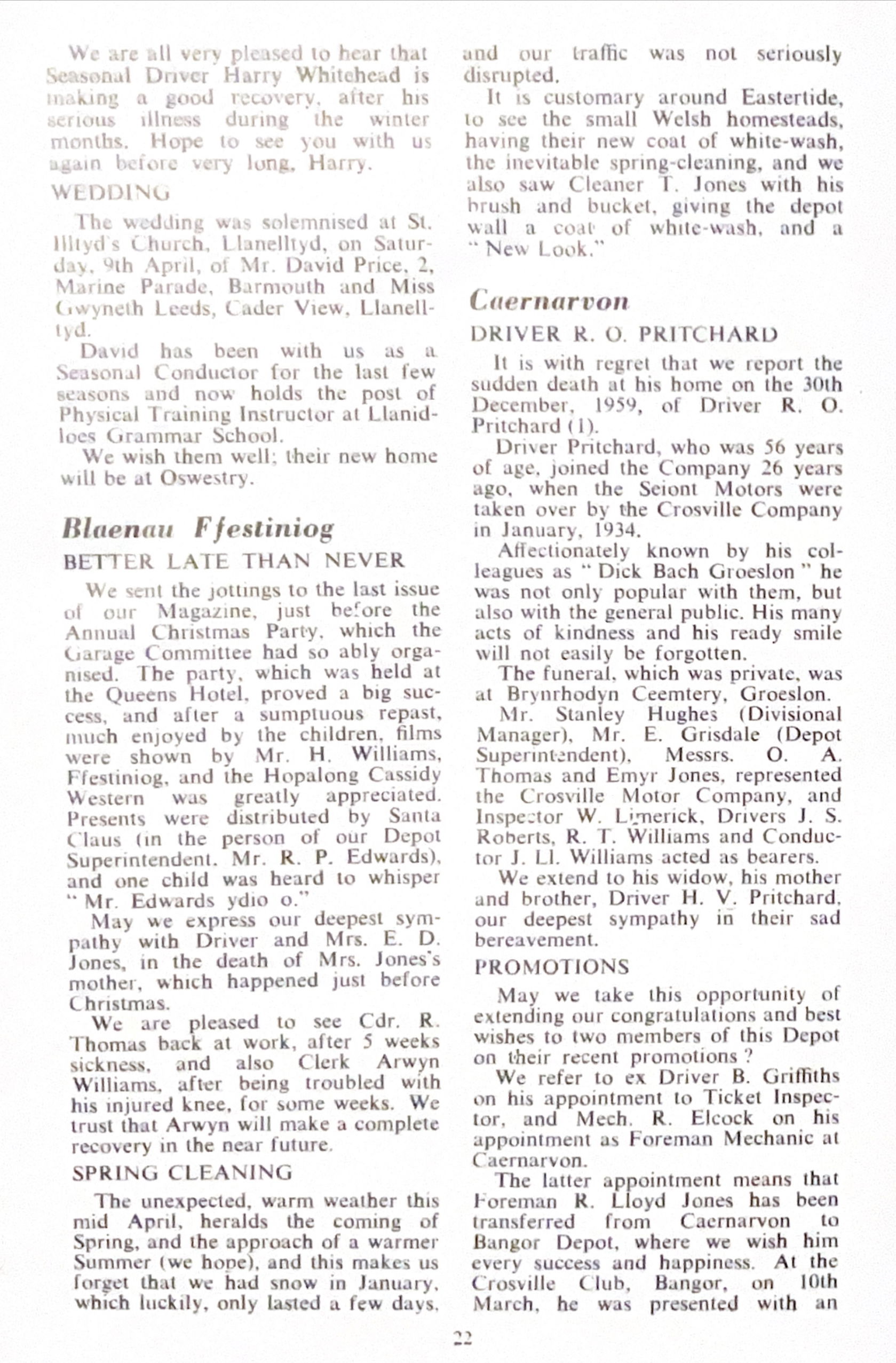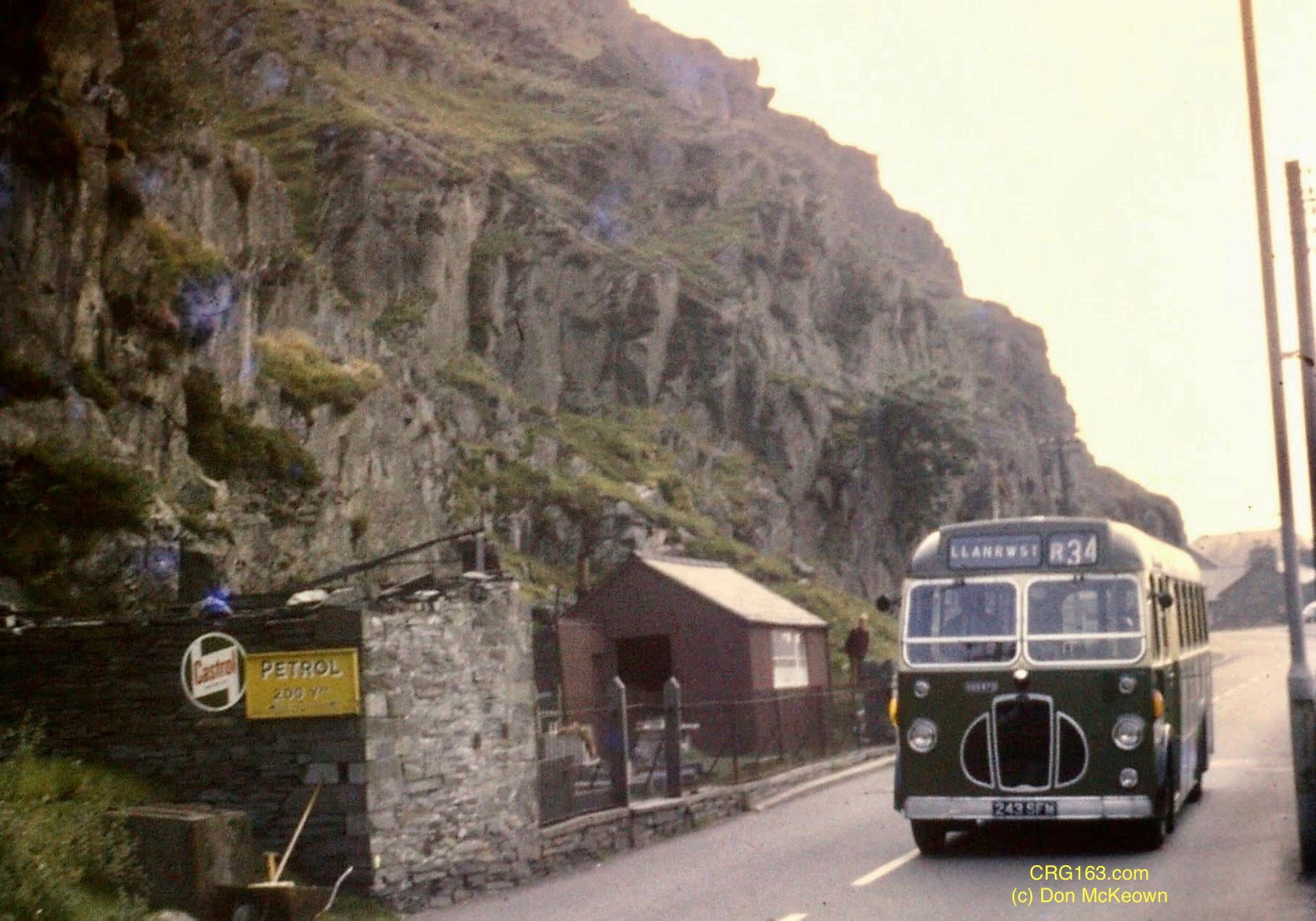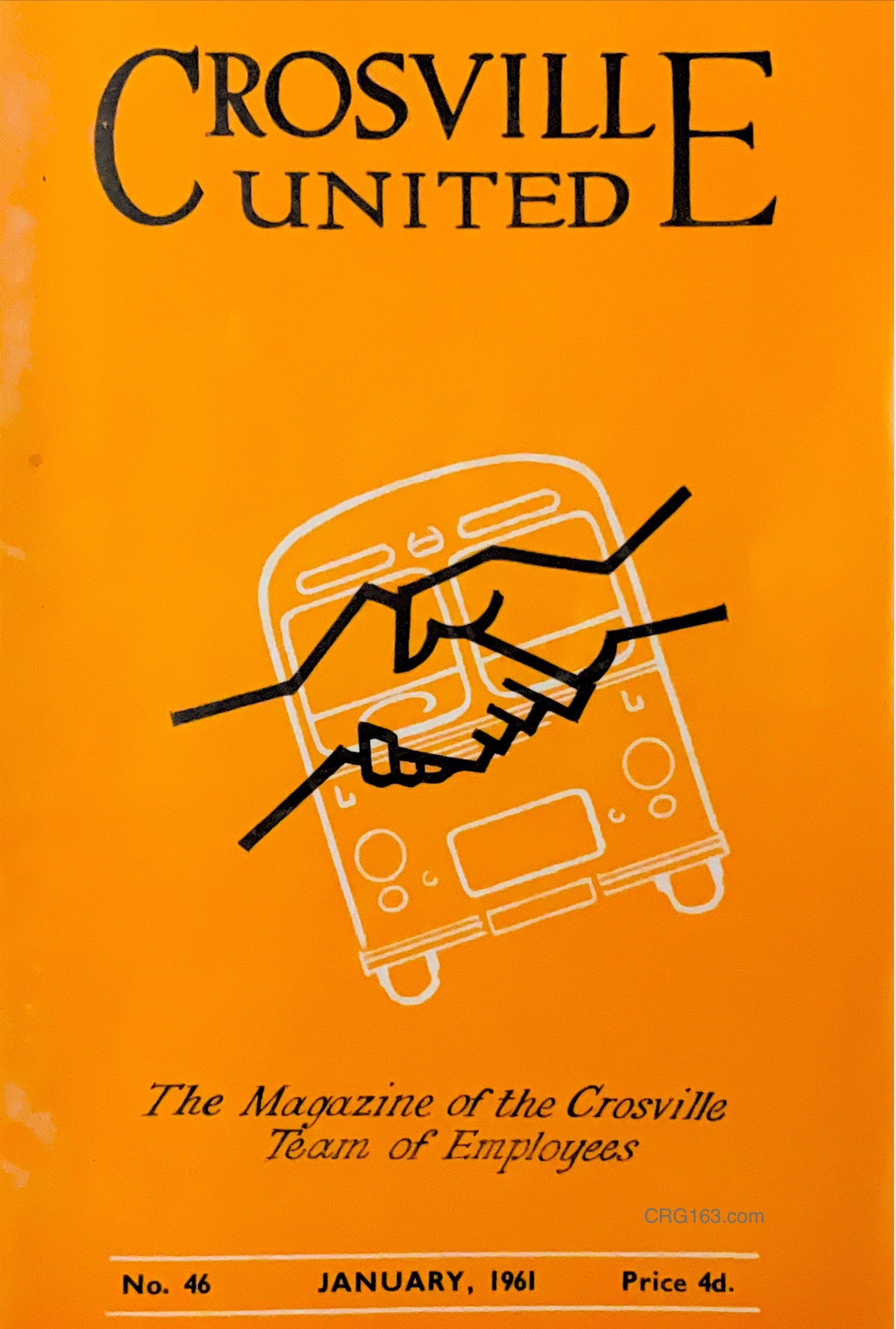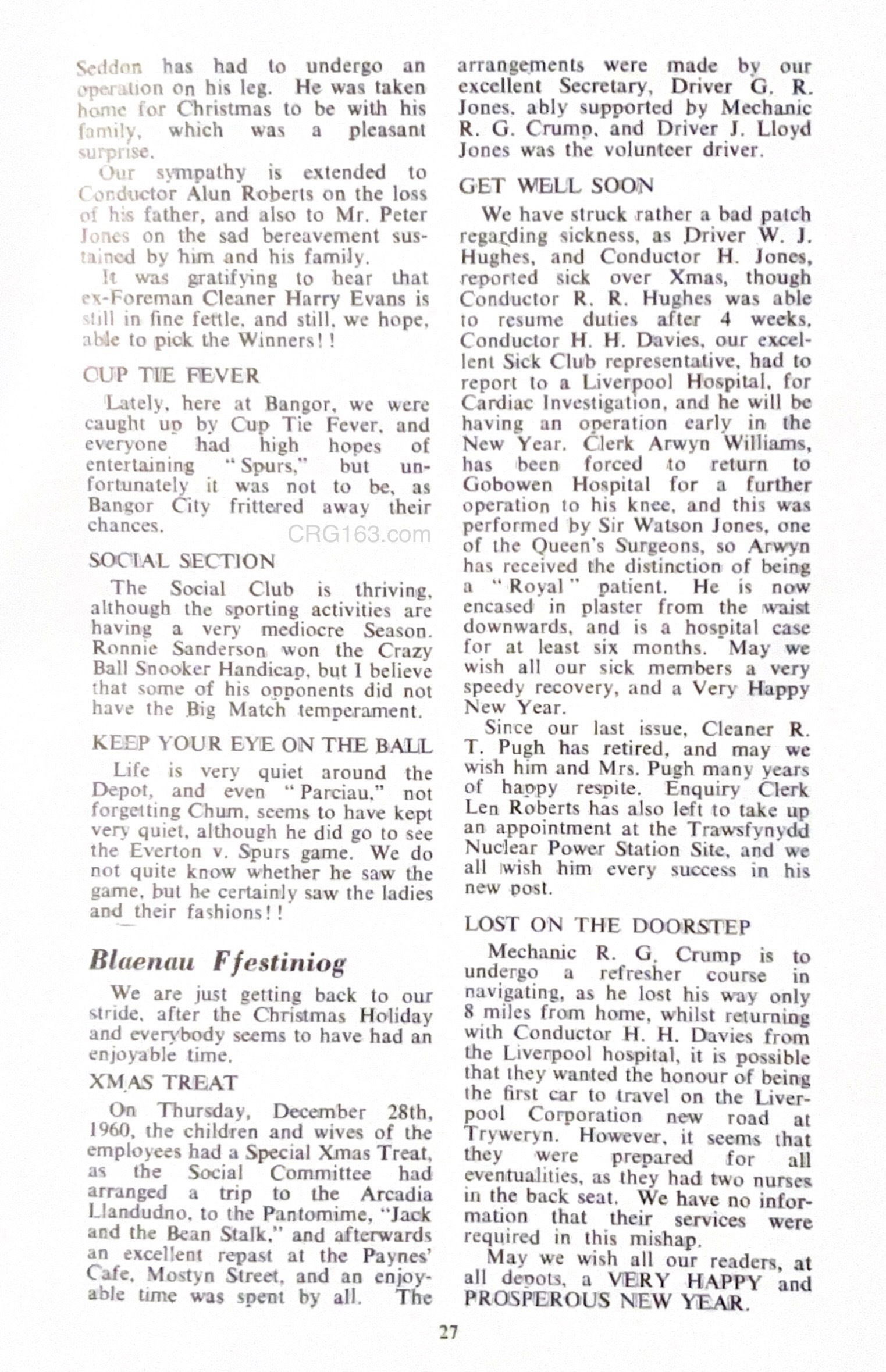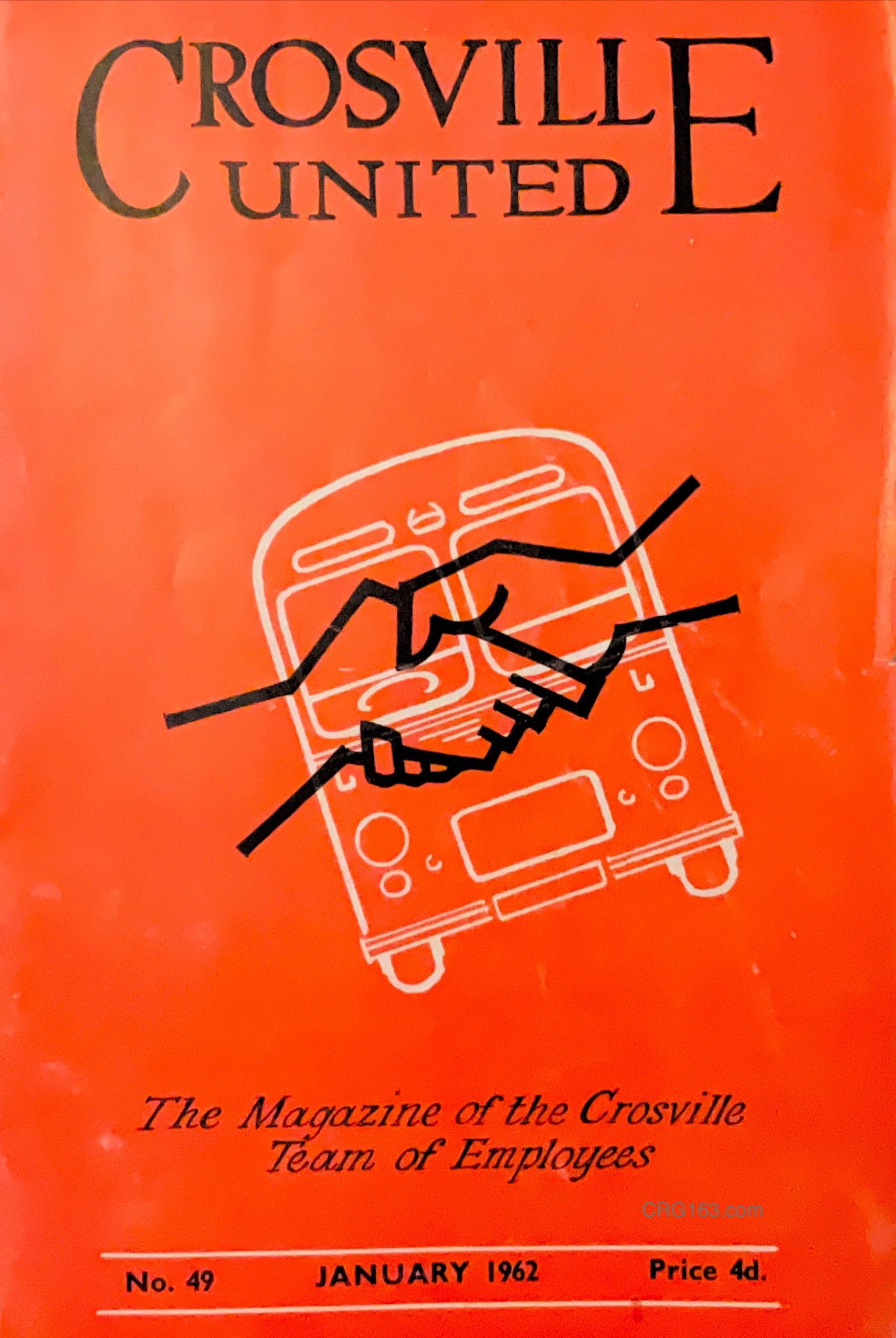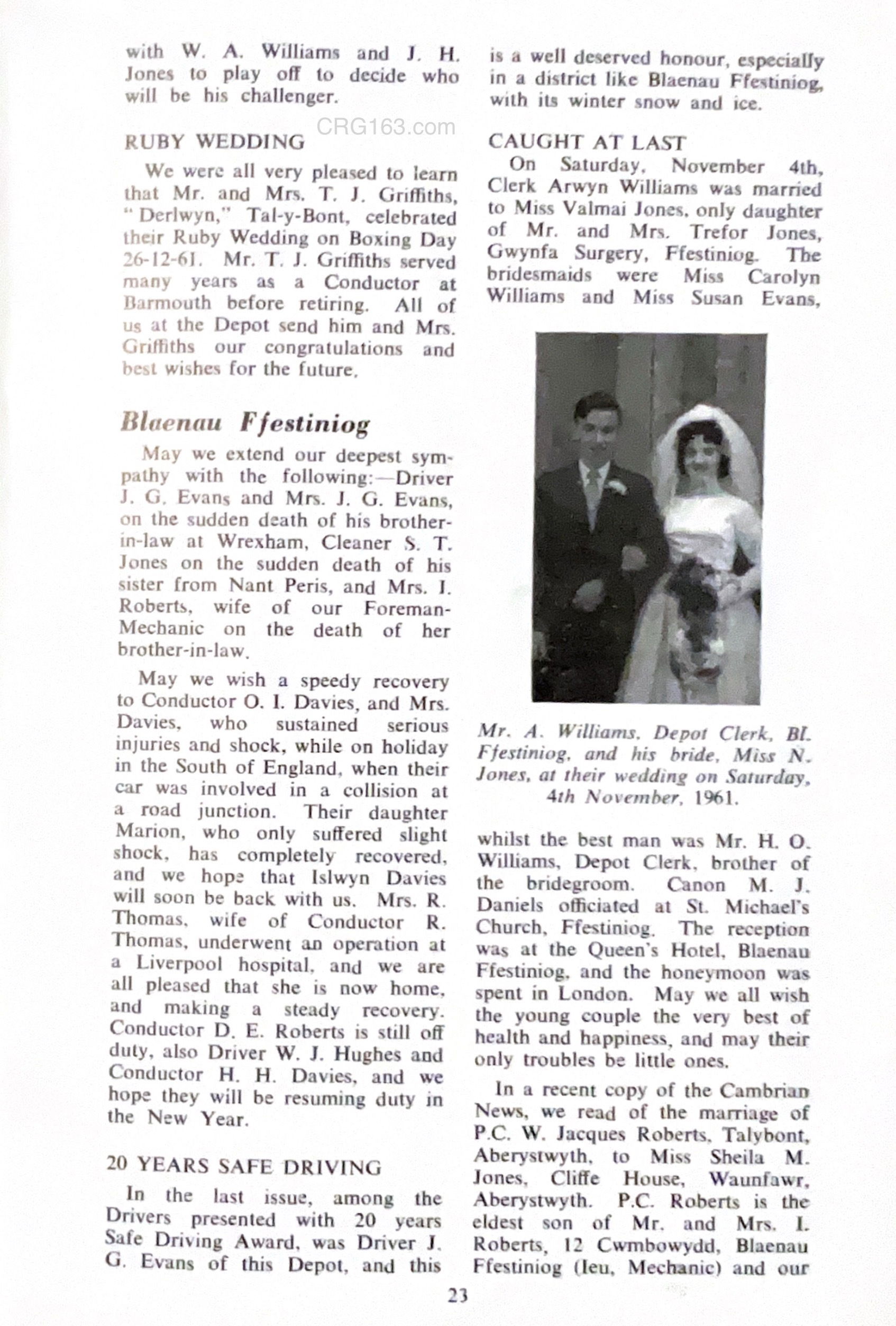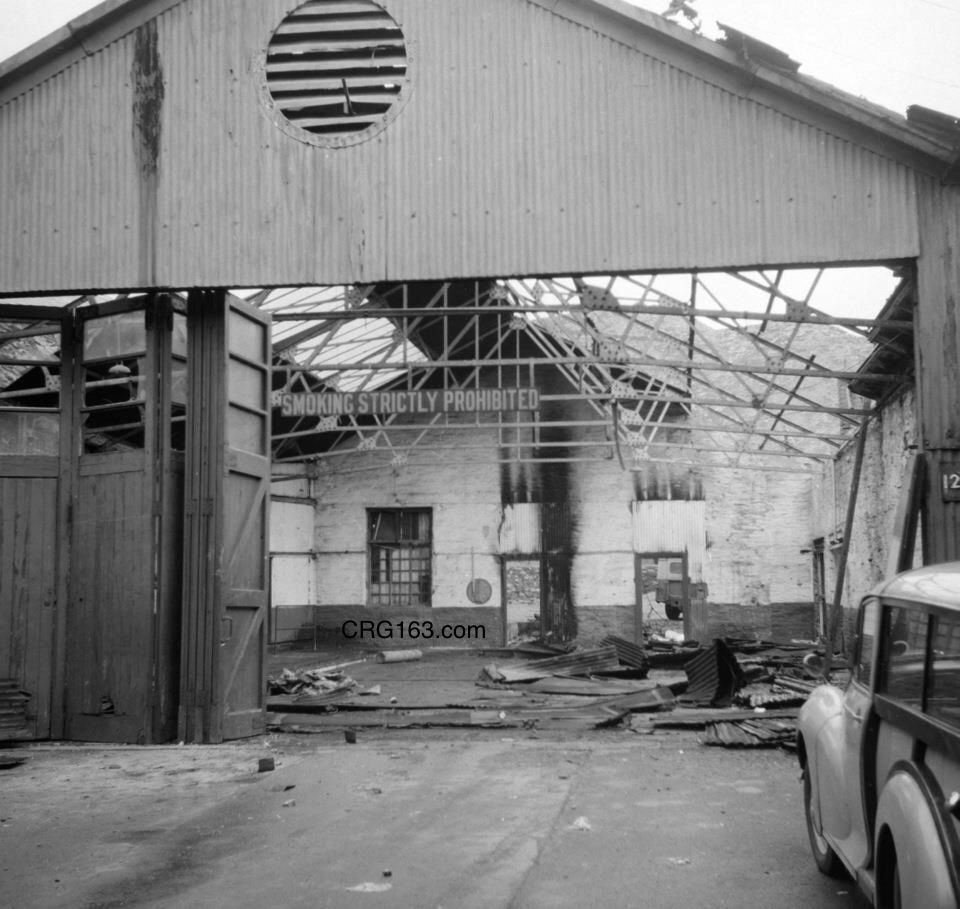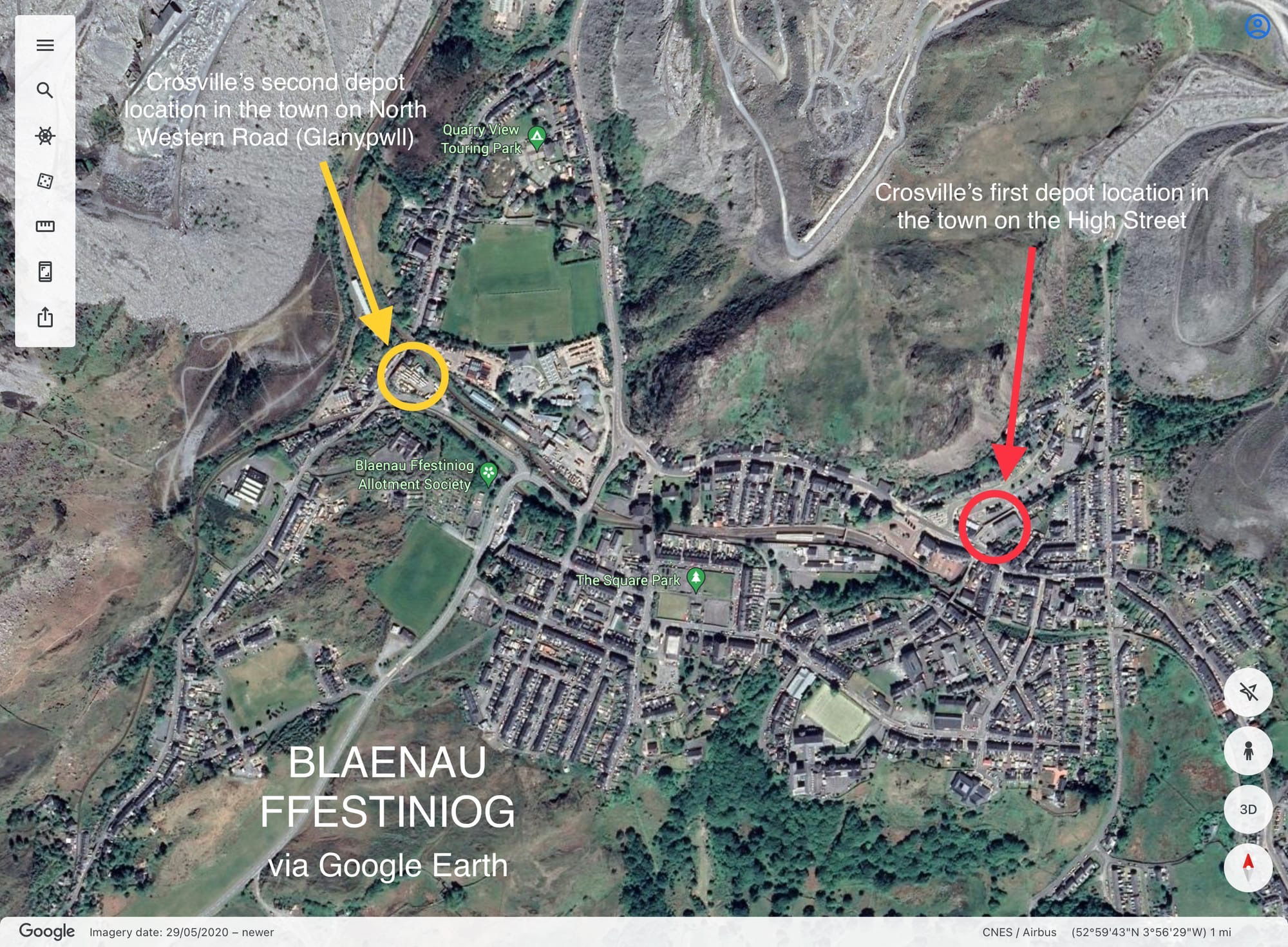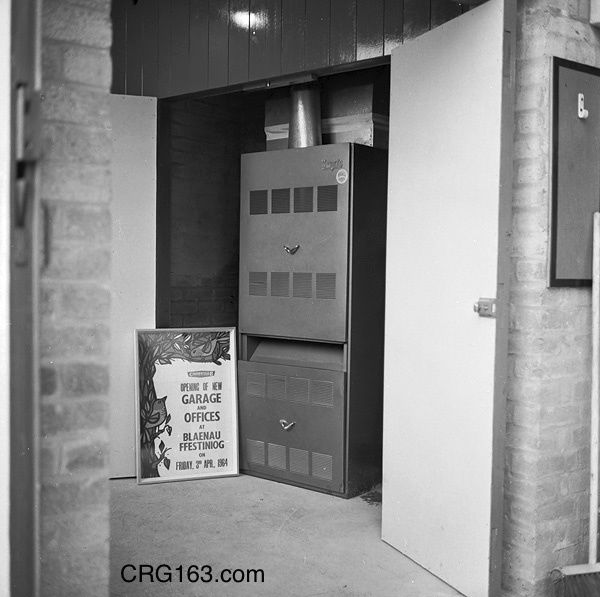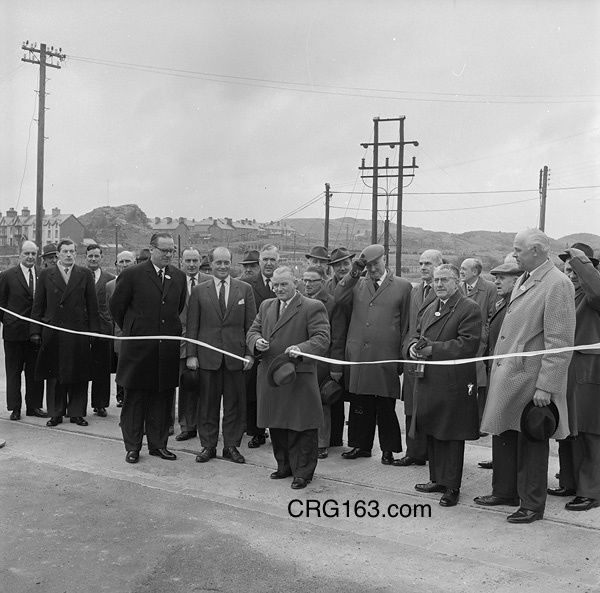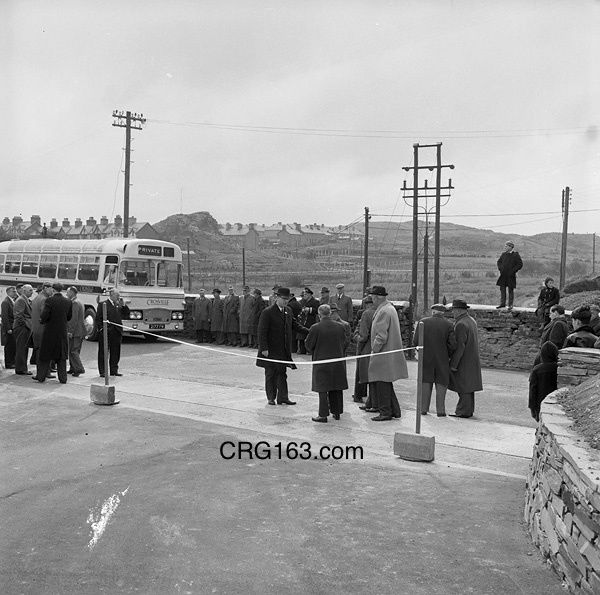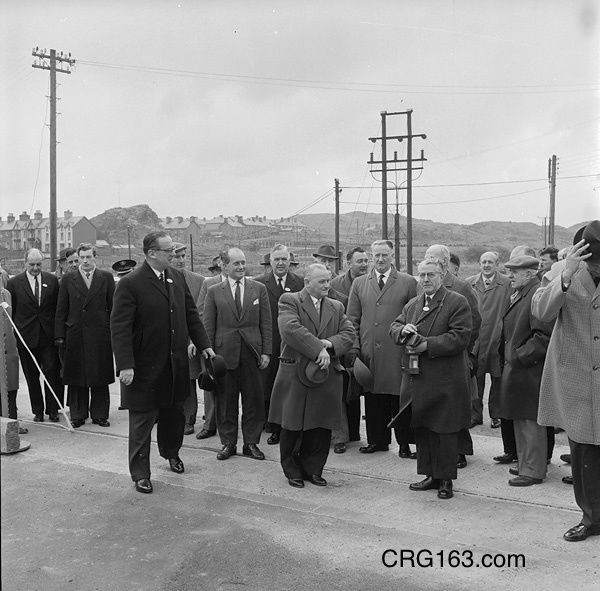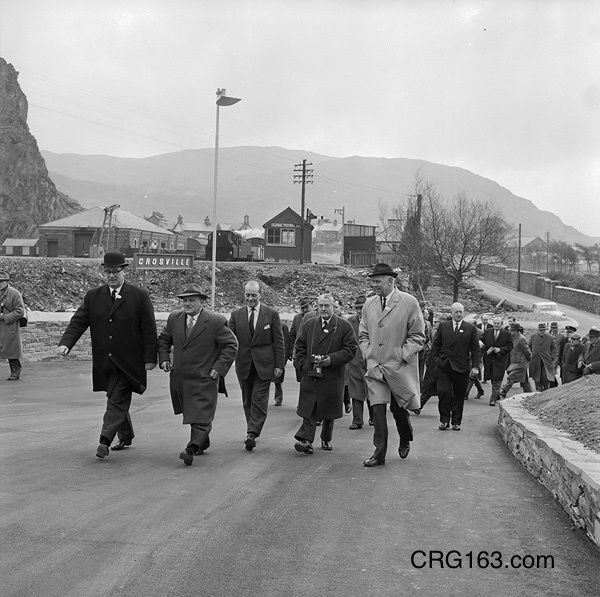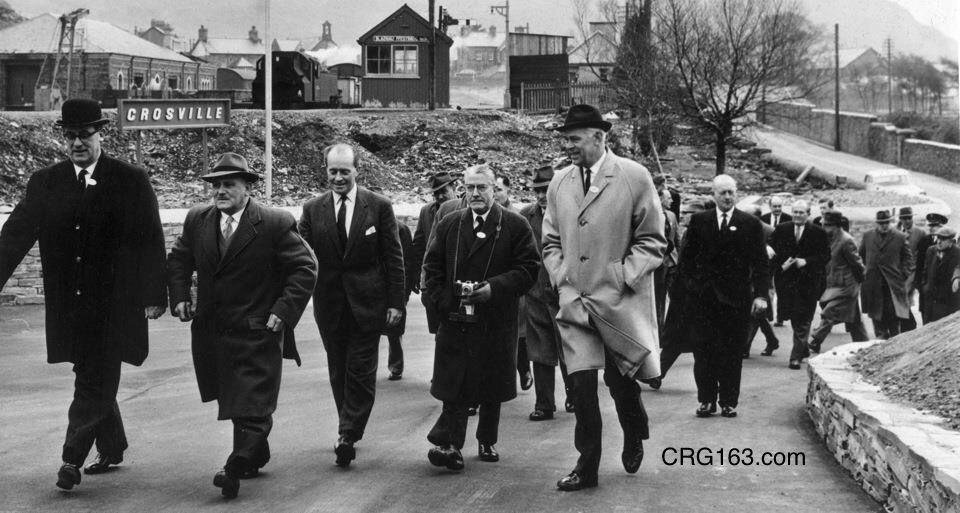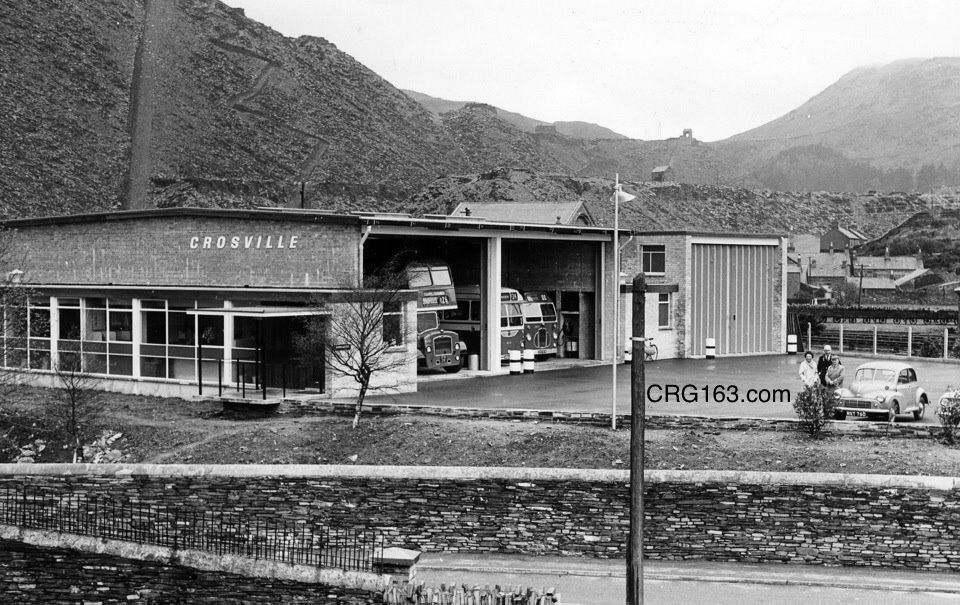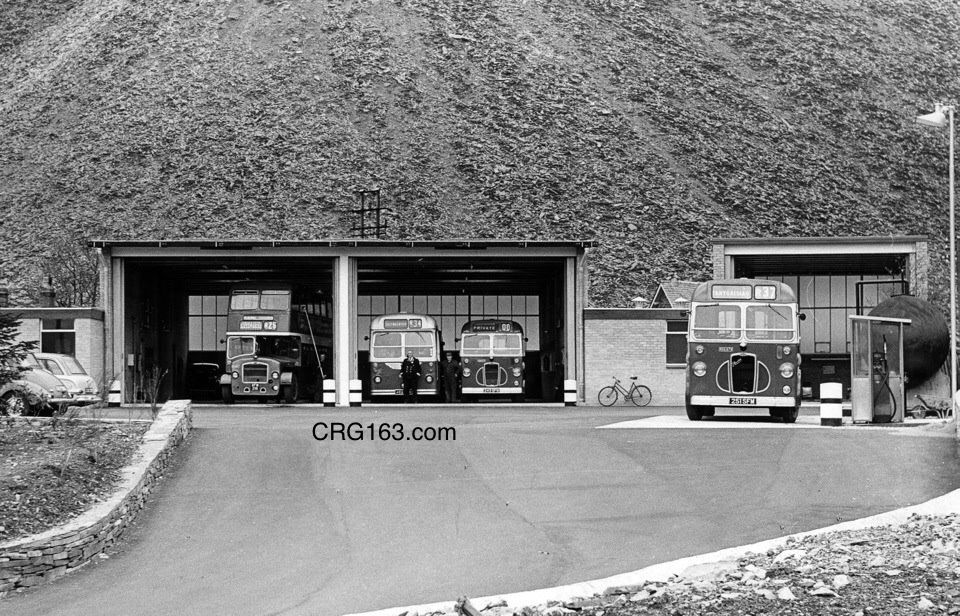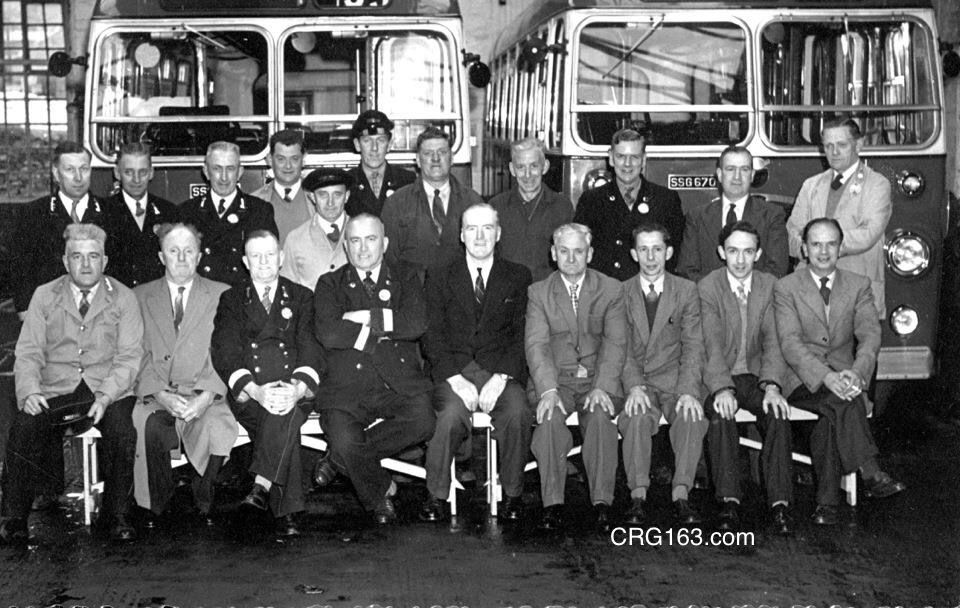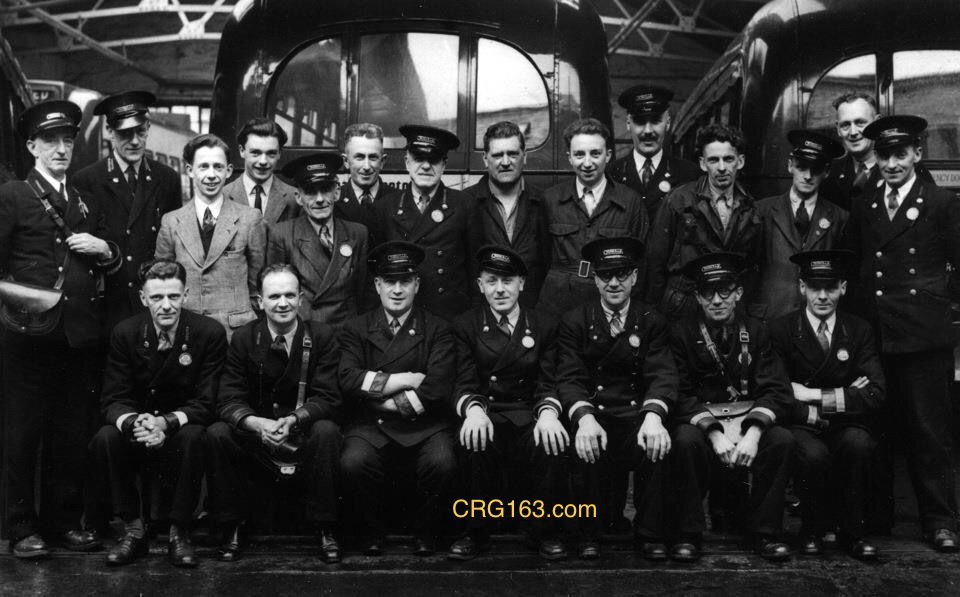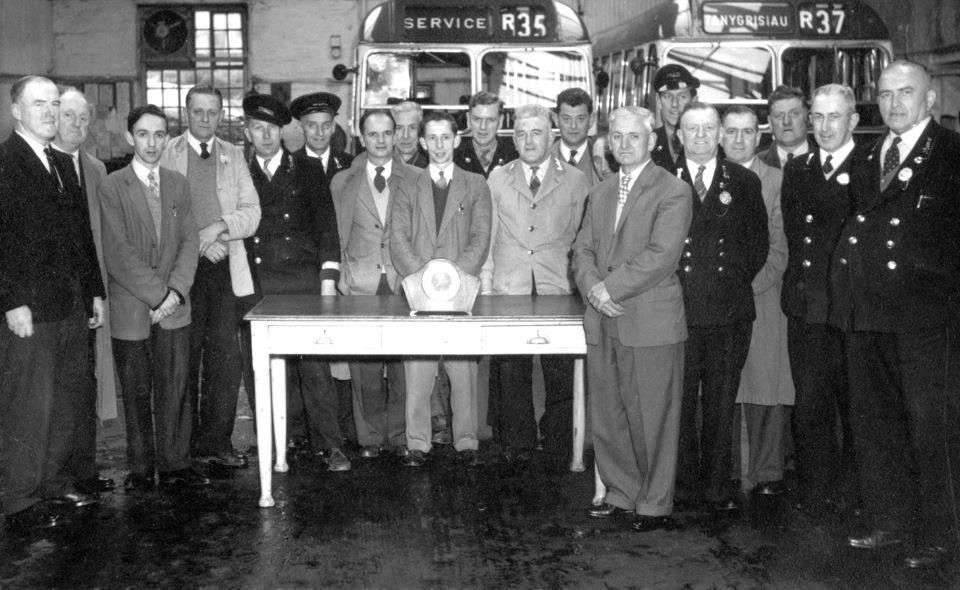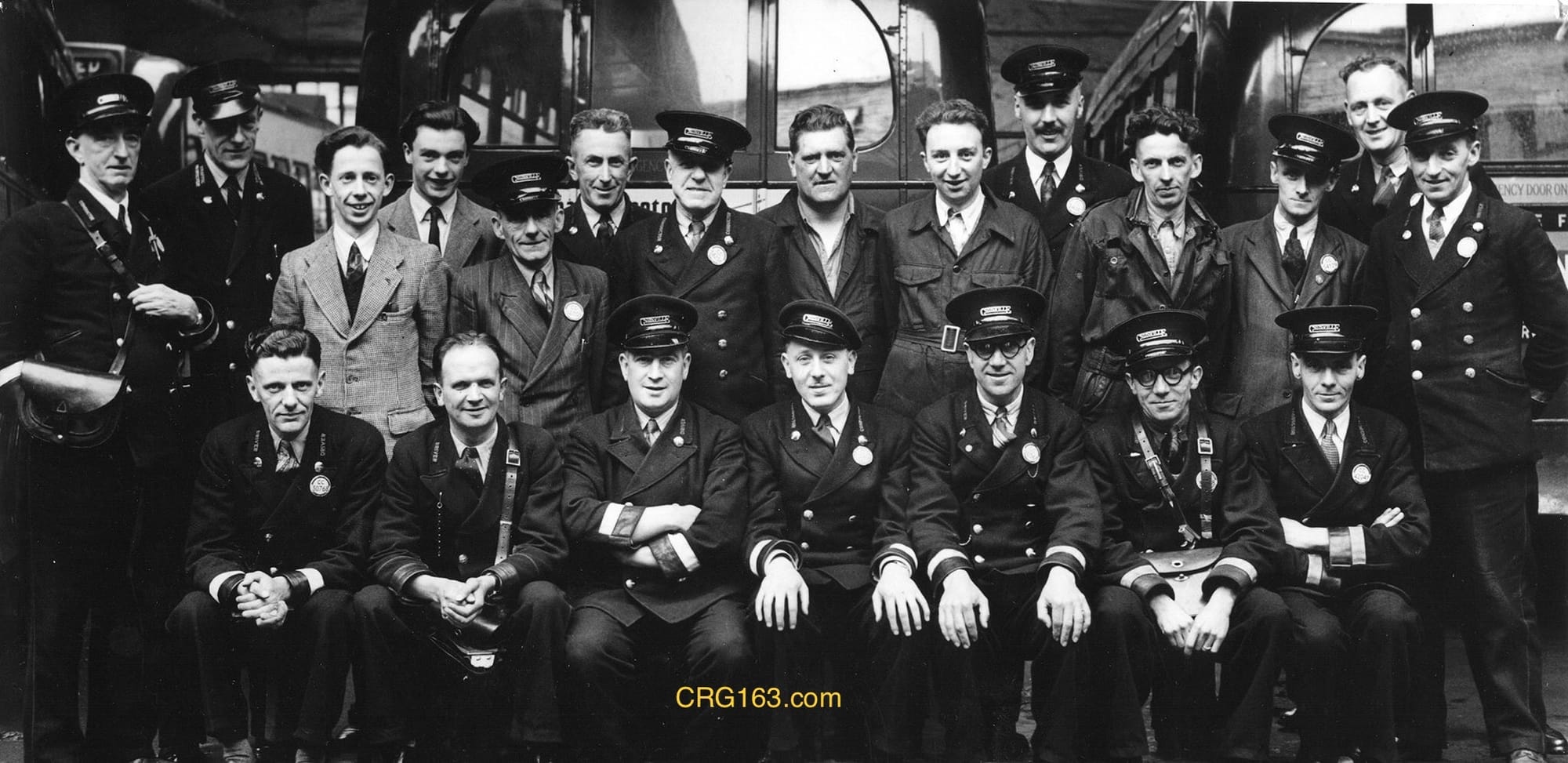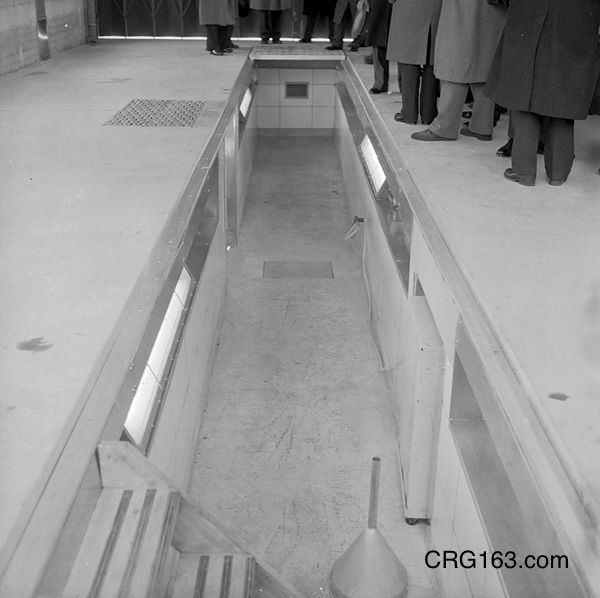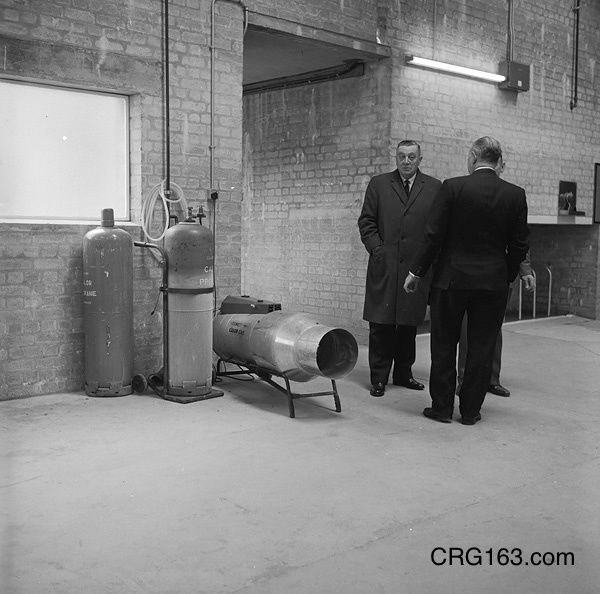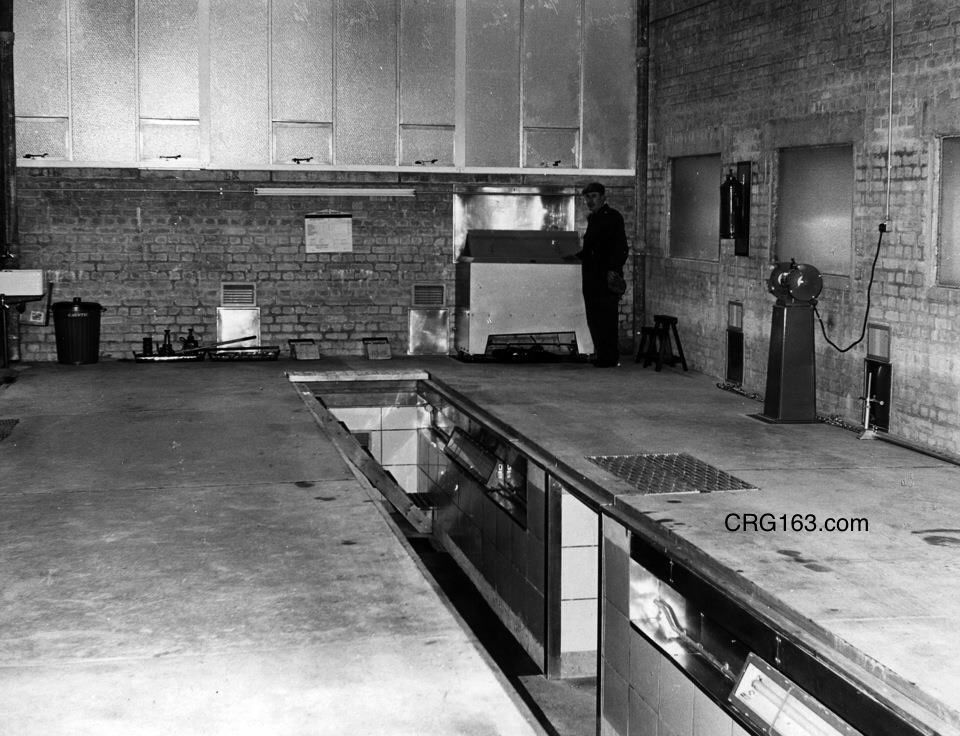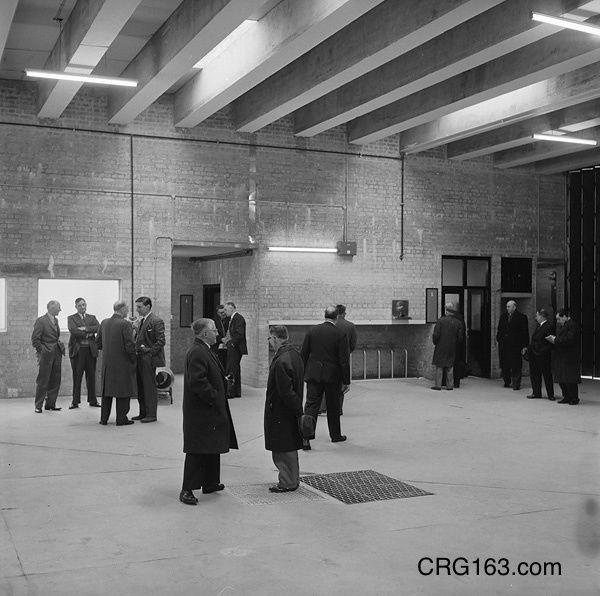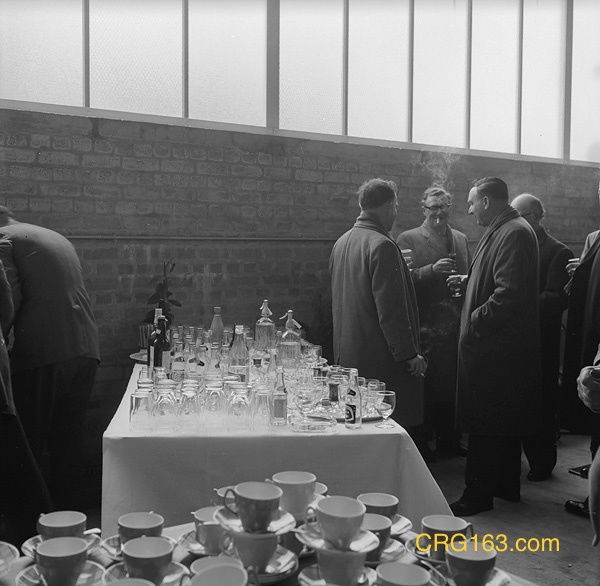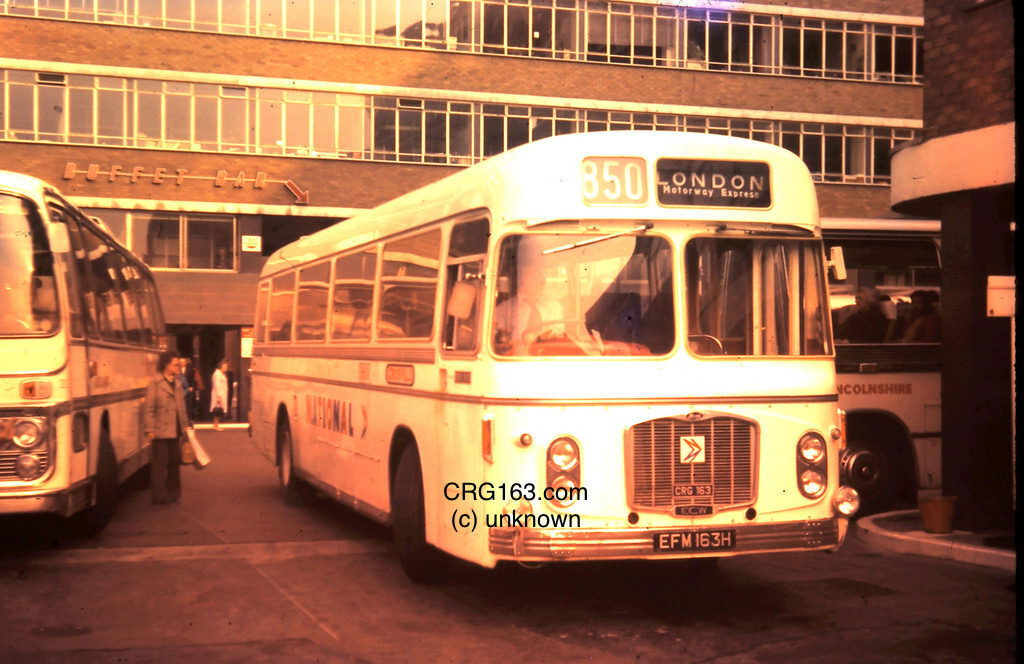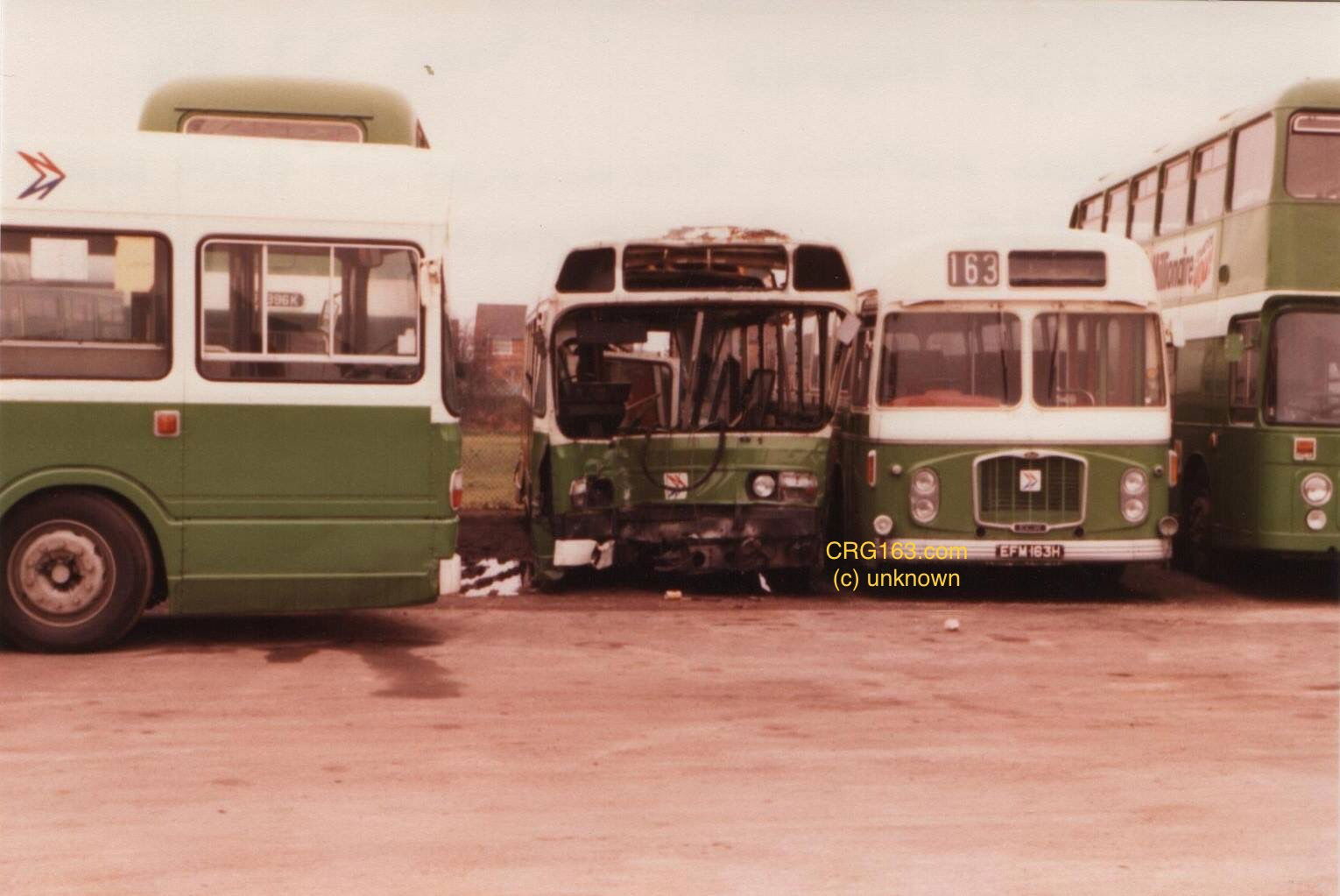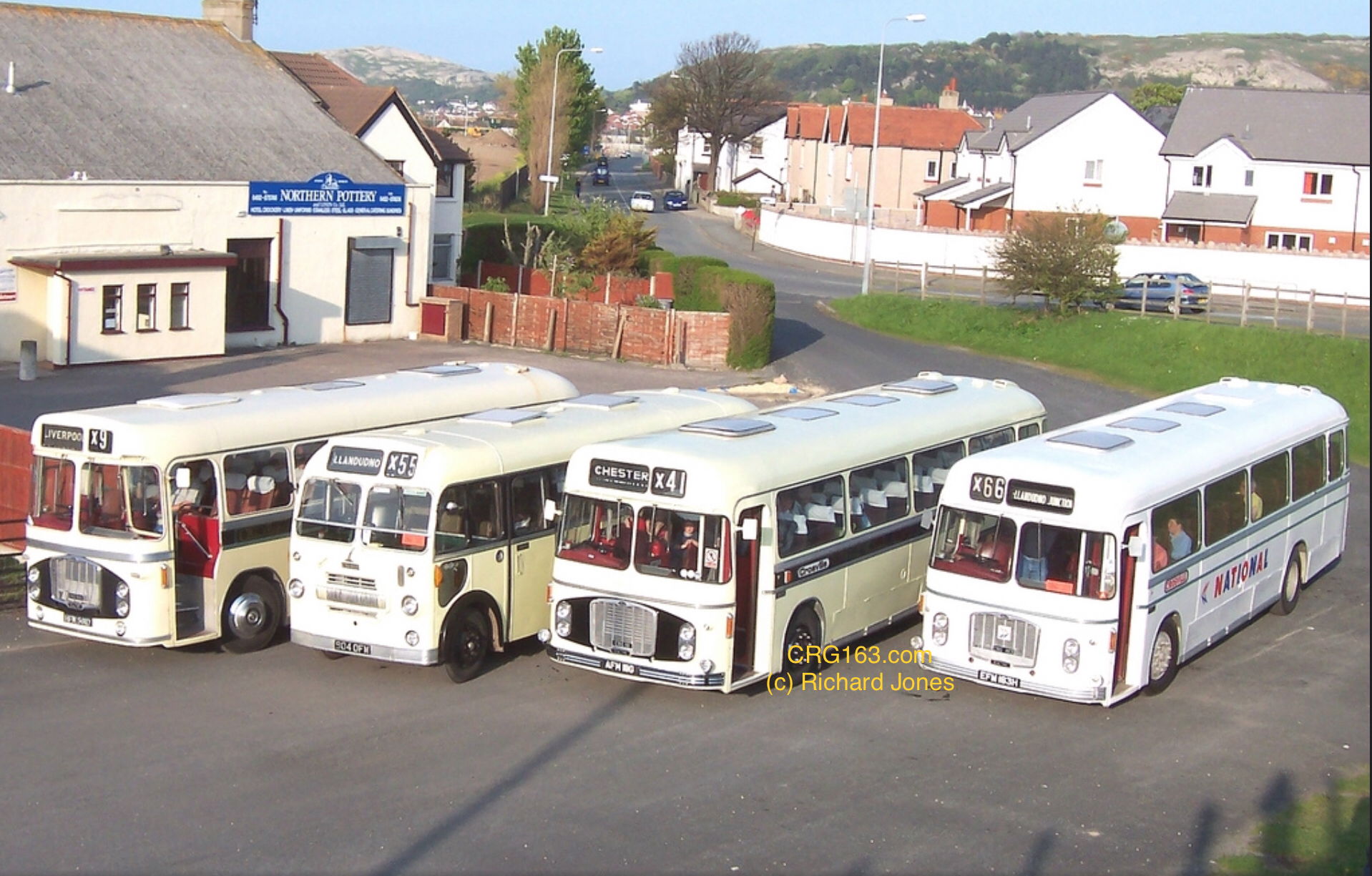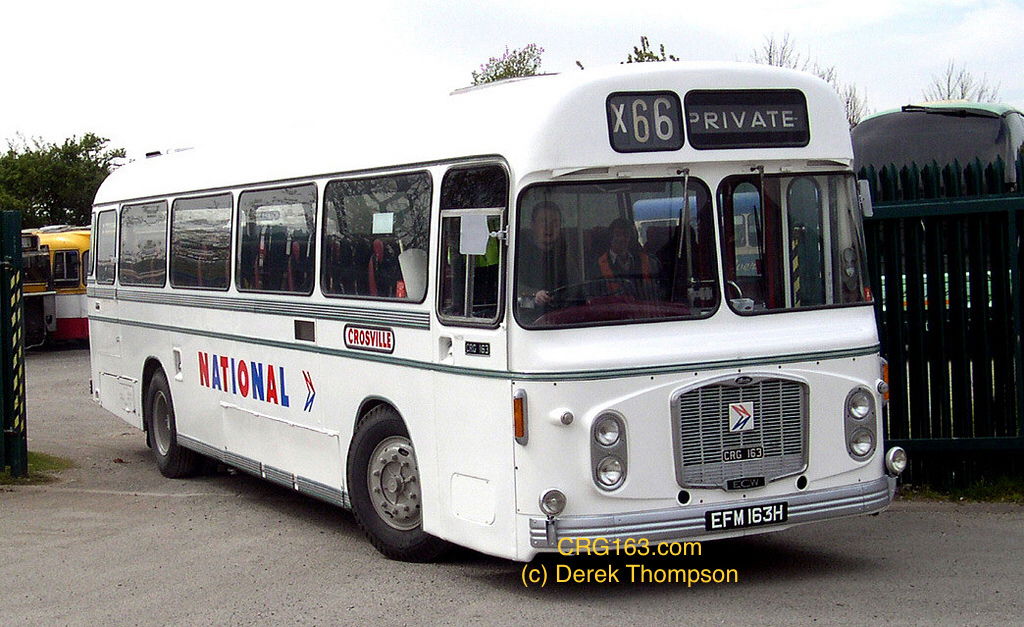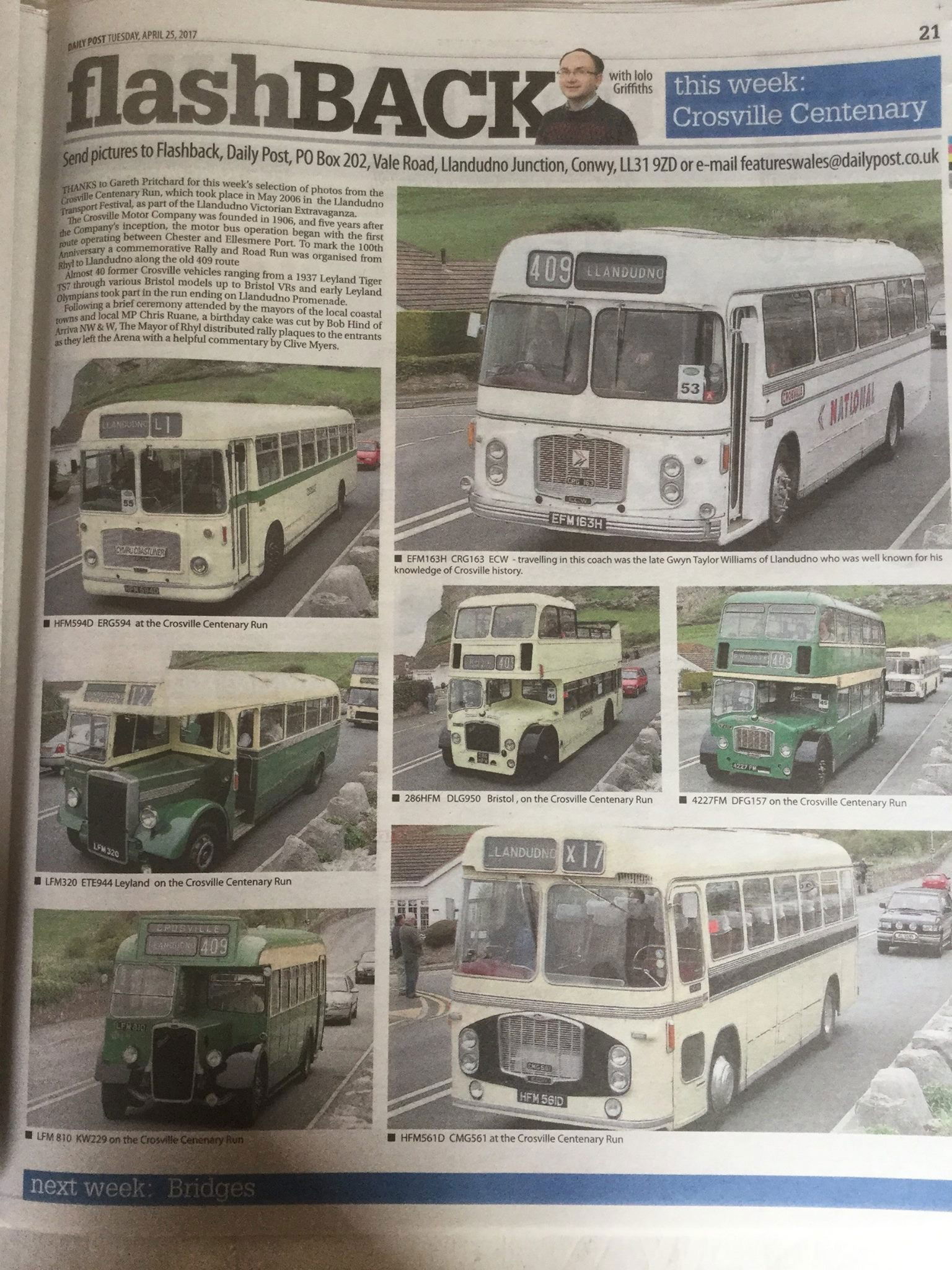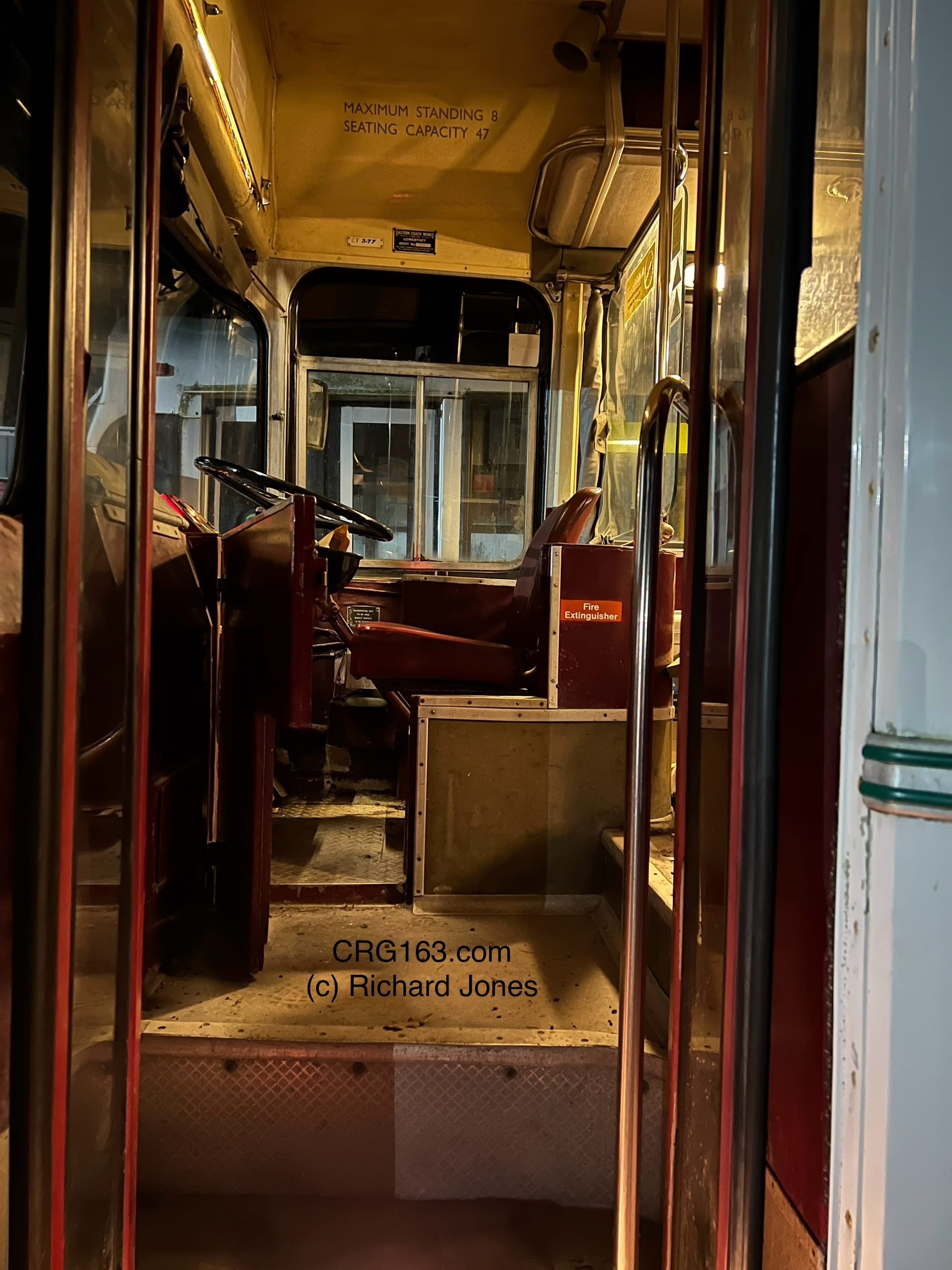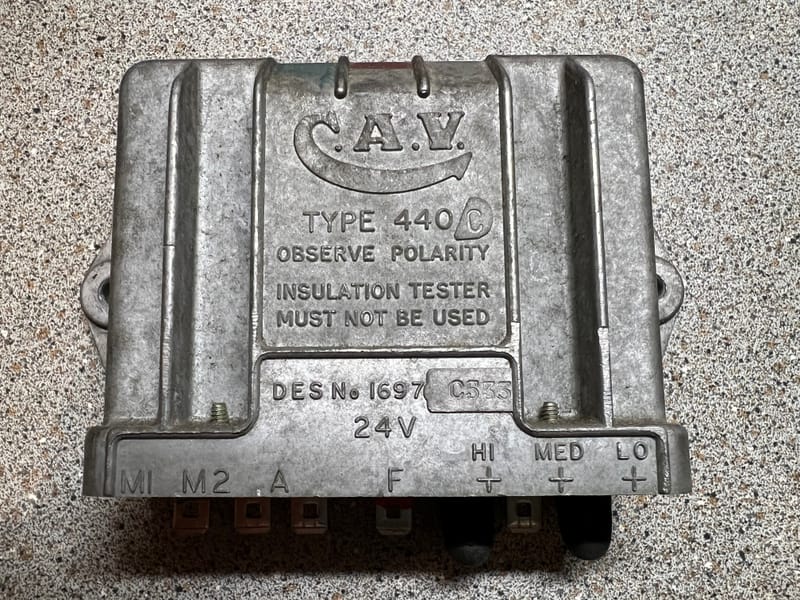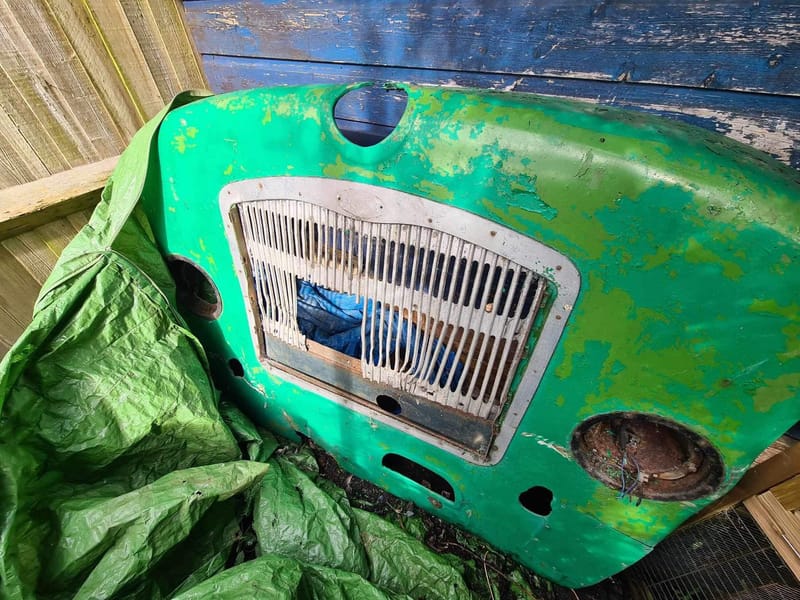Crosville in Liverpool book
About
What is this website about?
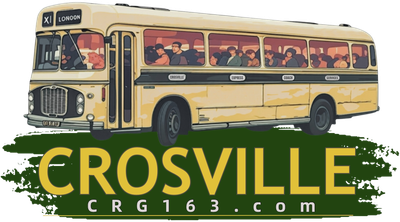
Hop aboard our website, which provided a tribute to the once great Crosville Motor Services and ome of the coaches once owned by the company. CRG163—a Bristol RELH6G coach which represents the golden era of British coach travel. This is more than just a website and is a heartfelt archive chronicling the history and memories of Crosville Motor Services and the and pays homage to the valuable people that worked for the company; the on-going preservation of CRG163, the craftsmanship of Bristol Commercial Vehicles, and the legacy of National Express. Whether you’re a former employee, transport enthusiast, or simply curious about the past, this website blends rare photos, technical insights, and personal stories to keep the wheels of history turning.
CRG163: The Heart of the Journey
At the core of the site is CRG163 (EFM163H), a Bristol RELH6G Series 2 Mark 1 coach, bodied by Eastern Coach Works (ECW) and registered on March 6, 1970, by Crosville Motor Services. As part of a batch of four (EFM160H–EFM164H). From new it was based at the company’s Liverpool Edge Lane depot, debuting on the prestigious Liverpool-to-London routes, resplendent in Crosville’s cream and black livery with illuminated “Crosville Express Coach Services” side panels. In 1971, it adopted a simplified black and cream livery before being repainted in the ‘NATIONAL’ white livery with Norman Wilson’s iconic double N logo in December 1972, it served many long distance routes like the X1, X61 and X71 and many others across the North Wales coast before being downgraded and reclassified as ERG163 for dual-purpose duties in November 1979. Between 1979 and 1984 the coach would be based at the company’s Amlwch depot on the Isle of Anglesey and served every route operated from that depot, including the X10 Anglesey-to-Liverpool run.
Withdrawn in 1984, CRG163 was saved from scrapping by Gordon Bate, who restored its 1971 simplified cream and black livery. It ia true to say that Gordon saved a number of other similar vehicles from being scrapped, passing on to other owners in due course.
In 2002, Richard Lloyd Jones took ownership of CRG163, meticulously returning it to its National white livery by 2004—a restoration celebrated on the cover and article of the ‘Bus & Coach Preservation Magazine’. The coach’s legacy continued on through rally appearances and a 1:76 EFE model released in 2006. This website details this journey, from service to preservation, with photos, sounds of its Gardner engine, and stories of sourcing parts and mechanical overhauls.
In recent years CRG163 has entered its second restoration, but hindered for a time by the Covid-19 pandemic. It has subsequently seen significant investment including the complete rebuilding and re-coring of its radiator. However in early 2025 the vehicle’s original waist illuminated panel apertures from when new in 1971 was found, which unbeknownst to all had laid hidden by double panelling. This significant find has now set the future direction of CRG163 which will involve returning the vehicle to its original appearance when new in 1970.
The restoration continues, so come with us on the journey and follow all developments and matters close to CRG163 through our ‘Latest News’ page on this website.
Crosville Motor Services: A True Icon of Bus and Coach Travel
Founded in 1906 in Chester, Crosville Motor Services grew into a cornerstone of bus and coach travel across northwest England, north and mid Wales. From early routes between Chester and Ellesmere Port to its role in the National Bus Company (NBC) from 1969, Crosville’s cream and black coaches, like CRG163, symbolized reliability and pride. The website’s Timeline page traces key milestones—its embrace of Bristol RE coaches in the 1960s, integration into the NBC, and privatisation in the 1980s—offering a vivid portrait of a company that connected communities with style.
The Bristol RE: Engineering a Legacy
Introduced in 1962, the Bristol RE (Rear-Engined) revolutionised coach travel with its robust chassis and Gardner 6HLX engine. CRG163, a RELH variant, was built for long-distance comfort, featuring a high-floor layout and sleek ECW bodywork. The site celebrates its engineering significance as one of Bristol Commercial Vehicles’ most successful designs (1962–1982), with articles exploring its construction and enduring appeal among preservationists.
The National Express Story and the Distinctive Double N Logo
In 1969, the National Bus Company (NBC) unified Britain’s bus operators, and designer Norman Wilson’s bold double N logo became the centre piece within the overall branding approach, launched in 1972. CRG163 became a part of this, sporting the all-white NATIONAL livery and serving routes like the 850 and 853, inspired by America’s Greyhound coaches. The site marks National Express’s 50th anniversary in 2022, connecting CRG163’s story to this transformative era. Special permission from National Express in 2003 allowed the double N logo to be applied and used on CRG163 on completion of its restoration, adding authenticity to its preservation.
Crosville Memories: Memories That Bring History to Life
The “Crosville Memories” section is the soul of this website, capturing the experiences of drivers, staff, and enthusiasts alike. We remember Jack Cowap, who drove CRG163 on the Liverpool-to-London run when the vehicle was new and Bob “Moelfre” Roberts, who drove it when based in Anglesey. David Wilder recalls the “magical” glow of the elegant cream and black CRG coaches at dusk. Mike Lambden reflects on managing NBC express services, while Graham Warren poignantly remembers as a child travelling with his dear Dad, George Warren at the wheel of CRG163, one of the ‘legends’ of Edge Lane depot.
Paired with rare photos from dedicated pages remembering Amlwch and Blaenau Ffestiniog depots and staff, plus leaflets and timetables for routes such ad the X1, X10, and X61, these stories evoke Crosville’s professionalism and pride.
This website includes many features:
- CRG163 Service History: Trace CRG163’s career through Crosville’s routes across Cheshire, Merseyside, and Wales supported by many photographs and scans from the Crosville United magazine.
- CRG163 In Preservation: Learn about CRG163’s subsequent life in preservation from 1984 onwards
- Crosville-CRG163 Timeline: A standout interactive chronicle blending CRG163’s milestones (1970 debut, 1972 livery change, 1984 preservation, 2004 restoration) with Crosville’s evolution.
- The CRG’s of 1970: Delve into the history of the final batch of CRG’s that came to Crosville as well as further information about the CRG class in general.
- Crosville Fleet Numbering: Learn about various fleet recognition systems applied by Crosville over its operational existence.
- Pictorial depot tributes: Two separate web pages providing a pictorial tribute to Crosville’s Amlwch and Blaenau Ffestiniog depots and staff.
- Leaflets & Timetables: Browse 1960s–1970s leaflets showcasing Crosville’s network.
- Sounds of CRG163: Hear the coach’s magnificent Gardner engine, from idling to acceleration.
- Photo Gallery: Enjoy historical images, from CRG163 at Victoria Coach Station in 1973 to its rally appearances post-restoration in 2004.
- Care and respect: Care and respect has been taken to put this website together in memory of so many people who worked for or had a connection to Crosville Motor Services and/or CRG163.
New Book: Crosville in Liverpool – July 2025
A new book titled ‘Crosville in Liverpool‘, will be published and available from 15 July 2025 - this year. It details the proud history of Crosville Motor Services in the city of Liverpool from 1922 and its operations at the iconic Edge Lane depot, CRG163’s home when new. It charts the sad withdrawal of the company from Liverpool in early 1987, the loss of 270 jobs and the impact this had on real people and families, caused by regulatory changes in the way bus services would be provided across the UK outside London from the mid 1980’s.
Unlike previous books written about Crosville Motor Services that has mainly concentrated on bus routes and vehicles, this places real people front and centre of the story, written with utmost care and respect. The story is supported by rare photographs, personal recollections of staff as well as operational details.
The book can be pre-ordered by clicking HERE. For further details about the book please click HERE.
Why visit this website?
This website provides the legacy of CRG163, Crosville Motor Services, and the history of National Express. From the roar of the Gardner engine to Norman Wilson’s NBC double N logo, this is your ticket to a bygone age of travel. Browse the Timeline, savour old photographs, and pre-order the upcoming book today!
Engage further by sharing your photos, history, or parts via email, or subscribe for updates to stay connected.
Accessing the website
Not only can you access this website via the www.crg163.com web address but you can also access it via the following web domain addresses:
You can also access the specific Crosville in Liverpool page directly via www.crosvilleinliverpool.com.
You can also access the website by scanning the following QR code on your smart phone, tablet or ipad.
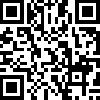
Crosville in Liverpool book
A new book on the history of Crosville in Liverpool. Available from 15 July 2025 but available to pre-order today.
Unlike previous books written about Crosville Motor Services that has mainly concentrated on bus routes, vehicles and depots, this places real people front and centre of the story, written with utmost care and respect. The story is supported by rare photographs, personal recollections of staff as well as operational details.
Book details (from the publishers website)
This is an illustrated history of the Crosville bus company in Liverpool. The company started bus operations in the years leading up to the First World War and by the late 1920s was a leading operator across the Wirral and into Lancashire, Cheshire and North Wales. It started operations in Liverpool in 1922 and its buses were an everyday sight in Merseyside until its Liverpool depot closed in early 1987 following deregulation of the bus industry in October 1986. In this book author Richard Lloyd Jones covers the history of over sixty years of Crosville in Liverpool as well as the story of its demise, drawing on photographs from the time of the company, its depot and vehicles as well as personal accounts from actual staff, both management and unions and their families.
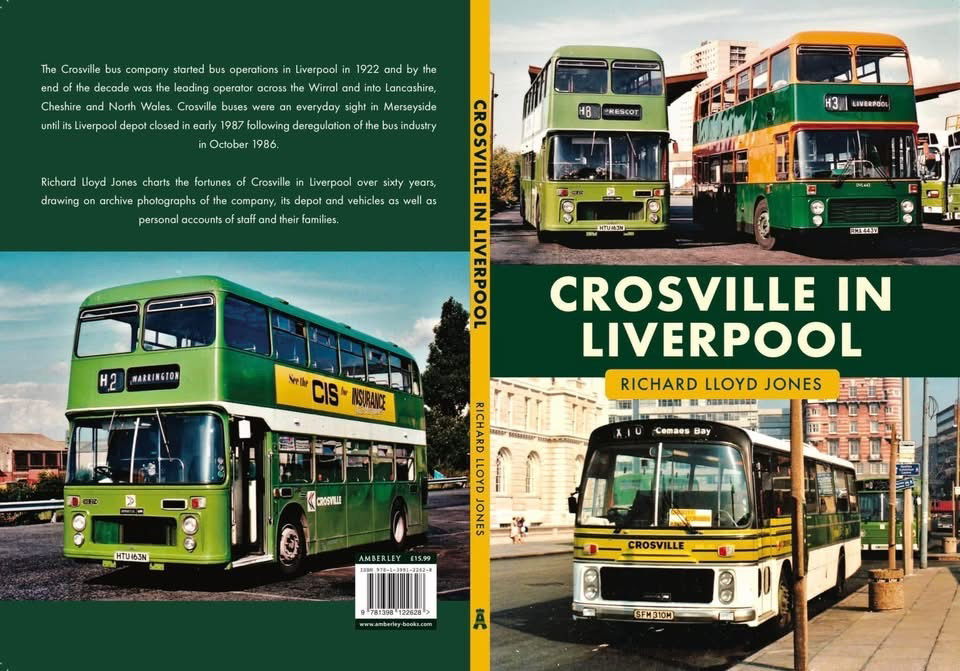 The book cover artwork
The book cover artworkBook extract
“Precious memories, some emotional, as well as documents and photographs of Crosville in Liverpool have been provided that have not been publicly seen before. Images certainly bring a story alive and convey far more than just words on a page. The images within this book have certainly done that.”
Graham Warren represents his dad George Warren, one of the ‘legends’ of Liverpool depot, who sadly passed away in 2016. We remember your dear dad, who would be extremely proud of you for telling his story.
I feel extremely privileged and honoured to have been a part of this important journey with the people named above in telling the story of what happened back then. It has been pieced together with the utmost care and respect to all concerned at all times. My ambition throughout has been to show the human aspect and the profound impact the closure of Crosville in Liverpool had on those concerned and their families.
I hope that this book does justice in the way it documents Crosville’s proud history in Liverpool and then the events that led to the closure of its Love Lane depot. We are all now the custodians of Crosville in ensuring that the name is kept alive out of respect for those who worked for the company and not just consigned to history. Nowadays there are generations that never knew that such a name existed and are now being told the story.”
In memory with the greatest of respect.
Richard Lloyd Jones FCILT FCMI CMgr FIOM
Book dedication
The book is being dedicated to the following as it will appear in the book. Unfortunately my dear Father was taken ill suddenly in mid March of this year (2025) and sadly passed away five days later. Amberley Publishing have been truly fantastic and supportive in allowing the lower paragraph below to be included in the book during the final proofing stages in memory of my Dad.
This book is dedicated to the staff that worked for Crosville in Liverpool over its sixty-five-year presence in the city and to their families.
It is also dedicated to my family who have listened to me patiently as I have put this book together, often typing into the night. My family’s support in the continued preservation of former Crosville Bristol RELH6G, fleet number CRG163 has been invaluable.
I also dedicate this book to my dear father who sadly passed away from a short illness in March 2025, before he could see the book published. His support with the book and CRG163 was incredible.
Videos
Click on both videos above - top right for a preview of some of the photographs that will be included in the book and the bottom video that shows the location of the former Crosville Edge Lane depot site as it is today, but overlaid by an image of the actual depot from 1952.
About the author (publisher’s website)
Richard Lloyd Jones has worked in the bus industry for over thirty-four years, starting with Crosville Wales. In his present role he works in policy but has always had a keen interest in the history of the bus industry in the UK, and especially Crosville Motor Services Ltd. He is also the owner of a preserved Crosville coach which was based with Crosville in Liverpool.

Pre order a copy of the book
Please click on the following images to take you to the specific pages on Amberley Publishing’s website for further details on how to pre order a copy of this new book. You can also click HERE.
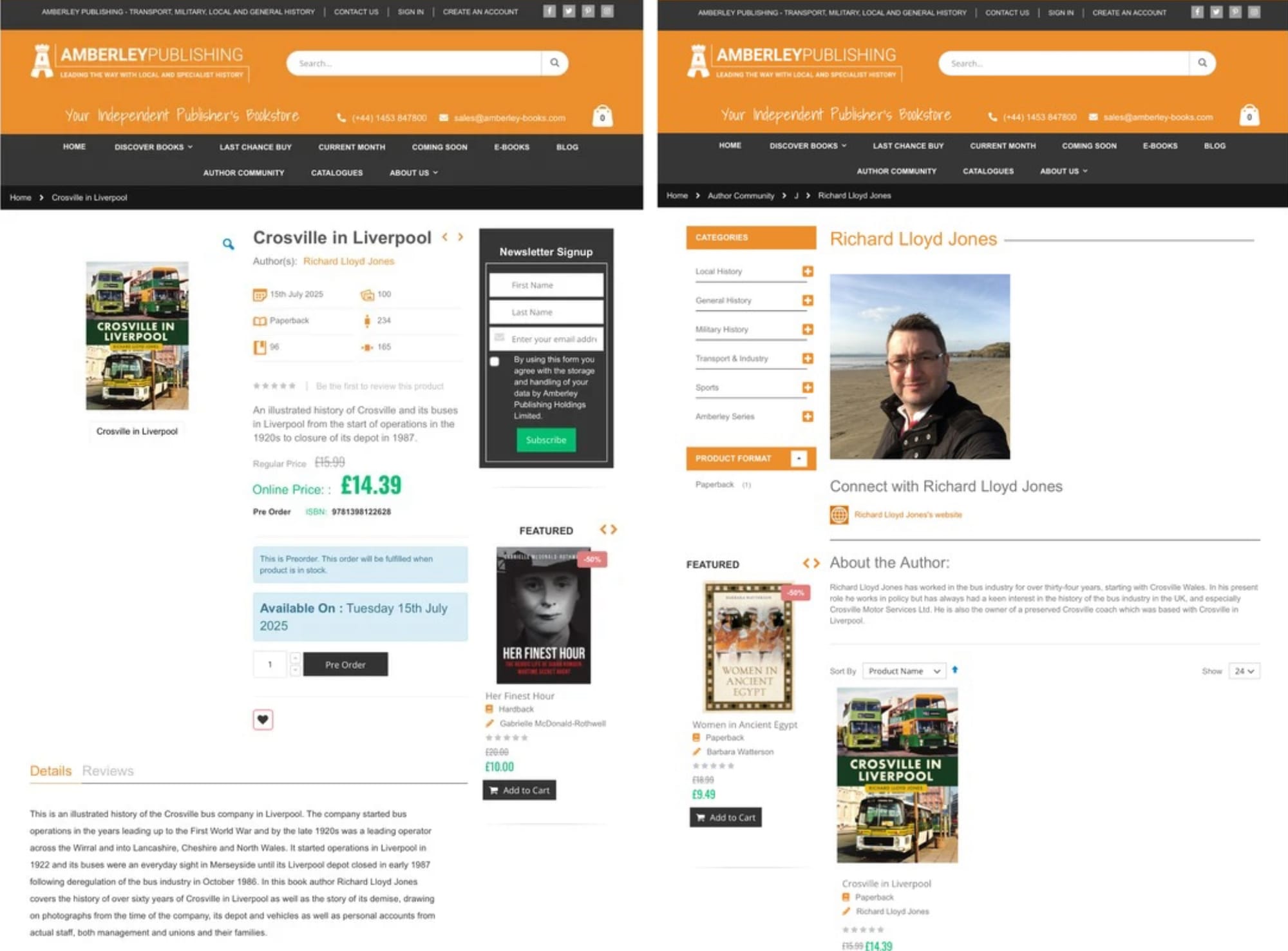
Book launch events
Specific book launch events will take place when the book becomes available from 15 July, 2025. Most notably the main launch will take place in Liverpool, the heart of the story and will involve those mentioned in the book. More information about dates, times and actual locations of events will be made available closer to the time. Please subscribe below.
Book availability
The book is available on-line to pre-order via Amberley Publishing and Amazon; also on-line to pre-order at Waterstones and WHSmith and available in store from 15 July 2025 onwards.

With grateful thanks
The photograph below will be the last one to appear in the final page of the book, and is special for many reasons. It is an image of many of the former staff and decedents of former staff of Crosville’s Liverpool depot, mentioned throughout the book as well as captured through valuable photographs. Many in the photograph had not seen each other since early 1987, nearly forty years ago. The photograph is also special as it captures my youngest son and late father who sadly passed away from a short illness in March of this year (2025). The three of us are seen to the left of the photograph standing side by side.
My Dad was so supportive of the book and was proud of its production. Sadly he did not get to see it printed but did get to see an earlier draft thankfully.
My grateful thanks to those named below that have helped in the production of this book and to my family. We also remember my Dad with fondness and love. He was also instrumental in the on-going preservation and restoration of CRG163. More details of this are available HERE.
My grateful thanks also go to the staff of Amberley Publishing for the valued support and understanding I’ve received as we’ve worked on the final proofing of the book, including ensuring that late additions/amendments are made following the loss of my dear Father.
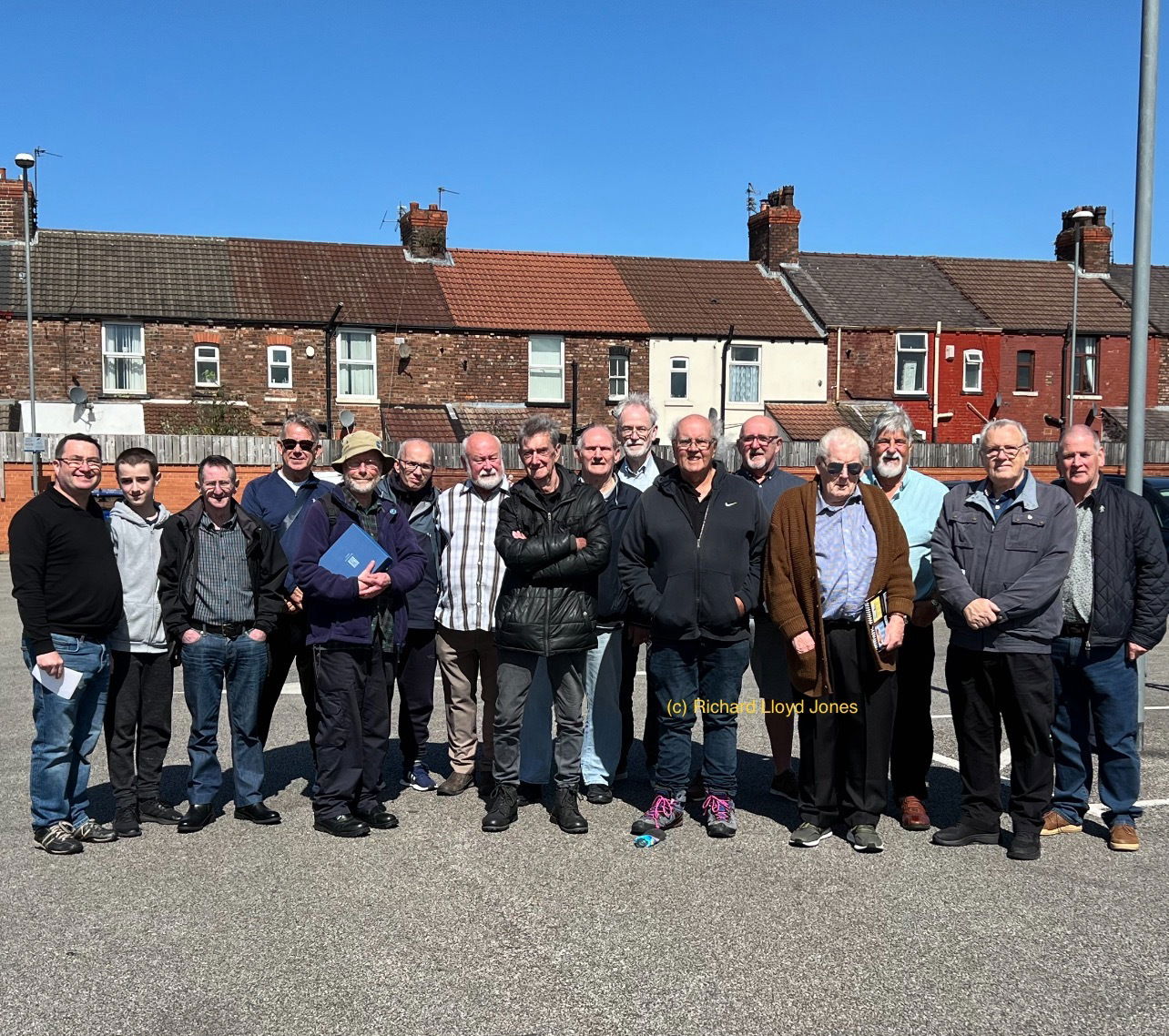 A photograph taken on Tuesday 20 August 2024 at the former location of Crosville’s Edge Lane depot. Along with my youngest son and father, I had travelled to Liverpool to catch up with former Crosville staff, and their descendants, mentioned in the book and to have a group photograph taken. Some people hadn’t seen each other in nearly forty years. From left to right: Richard Lloyd Jones (author), Gethin Lloyd-Jones (author’s youngest son), Richard Lloyd Jones (author’s late father), Malcolm Davies, Robert J. Montgomery, Graham Warren, David Forrest, Geoff O’Brien, Raymond Patterson, Mike Lambden, Bill Barlow, Allan Bentley, Bob Hayden, John Embleton, Paul Rycroft and Melvin Robinson.
A photograph taken on Tuesday 20 August 2024 at the former location of Crosville’s Edge Lane depot. Along with my youngest son and father, I had travelled to Liverpool to catch up with former Crosville staff, and their descendants, mentioned in the book and to have a group photograph taken. Some people hadn’t seen each other in nearly forty years. From left to right: Richard Lloyd Jones (author), Gethin Lloyd-Jones (author’s youngest son), Richard Lloyd Jones (author’s late father), Malcolm Davies, Robert J. Montgomery, Graham Warren, David Forrest, Geoff O’Brien, Raymond Patterson, Mike Lambden, Bill Barlow, Allan Bentley, Bob Hayden, John Embleton, Paul Rycroft and Melvin Robinson.A number of people have made valued contributions in the production of this book. A special thank you to Bill Barlow; Andrew Cudbertson; John Embleton; David Forrest; David A. Jones; Mike Lambden; Gethin Lloyd-Jones; Ioan Lloyd-Jones; Robert J. Montgomery; Geoff O’Brien; Raymond Patterson; Paul Rycroft; Les A. Smith; Robert Smith and Graham Warren. Many of which are pictured above.
Also much appreciated are documents and photographs supplied by The Bus Archive; Fred Burnett; Dave Cousins; Bob Downham; Brian Moore; John Lee; and Geoff Smith.
Subscribe
Please subscribe for updates about the book by adding your e-mail address to the ‘Email Address’ box below and press ‘SUBSCRIBE’. ⬇️ ⬇️
You can also use the following web address to bring you back to this page:

Cofio/Remembering Dad/Grandad
Cofio’n fawr amdanat Dad/Taid

Mae’r dudalen hon wedi’i chysegru er cof am fy nhad Richard Lloyd Jones a oedd yn dad a thaid cariadus eithriadol, a fu farw ar 13 Mawrth 2025 o salwch byr.
Arwyddocâd y dudalen newydd hon a gyflwynwyd heddiw, 23 Ebrill, 2025 i’r wefan hon yw’r ffaith bod ymwneud fy Nhad â CRG163 dros y blynyddoedd wedi bod yn arwyddocaol.
Ers bod yn berchen ar CRG163 ers mis Mehefin 2002, bu fy nhad yn ymwneud yn sylweddol ag adfer a chadw’r cerbyd ymhellach dros y 23 mlynedd nesaf.
Dechreuodd ei ymwneud ag ailadeiladu loceri CRG163 rhwng 2002 a 2004 yn ogystal â gwaith mawr arall a oedd yn golygu bod y ddau ohonom yn sandio’r cerbyd yn gyfan gwbl i baratoi ar gyfer peintio a gwaith llenwi lle bo angen.
Dim ond rhai o’r pethau a gwblhawyd gennym gyda CRG163 yw’r rhain heb sôn am brofi’r cerbyd yn y maes ac yna mynychu llawer o sioeau gyda’n gilydd unwaith roedd CRG163 yn barod yn gynnar yn 2004.
Isod mae casgliad o rai o luniau sy’n ymestyn dros 23 mlynedd sydd yn dal cysylltiad fy nhad â CRG163. Mae rhagor o fanylion a chapsiynau yn ymwneud â’r ffotograffau hyn ar gael o dudalen Ein Colled Fawr / Our Devastating Loss ar y wefan hon neu drwy glicio YMA.
~~~~~~~~~~
▶️ Remembering my Father/Grandfather
This page is dedicated in memory of my Dad Richard Lloyd Jones who was an outstanding loving father and grandfather, who passed away on 13 March 2025 from a short illness.
The significance of this new page introduced today, 23 April, 2025 to this website is the fact that my Dad’s involvement with CRG163 over the years was significant.
Since owning CRG163 since June 2002 my Dad was significantly involved with the further restoration and preservation of the vehicle over the following 23 years.
His involvement began with the rebuilding of CRG163’s lockers between 2002 and 2004 as well as other major work that entailed both of us sanding down the vehicle completely in preparation for painting and filler work where needed.
These are only some of the things we completed together with CRG163 not to mention field testing the vehicle and then attending many shows together once CRG163 was ready in early 2004.
Below are a collection of some of the images spanning 23 years capturing my Dad’s involvement with CRG163. Further details and captions relating to these photographs are available from Ein Colled Fawr / Our Devastating Loss page on this website or by clicking HERE.
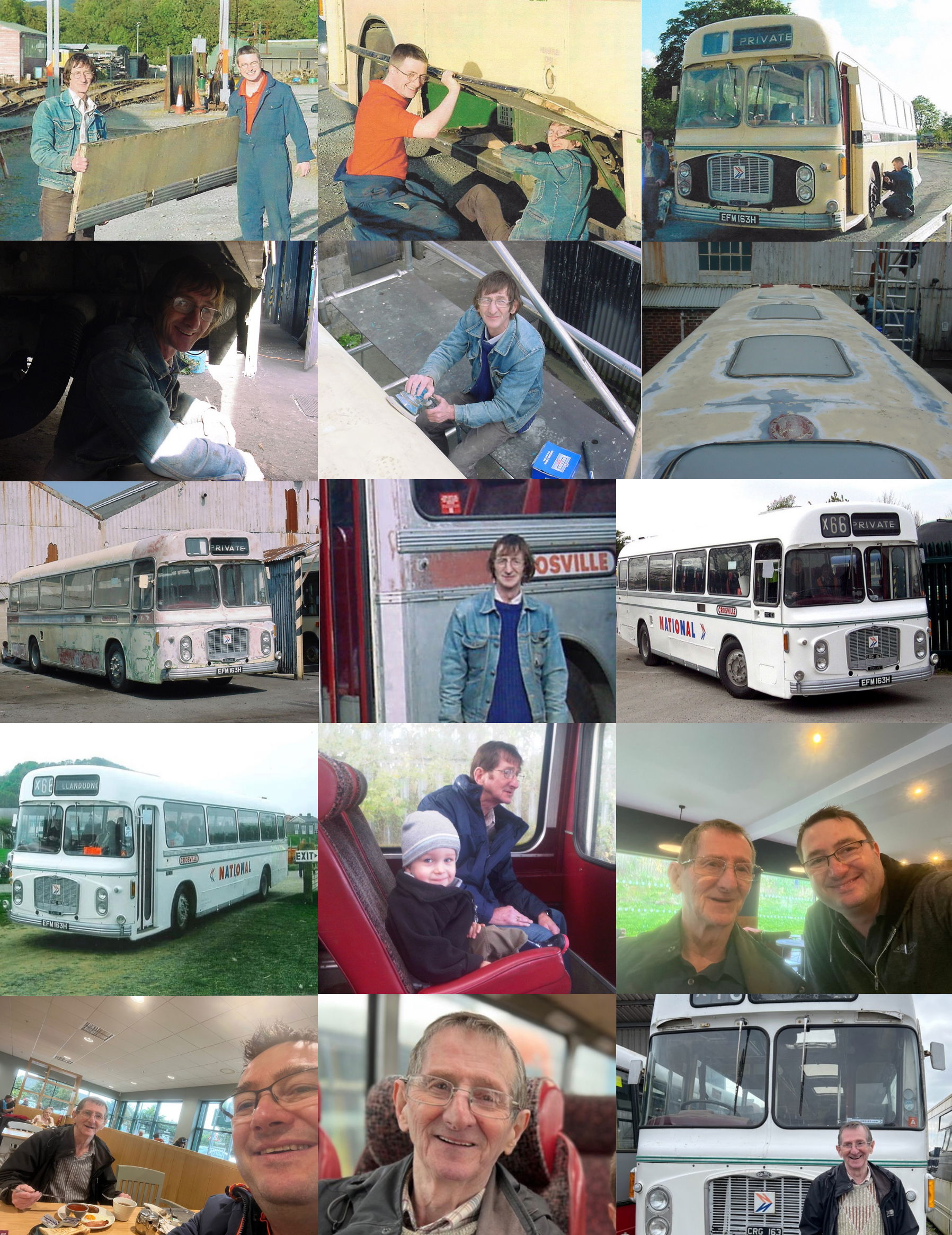 Casgliad o rai o luniau fy Nhad a’i gysylltiad sylweddol â CRG163 yn ymestyn dros dair blynedd ar hugain o 2002 i 2025. / A collection of some of the images of my Dad and his significant involvement with CRG163 spanning twenty three years from 2002 to 2025.
Casgliad o rai o luniau fy Nhad a’i gysylltiad sylweddol â CRG163 yn ymestyn dros dair blynedd ar hugain o 2002 i 2025. / A collection of some of the images of my Dad and his significant involvement with CRG163 spanning twenty three years from 2002 to 2025.▶️ Llyf ‘Crosville in Liverpool’ book
Nid yn unig roedd fy nhad yn gefnogol gyda CRG163, ond hefyd gyda ni fel teulu ym mhopeth a wnaethom. Roedd hyn yn cynnwys llwyddiannau ysgol, gwaith a’r diddordeb oedd ganddo yn ein côr, Côr Meibion Dwyfor.
Roedd hefyd yn gefnogol i lyfr rwyf wedi’i ysgrifennu dros nifer o flynyddoedd o ymchwil a fyddai’n cael ei argraffu eleni (2025). Roedd fy nhad mor gefnogol i hyn gan fod y llyfr yn canolbwyntio ar bobl go iawn ac effeithiau newidiadau i fframwaith rheoleiddio’r diwydiant bysiau ar bresenoldeb y cwmni Crosville Motor Services yn Lerpwl yn ystod ganol yr 1980au. Yn anffodus ni chafodd fy nhad weld y llyfr yn cael ei gyhoeddi ond gwelodd fersiwn drafft diolch byth.
Yn y tafluniadau olaf o brawf-ddarllen mae’r llyfr bellach wedi’i ddiwygio i adlewyrchu marwolaeth sydyn fy nhad gydag ymroddiad arbennig yn y llyfr, a ddangosir isod ac ychwanegu ffotograff sy’n cynnwys fy Nhad allan o barch.
~~~~~~~~~~
Not only was my Dad supportive with CRG163, but also with us as family in everything we did. This included the successes of school, work and the interest he had in our choir, Côr Meibion Dwyfor.
He was also supportive of a book I had written over many years of research that would be printed this year (2025). My Dad was so supportive of this as the book concentrates on real people and the impacts of changes to the regulatory framework of the bus industry had on the Crosville Motor Services’ presence in Liverpool during the mid 1980’s. Sadly my Dad did not get to see the book published but did see a draft version thankfully.
In the final throws of proofing the book has now been amended to reflect my Dad’s sudden passing with a special dedication in the book, shown below and the addition of a photograph that includes my Dad out of respect.

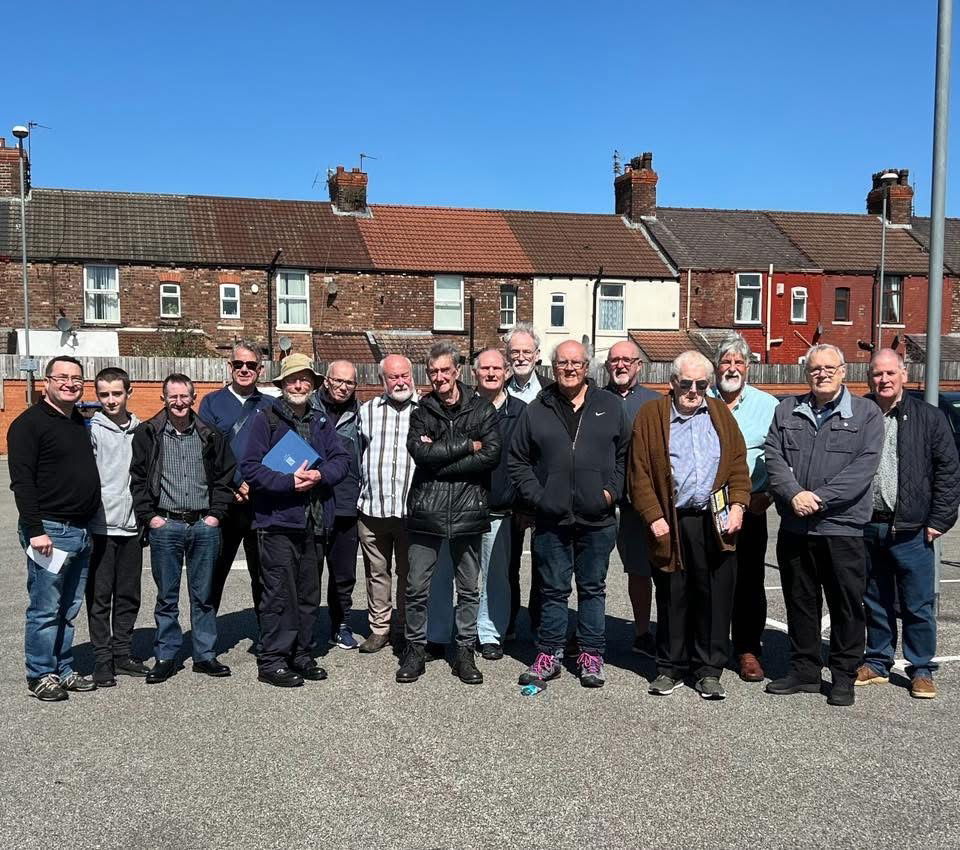 Dyfyniad o’r llyfr / Quote from the book: A photograph taken on Tuesday 20 August 2024 at the former location of Crosville’s Edge Lane depot. Along with my youngest son and father, I had travelled to Liverpool to catch up with former Crosville staff, and their descendants, mentioned in the book and to have a group photograph taken. Some people hadn’t seen each other in nearly forty years. From left to right: Richard Lloyd Jones (author), Gethin Lloyd-Jones (author’s youngest son), Richard Lloyd Jones (author’s late father), Malcolm Davies, Robert J. Montgomery, Graham Warren, David Forrest, Geoff O’Brien, Raymond Patterson, Mike Lambden, Bill Barlow, Allan Bentley, Bob Hayden, John Embleton, Paul Rycroft and Melvin Robinson.
Dyfyniad o’r llyfr / Quote from the book: A photograph taken on Tuesday 20 August 2024 at the former location of Crosville’s Edge Lane depot. Along with my youngest son and father, I had travelled to Liverpool to catch up with former Crosville staff, and their descendants, mentioned in the book and to have a group photograph taken. Some people hadn’t seen each other in nearly forty years. From left to right: Richard Lloyd Jones (author), Gethin Lloyd-Jones (author’s youngest son), Richard Lloyd Jones (author’s late father), Malcolm Davies, Robert J. Montgomery, Graham Warren, David Forrest, Geoff O’Brien, Raymond Patterson, Mike Lambden, Bill Barlow, Allan Bentley, Bob Hayden, John Embleton, Paul Rycroft and Melvin Robinson.Mae rhagor o wybodaeth am y llyfr ar gael o’r ddolen ar y dde. / Further information about the book Crosville in Liverpool is available HERE.
Mae rhagor o wybodaeth am ein diwrnod arbennig yn Lerpwl ar gael drwy’r ddolen ar y dde. / Further information about our special day in Liverpool on 20 August 2024 is available HERE.
▶️ Angladd / Funeral - 22.04. 2025
Cynhaliwyd angladd fy Nhad ar 22 Ebrill 2025. Fel teulu hoffem ddiolch i bawb a fynychodd ac am eu cefnogaeth hanfodol yn y cyfnod cyn yr angladd, ar y diwrnod a thu hwnt. Dymunwn ddiolch hefyd i swyddogion Capel Bowydd (capel); Dr Dyfed Wyn Roberts am arwain ar wasanaeth mor hyfryd ac i Roberts & Owen, trefnwyr angladdau am safon ragorol y gwasanaeth a gawsom fel teulu drwyddi draw.
Darllenwyd nifer o deyrngedau yn ystod yr angladd. Isod mae’r rhai a ddarparwyd gennyf fi a'm mab hynaf, y cefais yr anrhydedd o ddarllen ar ei ran yn y gwasanaeth.
~~~~~~~~~~
My Dad’s funeral took place on 22 April 2025. As a family we would like thank everyone that attended and for their vital support in the build up to the funeral, on the day and beyond. We would also like to thank the officials at Capel Bowydd (chapel); Dr Dyfed Wyn Roberts for leading on such a lovely service and to Roberts & Owen, funeral directors for the exemplary standard of service we have received as a family throughout.
During the funeral a number of eulogies were read. Below are the eulogies provided by myself and my eldest son, in which I had the honour to read on his behalf at the service.
▶️ Teyrnged i’m Tad / Taid (Eulogy)
“Dyn a ffrind arbennig; dyn arbennig iawn; pob amser yr un fath; boi iawn; ffrind da; dyn annwyl pob amser a gwên; ffrind da i mi; cymeriad heb ei ail; wedi cael llawer o hwyl hefo fo; dyn da, annwyl dros ben.”
Dyma ond ychydig o eiriau i ni dderbyn oddiwrth nifer fawr o fobl wrth iddynt ddisgrifio a chofio fy Nhad ers i ni ei golli. Mae’r geiriau hyn yn ei ddisgrifio’n berffaith.
“His qualities were demonstrated through your approach and compassion for others; a great man; grateful we got to meet him.” I'll be there to pay my respects to an absolute gentleman, I was so glad I got to meet.
These are just some of the words people have used to describe and remember my Dad fondly. These words describe him perfectly.
Fel i nifer wybod, nid oeddwn yn rhan o fywyd fy Nhad yn fy mhlentyndod, ond yn y blynyddoedd i ddilyn gwnaed i fyny a hyn a llawer iawn mwy.
Ganwyd fy Nhad ar 15 Ebrill 1946, yn fab i Richard a Lily Lloyd Jones a brawd i Glyn. Wythnos diwethaf fasa fy Nhad wedi bod yn 79 oed.
Yn ôl yn y dydd roedd fy Nhad a’m Taid gyda busnes adlewyrchus adeiladu ac angladdwyr yma ym Mlaenau Ffestiniog o’r enw Richard Lloyd Jones & Son fel nifer i’w cofio. Deallaf roedd parch mawr iawn at y ddau yn y dref a drwy’r ardal gyfan yn y safon o’r gwaith pwyllog a thrylwyr iddynt gynhyrchu ac yn eu cymeriadau fel pobl. Roedd bod yn grefftwyr o’r safon uchaf bosib pob tro yn bwysig iddynt o’u dau.
My Father and Grandfather had a successful building business here in Blaenau Ffestiniog and were also highly respected undertakers. My Dad often mentioned to me how they both had utmost pride in the quality and standard of their workmanship. My Dad constantly commented how much of a privilege it was to be an undertaker, providing utmost respect and care on the last and final journey. We now have the opportunity today to return that very compliment.
Yn anffodus aeth fy Nhaid yn sâl gydag Alzheimer’s, a dyma pam i ni ddewis hyn fel elusen heddiw. Roedd hyn yn agos iawn i galon fy Nhad wedi iddo edrych ar ôl ei Dad pryd hynny.
Unfortunately my Grandfather was taken ill with Alzhimers. This is why we have chosen this charity today. This was close to my Dad’s heart having cared for his own Father at the time.
Yn fwy diweddar roedd fy nhad wedi penderfynu buddsoddi mewn technoleg, mynd ar-lein ac ymuno a Facebook.
Doedd fy Nhad ddim yn ddyn technoleg fel hyn, ac yn y dechrau roedd y peth i gyd yn ddiarth iawn iddo. Ond dros lawer ymweliad a galwadau ffôn a fideo dros wythnosau lawer daeth fy Nhad/Taid yn rêl boi arni. Roedd o’n benderfynol i ddysgu a hynny gyda chymorth gwerthfawr Ioan a Gethin yn bennaf, a llwyddo y gwnaeth.
More recently my Dad decided to invest in technology and go on-line. At first it was all alien to him but was eager and determined to learn through the valuable support of Ioan and Gethin over many weeks, visits, phone and video calls, and he did succeed.
Ymhellach i hyn sefydlwyd grŵp rhwng Taid, yr hogiau a minnau ar app Signal (debyg i Whats App) a’i gelwir yn ‘Taid a Ni’. Drwy hwn roeddem mewn cysylltiad cyson gydag ef, yn ddyddiol a mwy, ac yn aml am oriau hefo Taid gyda pob dim yn cael ei rannu arno, o sut oedd ysgol; datblygiadau’r hen fws; lluniau gwirion; a Taid pob amser yn chwerthin a chael hwyl.
Roeddem yn aml yn cael galwadau fideo gyda Taid drwy’r app signal rhwng mynd i’w weld ac yntau yn dod i weld ni drwy fynd i’w nol yn y car ac wedyn yn ei ddychwelyd adref yn saff yn yr un modd.
Pob amser cinio rhwng cyfarfodydd gwaith buaswn yn codi’r ffôn ar fy Nhad mond i weld sut oedd o, cael sgwrs a rhoi’r byd yn ei le. Roedd hyn yn digwydd yn ddyddiol. Mae’n rhyfedd iawn ddim yn cael gwneud hyn bellach.
Roedd pob sgwrs yn cychwyn gyda Taid yn gofyn….. sut mae’r hogiau; ydi nhw wedi mynd i’r ysgol yn iawn bore ma? Ydi Nia (fy ngwraig) yn iawn? Roeddwn yn ateb pob tro i ddweud fod pawb yn iawn diolch, a Taid pob tro yn dweud hogiau gorau’r byd. Roedd y geirau hyn yn eiriau roedd Taid yn defnyddio’n gyson am yr hogiau. Roedd gan Taid feddwl mawr iawn o Ioan a Gethin ac yn addoli’r ddau fach a nhw yn addoli eu Taid yn yr un ffordd.
Ar gyfnod y Nadolig roedd Taid yn dod atom pob tro, a phawb yn edrych ymlaen i’w weld. Roedd hyn yn uchafbwynt yng nghalendar blynyddol ni fel teulu. Roedd fy Nhad/Taid yn ran bwysig iawn ohonom.
Roedd fy Nhad/Taid yn dangos diddordeb mawr ym mhob dim i ni wneud ac yn ddyn galluog iawn. Nid yn unig oedd o’n gwrando ar y pethau i ni son amdan yn ofalus ac amwyneddgar ond yn dangos diddordeb mawr a dealltwriaeth ohonynt.
Yn 2002 prynais hen goets Crosville fel prosiect i’w hadnewyddu. O’r cychwyn roedd fy Nhad yn rhan allweddol yn hyn. Mae’r cerbyd gennyf bellach ers 23 o flynyddoedd. Mae fy mhlant hefyd yn rhan o’r prosiect a dros yr holl flynyddoedd mae fy Nhad wedi bod yn rhan mawr ohoni.
Yn 2022 roedd angen ‘checio’ alternator yr hen goets drwy fynd a fo i arbenigwyr yng Nghaer am bod y batri ddim yn ‘chargio’. Yn 2023 roedd yn rhaid i ni ail adeiladu ‘radiator’ yr hen goets drwy fynd a fo i gwmni arbennig yn Ellesmere Port. Pob tro ac ar pob taith roedd fy Nhad hefo fi. Dwi’n cofio mynd i nol y radiator fis wedyn ar ôl i’r gwaith gael ei gwblhau. Dwi’n cofio stopio am baned o goffi ar yr A55 ar y ffordd yno ac wedyn yn Morrisons Ellesmere Port ar y ffordd nol i gael cinio. ‘Fry’ y cawsom o’n dau. Roedd fy Nhad yn awyddus iawn i dalu, ond na fy lle i fel mab oedd gwneud a dyna be fu. Anrhydedd mawr oedd cael gwario’r diwrnod hefo fo.
In 2002 I purchased and restored an old Crosville coach. From the beginning my Dad was instrumental in the project and continued to be so until now, spanning 23 years. Only in 2022 the vehicle’s alternator had to be checked at a specialist in Chester as the battery wasn’t charging, and then in 2023 the vehicle’s radiator had to be to taken to a specialist company in Ellesmere Port to be rebuilt. So off we both went as always, this time with the radiator in the boot of the car. A coffee on the way on the A55 and then a cooked breakfast on the way back at Morrisons in Ellesmere Port.
Dros y misoedd diwethaf rydym wedi bod yn gwenud gwaith mawr adnewyddu ar gorff y cerbyd ond yn anffodus nid ydi fy Nhad bellach yn mynd i gael gweld y gwaith.
Pob tro fasa unrhyw waith oedd yn cael ei wneud ar y cerbyd yn fwy diweddar a’m Tad ddim hefo ni buaswn yn ei ffonio ar y ffordd adref ar ‘hands free’ i roi crynodeb o’r hyn i ni ei gyflawni ac wedyn anfon llwyth o luniau iddo, tua 50 deg fel arfer, drwy Signal ar ôl cyrraedd adref i mi dynnu drwy’r dydd i’w rhannu hefo fo y noson hwnw. Roedd fy Nhad a diddordeb mawr yn y cerbyd ac yn dal Sion fy ffrind a chreftwr arall sydd hefo fi yn gwneud y gwaith yn uchel ei barch o’i arbenigedd yn ei grefft fel fy Nhad yn ôl yn y dydd. Roedd fy Nhad yn dweud o hyd faint mor dalentog oedd Sion yn ei grefft ac yn grefftwr arbennig iawn.
Y llynedd yn ystod mis Awst cawsom drip i Lerpwl sydd yn gysylltied a phrosiect arall i mi. Fel arfer roedd fy Nhad hefo ni a phawb i’w gyfarfod yno ar ôl cyrraedd wrth eu bodd yn siarad hefo fo.
Last August we had a trip to Liverpool relating to another project of mine where we met up with friends and former staff at the old site of the Crosville depot in Edge Lane, Liverpool as a part of a new book. My Dad was with us as always. Whilst he never worked on the buses or Crosville, he got it completely and touched on many lives and was held in high esteem by so many within our Crosville family. Some are here today, and especially Graham Warren, having travelled all the way from Liverpool, demonstrating clearly the respect he and many had for my Dad. Graham’s late Father, the great George Warren, who sadly passed away in 2016 was one of ‘the legends of Edge Lane depot. Back in the day he drove our old coach for Crosville in service. The vehicle now connects us all in so many ways. Thank you very much Graham for coming today. It means a lot to us.
Our grateful thanks also to Côr Meibion Dwyfor who are also represented here today. A choir that is very close to my heart. Diolch yn fawr iawn i chi gyd am ddod.
Unfortunately my Dad will not get to see the book when it comes out later this year but did get to see a draft thankfully and was proud of what had been written about our Crosville families in Liverpool. My Grandmother coincidentally was also born in Liverpool on the 7th of April 1919 with details to be included in the book. My Dad was so proud of this. A special dedication has now been arranged to be included in the book in memory of my dear Dad. This will feature the group photo that we took from last August which includes my Dad as the final photograph in the book.
Rydym hefyd eisiau cael diolch yn fawr iawn i Iolo a’i dim heddiw, sef angladdwyr Roberts & Owen o Benygroes. Fel fy’n Nhad a’m Taid yn y dyddiau a fu, dyma angladdwyr sydd yn rhoi pob ymdrech i’r siwrnai olaf, yn ofalgar a pharchus tu hwnt. Roedd Iolo yn uchel ei barch gan fy Nhad ac fasa fo’n falch mai Iolo sydd yn arwain ar y trefniadau heddiw. Dyma grefftwr arbennig iawn yn ei waith fel fasa fy’n Nhad yn ei ddweud, ac yn ffrind tu hwnt hefyd. Nid yw’r wythnosau diwethaf wedi bod yn hawdd, ond ti wedi bod yn gefn mawr i ni fel teulu. Diolch i ti Iolo, Janice, Dewi, Mark a’r criw am pob dim.
Fel y gwelwch mae’r gair crefftwr a chrefftwyr yn cael ei gofnofi yn aml yn hyn heddiw gan ei fod yn hynod bwysig i’m Tad.
Fy niolch mawr hefyd i’m gwraig, a’m mechgyn arbennig iawn. Tri craig gofalgar ac ardderchog i mi. Rwyf mor ‘proud’ ohonynt yn y ffordd i ni gynnal ein gilydd drwy hyn, ac yn enwedig o Ioan a Gethin dros yr wythnosau diwethaf a heddiw. Fasa Taid mor proud ohonoch o’ch dau.
Rydym wedi derbyn nifer fawr o alwadau a negeseuon dros yr wythnosau diwethaf ac rydym yn ddiolchgar iawn am pob un ohonynt ac i chi gyd am ddod yma heddiw.
Anrhydedd mawr iawn yw cael dweud fy mod yn fab i fy Nhad a gyda balchder mawr yn rhannu’r un enw. Rydym fel teulu yn lwcus iawn o’r holl amser i ni wario gydag ef a’r holl atgofion melys sydd gennym ohono dros nifer fawr o flynyddoedd. Byddem yn trysori hyn am byth wrth gofio amdano.
It is an honour to be my Father’s son and with pride sharing the same name too. We are so lucky as a family to have such happy and cherished memories with my Dad/Grandad over many years.
Diolch i ti Dad am pob dim, am dy gariad; am wrando; am dy gyngor gwerthfawr pob tro; dy sylw a diddordeb; ac yn enwedig ar gyfer Ioan a Gethin - ac fel i ti ddweud o hyd, hogiau gorau’r byd.
(Richard Lloyd Jones)
~~~~~~~~~~
▶️ Teyrnged i’m Taid (Eulogy)
Oedd Taid, neu Taid Blaenau fel oeddwn ni yn ei alw yn berson caredig dros ben. Y tri gair rwyf yn cofio oedd Taid yn dweud y mwyaf yw “hogiau gorau’r byd”. Y tri gair yma oedd Taid o hyd yn dweud am fi ac fy mrawd bach, Gethin. Dyna pa mor agos oeddwn at Taid, ac dyna faint yr oedd yn ei olygu i ni.
Oeddwn ni fel teulu yn wastad o hyd yn cyfathrebu efo Taid, pob diwrnod, naill ai trwy godi'r ffôn neu anfon neges ar Signal. Rwyf yn cofio helpu dysgu Taid sut i ddefnyddio Signal, yn dangos sut i atodi lluniau ac anfon “voice messages”. Ar ôl dyfalbarhau am gyfnod byr, ac ychydig o negeseuon oedd wedi cael eu hanfon ar gamgymeriad, daeth yn rhugl iawn gyda'r ap. Oedd Taid o hyd yn gyrru negeseuon ac lluniau ar y grŵp oedd gennym o’r enw “Taid A Ni”, ac fe anfonon ni negeseuon ac lluniau i Taid yr un mor aml. Roedd Taid bob amser yn ymateb i'n negeseuon mewn ffordd hynod positif ac cadarnhaol, fel y negeseuon yma “mae hyn yn werthfawr go iawn iw gofio diolch yn fawr iawn Richard am feddwl am danaf” ac “argol fawr diolch yn fawr Ioan am gyru hyn imi”. Oeddwn o hyd yn neidio i anfon ateb i'w neges er mwyn diolch am ei sylwadau oedd wastad o hyd yn rhoi gwen ar ein gwynebau. Oeddwn yn falch iawn o Taid ac sut oedd o wedi addasu i’r technoleg mor gyflym.
Pob blwyddyn ar y diwrnod cyn Nadolig, oedd Taid yn dod lawr i’n tŷ er mwyn dathlu’r Nadolig. Oedd fy Mam yn paratoi bwyd blasus i pawb. Roedd Taid bob amser yn gwerthfawrogi popeth ac yn canmol Mam am y bwyd. Nid oedd y Nadolig byth yn gyflawn hebddo. Dwi’n cofio chwerthin am y jôcs y byddai’n dweud a mwynhau’r holl amser a gawsom gydag ef nes iddo fynd adref. Pan ofynnodd Gethin a minnau pan oeddwn ni’n iau am Siôn Corn, dywedodd mae Siôn Corn yn defnyddio “rocket boosters” i ddosbarthu anrhegion o gwmpas y byd. Rwyf dal yn meddwl am hynny pob Nadolig, er fy mod i wedi tyfu llawer ers hynny.
Pan oedd Mam a Dad yn mynd allan am fwyd, gofalodd Taid am Gethin a minnau. Rwyf yn cofio cael aros i fyny yn hwyr, yn gwylio ffilm ar y teledu efo Taid nes i Mam a Dad cyrraedd adref. Oherwydd oeddwn yn llawer iau ar y pryd, oedd cael aros i fyny yn hwyr yn peth mawr, ac oedd cael treulio’r amser hyn efo Taid yn ei gwneud yn llawer gwell.
Er bod Taid yn anffodus wedi ein gadael erbyn hyn, rwy'n falch iawn fy mod wedi gallu cyfarfod a threulio cymaint o amser gydag ef. Rwyf hefyd yn hynod falch ac hapus o'r holl atgofion a lluniau sydd gennym ohono a fydd gyda ni am byth.
Rwy'n gobeithio ei fod yn edrych i lawr arnom o'r nefoedd er mwyn clywed hyn; Diolch yn fawr iawn am pob dim yr wyt ti wedi ei wneud, ac diolch am yr holl atgofion ar amser rydym wedi cael treulio efo chdi.
(Ioan Lloyd Jones)
▶️ Cân arbennig sy'n golygu popeth - Anfonaf Angel
Wrth adael gwasanaeth angladd fy Nhad cafodd cân arbennig ei chwarae. Cyfansoddwyd y gerddoriaeth gan Robert Arwyn, cyfansoddwr uchel ei barch a dawnus yng Nghymru a geiriau gan Hywel Gwynfryn. Canwyd y gân y tro hwn yn hyfryd gan Rhys Meirion, tenor byd eang o fri, yn wreiddiol o Dremadog, Gogledd Cymru.
Dyma ddolen i'r ganiad hyfryd yma trwy You Tube: https://youtu.be/TKRB7nFxzjc?si=4M5Ts4Tr9eJuTfAx
Mae'r gân yn dweud yn syml y byddwn yn anfon angel gwarcheidwad i wylio drosoch.
▶️ A special song that means everything - Anfonaf Angel
On leaving my Father’s funeral service a special song was played. The music has been composed by Robert Arwyn, a highly respected and accomplished composer in Wales and words by Hywel Gwynfryn. The song on this occasion was sung beautifully by Rhys Meirion, a world wide renowned tenor, originally from Tremadog, North Wales.
Here is a link to this beautiful sing via You Tube: https://youtu.be/TKRB7nFxzjc?si=4M5Ts4Tr9eJuTfAx
The song simply states that we will send an guardian angel to watch over you.
Below is a translation of the song’s words into English, provided by Sara Davies, available from the following web link: https://lyricstranslate.com/en/sara-davies-anfonaf-angel-english
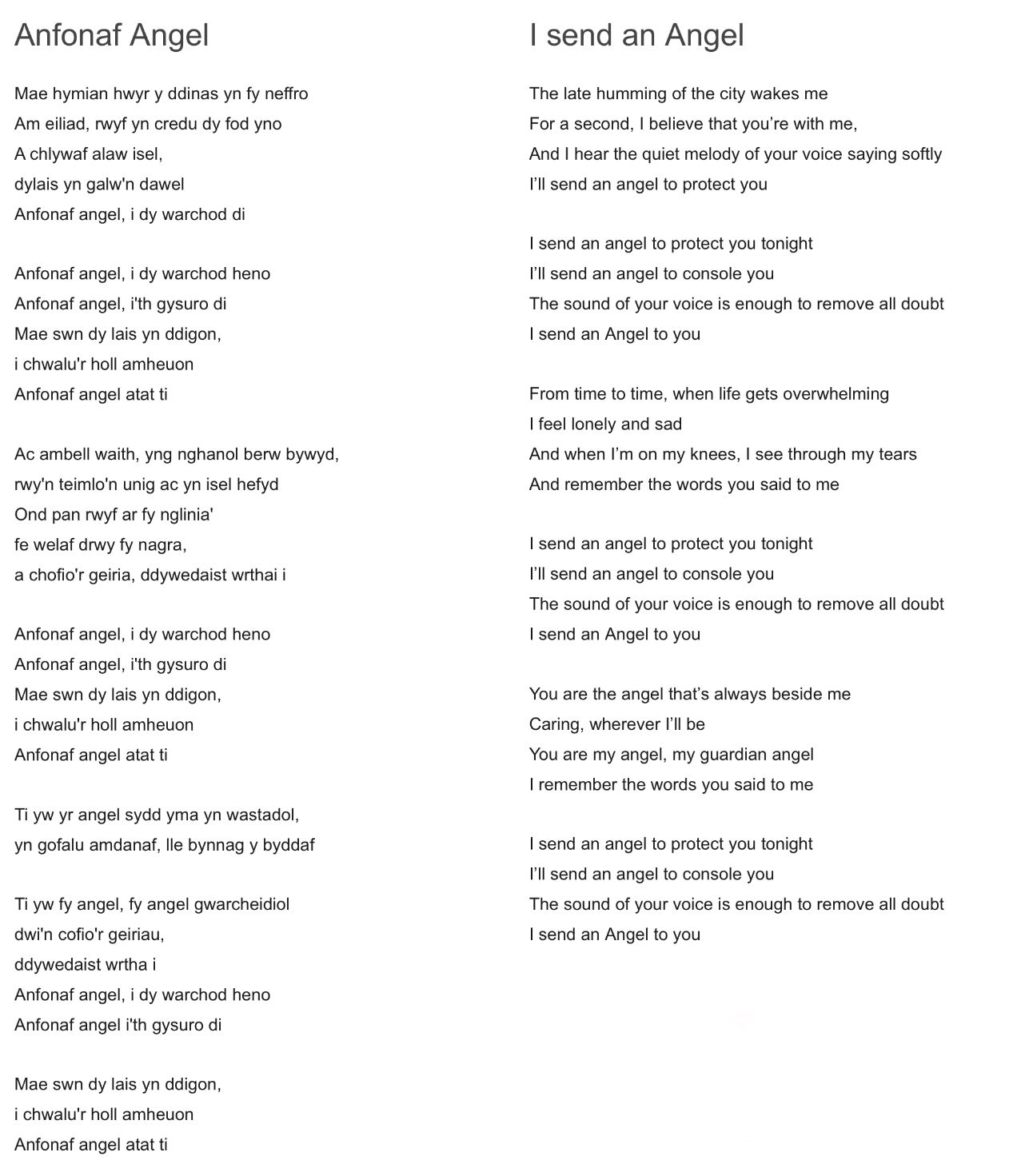
▶️ Angladdwyr Roberts & Owen Funeral Directors
Hoffem fel teulu ddiolch yn arbennig i Iolo a’r tim o drefnwyr angladdau Roberts & Owen Penygroes. Mae eu gofal, cefnogaeth, sgil a gwasanaeth rhagorol a ddarparwyd i ni fel teulu ers marwolaeth fy Nhad, yn y cyfnod o flaen llaw; yn ystod yr angladd ac wedi hynny wedi bod yn gwbl ragorol.
Roedd eu gofal arbennig tuag atom ni fel teulu a’r gwasanaeth a ddarparwyd ganddynt i’m Tad ar ei daith olaf yn gwbl y tu hwnt i eiriau. Yn ystod fy mywyd i gyd a’r llu o bobl yr wyf wedi cwrdd â nhw yn broffesiynol ac fel arall, dyma’r safon uchaf o wasanaeth o bell ffordd a welais erioed. Mae angen iddynt i gyd fod yn hynod falch o'r ffordd y maent yn ymdrin â sefyllfaoedd sensitif o'r fath. Cafodd Iolo a’i dîm eu hychwanegu yn y teyrnged i’m Tad yn yr angladd fel iddo ymddangos uchod.
Roedd y gofal a’r urddas a roddwyd i fy Nhad yn wirioneddol anhygoel, gyda Iolo yn cerdded o flaen hers fy nhad yn y ffordd draddodiadol ar nifer o achlysuron ac yn enwedig y pellter o gartref fy Nhad yr holl ffordd i weithdy fy Nhad. Ar y pwynt hwnnw symudodd Iolo i ffwrdd o flaen yr hers i'r chwith; edrych i fyny ar yr arwydd Richard Lloyd Jones a'i Fab sef gweithdy fy Nhad a’i Dad (fy Nhaid), rhoi ei ben i lawr am eiliad wrth iddo ddarparu y barch olaf i’r ddau fel ymgymerwyr yn y dref ac yna yn ôl i i'r hers a pharhau â'r daith. Roedd hyn yn gwbl anhygoel i'w wylio gan fod y daith trwy dref Blaenau Ffestiniog wedi ei chynllunio a'i gweithredu mor fanwl. Yn sicr darparwyd angladd gwladweinydd.
Roedd pawb o fewn y tîm yn hollol wych. Diolch i Iolo, Janice, Dewi, Mark, Meirion a phawb arall am bopeth. Mae eich cefnogaeth a’ch gwasanaeth wedi golygu cyn gymaint i ni fel teulu ac mae’n bwysig bod hyn yn cael ei ddweud yn gyhoeddus heb amheuaeth.
~~~~~~~~~~
As a family we would particularly like to to thank Iolo Roberts and team from Roberts & Owen Funeral Directors of Penygroes. Their utmost care, support, skill and exemplary service provided to us as a family since my Father’s passing, during the funeral and afterwards has been completely outstanding.
Their particular care for us as a family and the service they provided my Father on his final journey was completely beyond words. In all my life and the many people I have met professionally and otherwise, this is by far the highest standard of service I have ever seen. They are to be extremely proud of the way they approach such sensitive situations. Iolo and team were mentioned in the eulogy shown above at the funeral.
The care and dignity that was provided to my Dad was truly incredible, with Iolo walking in front of my Dad’s hears in the traditional way on a number of occassions and especially the distance from my Dad’s home all the way to my Dad’s former workshop. At that point Iolo moves away from the front of the hears to the left; looks up at the sign Richard Lloyd Jones & Son, puts his head down for a moment as he himself pays respect to my Dad, my Grandfather and their former work as undertakers in the town and then enters the hears again and continues the journey. This was totally incredible to watch as the journey through the town of Blaenau Ffestiniog was so meticulously planned and executed. A statesman's funeral was definitely provided.
Everyone within the team were totally outstanding. Our grateful thanks to Iolo, Janice, Dewi, Mark, Meirion and everyone else for everything. Your support and service has meant everything to us as a family and important that this is said publicly without doubt.
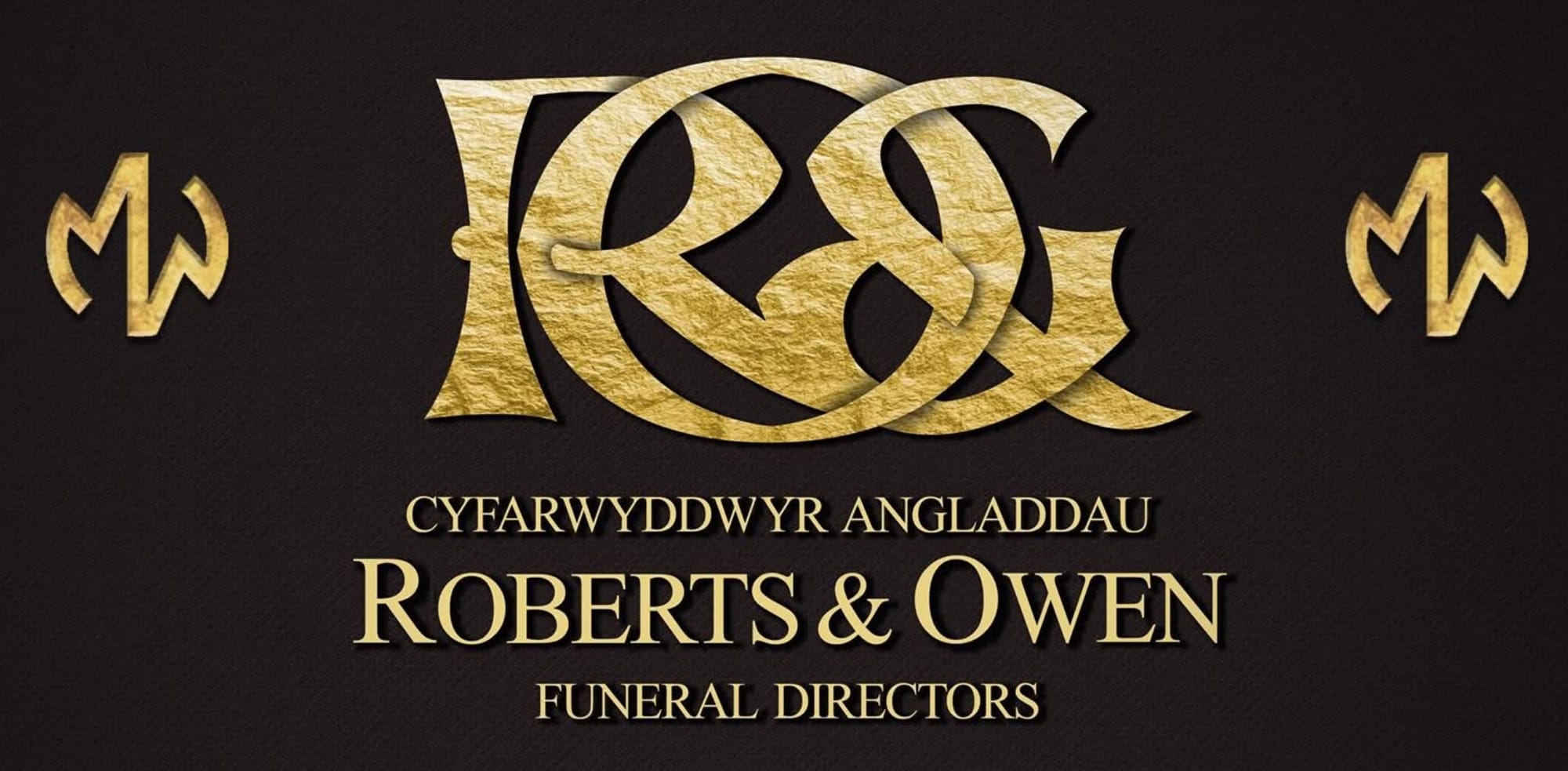
Dyma bennill i Iolo a’r tîm anfon ymlaen atom fel teulu yn dilyn yr angladd. / Below is the second verse of a poem that was sent to us as a family from Iolo and team following the funeral.
Cofier na roir y cyfan
Yn y blwch yn llwch y llan;
Bydd y cof yn boddi cur –
O hwn fe geisiwn gysur.
Try y llu adegau llon
Yn gyfoeth o atgofion.
Darn o hud o’r hyn a aeth
Ac sy’n aros yw’n hiraeth.
▶️ Ein helusen ddewisol yn angladd fy Nhad / Our chosen charity at my Father’s funeral
Mae croeso i chi gyfrannu at elusen ddewisiol, sef Cymdeithas Alzheimer. Cliciwch YMA am ragor o wybodaeth.
Please feel free to donate to our chosen charity which is the Alzhimer’s Society. Click HERE for further information.
 Ein helusen ddewisiol yn yr angladd / Our chosen charity at the funeral
Ein helusen ddewisiol yn yr angladd / Our chosen charity at the funeral▶️ Côr Meibion Dwyfor
Fel teulu, hoffem hefyd ddiolch yn fawr iawn i Gôr Meibion Dwyfor sydd yn agos iawn i’m calon. Mae’r côr wedi bod yn gefnogaeth fawr tu hwnt i ni fel teulu drwy lu o gysylltiadau ac wedyn drwy gynrychiolaeth yn angladd fy Nhad ar y diwrnod.
Wrth i ni ddod i mewn i’r gwasanaeth yn y capel fel teulu ni welwyd pwy oedd yn y gynulleidfa o gwbl. Ond pan gychwynnodd y canu yn yr emyn gyntaf, cawsom gysur mawr iawn fel teulu o glywed lleisiau adnabyddus y côr tu ôl i ni. Diolch o galon i Buddug Roberts ein harweinyddes, Alison Edwards ein cyfeilyddes a’r côr am bob dim. Cliciwch YMA am ragor o wybodaeth am y côr.
~~~~~~~~~~
As a family we would also like to thank Côr Meibion Dwyfor which is a choir that is close to my heart. The choir has been a huge support to us as a family through many contacts and then through representation at my Father's funeral on the day.
As we entered the service in the chapel as a family we did not see who was in the congregation at all. But when the singing started in the first hymn, we were very comforted as a family to hear the well-known voices of the choir behind us. Thank you from the bottom of my heart to Buddug Roberts our Musical Director, Alison Edwards our accompanist and the choir for everything. Click HERE for further information anout the choir.
▶️ Ymddangosiad y wefan
Ers marwolaeth fy Nhad mabwysiadodd y wefan hon ymddangosiad du a gwyn tywyll yn ymestyn dros chwe wythnos allan o barch at fy Nhad gyda choffadwriaeth arbennig ar ei dudalen flaen fel y dangosir isod. Mae hwn bellach wedi'i ddiwygio a'i ddisodli ar 23.04.25 gyda thudalen barhaol newydd a fydd yn eistedd ar y wefan hon allan o barch at fy Nhad a Thaid.
▶️ Website appearance
Since my Father’s passing this website adopted a sombre black and white appearance spanning six weeks out of respect for my Father with a special remembrance on its front page as shown below. This has now been amended and replaced on 23.04.25 with a new permanent page that will sit on this website out of respect for my Father and Grandfather.
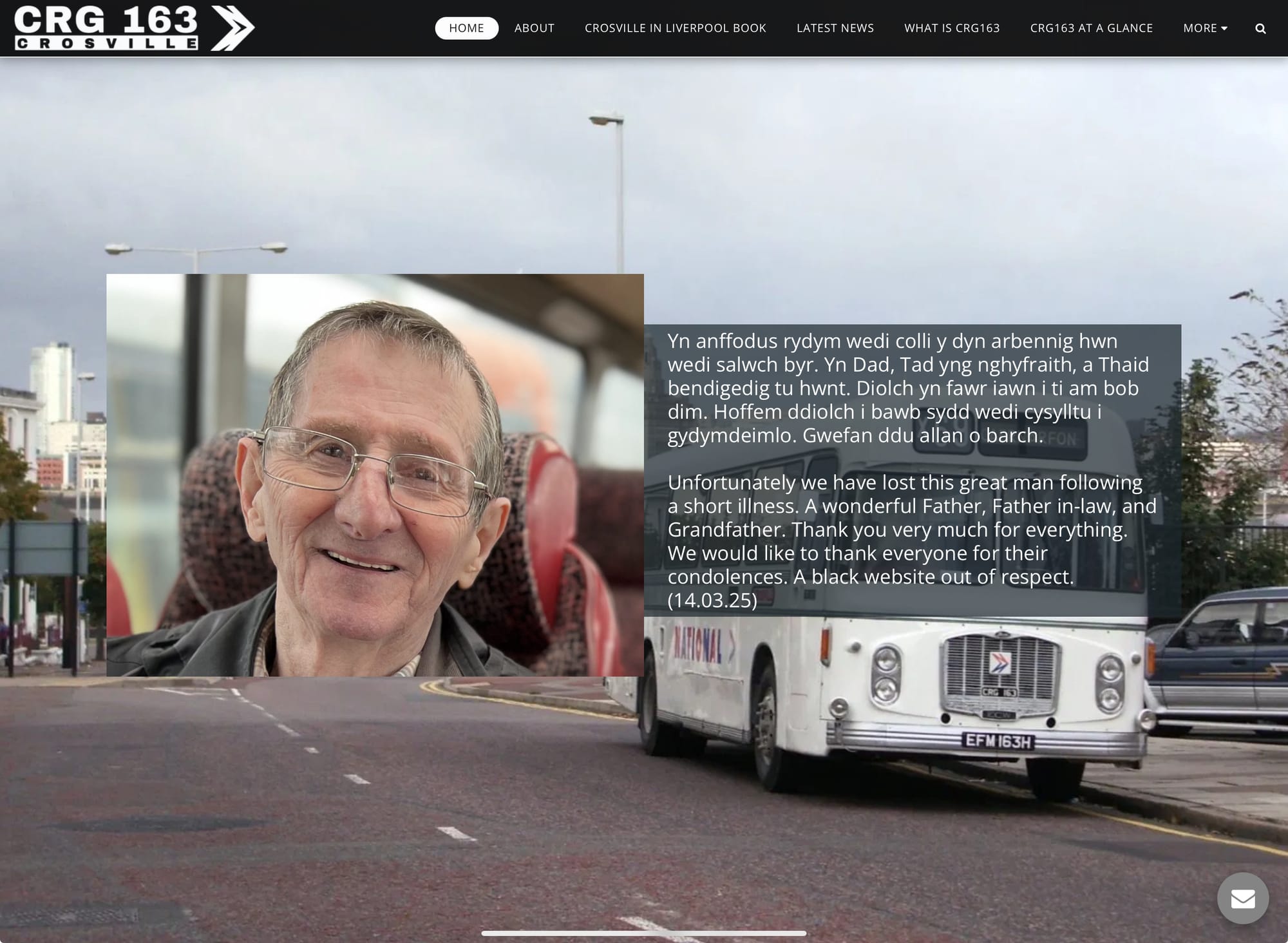
Diolch yn fawr iawn i ti Dad am pob dim i ti wneud i ni fel teulu. Fyddi di byth o’n meddyliau na’n calonau.
Thank you very much Dad for everything you have done for us as a family. You will never be from our thoughts or hearts.
Latest News
Follow up-to-date news about CRG163’s on-going journey here and those connected to the vehicle. Developments are listed in date order with the most recent news at the top of this page.
55 years ago - CRG163 enters operational service.
55 years ago to today, on the 8th of March 1970, CRG163 leaves Crosville’s Sealand Road Works (SRW) following its initial registarion on the 6th of March to its Liverpool Edge Lane depot to start its operational life on the prestigious Liverpool to London services. (08.03.25)
Happy 55 birthday CRG163!!
CRG163 was first registered on 6 March 1970. Today on 6 March 2025 CRG163 is 55 years old. Happy birthday. 🎉🎉🎂🎂 (06.03.25)
Nadolig Llawen / Merry Christmas
Dymunwn y gorau i chi oll ar gyfer yr Wŷl. / Sending nest wishes of the Season to all. (25.12.24)
Rhag i ni anghofio / Lest we forget
So very important we remember and not forget. (09.11.24)
Blwyddyn Newydd Dda / Happy New Year
Blwyddyn newydd dda i chi gyd, a diolch am ddilyn CRG163 drwy 2023! 🥳 Happy new year to you all and my grateful thanks for following all things CRG163 during 2023! 🥳
Nadolig Llawen / Merry Christmas!
Nadolig Llawen i chi gyd! 🎄☃️ Merry Christmas everyone! 🎄☃️
What is CRG163
CRG163 is a 47 seat, ECW bodied Series 2, Mark 1,Bristol RELH6G coach. The vehicle was first registered by Crosville Motor Services on 6 March, 1970 and withdrawn from service on 13 April 1984 before entering preservation.
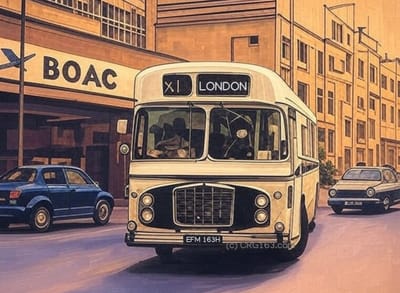
CRG163 is a preserved historic 47 seat coach, vehicle registration EFM 163H, which was originally registered on the 6th of March 1970 by the Crosville Motor Services Limited bus and coach company.
The Crosville Motor Services Limited bus company had It’s headquarters in Chester, operating bus services from it’s bus depots across Cheshire, Merseyside North and Mid Wales. Crosville operated local registered bus services, coach trips as well as long distance express coach services to London and other major UK destinations.
CRG163 consists of the superb Bristol RELH chassis and is fitted with a Series 2, Mark 1, Eastern Coach Works (ECW) coach body. RELH stands for R = Rear; E = Engine; L = Long; H - High. The vehicle is fitted with the impressive Gardner 6HLX 10.45 litre engine.
Vehicles entering the Crosville fleet would be allocated an alpha numeric fleet number. For further details about Crosville’s fleet allocation system click on the following link which takes you to the appropriate page on this website: Crosville Fleet Numbering.
From Crosville’s fleet numbering system, vehicle EFM163H was allocated the alpha numeric fleet number CRG163, standing for C = Coach; R = Bristol RE; G = Gardner engine. The 163 numeric element of the fleet number was from the vehicle’s actual registration number. This wasn’t always the case with Crosville.
Initially CRG163’s fleet number would be displayed on the vehicle by embossed metal plates situated on the vehicle’s front grill; above the front nearside wheel; under the driver’s cab window and on the boot. A smaller plaque would also be displayed on the vehicle’s internal destination door above the windscreen. All Crosville vehicles would be treated as such until metal plates were replaced in the late 1970’s by grey stickers. When restored between 2002 and 2004 new metal fleet plates were produced for CRG163 in order to restore her back to coach status as would have been the case back in the day with Crosville.

CRG163 history summary
In essence CRG163’s 50 year old existence can be summed up as follows:
- 1970 - new to Crosville Motor Services Limited - registered 6th March 1970
- 1970 to 1979 - operating main line coach work, vehicle fleet classification with Crosville as CRG163 based at the company’s Edge Lane, Liverpool depot
- 1979 to 1984 - August 1979 the vehicle is downgraded to dual purpose status by Crosville and would then operate on local bus and coach work with the company. The vehicle’s fleet number is designated to ERG163 with new fleet stickers applied. The alpha code being replaced from ‘C‘ to ‘E‘ to represent the vehicle‘s new dual purpose status. It would then be based predominantly at the company’s Amlwch depot, Isle of Anglesey, North West Wales
- 1984 - 13 April 1984 the vehicle is withdrawn from active service by Crosville
- 1984 to 2002 - vehicle enters bus preservation with Gordon Bate
- 2002 to present - vehicle purchased by Richard Lloyd Jones for further restoration and preservation
CRG163 history timeline with further details

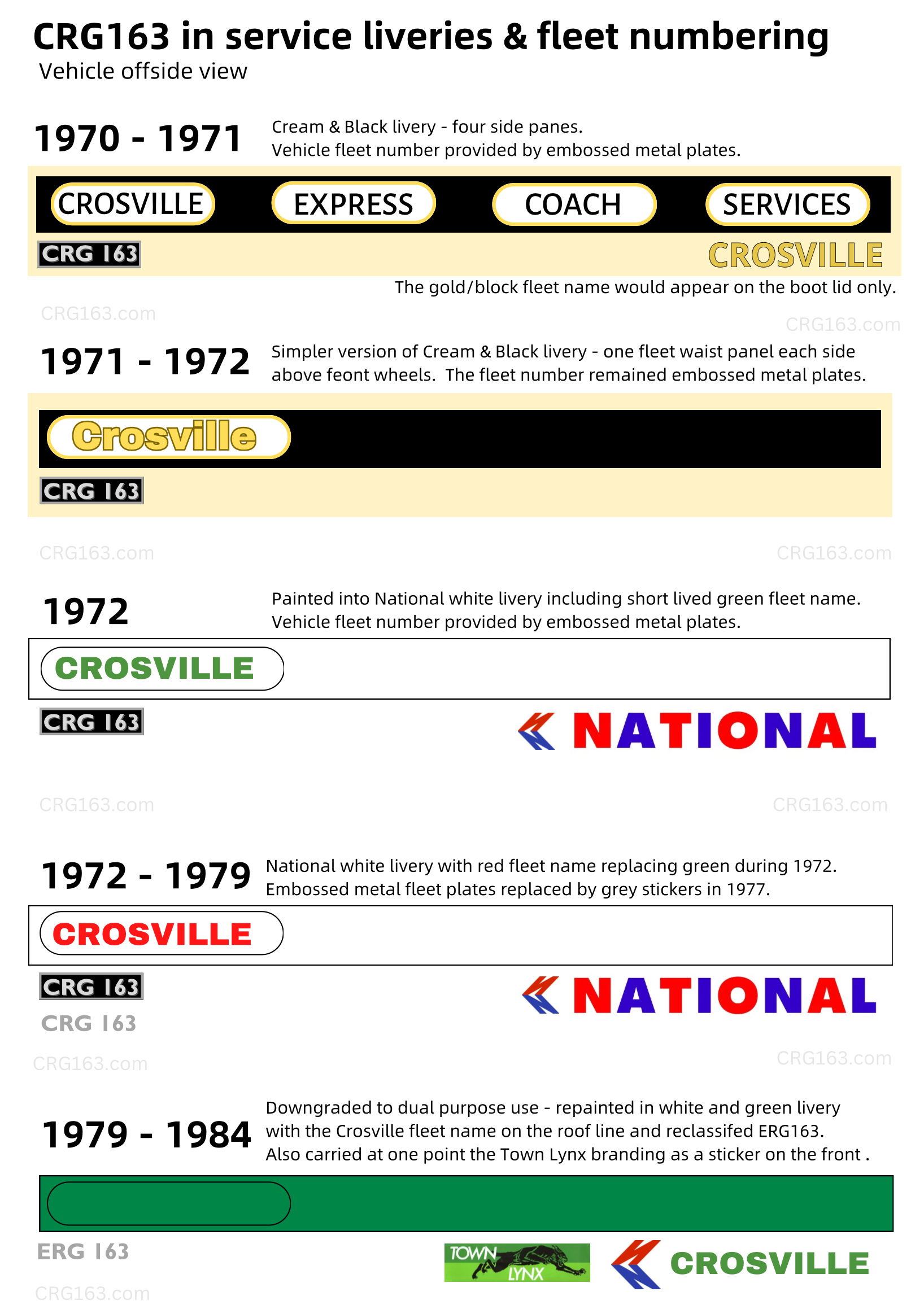
50 year anniversary
On 06 March, 2020 CRG163 celebrated its 50 year anniversary since the date of its first registration of 06 March 1970. It was therefore a special year for CRG163 and very apt as we enter the next chapter. Unfortunately any restoration progress or celebrations were hindered by the pandemic emergency.

Contact details
If you have any photos or related information about CRG163 or any information on the parts presently required then please e-mail me, Richard Jones at post@crg163.com . Many thanks in advance.
Please note
There are some photos on this website where copyright is unknown. If these photos are yours then please let me know by e-mailing post@crg163.com so that they can either be removed immediately or copyrighted to your name accordingly. Thank you.
All photographs have been watermarked on this website and should not be reproduced elsewhere without prior consent. Unfortunately some private photos previously shared on line have been copied without permission and have subsequently appeared for sale by third parties on e-bay.
You can also subscribe to this website by entering your e-mail address into the white box below, bottom right and click the subscription button. ⬇️

CRG163 at a glance
This provides an overview of CRG163.
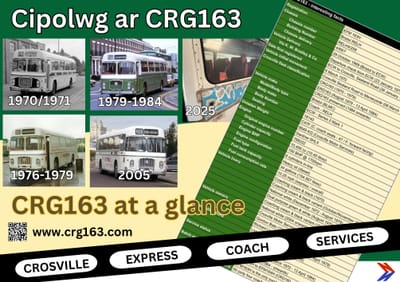
CRG163 was the fleet recognition reference given to ECW Bristol RELH6G coach, registration number EFM163H by its original owner Crosville Motor Services. Crosville had a large fleet of vehicles and needed quickly to identify a specific vehicle, hence their development of the alpha numeric fleet recognition system. More information about this is available on this website by clicking HERE.
CRG163 was first registered by Crosville on 06 March, 1970, entering service at the company’s Liverpool Edge Lane depot on 08 March 1970. The vehicle would be operated by the company in service until its withdrawal in April 1984.
Here are quick and interesting facts on the history of CRG163.
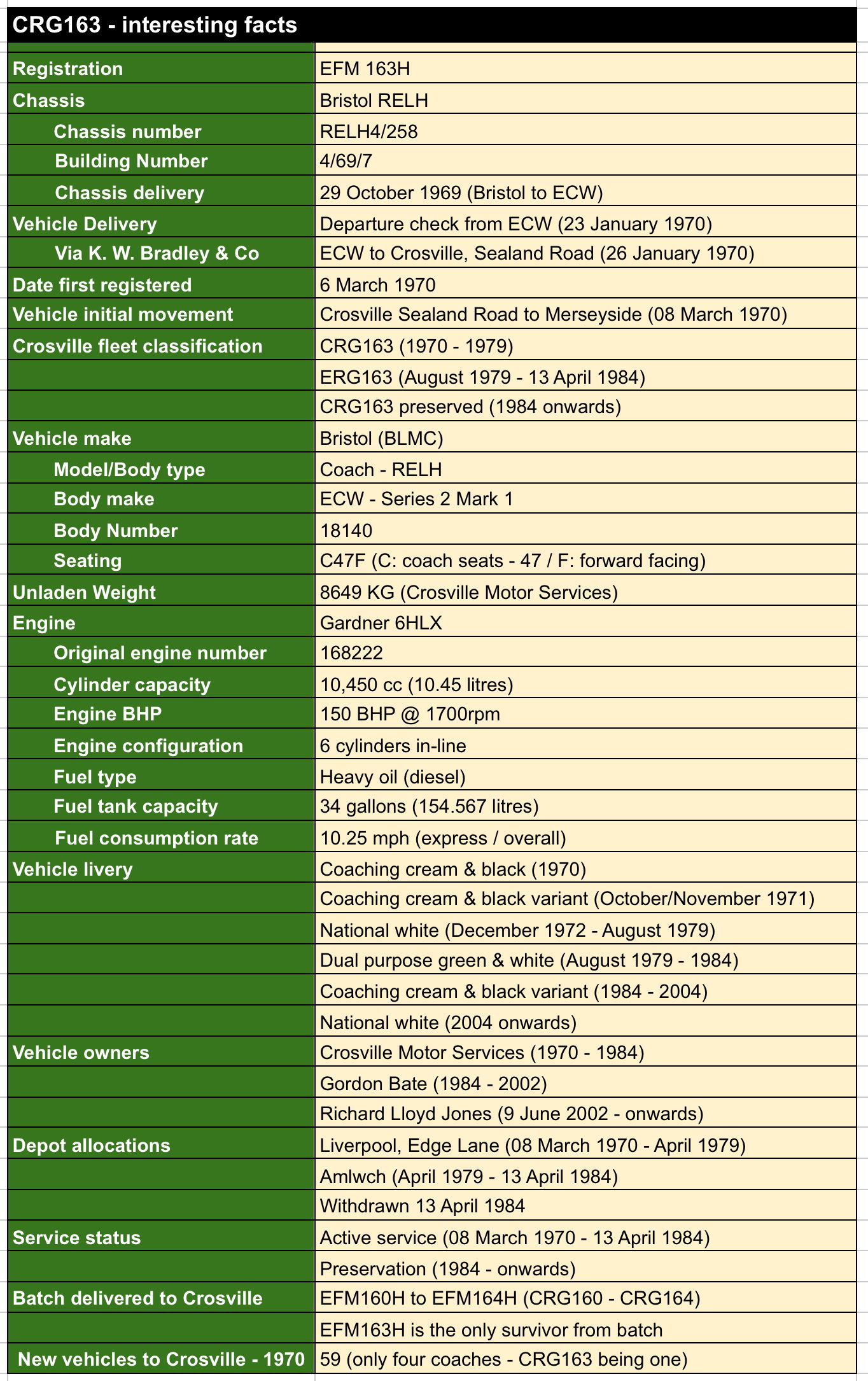
During its operational life with Crosville the coach would be based from the company’s Edge Lane depot in Liverpool, Merseyside between 1970 and 1979, before moving to Amlwch on the Isle of Anglesey and Bangor between 1979 and 1984. At Liverpool Edge Lane depot it would operate long distance prestigious coach services to London across the UK, including those that once operated under the ‘NATIONAL’ coach brand of the time between 1973 and 1979.
 The four liveries carried by CRG163 during its operational days between 1970 and 1984.
The four liveries carried by CRG163 during its operational days between 1970 and 1984.At Amlwch it would eventually be downgraded in 1979 to a semi coach for dual purpose use on local bus services and express coach services and repainted green and white. It would operate local bus services during the week and the longer distance X10 limited stop service under the company’s Town Lynx network brand on Saturdays between Cemaes Bay and Liverpool. By this time the vehicle’s fleet reference was reclassified to ERG163, reflecting it’s now dual purpose use.
CRG163 would be driven by a number of drivers during its operational life including Jack Cowap, George Warren, John Embleton, Richard Lewis, Dewi Roberts, Robert (Bob) ‘Moelfre’ Roberts to name only a few.
Richard Lewis recalls ERG163 to be a very nice vehicle to drive whilst based at Crosville’s Amlwch depot and warm due to its Webasto heating system. He also commented that everyone wanted to drive ERG163.
A more in-depth view of CRG163’s ‘in service’ history is available on this website by clicking HERE.
Preservation (Gordon Bate) : 1984 - 2002
Following ERG163’s withdrawal by Crosville in 1984 it was purchased by Gordon Bate who lived in the Manchester area with the view to preserve the vehicle.
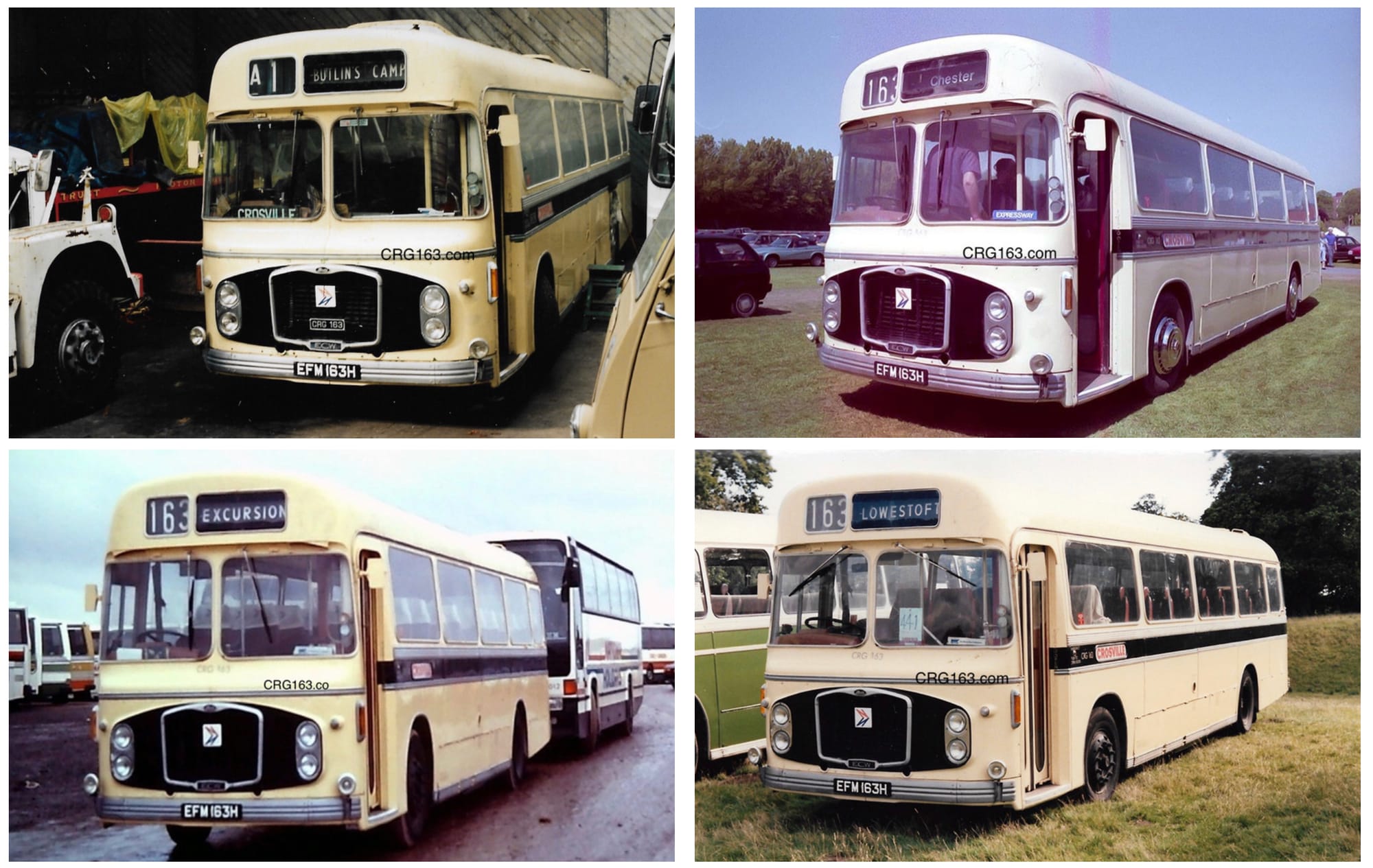 Photographs of CRG163 in preservation with Gordon Bate between 1984 and 2002.
Photographs of CRG163 in preservation with Gordon Bate between 1984 and 2002.Gordon Bate also purchased other similar Crosville vehicles on their withdrawal by the company. By 2002 Gordon Bate had fallen on harder times and was unable to continue the preservation of CRG163 which had ended up neglected on a farm in the Manchester area.
Preservation (Richard Lloyd Jones) : 2002 to present
On the 9th of June 2002, CRG163 was purchased by Richard Lloyd Jones and moved to North West Wales for active restoration and further preservation.
 CRG163 as found on the farm during 2002; Gordon Bate top right; our trip home to North West Wales bottom left and having arrived home bottom right.
CRG163 as found on the farm during 2002; Gordon Bate top right; our trip home to North West Wales bottom left and having arrived home bottom right.It took two years to undertake the work required around the vehicle’s restoration which included sourcing new hubs (wheels) from the Scotch Corner; new tyres; new air ride suspension air bags; mechanical work throughout; all round new window and destination rubber gaskets; re-coating of steering wheel; rebuilt side lockers; internal repaint throughout; sanding down of body as preparation for painting; listing only some of the work undertaken.
 The restoration work commences in 2002 including the rebuilding of lockers; interior painting; sourcing new hubs (wheels); new window rubbers, destination boxes and side fleet panels; rubbing down of exterior body; sourcing of new air bags and fitting.
The restoration work commences in 2002 including the rebuilding of lockers; interior painting; sourcing new hubs (wheels); new window rubbers, destination boxes and side fleet panels; rubbing down of exterior body; sourcing of new air bags and fitting.The decision was taken to repaint CRG163 into its National white livery carried between 1972 and 1979. Whilst recognising very much the beauty of the cream and black coaching livery it was decided that CRG163 would represent another era of such majestic vehicles. Whilst the dual purpose green and white livery is something remembered this would only denote a downgraded CRG163 to ERG163. For all these reasons the National white livery was chosen.
 In for re-painting which was done professionally. New vinyls produced to specific graphic designs used in 1972 including new Crosville panels created. New embossed metal fleet plates produced to original specification. My late Mum can be seen bottom right.
In for re-painting which was done professionally. New vinyls produced to specific graphic designs used in 1972 including new Crosville panels created. New embossed metal fleet plates produced to original specification. My late Mum can be seen bottom right.On completion of the restoration work, CRG163 was first unveiled at the Llandudno Extravaganza in 2004 and became a star on the bus show preservation circuit across North Wales, Cheshire, Merseyside & Shropshire. In October of the same year CRG163 took part in the Wirral Bus & Tram Show which included an impromptu trip through the Mersey Tunnel to Liverpool Lime Steet. In itself this was returning CRG163 back to its initial home of Liverpool having operated there from Crosville’s Edge Lane depot between 1970 and 1979, and our way of paying respect to the Crosville staff of Liverpool depot.
CRG163 also took part in the Crosville 100 road run celebrations from Rhyl to Llandudno. A video of this event has been captured on You Tube. Please click HERE to see this.
 CRG163 is officially unveiled in the National livery and attends a number of events which included returning home to Liverpool.
CRG163 is officially unveiled in the National livery and attends a number of events which included returning home to Liverpool. The vehicle also appeared on the front page of the Bus & Coach Preservation Magazine in July 2004 (Volume 7, Number 2) with a five page article within the magazine.
 CRG163 hits the front cover of the Bus & Coach Preservation Magazine in July 2004 with a five page spread inside.
CRG163 hits the front cover of the Bus & Coach Preservation Magazine in July 2004 with a five page spread inside.The vehicle was also subject to the first EFE 1:76 bus model of this vehicle type (Bristol RELH, ECW, MK1 coach) launched in September 2006. The model’s appearance was based as in preservation from 2004 onwards as the window rubber gaskets were black with X10 Bangor shown on the model’s destination boxes. When being restored between 2002 and 2004 original cream window rubber gaskets were not available hence black replacements ordered and installed.
More information about CRG163’s preservation beyond Crosville can be found on this website by clicking HERE.
 EFE 32302 model launched in September 2006 based upon CRG163 in preservation from 2004 onwards.
EFE 32302 model launched in September 2006 based upon CRG163 in preservation from 2004 onwards.More details about CRG163 in EFE model form can be found on this website by clicking HERE.
The most important aspect of all - the human connection
Striving for the history of CRG163 also involves striving for the human connection, i.e. people who were associated with CRG163 / ERG163 when in service with Crosville.
During 2004 CRG163 was reunited with Jack Cowap who was 91 years old by then, when CRG163 made a surprise appearance on a Crosville Enthusiasts Club 1967 outing to North Wales. Jack Cowap once drove CRG163 in the 1970’s on the prestigious Liverpool to London service. He is captured behind the wheel once again from the top left photograph below.
Bob ‘Moelfre’ Roberts was also reunited with CRG163 on the same day who came with me for a ride out to Conwy. Bob drove CRG163 as ERG163 from Amlwch depot. It is understood that ERG163 was Bob’s vehicle which he would drive on the X10 Cemaes Bay to Liverpool service on Saturdays. This service was also driven by Richard Lewis, Dewi Roberts and others. On this very day, Bob drove CRG163 once again, many years after retirement with total skill and care around the Cibyn Industrial Estate in Caernarfon. It was such a magic moment without doubt captured through the photograph bottom left.
On a more poignant moment, John (Llanrug) Wyn Griffiths (pictured below right) also had the opportunity to drive preserved CRG163 around the same Cibyn Industrial Estate in Caernarfon. We arranged a day out with John, family, close friends and CRG163 one Sunday in early January 2009 to recreate some of the Crosville routes operated from Caernarfon depot back in the day which John would have driven as a Crosville driver. John was a friend to so many and distinguished driver from Crosville’s Caernarfon depot having driven local and long distance National Express routes across the UK. Unfortunately by now John was unwell and our day out with CRG163 was an absolute tonic. Unfortunately John passed away two weeks later from when the photo of him was taken raising his thumb out of CRG163’s cab window. This photo was later printed and framed and given to John’s wife in his memory and a positive memory of our fantastic day together.
 The valuable human connection with CRG163. Jack Cowap pictured top left; Bob ‘Moelfre’ Roberts and myself in front of preserved CRG163 at Bangor; Bob ‘Moelfre’ Roberts behind the wheel of CRG163 bottom left and John ‘Llanrug’ Wyn Griffiths bottom right only a few weeks before his sad passing.
The valuable human connection with CRG163. Jack Cowap pictured top left; Bob ‘Moelfre’ Roberts and myself in front of preserved CRG163 at Bangor; Bob ‘Moelfre’ Roberts behind the wheel of CRG163 bottom left and John ‘Llanrug’ Wyn Griffiths bottom right only a few weeks before his sad passing.Not only do we strive to restore and preserve CRG163, but equally we strive to find people who have been connected with the vehicle in some way over the years. This includes descendants of family members who have been connected with CRG163 but who are sadly no longer with us. We continue to strive to find such important connections to the vehicle. If you drove CRG/ERG163 back in the day or have had a family member who did then please do get in touch via e-mail to post@crg163.com.
Crosville Retired Salaried Staff Outing - 2007
In 2007 I had the privilege of providing and driving CRG163 on the Crosville Retired Salaried Staff (CRSSA) summer outing. The CRSSA came into existence following a suggestion at a Crosville staff meeting, held at Crane Wharf, Chester, the company’s head office on the 2nd of December 1965.
The CRSSA is a group that was formed back in 1964 (check) comprising of Crosville senior management. The group’s activities would comprise of a summer outing to a place of interest and Christmas dinner at Chester. The group would also meet at other times of the year to catch up and socialise.
Whilst recognising that the Crosville name has disappeared from our streets sadly for nearly 30 years by now, the group continue to meet in the same way. Generally group membership eligibility is based on having (1) worked for Crosville/Crosville Wales; and (2) having reached management status within the bus industry. I have been a member of the group since approximately 2005.
In 2007 the summer outing involved a trip on the Llangollen Canal and the Llangollen Heritage Railway. Pick ups were made from Llandudno Junction across the North Wales coast to Chester before a drive to Trevor where everyone joined the Llangollen Canal for a trip across the Poncysyllte Aqueduct by canal boat . Following a trip on the canal CRG163 transported all passengers to Carrog Railway Station for a trip on the railway to Llangollen with CRG163 returning by road. A meal then followed at the Pheasant Hotel before returning to North West Wales via Chester and the North Wales Coast.
On the day my passengers were top flight Crosville senior management from back in the day, including Clive Myers; Ron Holding (Crosville chief engineer); George Garston; Glyn Jones; Pat Reeson; Graham Turner; Mike Grant; Paul Hill, David Pool and many others. What was also really nice was the fact that Dianne Lavinder was also with us, who’s name is on CRG163’s original and official Crosville paperwork and subsequent movements within the company.
It was a privilege indeed to be amongst these people on the day and otherwise.

 CRG163 used for the CRSSA summer outing in 2007, carrying highly respected top flight Crosville management from back in the day. It was a privilege indeed to be involved.
CRG163 used for the CRSSA summer outing in 2007, carrying highly respected top flight Crosville management from back in the day. It was a privilege indeed to be involved.Returning home to Amlwch - 2006
During 2006 CRG163 returned to its former home of Amlwch where it was based from 1979 to 1984 out of respect for the staff that once worked there. By now the former site of Amlwch depot was occupied by a supermarket which was so often the case of former Crosville depot sites when sold following deregulation of the bus industry outside London from 26 October 1986 and subsequent privatisation.
Nonetheless CRG163 had returned home and displayed ‘X10’ on its destination display out of respect for Crosville’s Amlwch depot and staff. CRG163 as ERG163 once operated the X10 service from Cemaes Bay to Liverpool on Saturdays in the early 1980’s when based at Crosville’s Amlwch depot.
Once again CRG163 can also be seen at Menai Bridge, a location it so often served as ERG163 when based at Crosville’s Amlwch depot.
The photographs below are dedicated out of respect for the staff of Crosville’s Amlwch depot which included Bob ‘Moelfre’ Roberts; Dewi Roberts; Richard Lewis and others; with the evening photos dedicated to our dear friend Dave Wilder.
Our intention is to return CRG163 again to Amlwch when our latest restoration has been completed out of respect for Bob ‘Moelfre’ Roberts; Richard Lewis; Dewi Roberts and all other staff that once worked at the depot.
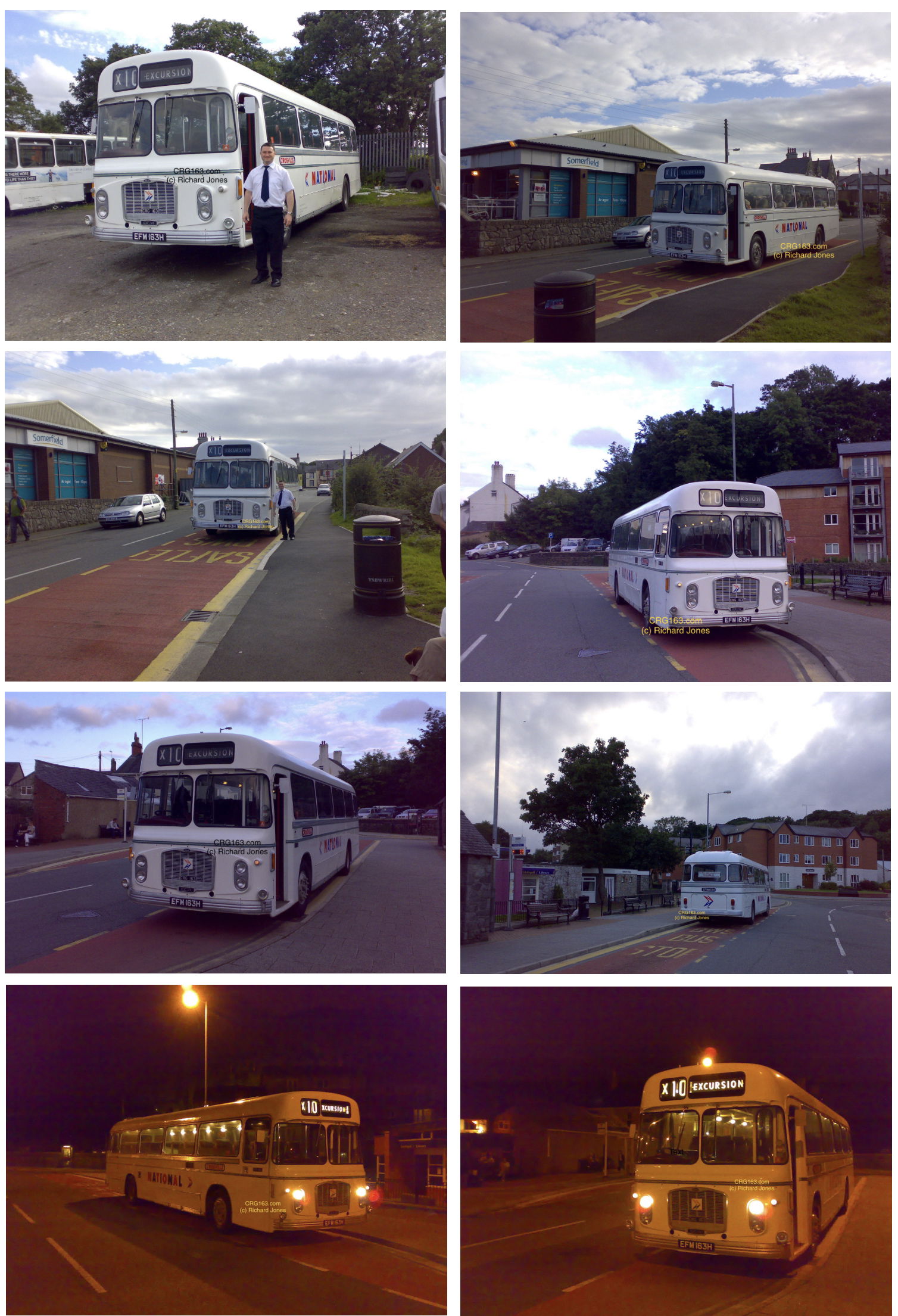 Preserved CRG163 returning home to Amlwch, 22 years after it’s operational days at the town’s Crosville depot, now occupied by a supermarket. CRG163 proudly displayed ‘X10’ on it’s destination out of respect for the staff at Amlwch depot.
Preserved CRG163 returning home to Amlwch, 22 years after it’s operational days at the town’s Crosville depot, now occupied by a supermarket. CRG163 proudly displayed ‘X10’ on it’s destination out of respect for the staff at Amlwch depot.Further restoration - 2020 onwards
However due to the throws of life the vehicle was mothballed from 2009 until 2019, compounded by parking and access issues (which can be problematic to such large preserved vehicles) until further restoration work could be undertaken.
Further work was planned to commence at the beginning of 2020 however Covid halted any possible progress.
Beyond Covid restoration work has again commenced but now involving two very special people to me, my two young sons who are 12 and 14 years of age (as at April 2023). CRG163 will be passed to them one day in the future.
To date new trafficators (side indicators); new front fog lights have been sourced with the trafficators fitted; all six wheels have been sandblasted, treated and painted; new tyres have been purchased and fitted all round; nearside lockers have been restored with new strengthened wooden frames to each locker and along the vehicle itself; replacement of some of the air pipes; removal and professional testing of the vehicle’s alternator; continued road testing; a new electrical regulator; and the radiator has been removed and rebuilt as new.
 Further restoration of CRG163 commences with further significant investment.
Further restoration of CRG163 commences with further significant investment.To keep up with CRG163 news and developments you can click HERE. This link will take you to our ‘News Page’ on this website,
A new website for CRG163
A new purpose built website for the vehicle was launched during 2021 which charts the vehicle’s 50 year odd history from operational to preservation as well as restoration developments, the website address being www.crg163.com. The website was initially commissioned and launched to source vehicle parts but has quickly grown.
 CRG163’s purpose built website is launched linking the old with the new.
CRG163’s purpose built website is launched linking the old with the new.To go to our website ‘Home’ screen please click HERE.
Further continued restoration
There are also a number of articles on the website that have been written by those that have either travelled on CRG163 during the vehicle's operational days or Crosville management involved in the vehicle’s operational allocation.
 Further restoration continues again with significant investment.
Further restoration continues again with significant investment.Further restoration of the vehicle will include restoration of the offside lockers; fitting of the new front fog lights; internal painting; assessment of water and air pipes replacing those that will need replacing; general assessment and maintenance; and then exterior appearance -sanding and painting.
 Photographs of CRG163 and our restoration journey from the beginning of April 2023 as the restoration continues. Fleet plates are proudly carried.
Photographs of CRG163 and our restoration journey from the beginning of April 2023 as the restoration continues. Fleet plates are proudly carried.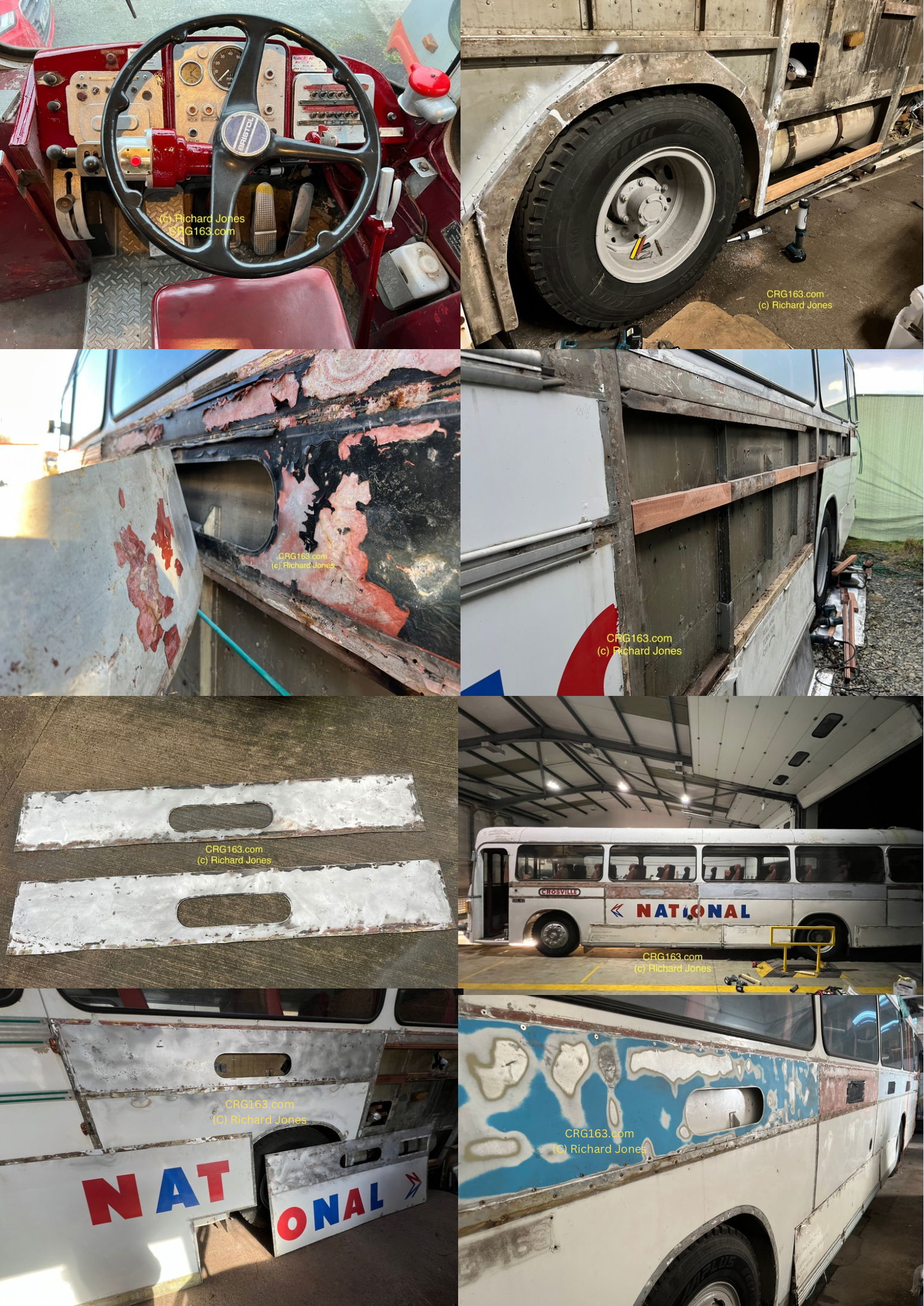 Photographs from CRG163’a major bodywork renovation in 2025. A significant find changes the course of the vehicle’s future appearance!
Photographs from CRG163’a major bodywork renovation in 2025. A significant find changes the course of the vehicle’s future appearance!To keep up with CRG163 news and developments you can click HERE. This link will take you to our ‘Latest News’ page on this website.
To go to the Home page of CRG163’s website click HERE.
Contact details
If you have any photos or related information about CRG163 or any information on the parts presently required then please e-mail us at post@crg163.com . Many thanks in advance.
Please note
There are some photos on this website where copyright is unknown. If these photos are yours then please let me know by e-mailing post@crg163.com so that they can either be removed immediately or copyrighted to your name accordingly. Thank you.
All photographs have been watermarked on this website and should not be reproduced elsewhere without prior consent. Unfortunately some private photos previously shared on line have been copied without permission and have subsequently appeared for sale by third parties on e-bay.
You can also subscribe to this website by entering your e-mail address into the white box below, bottom right and click the subscription button. ⬇️

CRG163 Service History
Here we chart CRG163’s in service history from 1970 to 1984.
CRG163 was first registered on the 6th of March 1970 and was delivered to Crosville Motor Services in a batch of four coaches; EFM160H to EFM164H. CRG163 (EFM163H) is the last survivor from her batch.
Crosville’s headquarters was in Chester, operating bus services from it’s bus depots across Cheshire, Merseyside north and mid Wales. Crosville operated local registered bus services, coach trips as well as long distance express coach services to London and other major UK destinations.
Even before CRG163 and sister vehicles entered service with the company their entry into the fleet was being communicated to staff through their in-house comoany employee magazine titled ‘Crosville United’ as can be seen from the scans below.
 Crosville United No.73 - January 1970, announcing ‘future’ deliveries including CRG160 - 164.
Crosville United No.73 - January 1970, announcing ‘future’ deliveries including CRG160 - 164. CRG163 and sister vehicles CRG160 to CRG164 announced as new additions to Crosville’s fleet within it’s internal publication to staff - ‘Crosville United’ - number 75, Spring 1970.
CRG163 and sister vehicles CRG160 to CRG164 announced as new additions to Crosville’s fleet within it’s internal publication to staff - ‘Crosville United’ - number 75, Spring 1970.Crosville cream and black coaching livery
When CRG163 entered service with Crosville she commenced operation on the prestigious X61 coach service between Liverpool and London, based at the company’s Liverpool Edge Lane depot. The service reference was adopted as X61 as the route taken was along the M6 and M1 motorways. At this time CRG163 carried the cream and black coaching livery of the time with four side illuminated panels placed along both sides of the vehicle displaying ‘Crosville - Express - Coach Services. Some of the coaches would also display ‘Crosville - Coach - Liverpool - London.
 CRG163 - operating on the X1 service, London bound when new in the coaching cream and black livery.
CRG163 - operating on the X1 service, London bound when new in the coaching cream and black livery. A representation of how the Crosville name would have appeared on the boot lid of CRG163 in the cream and black coaching livery. This style of ‘sans serif’ fleet name was introduced on company vehicles half way through 1966. The short lived larger lower case style was introduced in 1971 with the introduction of the NBC upper case version introduced in 1972, not too dissimilar to the above. For a time all three versions could be seen on Crosville vehicles.
A representation of how the Crosville name would have appeared on the boot lid of CRG163 in the cream and black coaching livery. This style of ‘sans serif’ fleet name was introduced on company vehicles half way through 1966. The short lived larger lower case style was introduced in 1971 with the introduction of the NBC upper case version introduced in 1972, not too dissimilar to the above. For a time all three versions could be seen on Crosville vehicles.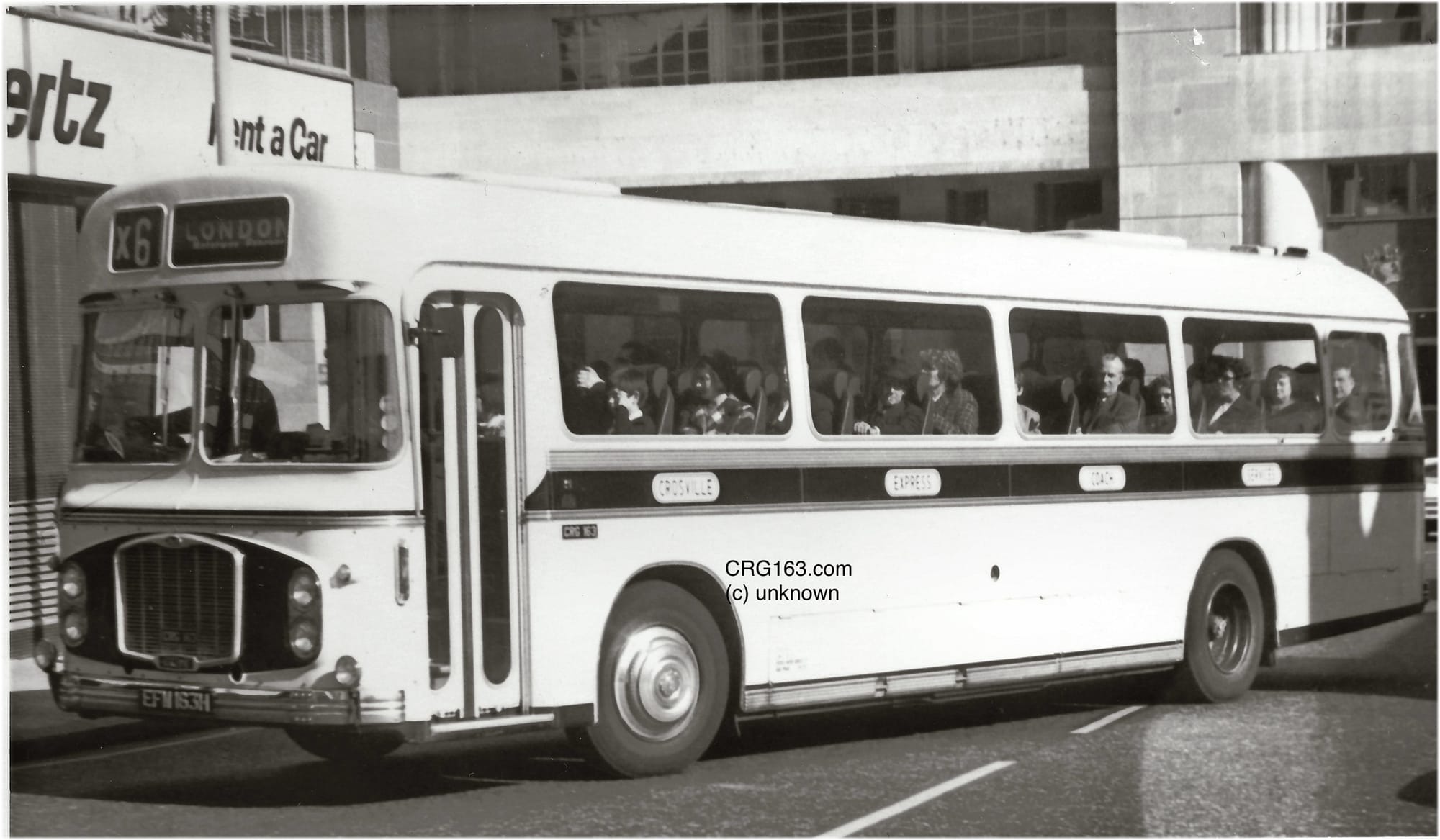 CRG163 arriving Victoria Coach Station, London, sometime between 6 March 1970 when new and October/November 1971.
CRG163 arriving Victoria Coach Station, London, sometime between 6 March 1970 when new and October/November 1971.These coaches were truly magnificent, luxury coaches of their day and were also used by Crosville on it’s front line coaching and private hire work.
 A typical Crosville poster from the day advertising it’s luxurious coaches with it’s CRG class of vehicle used in the poster.
A typical Crosville poster from the day advertising it’s luxurious coaches with it’s CRG class of vehicle used in the poster.These were truly luxury coaches of the time. The passenger ride quality on such fine vehicles was incredible. Marrying the air ride suspension through Firestone airbags and the luxurious Chapman seating, notably the Mk155 fixed seat, renowned for their durability and comfort. Whilst the fixed seating was the norm, Chapman also provided the Mk166 recliners.
Chapman coach seats were so advanced for their time that they were even featured in the science fiction film "2001: A Space Odyssey" as spaceship seats. In the 1970s, Chapman developed the Mk188 'Chameleon' range of reclining seats, designed for the National Bus contract, featuring easily changeable seat covers.
While specific images of these seats are scarce, several preserved Bristol RELH coaches from that era showcase interiors with Chapman seating. These examples provide a glimpse into the seating styles and configurations used in Bristol RELH coaches during the 1960s and 1970s.
CRG163 operated the prestigious Liverpool - London X1 service in a variant of the cream and black livery which consisted of a simpler livery with only one side pane on display above the front wheel either side displaying the lower case ‘Crosville’ fleet name.
Chris Palmer, former Crosville staff recalls according to the usual reference source of the Crosville Enthusiast Club (CEC) 1967, CRG163 was the first CRG to be given the treatment of removing the four side lighting panes each side of the vehicle to be replaced by one longer pane each side above the front wheel arches. This included the application of the simpler cream and black livery as shown in the image below. It was reported in the November 1971 bulletin of the CEC, so would have been modified around October or early November of that year. It was stated that all of the CRGs were to undergo the modifications in due course. The lower case fleetname style was applied to the Seddon buses from new, the first examples being delivered in May 1971.
 CRG163 at Victoria Coach Station, London in the second variant of the cream & black livery circa 1971 - 1972.
CRG163 at Victoria Coach Station, London in the second variant of the cream & black livery circa 1971 - 1972. One of Crosville’s many leaflets promoting the Liverpool to London motorway services
One of Crosville’s many leaflets promoting the Liverpool to London motorway services One of Crosville’s leaflets from 1969 - 1970.
One of Crosville’s leaflets from 1969 - 1970. 01 October 1969 to 31 May 1970 timetable for services X1, X18 and X61. As Mike Lambden comments: ‘The night services tended to be far busier than days. The route was set by the traffic commissioners as coach services were not allowed then to compete directly with trains hence the stop for Birmingham in Erdington rather than the city centre.’
01 October 1969 to 31 May 1970 timetable for services X1, X18 and X61. As Mike Lambden comments: ‘The night services tended to be far busier than days. The route was set by the traffic commissioners as coach services were not allowed then to compete directly with trains hence the stop for Birmingham in Erdington rather than the city centre.’ CRG163 in a variant of the coaching cream and black livery at Crewe Bus Station in 1971. The photo has been kindly provided by Mr John Buchan with thanks.
CRG163 in a variant of the coaching cream and black livery at Crewe Bus Station in 1971. The photo has been kindly provided by Mr John Buchan with thanks. Crosville United, No’ 82 - Autumn 1972 - CRG162.
Crosville United, No’ 82 - Autumn 1972 - CRG162.‘NATIONAL’ coach services - the all white 1970’s livery
In 1972 CRG163 adopted the white livery of the National UK coach network with the brand image of N A T I O N A L displayed on both sides of the vehicle through a mix of red and blue lettering. During this period CRG163 continued to operate main line coach services across the UK.
 The official ‘NATIONAL’ branding used completed with the ‘double N’ logo as carried by CRG163 from 1972 to 1979.
The official ‘NATIONAL’ branding used completed with the ‘double N’ logo as carried by CRG163 from 1972 to 1979.Chris Palmer remembers the corporate livery being unveiled in July 1972 and the major focus was on getting all of the coaches used on National coach services into the white livery as quickly as possible. CRG163 may have been repainted in September of that year or even sooner because things were evolving fairly quickly at first.
 Crosville United No’ 80, Spring 1972.
Crosville United No’ 80, Spring 1972. Photo provided kindly by Mr Mike Street - CRG163 is seen at Cardiff Bus Station about to depart on service X71 to Liverpool on the 29th of December, 1972 having been freshly painted in this livery in the same month. In this image the short lived green fleet name appears above the front wheel arch.
Photo provided kindly by Mr Mike Street - CRG163 is seen at Cardiff Bus Station about to depart on service X71 to Liverpool on the 29th of December, 1972 having been freshly painted in this livery in the same month. In this image the short lived green fleet name appears above the front wheel arch.Chris Palmer confirms from the 1973 CEC reviews that CRG163 is confirmed as being repainted into National white in December 1972, but receiving a 3” green Crosville fleet name above both front wheel arches. It appears that CRG161 and CRG164 were painted the same month but received the red Crosville fleet names. CRG494 was painted in January 1973 but also received the green fleet names. It appears that at the time consistency of fleey name colour application was not consistent. The small underlined fleet names were commonplace until towards the end of 1972 apparently.
Chris Palmer recalls that the first examples of National white coaches in 1972 had small grey lettering for the fleet name with a thick line underneath in the company's "house colour", i.e. green in the case of Crosville. In October of 1972 it was reported that the plan had changed and that 3" letters were to be used in the "house colour". Chris comments that the green fleet name certainly clashed with the red and blue of the National livery, so the idea was quickly dropped in favour of the more harmonious red. What is therefore seen here with CRG163 is a very rare and short-lived stage in the slightly chaotic but rapid evolution of the new white livery. The above and below image of CRG163 is proof that, for a while at least, that this was a serious consideration of the National Bus Company as it was intending to apply to their coaching fleet and that CRG163 was one of the few vehicles it was applied to!
 CRG163 parked at the back of Crosville‘s Edge Lane depot, Liverpool circa 1972 with the short lived green company fleet name above the front wheel arch. Many thanks to Duncan Roberts for supplying the image.
CRG163 parked at the back of Crosville‘s Edge Lane depot, Liverpool circa 1972 with the short lived green company fleet name above the front wheel arch. Many thanks to Duncan Roberts for supplying the image.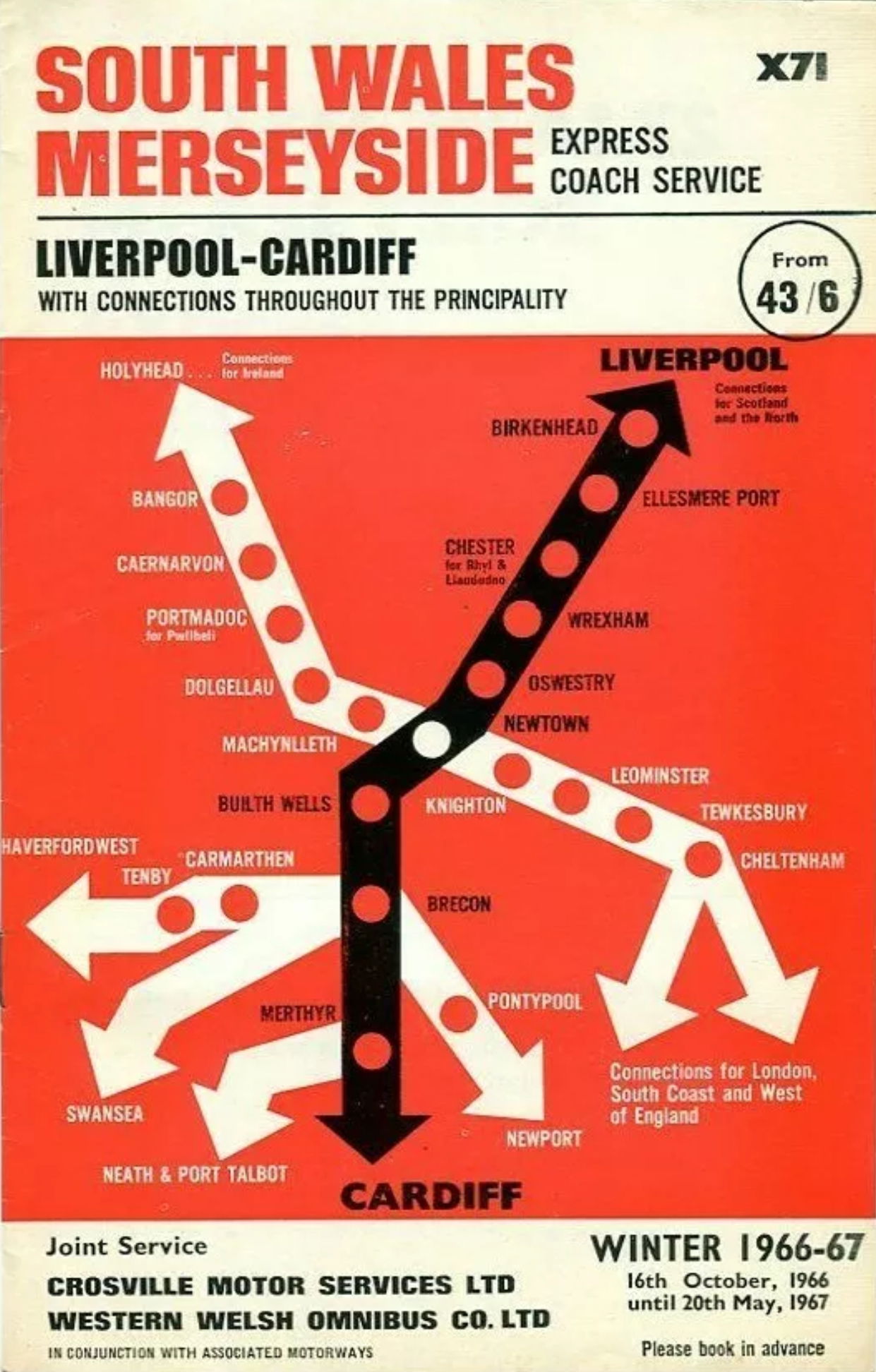
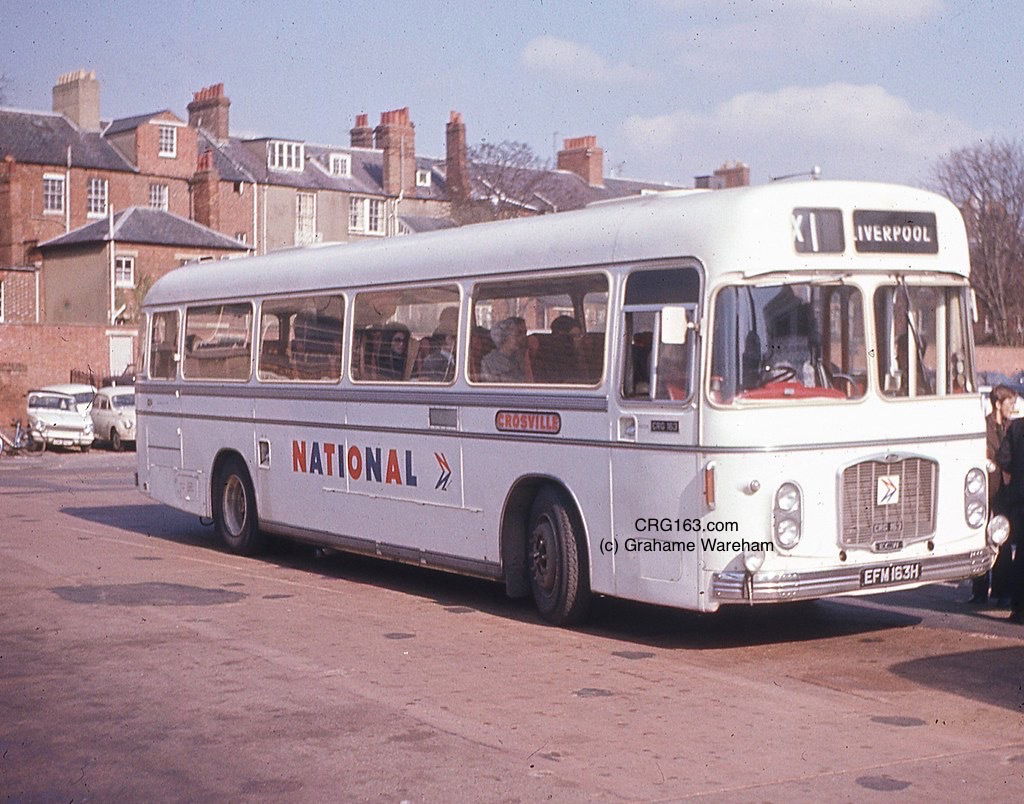 CRG163 at Gloucester Green, Oxford - April 1973.
CRG163 at Gloucester Green, Oxford - April 1973. CRG163 alongside sister vehicle CRG162 at Stratford-Upon-Avon in 1973 on service X1, London bound. With many thanks to Mr John Buchan for the permission to share his photograph on our website.
CRG163 alongside sister vehicle CRG162 at Stratford-Upon-Avon in 1973 on service X1, London bound. With many thanks to Mr John Buchan for the permission to share his photograph on our website. CRG163 at Hyde Park Corner, London operating the X1 service from Liverpool, circa 1974.
CRG163 at Hyde Park Corner, London operating the X1 service from Liverpool, circa 1974. Crosville fleet list dating from 1974. Page includes CRG103 (preserved by Carl Berry); CRG106 (preserved by Steve Graham); CRG111 (preserved by Roger Downs) and CRG163,
Crosville fleet list dating from 1974. Page includes CRG103 (preserved by Carl Berry); CRG106 (preserved by Steve Graham); CRG111 (preserved by Roger Downs) and CRG163,Chris Palmer comments that CRG163 may have had a further repaint in November 1974, being noted at Crosville’s Sealand Road works (SRW) on the 3rd and 17th of that month. Chris recalls that two and a half years was probably about right for repainting a front line coach in white at that time with winter being ideal time to undertake. It appears that on the 26th of September it performed a H9 between Liverpool and Prescot. Also that day CRG526 was on H24 to Chester and 578 on H4 to Rainhill, evidently with some sort of vehicle shortage going on to have these coaches operating these services.
 CRG163 parked at the rear parking area of Crosville’s Liverpool Love Lane depot on 16 March, 1975.
CRG163 parked at the rear parking area of Crosville’s Liverpool Love Lane depot on 16 March, 1975. CRG163 at London Victoria Coach Station - 26 May 1975.
CRG163 at London Victoria Coach Station - 26 May 1975. Photo of CRG163 courtesy of Geoff Smith
Photo of CRG163 courtesy of Geoff Smith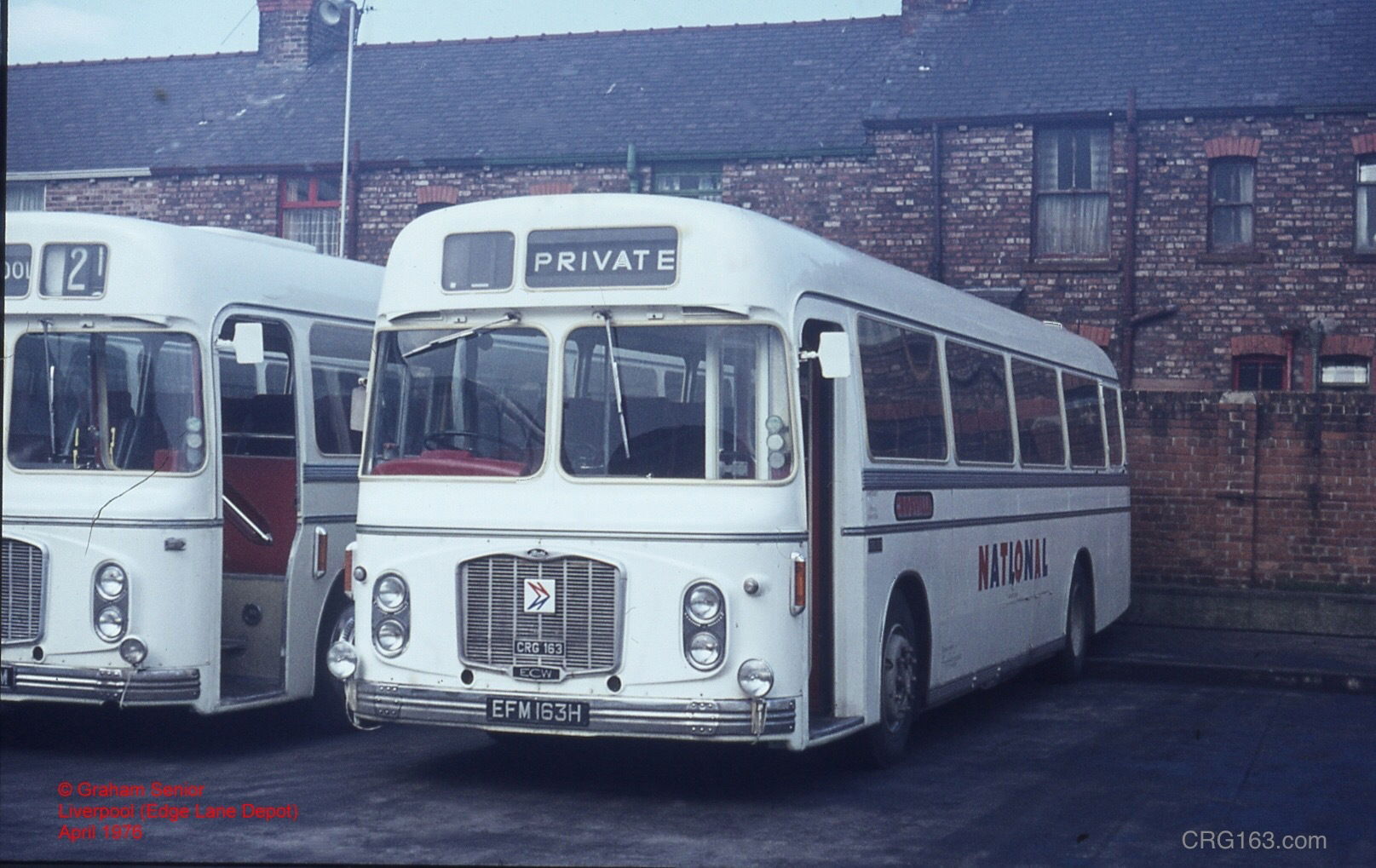 CRG163 at Crosville’s Edge Lane depot, April 1976.
CRG163 at Crosville’s Edge Lane depot, April 1976. CRG163 parked up at Crosville’s Edge Lane depot, Liverpool
CRG163 parked up at Crosville’s Edge Lane depot, Liverpool CRG 163 in parked at Crosville’s Liverpool Edge Lane Depot. The photo was taken and kindly supplied by Don McKeown. Don comments: ‘obviously on the occasion of a CEC visit. The destination shows my local service (I lived in Norden) and was obviously specially posed!’.
CRG 163 in parked at Crosville’s Liverpool Edge Lane Depot. The photo was taken and kindly supplied by Don McKeown. Don comments: ‘obviously on the occasion of a CEC visit. The destination shows my local service (I lived in Norden) and was obviously specially posed!’.Chris Palmer recalls that CRG163 had a repaint again in March 1977 in National white and so would have lost its fleet plates no later than that.
Geoff Smith, also former Crosville staff recalls that Crosville removed fleet plates from coaches around the time of their 2nd repaint into NBC white.
Chris Palmer recalls that there was a tweak to the corporate livery in 1976. DVL292 (Bristol VRT6L double decker) was fitted with fleet plates and had the NBC logo in red and blue on a white square. That batch was the first to carry the logo in that form. Then it was applied to repainted buses from September onwards of the same year, possibly starting some time in August. From the same time, vehicles being repainted in National white had their fleet plates removed and grey transfers applied. Buses were allowed to keep their plates as were coaches in DP (dual purpose) or bus livery but subsequently new buses had fleet number transfers.
it is not known if there was a programme to remove fleet plates from white coaches sooner than the repaint programme allowed.
The image below depicts CRG163 following repaint and devoid of company fleet plates, now substituted by grey transfer stickers.
 CRG163 parked up whilst operating on service 955 to Liverpool. This photo has been kindly provided by Graham Warren having found the photo within his late father’s collection. Graham’s father - George Warren once worked at Crosville’s Liverpool Edge Lane depot and frequently drove CRG163 in service back in the day. Graham comments on the many happy memories he has travelling with his father behind the wheel of CRG163.
CRG163 parked up whilst operating on service 955 to Liverpool. This photo has been kindly provided by Graham Warren having found the photo within his late father’s collection. Graham’s father - George Warren once worked at Crosville’s Liverpool Edge Lane depot and frequently drove CRG163 in service back in the day. Graham comments on the many happy memories he has travelling with his father behind the wheel of CRG163.Chris Palmer recalls that the CEC reports explain that because of an "866 changeover" CRG163 spent every Saturday at Liverpool during summer of 1979 and was used on the weekly Saturday service 955 to Nottingham.
Mike Lambden (Crosville/National Express retired) comments that the old Crosville X6 used to do a changeover on a Friday evening at Bodelwyddan and again on a Sunday evening. That meant that a Liverpool coach was in Amlwch on Saturday and vice versa at Liverpool, with CRG163 forming a part of this operation. Mike continues that the Saturday Nottingham operation would probably have been a duplicate on the Liverpool to Clacton service.
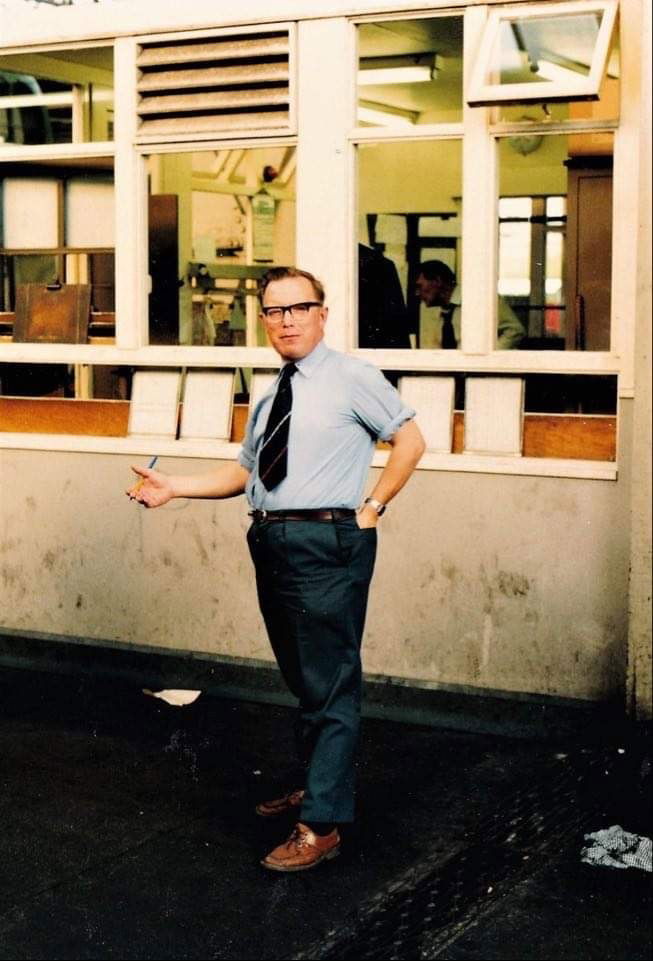 A photo kindly supplied by Graham Warren of his late father George whilst working at Crosville’s Liverpool Edge Lane depot. In memory of Mr George Warren.
A photo kindly supplied by Graham Warren of his late father George whilst working at Crosville’s Liverpool Edge Lane depot. In memory of Mr George Warren.
 CRG163 on service 853, returning home to Liverpool - photo courtesy of Geoff Smith
CRG163 on service 853, returning home to Liverpool - photo courtesy of Geoff Smith CRG163 parked at Llandudno Junction having operated the 865 from Liverpool.
CRG163 parked at Llandudno Junction having operated the 865 from Liverpool.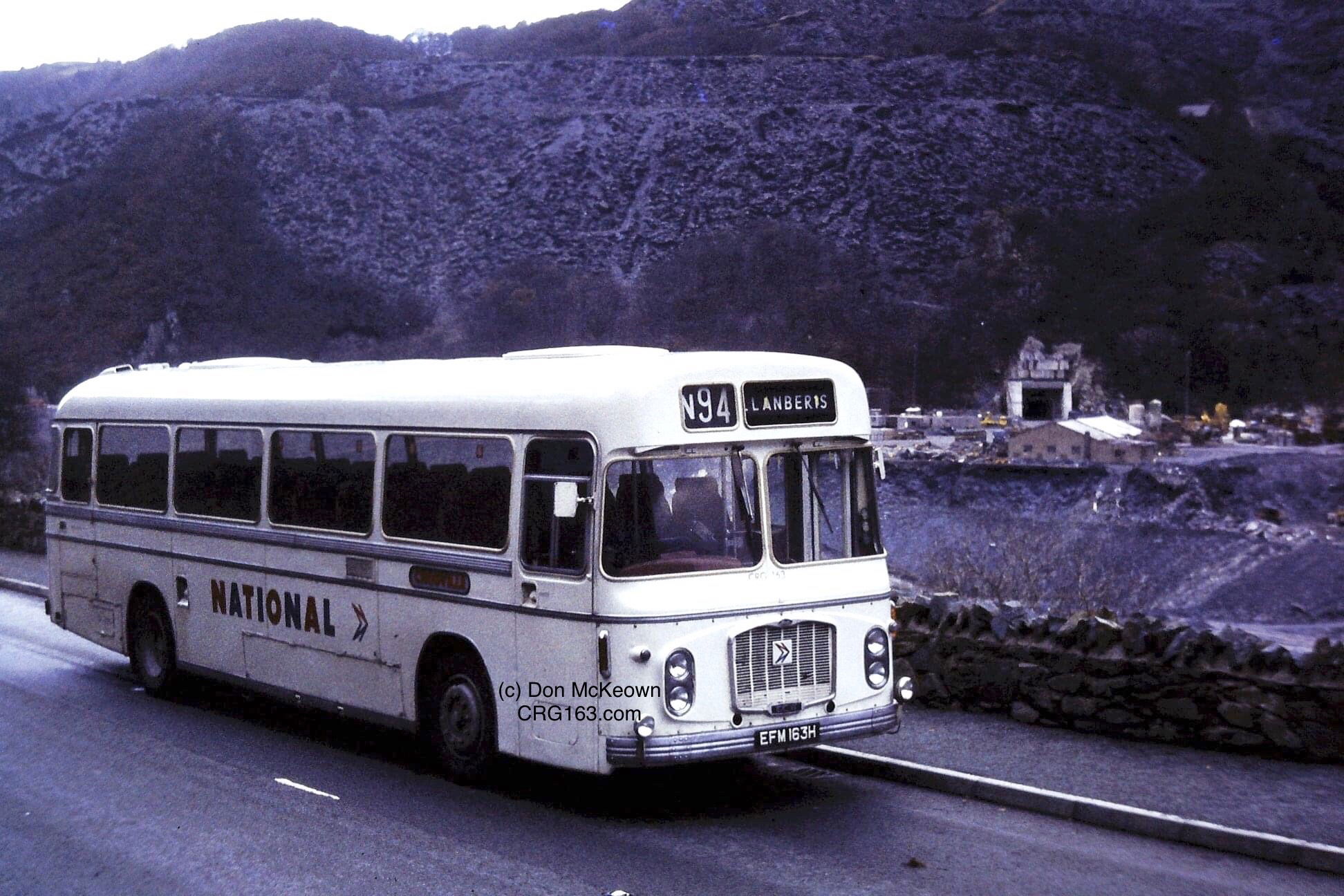 CRG163 is seen here between Nant Peris and Llanberis, operating route N94. Don McKewon comments that CRG163 had operated on this day from Liverpool to Caernarfon and during the vehicle’s down time at Crosville’s Caernarfon depot it was used to do a local service before returning to Liverpool.
CRG163 is seen here between Nant Peris and Llanberis, operating route N94. Don McKewon comments that CRG163 had operated on this day from Liverpool to Caernarfon and during the vehicle’s down time at Crosville’s Caernarfon depot it was used to do a local service before returning to Liverpool. CRG163 returning from Llanberis to Caernarfon before it’s further journey to Liverpool.
CRG163 returning from Llanberis to Caernarfon before it’s further journey to Liverpool.
In April 1979, CRG163 was reallocated to Crosville’s Amlwch depot on the Isle of Anglesey, North West Wales as Chris Palmer recalls from collated information by the Crosville Enthusiasts Club 1967, but with cash trays removed between the 14th and 21 of July 1979. Chris Palmer commented that CRG163 was used on National Express service 866 during the summer of that year and worked a Nottingham service from Liverpool on some Saturdays as part of its weekly diagram. In October it was noted at Liverpool depot parked, suspected as laying over between North Wales express services.
From the company’s official fleet list of June 1979 (extract below) CRG160 and CRG161 had been downgraded to dual purpose status and reclassified as ERG’s, with CRG162, CRG163, and CRG164 retaining the coaching CRG status.
Ralph Rowlands, long time employee of Crosville and once Pwllheli Depot Superintendent (DS) recalls that depot allocation sheets were collated and printed each month by a Mr Charles Williams, within the company’s Engineering Records Department which was based at Crane Wharf.
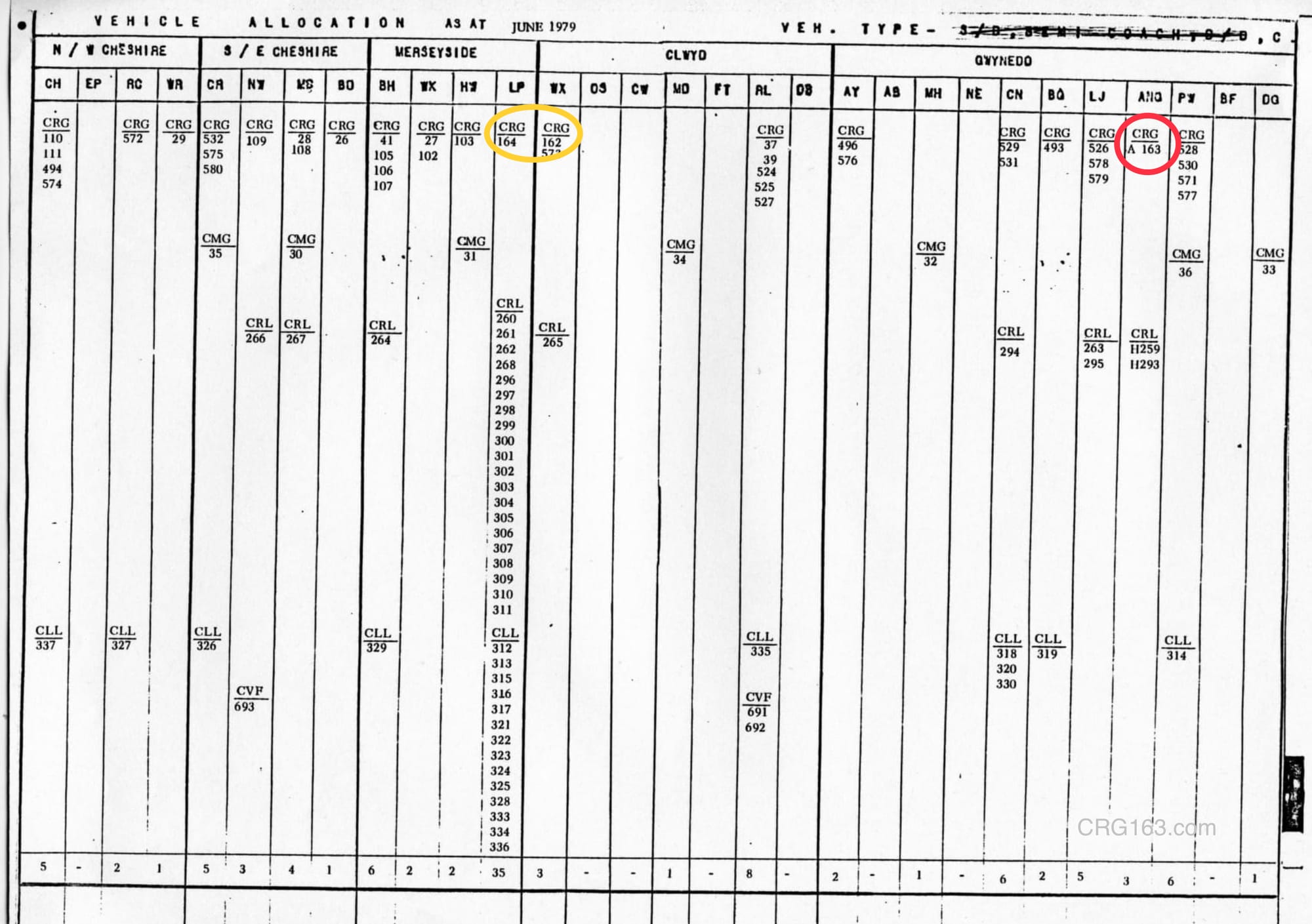 Section of Crosville fleet list - June 1979.
Section of Crosville fleet list - June 1979. Section of Crosville fleet list - June 1979.
Section of Crosville fleet list - June 1979. CRG163 parked on the apron of Crosville’s then depot at Amlwch. This photo was taken by Roger Downs, owner of preserved Crosville CRG111 (AFM111G).
CRG163 parked on the apron of Crosville’s then depot at Amlwch. This photo was taken by Roger Downs, owner of preserved Crosville CRG111 (AFM111G).CRG163 downgraded to ERG163
CRG163 had operated on long distance coach services for the Crosville company across the UK. Chris Palmer recalls that CRG163 was downgraded and reclassified to ERG163 and repainted in December 1979 into the company‘s dual purpose green and white livery. It appears to have been returned to Amlwch as ERG163 and briefly saw use out of Holyhead depot early in 1980 before settling down to a life on route N61 in 1980 from the company’s Amlwch depot.
 CRG163 seen as ERG163 at Crosville’s Sealand Road Works on 22 December 1979 after being downgraded and painted in the company’s dual purpose livery of green and white. Not that the Frankmann’s front indicators are still intact having not been replaced by the Lucas rounded replacement as would occur to other similar vehicles.
CRG163 seen as ERG163 at Crosville’s Sealand Road Works on 22 December 1979 after being downgraded and painted in the company’s dual purpose livery of green and white. Not that the Frankmann’s front indicators are still intact having not been replaced by the Lucas rounded replacement as would occur to other similar vehicles. Crosville Edge Lane depot, Liverpool 1979 fleet list. With thanks to Mr John Lee (Crosville manager) and Graham Warren also confirming the downgrading of CRG163 to ERG (dual purpose) status in 1979 to be reallocated to Anglesey (AN)
Crosville Edge Lane depot, Liverpool 1979 fleet list. With thanks to Mr John Lee (Crosville manager) and Graham Warren also confirming the downgrading of CRG163 to ERG (dual purpose) status in 1979 to be reallocated to Anglesey (AN) ERG163 peering out of Crosville’s Amlwch depot
ERG163 peering out of Crosville’s Amlwch depot The Crosville fleet name as it appeared on dual purpose vehicles as shown in the above photograph.
The Crosville fleet name as it appeared on dual purpose vehicles as shown in the above photograph.Based at Crosville’s Amlwch north west Wales depot on the Isle of Anglesey and reclassified as ERG163 (E = Dual purpose - coach/local bus services; R = Bristol RE; G = Gardner engine) ERG 163 would be driven by Bob Moelfre (as known locally); Dewi Roberts; Richard Lewis and others.
 ERG163 passing Bangor Railway Station on local service N61 to Cemaes Bay with Huw Jones from Crosville’s Amlwch driving - photo circa 1982.
ERG163 passing Bangor Railway Station on local service N61 to Cemaes Bay with Huw Jones from Crosville’s Amlwch driving - photo circa 1982. ERG163 parked outside Crosville’s Amlwch depot. Photo again courtesy of Geoff Smith with thanks.
ERG163 parked outside Crosville’s Amlwch depot. Photo again courtesy of Geoff Smith with thanks. ERG110 and ERG163 parked outside Crosville’s Amlwch depot. Such a nice black and white atmospheric image of both vehicles, again courtesy of Geoff Smith.
ERG110 and ERG163 parked outside Crosville’s Amlwch depot. Such a nice black and white atmospheric image of both vehicles, again courtesy of Geoff Smith.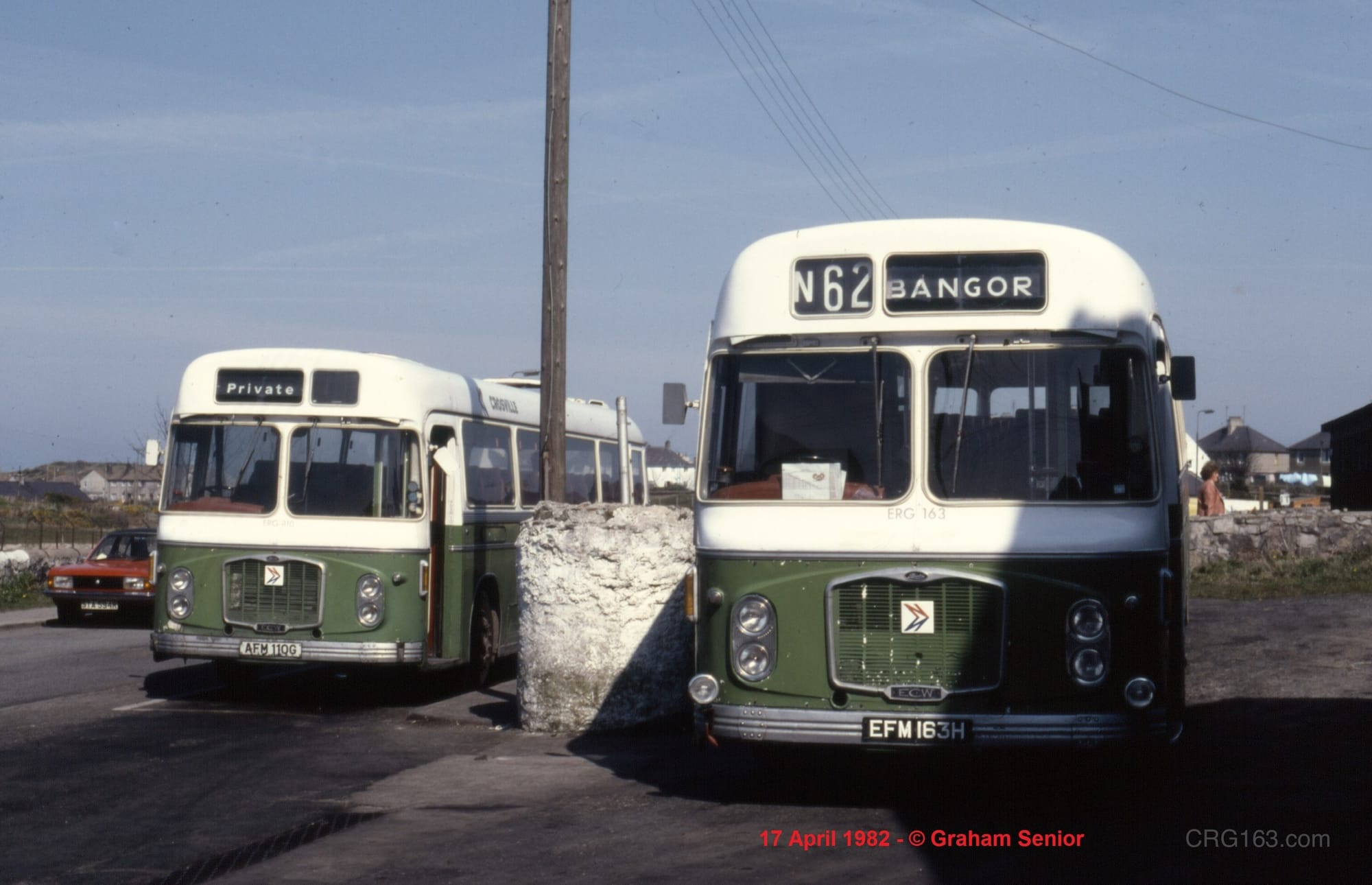 Photo kindly provided by Graham Senior. The image is of ERG110 and ERG163 at Crosville’s Amlwch depot - 17 April 1982. It’s so interesting to capture the story behind the image. Graham comments:
Photo kindly provided by Graham Senior. The image is of ERG110 and ERG163 at Crosville’s Amlwch depot - 17 April 1982. It’s so interesting to capture the story behind the image. Graham comments: This photo was taken on a glorious Saturday 17 April 1982, and the reason for the presence of ERG110 was that she had been hired by "The Crosville Enthusiasts' Club (1967)", for a depot trip (originating at Chester) encompassing Llanrwst, Bangor and the three Anglesey depots. As Max Boyce would have said, "I know, 'cos I was there!". Seeing the pictures on your splendid website brought back the happy memory, and I've dug out my (very similar) shot of the occasion, to that of Geoff Smith which was filed under ERG110.
By now the Crosville fleet panel above the front wheels would be painted green with the ‘Crosville’ fleet name applied by sticker on the roof line each side accompanied by the National Bus Company logo of the double ‘N’. Once again her fleet number was displayed in grey sticker form with a driver ticket machine and cash tray added. Standard vehicles operating local bus services would normally adopt an all over ‘leaf’ green livery with a white centre relief band, however as ERG had coach seats this classification was given.
 ERG163 leaving Amlwch, Bangor bound on the N62 with Richard Lewis, Amlwch depot behind the wheel. Photo courtesy of Don McKeown.
ERG163 leaving Amlwch, Bangor bound on the N62 with Richard Lewis, Amlwch depot behind the wheel. Photo courtesy of Don McKeown.ERG163 as now classified would continue to operate on a host of long and shorter distance services based at Crosville’s then Amlwch depot operating the Saturday X10 service between Cemaes Bay and Liverpool as well as more local services such as the N62 between Amlwch and Bangor.
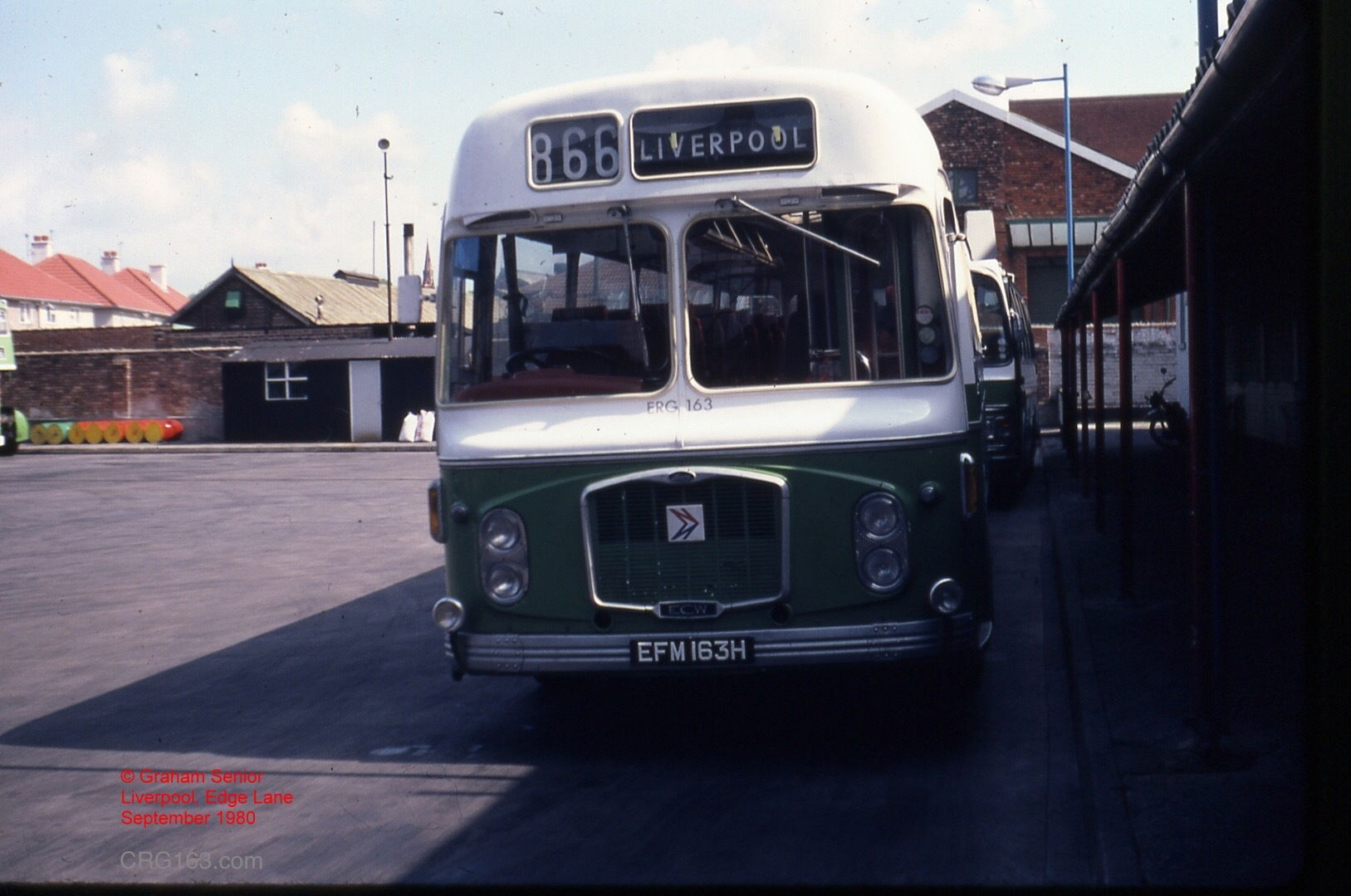 ERG163 at Liverpool Edge Lane depot in September 1980.
ERG163 at Liverpool Edge Lane depot in September 1980.
 Advertised services N61 & N62 as operated by ERG163 - summer 1981.
Advertised services N61 & N62 as operated by ERG163 - summer 1981. ERG163 at Menai Bridge on the N61 to Amlwch on a wet day in December 1982.
ERG163 at Menai Bridge on the N61 to Amlwch on a wet day in December 1982. ERG 163 parked up inside Crosville’s Amlwch depot - August 1982 having returned home on the X10 from Liverpool.
ERG 163 parked up inside Crosville’s Amlwch depot - August 1982 having returned home on the X10 from Liverpool. ERG163 at Mynydd Mechell, Anglesey with John ‘Pensarn’ Williams from Crosville’s Amlwch depot at the wheel as confirmed by Richard Lewis and Glyn Jones. Richard fondly commented how he remembers John driving in those days in his blue tie. Sadly John passed away a few years ago. This photograph is therefore dedicated to John Pensarn in his memory.
ERG163 at Mynydd Mechell, Anglesey with John ‘Pensarn’ Williams from Crosville’s Amlwch depot at the wheel as confirmed by Richard Lewis and Glyn Jones. Richard fondly commented how he remembers John driving in those days in his blue tie. Sadly John passed away a few years ago. This photograph is therefore dedicated to John Pensarn in his memory. ERG163 at Mynydd Mechell, December 1983 with John ‘Pensarn’ Williams at the wheel from Amlwch depot.
ERG163 at Mynydd Mechell, December 1983 with John ‘Pensarn’ Williams at the wheel from Amlwch depot.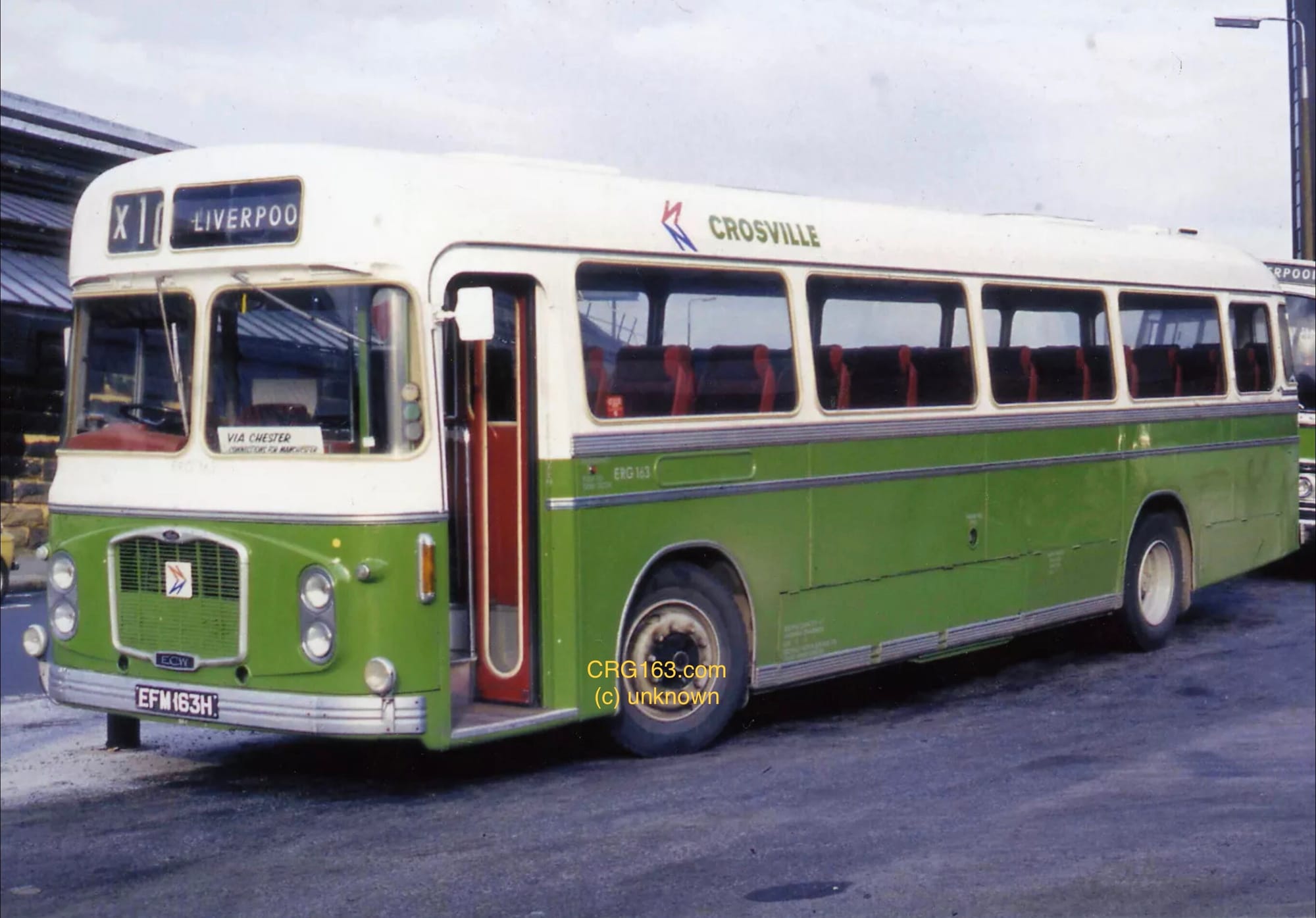 ERG163 parked up at Liverpool Skelhorne Street, opposite Lime Street having operated the X10 from Cemaes Bay.
ERG163 parked up at Liverpool Skelhorne Street, opposite Lime Street having operated the X10 from Cemaes Bay.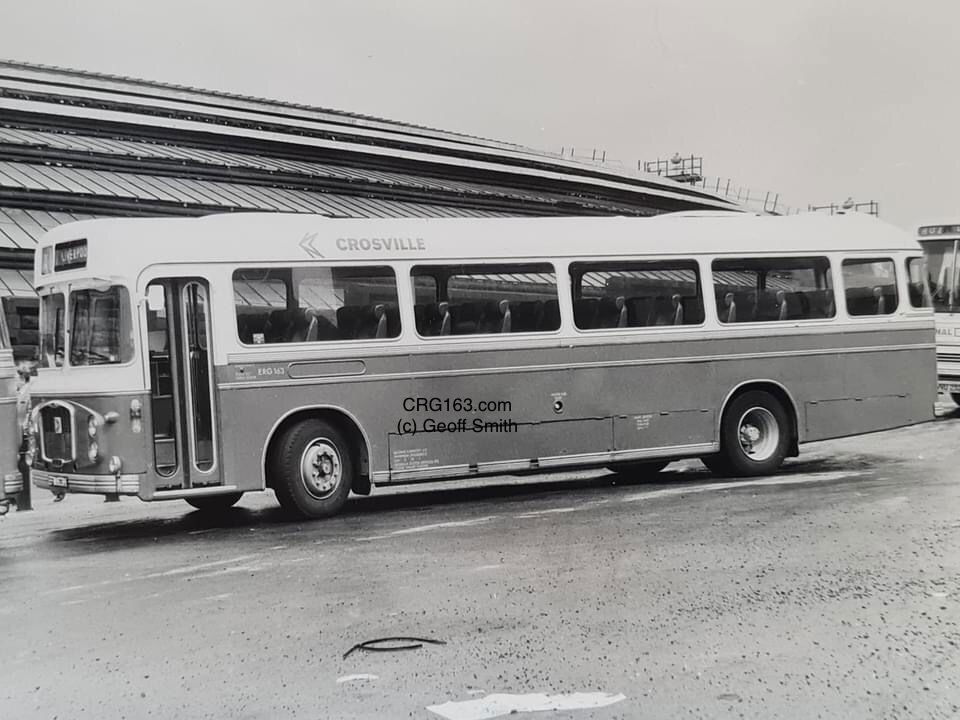 A black and white image of ERG163 parked at Liverpool Skelhorne Street opposite Lime Street, likely to have operated the X10 service from Cemaes Bay. Photo courtesy of Geoff Smith
A black and white image of ERG163 parked at Liverpool Skelhorne Street opposite Lime Street, likely to have operated the X10 service from Cemaes Bay. Photo courtesy of Geoff Smith The X10 timetable as operated by ERG163 which commenced operation in 1982.
The X10 timetable as operated by ERG163 which commenced operation in 1982.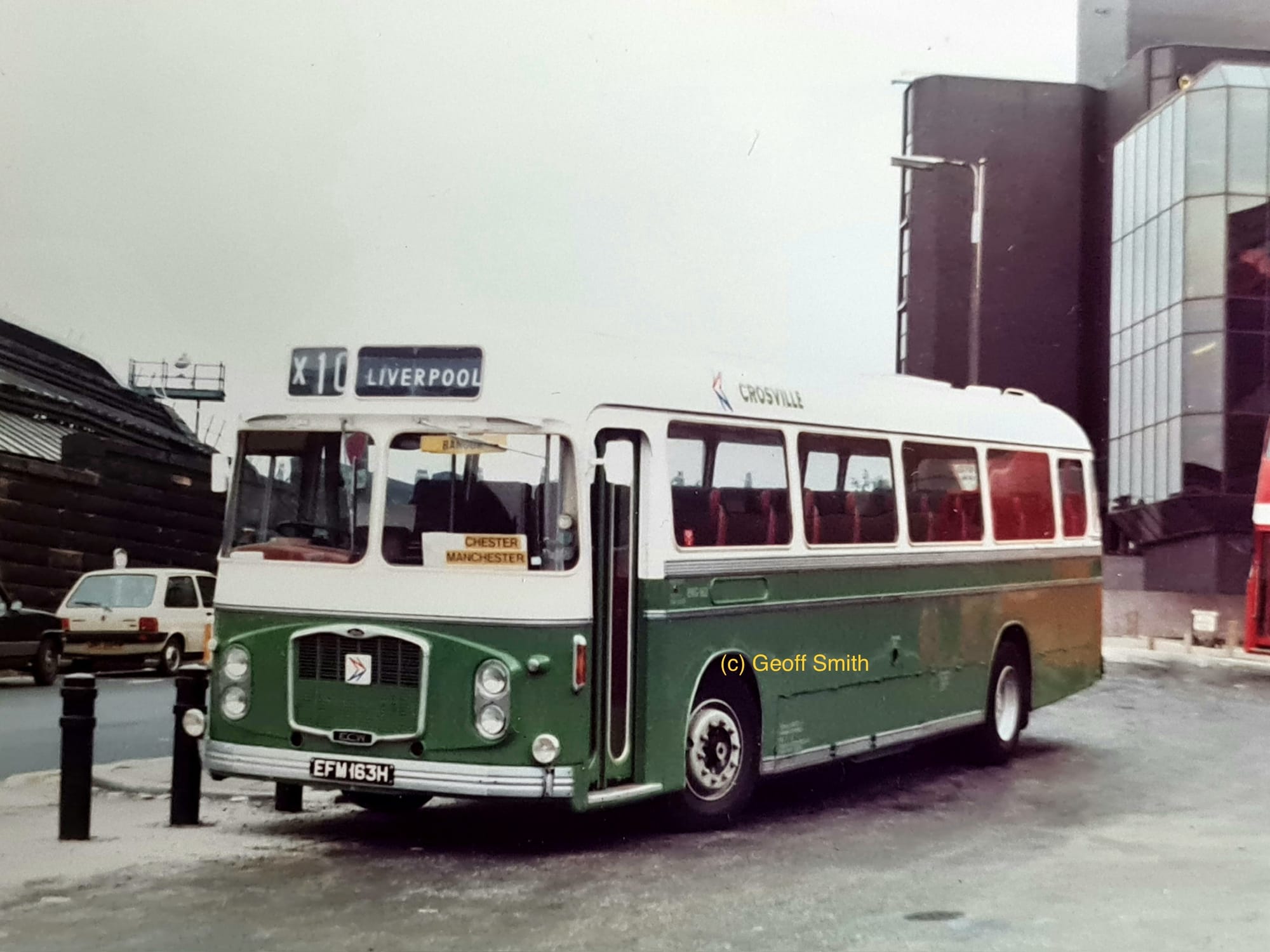 Another image of ERG163 at Liverpool’s Skelhorne Street coach station having worked the X10 limited stop service from Cemaes Bay.
Another image of ERG163 at Liverpool’s Skelhorne Street coach station having worked the X10 limited stop service from Cemaes Bay. Here we see ERG163 Liverpool bound on the Saturday X10 service from Cemaes Bay as operated by staff from Crosville’s Amlwch depot, North Wales. With grateful thanks to Keith Jones, who e-mailed and confirmed that the location is Hamilton St, Birkenhead with Hamilton Square Station seen to the left of the photo.
Here we see ERG163 Liverpool bound on the Saturday X10 service from Cemaes Bay as operated by staff from Crosville’s Amlwch depot, North Wales. With grateful thanks to Keith Jones, who e-mailed and confirmed that the location is Hamilton St, Birkenhead with Hamilton Square Station seen to the left of the photo.The X10 service would be driven by Bob Moelfre; Richard ‘Richie’ Lewis; Dewi Roberts and others based at the time at Crosville’s Amlwch depot.
 ERG163 parked up at Skelhorne Street coach station having worked the X10 from Cemaes Bay, Anglesey - August 1983 (with grateful thanks to Mr Graham Senior for permission to reproduce his photo here and others elsewhere on this website)
ERG163 parked up at Skelhorne Street coach station having worked the X10 from Cemaes Bay, Anglesey - August 1983 (with grateful thanks to Mr Graham Senior for permission to reproduce his photo here and others elsewhere on this website) ERG163 outside Crosville’s Amlwch depot.
ERG163 outside Crosville’s Amlwch depot. ERG163 outside Crosville’s Amlwch depot.
ERG163 outside Crosville’s Amlwch depot. ERG163 outside Crosville’s Amlwch depot.
ERG163 outside Crosville’s Amlwch depot. Scan from Crosville’s official fleet list from 1 February 1981. ERG163 is allocated to Amlwch depot
Scan from Crosville’s official fleet list from 1 February 1981. ERG163 is allocated to Amlwch depot ERG161 at Menai Bridge, Bangor bound with ERG163 in the background.
ERG161 at Menai Bridge, Bangor bound with ERG163 in the background. Photo kindly provided by Mr Stephen Monaghan with grateful thanks. As commented by Stephen: New and the old meet in Bangor in May 1983. DOG118 arriving Bangor Clock bus station passing ERG163 which has operated into Bangor on the N62 service.
Photo kindly provided by Mr Stephen Monaghan with grateful thanks. As commented by Stephen: New and the old meet in Bangor in May 1983. DOG118 arriving Bangor Clock bus station passing ERG163 which has operated into Bangor on the N62 service. ERG161 and ERG163 side by side outside Crosville’s Amlwch depot. ERG163 can also be seen sporting the Town Lynx branding. Photograph supplied by Keith Mason with grateful thanks.
ERG161 and ERG163 side by side outside Crosville’s Amlwch depot. ERG163 can also be seen sporting the Town Lynx branding. Photograph supplied by Keith Mason with grateful thanks. ERG163 at Menai Bridge heading to Cemaes Bay on route N61
ERG163 at Menai Bridge heading to Cemaes Bay on route N61 ERG163 at Menai Bridge heading to Cemaes Bay on route N61
ERG163 at Menai Bridge heading to Cemaes Bay on route N61ERG163 Crosville Withdrawal
Eventually ERG163 succumbed to withdrawal from service in 1984. It’s future was very much uncertain as it waited its fate on the Crosville disposal line at Chester. The following photographs are ERG163 reaching the end of the road …………. Or the end of the road with Crosville.
 ERG163 parked up on Crosville’s vehicle disposal line - it’s future very much uncertain.
ERG163 parked up on Crosville’s vehicle disposal line - it’s future very much uncertain.


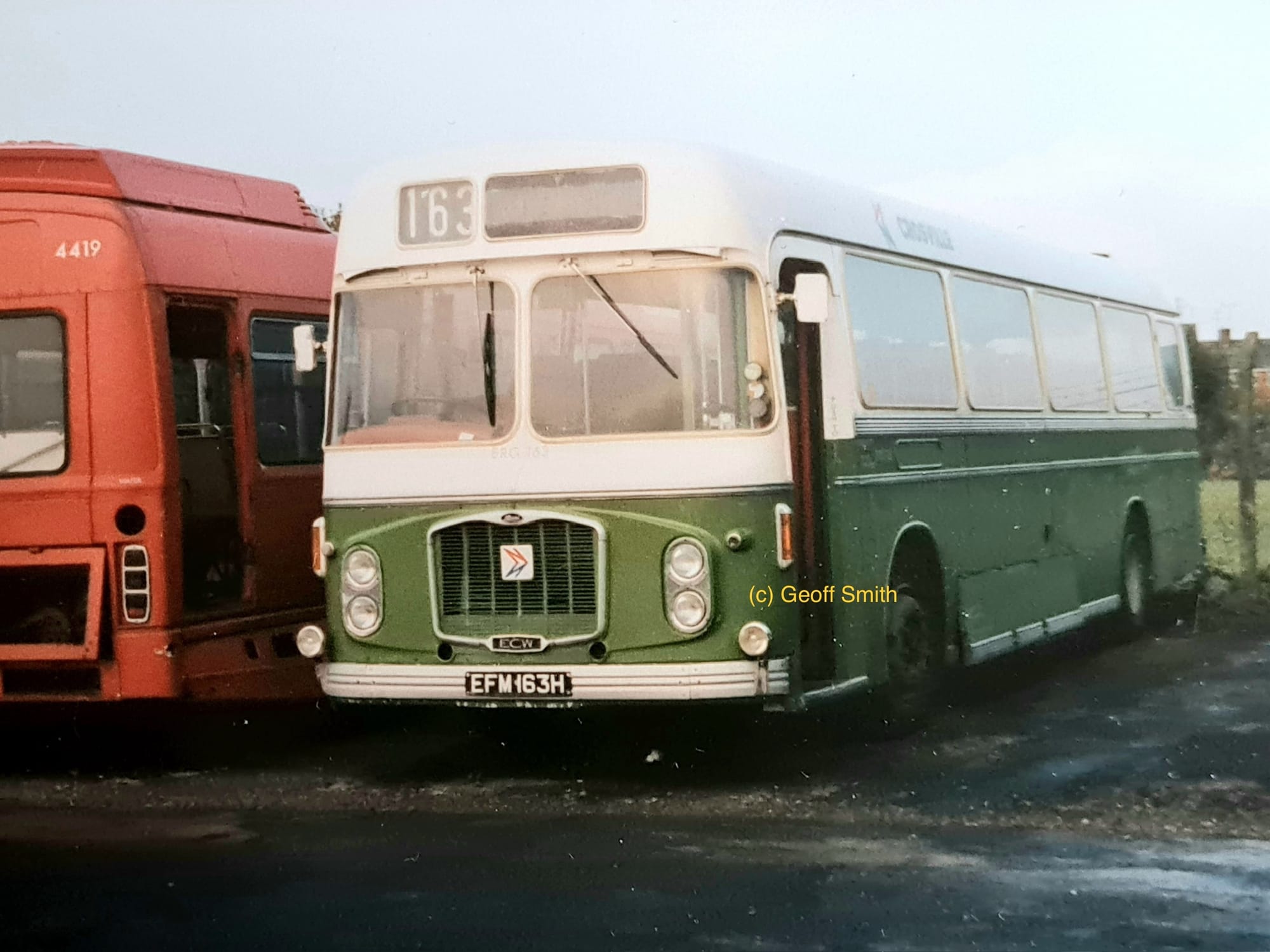

My grateful thanks to everyone who have provided information about CRG/ERG163’s in service history with Crosville as detailed on this page of the website. Thank you.
Into preservation
Following CRG163’s withdrawal by Crosville in the 1984 it entered preservation initially with Gordon Bate and then from 2002 with Richard Jones. CRG163 undertook a rigorous restoration process with Richard between 2002 and 2004 with grateful support from his father, late mother and others before being unveiled in June 2004 in her restored NATIONAL white livery.
 Preserved CRG163 heading towards Bangor having driven across the Menai Suspension Bridge from the Isle of Anglesey, as done so many times back in the day.
Preserved CRG163 heading towards Bangor having driven across the Menai Suspension Bridge from the Isle of Anglesey, as done so many times back in the day. More information and photographs of CRG163 in preservation are available on the page ‘CRG163 INTO PRESERVATION’ on this website. You can also click HERE.
More information and photographs of CRG163 in preservation are available on the page ‘CRG163 INTO PRESERVATION’ on this website. You can also click HERE.Contact details
If you have any photos or related information about CRG163 or any information on the parts presently required then please e-mail post@crg163.com . Many thanks in advance.
You can also subscribe to this website by entering your e-mail address into the white box below, bottom right and click the subscription button. ⬇️

CRG163 In Preservation
CRG163 enters preservation with Gordon Bate in 1984, and then Richard Lloyd Jones from 2002 onwards.
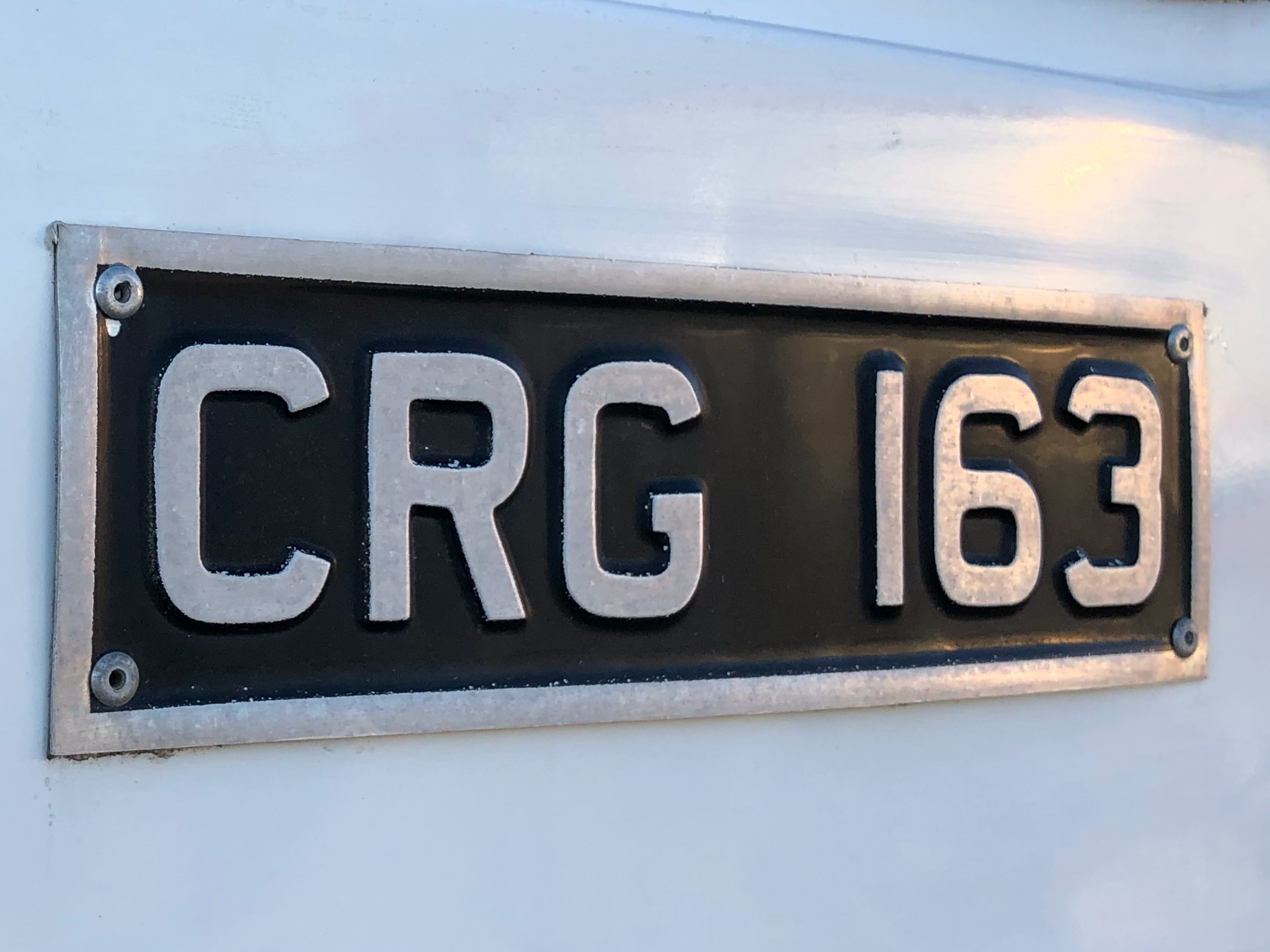
Initial preservation : 1984 - 2002 (Gordon Bate)
Following ERG163’s withdrawal by Crosville in 1984 it was saved from potential scrapping and an uncertain future by passing into the world of vehicle preservation through the new ownership of Gordon Bate. Gordon lived in the Manchester area and saved and preserved many other Crosville vehicles in his time including now preserved CRG106, CRG111 and CRG530, which would also eventually pass to other owners for further restoration, safekeeping and preservation. It is safe to say that Gordon played an instrumental interim role in saving and securing such vehicles from their ultimate demise.
 ERG163 enters preservation and is repainted in CRG163‘s more simplistic cream and back livery under the ownership of Gordon Bate. The vehicle’s fleet classification during its time with Crosville is applied in standard National Bus Company grey stickers.
ERG163 enters preservation and is repainted in CRG163‘s more simplistic cream and back livery under the ownership of Gordon Bate. The vehicle’s fleet classification during its time with Crosville is applied in standard National Bus Company grey stickers.ERG163 initially passed to Gordon in the dual purpose green and white livery as operated by Crosville. During his tenure of the vehicle he later adopted a derivative of the original cream and black livery but to a far simpler design, reapplying through sticker format the fleet designation of CRG163. Initially Gordon would attend many bus and coach rallies with the vehicle but over time began to withdraw. Over time the vehicle was withdrawn from any public appearance and mothballed, parked up at an unknown location for many years to come, rumoured to be on the outskirts of Manchester, somewhere.
A New Chapter - Preservation 2002 onwards (Richard Jones)
In the year 2000 I got to know Gordon Bate through the vehicle preservation movement and came across 163 as a part of this. I understand that many had attempted to purchase 163 from Gordon over the years through failed attempts either before or during any acquisition process. It is understood that Gordon would meet would be purchasers in the middle of nowhere but never actually taking anybody to the secret location of 163.
However in early 2001 everything changed. Gordon contacted me and offered the opportunity to purchase the vehicle. I remember accepting his offer to visit with excitement.
CRG 163 - Initial recovery and rescue
In June of the following year a date was set, that being the 9th of June, 2002 and I dully travelled with others to a location on the outskirts of Manchester to meet Gordon. Again as with others before I was to meet him at a location in the middle of nowhere. When we met we chatted for a short while before being invited to follow him for a number of miles along country lanes to the hidden location of 163. I remember entering a farm before suddenly seeing 163 appear silently from behind a barn.
 Top left images is CRG163 parked on the farm before recovery. Top right is Mr Gordon Bate inside CRG163. Bottom left image is of recovered CRG163 on the way home to North West Wales. Bottom right image is of CRG163 safely home in North West Wales.
Top left images is CRG163 parked on the farm before recovery. Top right is Mr Gordon Bate inside CRG163. Bottom left image is of recovered CRG163 on the way home to North West Wales. Bottom right image is of CRG163 safely home in North West Wales.Unfortunately by this time the vehicle had deteriorated as it had not moved for a number of years. The vehicle was thoroughly checked over by a mechanic friend for any issues such as air pipe or water issues as well as other roadworthiness checks. On receiving the green light from my mechanic friend the deal was done. Before we departed I remember Gordon affectionately placing his hand on the front of 163 and saying “look after yourself old girl”. Suddenly we were homeward bound returning 163 once again to North Wales.
 Ex CRG163 heading westbound near Chester - homeward bound (photo courtesy of Ray Jones).
Ex CRG163 heading westbound near Chester - homeward bound (photo courtesy of Ray Jones).Her recovery did not pass without incident, but through engineering support from a friend and perseverance she travelled home from Manchester to North Wales.
At this time I must pay homage to Gordon Bate for saving so many Crosville vehicles including mine from a more unstable future. Sadly Gordon is no longer with us unfortunately, however 163 lives on as well as his initial efforts of preservation.
The restoration work begins...
CRG163 undertook a rigorous restoration process with Richard between 2002 and 2004 with grateful support from his father, late mother and others before being unveiled in June 2004 in her restored NATIONAL white livery.

A lot of travelling was undertaken across the country, tracking down and sourcing parts.
This included but not restricted to:
- a complete mechanical overhaul including the fitting of new air and water pipes throughout and the repair of air bag levelling valves; vehicle entrance door mechanisms and driver cab electrics;
- securing a full set of six rims (wheels) from the Scotch Corner on realisation that six different sized incorrect rims were fitted by the previous owner
- six new tyres;
- recasting the steering wheel - north of Manchester;
- repair to vehicle alternator - Liverpool
- rebuilding the wooden frames of all side lockers - nearside and offside;
- New window rubbers supplied from a specialist company - all round including destination displays and side panels above front wheels - nearside and offside to hold the ‘Crosville’ name once again
- complete sanding down of the entire body work (with grateful support from my Father);
- complete respray of the vehicle to NATIONAL white;
- deteriorated water pipes replaced;
- complete internal repaint;
- Sourcing of original coloured green external beading all round on all bright work;
- Sourcing of new metal grey and black fleet plates re-created exactly to the original design and specification of CRG163 down to the detail of the text font and dimensions used thus reinstating 163 to its original CRG fleet status. This replaced the stickers used by the previous owner;
- Sourcing the correct paint and colour match of grey for the vehicle rims (wheels);
- Sourcing the design specifications for the ‘NATIONAL’ branding as well as all vehicle legal lettering to the original design including font. This included the ‘Crosville’ fleet name on the reinstated panel above the front wheels. 163 was now repainted in the NATIONAL livery and included all correct styling of legal lettering. I was extremely lucky as my friend Derek Thompson who once worked for Crosville at its Caernarfon depot had retained the original specifications who kindly shared this with me. Sadly Derek is no longer with us. Thank you Derek so much for your kindness and friendship.
Completion of restoration and unveiling
The new livery chosen for restored CRG163 was kept a secret from everyone and was unveiled at the Llandudno Victorian Extravaganza Transport Festival in May 2004.

Llandudno Transport Festival
On 01 May 2004, CRG 163 is publicly unveiled for the first time following restoration at the Llandudno Transport Festival. By now CRG 163 has been restored and repainted into the National white livery the vehicle carried between 1972 and 1979. CRG 163 would also proudly carry new bespoke traditional metal fleet plates and as carried when new.
The initial four photographs below were taken early morning on Saturday the 01 May as final preparations were being made to publicly unveil restored CRG163 for the first time later in the morning. Final touches included final visual checks of everything and the application of the orange show sticker on CRG163’s nearside windscreen.
This was extremely exciting as two years of restoration work culminated to this very point where only a few hours later CRG163 would be unveiled to everyone. CRG163’s livery was kept as a secret and surprise to everyone. It must be remembered that twenty years ago we didn’t have such things as the internet and social media platforms as we have today.
 Early morning images of CRG163 before setting off to the Crosville vehicle gathering at the Llandudno Transport Extravaganza - 2004. This was our first public outing following the completion of two years of restoration.
Early morning images of CRG163 before setting off to the Crosville vehicle gathering at the Llandudno Transport Extravaganza - 2004. This was our first public outing following the completion of two years of restoration.Following an early start of excitement , CRG163 arrives at the Llandudno Transport Festival.
 Following the static show of vehicles at the Llandudno Festival of Transport a road run took place of most of the vehicle through Llandudno and around the Great Orme. CRG163 is seen here driving through Llandudno as a part of the road run. Following the road run CRG163 parks alongside fellow preserved Crosville vehicles for an impromptu early evening photo shoot.
Following the static show of vehicles at the Llandudno Festival of Transport a road run took place of most of the vehicle through Llandudno and around the Great Orme. CRG163 is seen here driving through Llandudno as a part of the road run. Following the road run CRG163 parks alongside fellow preserved Crosville vehicles for an impromptu early evening photo shoot.Looking back with respect
Whilst now looking forward to CRG163 in preservation, we also looked back in the same way with respect as we traced people who’d had a previous connection with the vehicle.
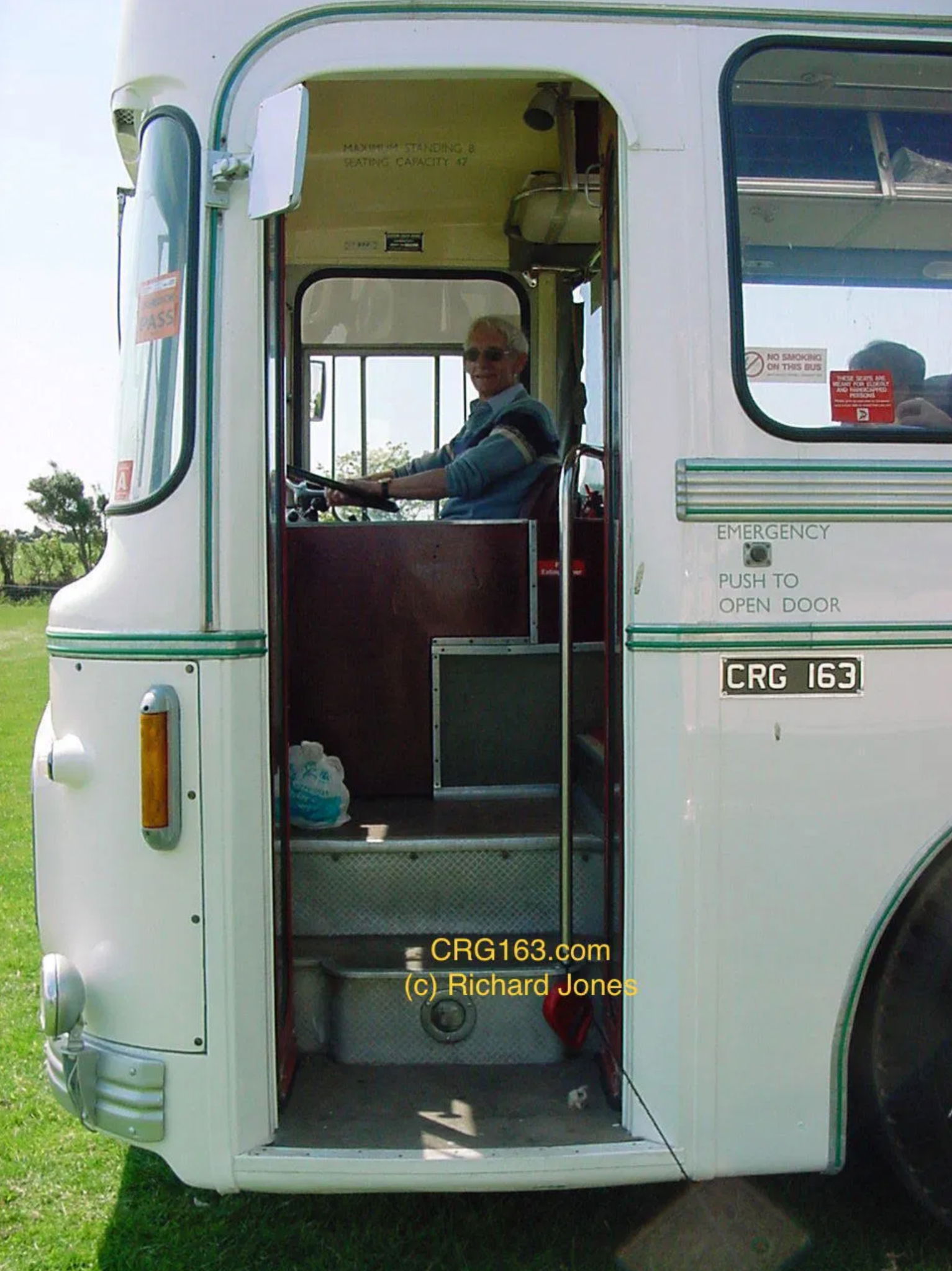 A nearside image of Derek Thompson, a very dear friend sitting behind the wheel of CRG163. It was Derek who supplied the original NBC design specifications to be used in the production of CRG163’s vinyls and stickers in preservation. Sadly Derek passed away a number of years ago by now but is missed by so many, a very dear friend to so many of us.
A nearside image of Derek Thompson, a very dear friend sitting behind the wheel of CRG163. It was Derek who supplied the original NBC design specifications to be used in the production of CRG163’s vinyls and stickers in preservation. Sadly Derek passed away a number of years ago by now but is missed by so many, a very dear friend to so many of us.CRG163 surprises the Crosville Enthusiasts Club 1967 North Wales tour by appearing at Conwy through a surprise arrangement with the late Gwyn Taylor-Williams on 12 June, 2004, conveying members to Bangor. It was an absolutely amazing day as Mr Jack Cowap was on board, 88 years old and former driver of CRG163 when based at Crosville’s Edge Lane depot operating the Liverpool - London service. Also on the same journey was another valuable passenger in the form of Bob Moelfre (Robert Roberts). Bob once worked at Crosville’s Amlwch depot and drive many miles with CRG163 when as ERG163 on the X10 from Cemaes Bay to Liverpool. Bob even drove restored CRG163 around the Cibyn Industrial Estate on the same afternoon. What an absolute magic moment!
For further information about our day with Mr Cowap and Bob ‘Moelfre’ Roberts click HERE.
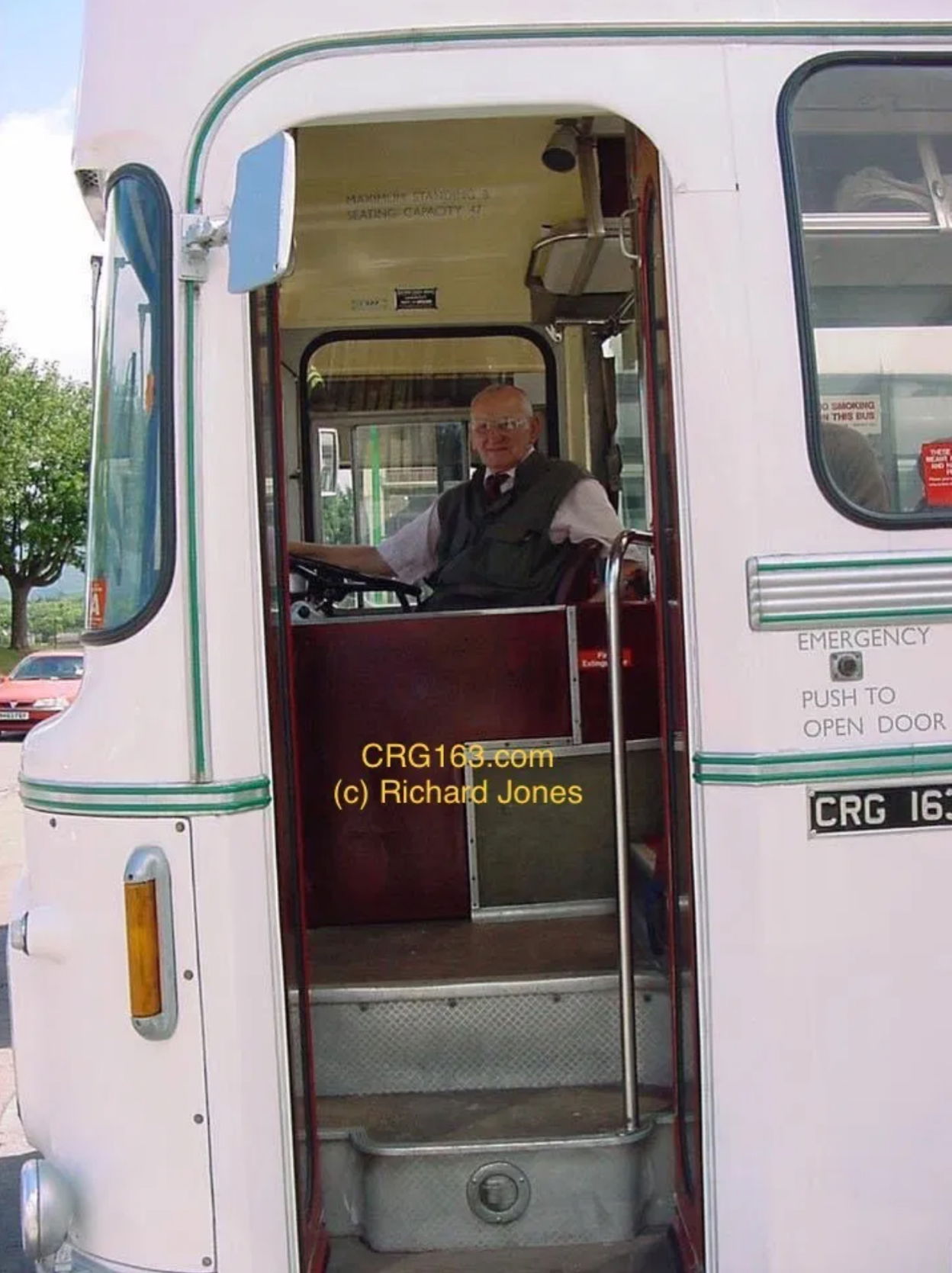 Mr Cowap sitting behind the wheel of CRG163 once again, 30 odd years later, having covered many miles behind the wheel back in the day with Crosville when the vehicle was new.
Mr Cowap sitting behind the wheel of CRG163 once again, 30 odd years later, having covered many miles behind the wheel back in the day with Crosville when the vehicle was new.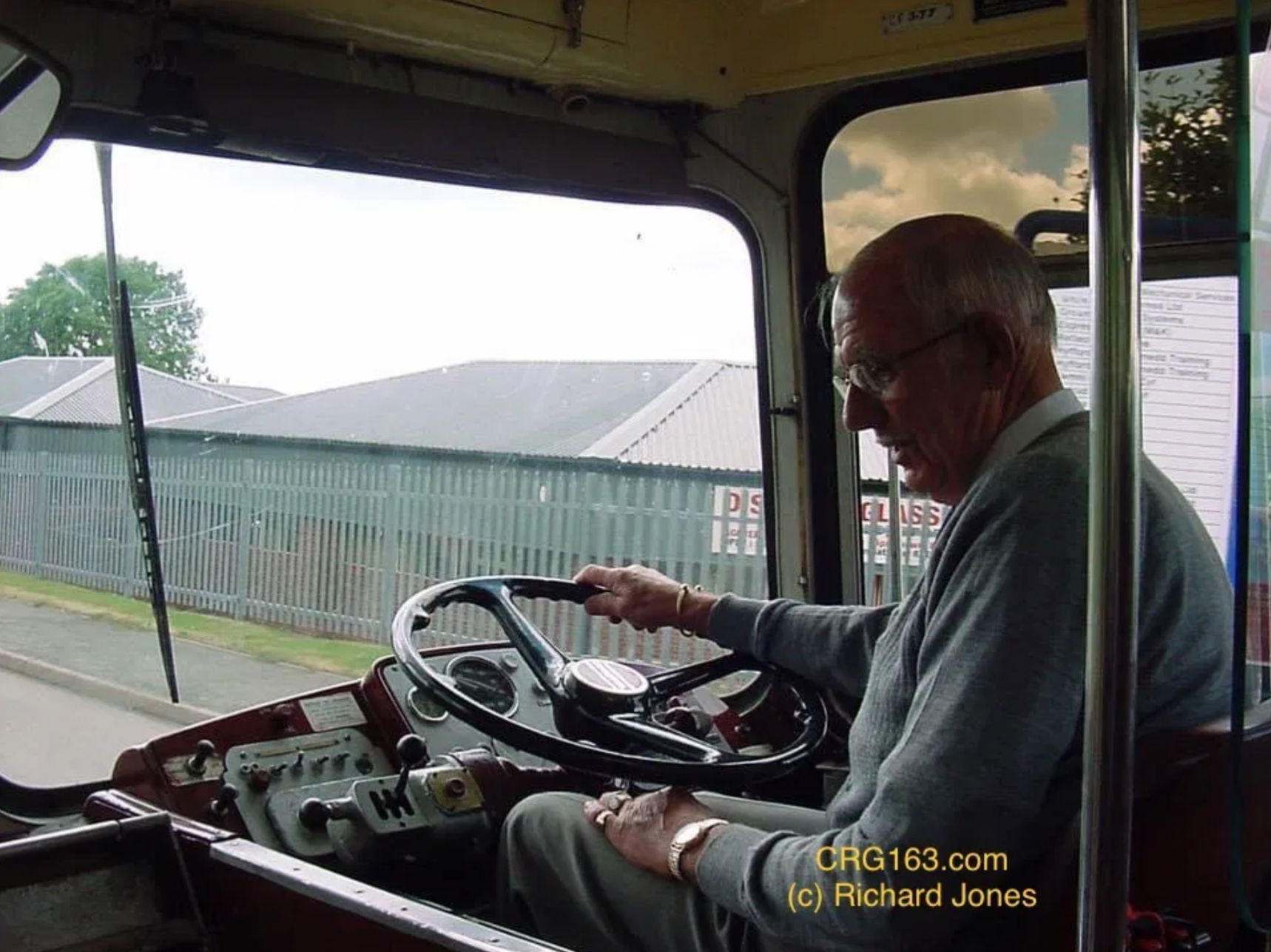 Bob Moelfre, once of Crosville’s depot at Amlwch. Now retired but once again driving CRG163 but this time in preservation many years later. In memory of Bob.
Bob Moelfre, once of Crosville’s depot at Amlwch. Now retired but once again driving CRG163 but this time in preservation many years later. In memory of Bob.This was an emotional day without doubt as John ‘Llanrug’ Griffith, family and friends had a ride out with CRG 163 on former Crosville routes in the Caernarfon area. John was a former driver of Crosville’s Caernarfon depot who sadly passed away from illness a few weeks later. However we all had a fantastic day with CRG 163 including John’s drive around the Caernarfon Cibyn Industrial Estate. Subsequently following John’s passing the photo of him peering out of CRG 163’s cab window was framed and presented to John’s wife as a memento of the day.
 A fantastic image of John smiling and peering out of the driver’s cab window of CRG163 with a thumbs up in 2008. This image was later printed, framed and presented to Naomi, John‘s wife as a way to remember our day together.
A fantastic image of John smiling and peering out of the driver’s cab window of CRG163 with a thumbs up in 2008. This image was later printed, framed and presented to Naomi, John‘s wife as a way to remember our day together.For further information about our day with John ‘Llanrug’ Griffiths click HERE.
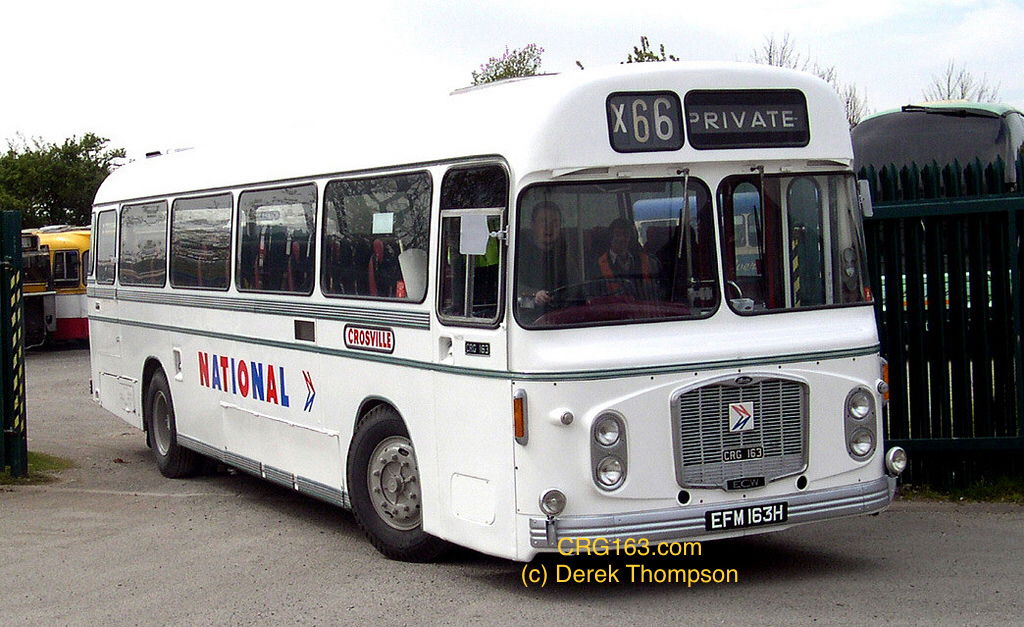 CRG163 in preservation circa 2004 - taken by the late Derek Thompson.
CRG163 in preservation circa 2004 - taken by the late Derek Thompson.By then CRG163 had become a celebrity in the bus preservation movement.
 Preserved CRG163 at Glynllifon Estate circa 2005.
Preserved CRG163 at Glynllifon Estate circa 2005.Bus & Coach Preservation Magazine - June 2004
Newly restored CRG163 becomes a bit of a celebrity by being featured on the front page of the Bus & Coach Preservation magazine, Volume 7, Issue 2 with a five page internal spread. This included a full photo shoot of the vehicle between Bangor and Menai Bridge with the main cover photo taken of CRG163 driving through the famous arches of the Menai Suspension Bridge displaying X10 Bangor on the destination screen. Coincidentally the X10 never operated to Bangor but operated from Cemaes Bay to Liverpool and vice versa. Bangor was added as the destination for the photo shoot as on the day the final destination was Bangor. X10 was added on the destination screen out of respect for Crosville’s Amlwch staff. This destination of X10 Bangor would be used for the EFE model launched in September 2006.
 Bus & Coach Preservation magazine front page - July 2004.
Bus & Coach Preservation magazine front page - July 2004.The cover photo was taken of preserved CRG163 passing through one of the famous arches of the Menai Suspension Bridge linking the Isle of Anglesey and the main land.
In June 2004 CRG163 during its preservation become the star on the cover and within a five page internal article of the Bus & Coach Preservation Magazine.
For further details click HERE.
Wirral Bus & Tram Show - a return home to Liverpool
On 03 October 2004, restored CRG163 returns home to Merseyside by attending the Wirral Bus & Tram Show in Birkenhead. Following the show CRG163 visits the Woodside Ferry Terminal, followed by an impromptu trip across to Liverpool Lime Street Station where CRG163 and as ERG163 would operate in active service with Crosville. On the way home to North Wales CRG163 stops outside Crosville’s former Rock Ferry depot in Birkenhead.
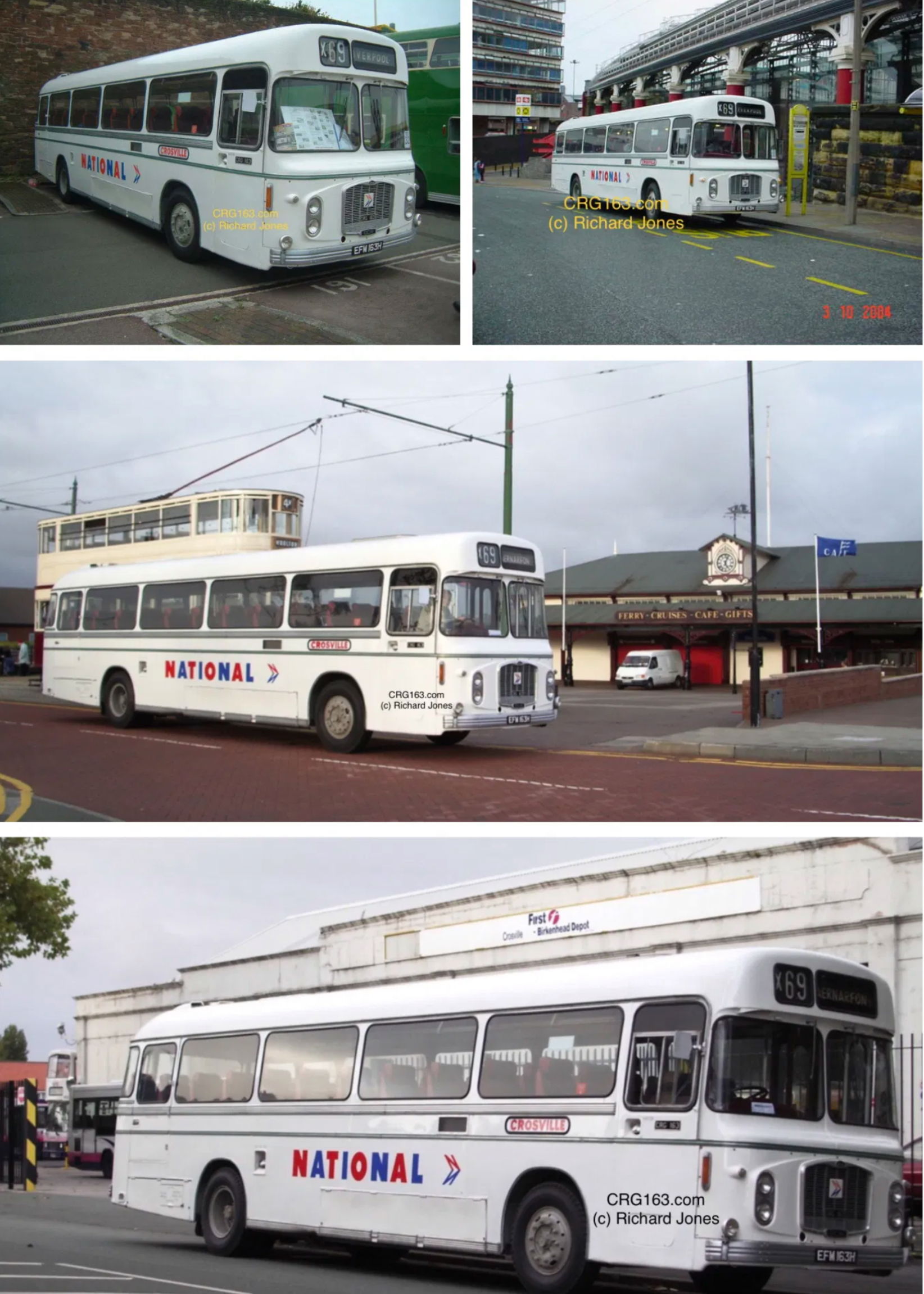
For further information click HERE.
This show is also attended in October 2005. For further details click HERE.
CRG163 in EFE model form
EFE launches its first 1:76 scale model of the ECW bodied Bristol RELH Series 2 Mark 1 coach with CRG 163 being used for this purpose. The model is unveiled and represents CRG 163 in preservation with X10 Bangor on the model’s destination screen. The model number is 32202.
For further details click HERE.

Crosville 100 celebrations - 2006
CRG163 takes part in the Crosville 100 event to commemorate 100 since Crosville began back in 1906. The event consisted of all vehicles parked at the Rhyl Arena forming a static exhibition before a road run of all vehicles present from Rhyl to the Llandudno Transport Festival following the former 409 bus route operated by Crosville.
For more information click HERE.
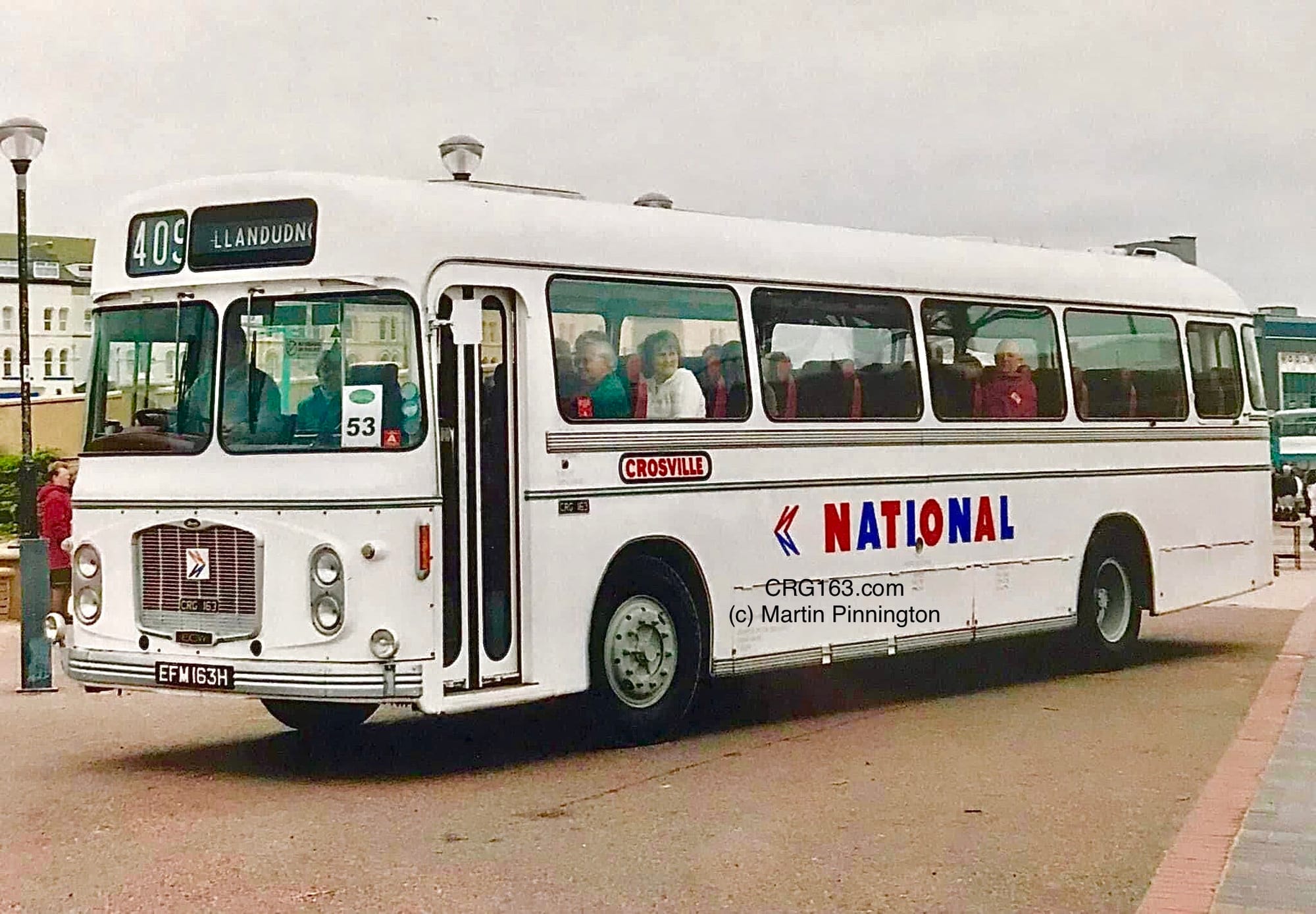 Crosville 100 celebrations, 2006 at Rhyl with me behind the wheel and my late Mother sitting behind. Photo courtesy of Martin Pinnington with thanks.
Crosville 100 celebrations, 2006 at Rhyl with me behind the wheel and my late Mother sitting behind. Photo courtesy of Martin Pinnington with thanks. Pictured again at the Crosville 100 celebrations, 2006 in Rhyl. Photo courtesy of Martin Pinnington with thanks.
Pictured again at the Crosville 100 celebrations, 2006 in Rhyl. Photo courtesy of Martin Pinnington with thanks.CRG163 returns home to Amlwch
Restored CRG163 returns to its former home of Amlwch in 2007 and pays homage to Crosville’s former depot in the town and all it’s staff. Again it proudly displays ‘X10’ on it’s destination out of respect which was the express service once operated from the depot back in the day from Cemaes Bay to Liverpool on Saturdays.
For further information click HERE.
 Preserved CRG163 returning home to Amlwch during 2006. The Crosville depot is sadly demolished, making way for yet another supermarket which became buyers of Crosville sites when vacated and sold. CRG163 returned to Amlwch displaying route number X10 (the route once operated by CRG163 when ERG163 back in the day between Cemaes Bay and Liverpool) on its destination blind, paying homage and respect for the old depot and staff.
Preserved CRG163 returning home to Amlwch during 2006. The Crosville depot is sadly demolished, making way for yet another supermarket which became buyers of Crosville sites when vacated and sold. CRG163 returned to Amlwch displaying route number X10 (the route once operated by CRG163 when ERG163 back in the day between Cemaes Bay and Liverpool) on its destination blind, paying homage and respect for the old depot and staff. An evening shot of preserved CRG163, parked at the bus interchange at Menai Bridge, Anglesey on its return from Amlwch.
An evening shot of preserved CRG163, parked at the bus interchange at Menai Bridge, Anglesey on its return from Amlwch.TV Appearance
 The EFE model of preserved CRG163 on BBC iplayer
The EFE model of preserved CRG163 on BBC iplayerThe EFE model of preserved CRG163 has also appeared on BBC iplayer in the programme: Timeshift: Series 10, 7 - The Modern Age of the Coach. The programme is also available on You Tube via the following web link: https://youtu.be/WQMDp2tVV-k
CRG163 preservation - 2020 onwards
CRG163’s further restoration has slowly gathered pace since 2020, plagued with accessibility, storage and engineering support.
Thankfully this has gathered significant pace since the beginning of 2025 with the commencement of major body work renovation of the vehicle, which has led to six of the vehicle’s original waist panel light apertures reappearing, assumed removed since 1971. Such a significant find has now changed the course of CRG163’s appearance as we now take the vehicle back to 1970!
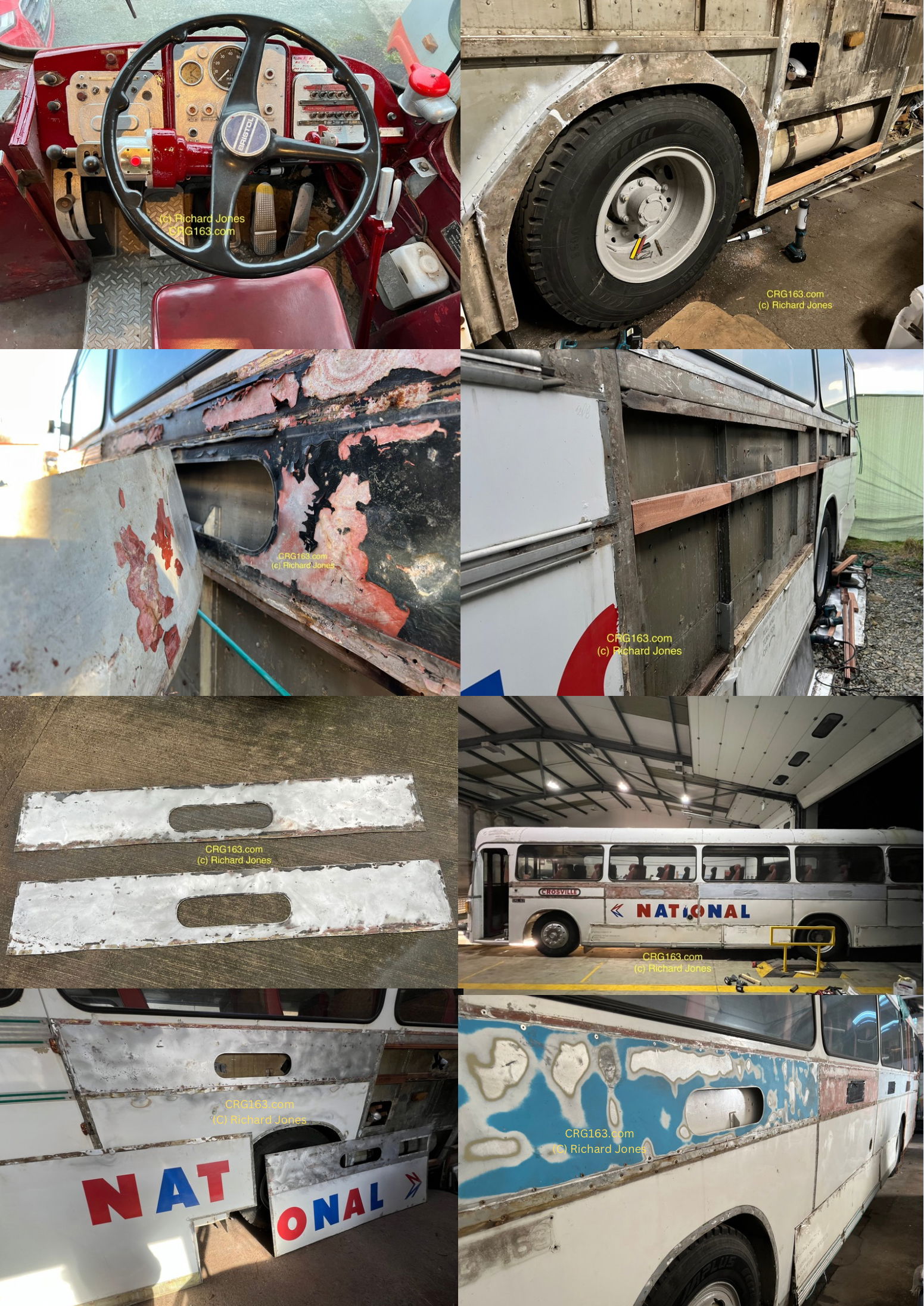
For details of our recent restoration and preservation endeavours please click HERE or our Latest News page for details.

You can also chart CRG163’s full timeline and more by clicking HERE.
Contact details
If you have any photos or related information about CRG163 or any information on the parts presently required then please e-mail me, Richard Jones at post@crg163.com . Many thanks in advance.
You can also subscribe to this website by entering your e-mail address into the white box below, bottom right and click the subscription button. ⬇️

CRG163 in EFE

CRG163 into EFE - 1:76 scale
In September 2006 CRG163 was released in EFE 1:76 model form.
CRG163 was the first mould to be released based on the Series 2, Mark 1, Bristol RELH6G ECW coach.
The model is based upon CRG163 in preservation as depicted in the July 2004 Bus & Coach Preservation magazine with X10 Bangor on the front with black window rubbers.
Service X10 never operated to Bangor but operated to Cemaes Bay on the Isle of Anglesey or Liverpool.
CRG163’s EFE model number is 32202.


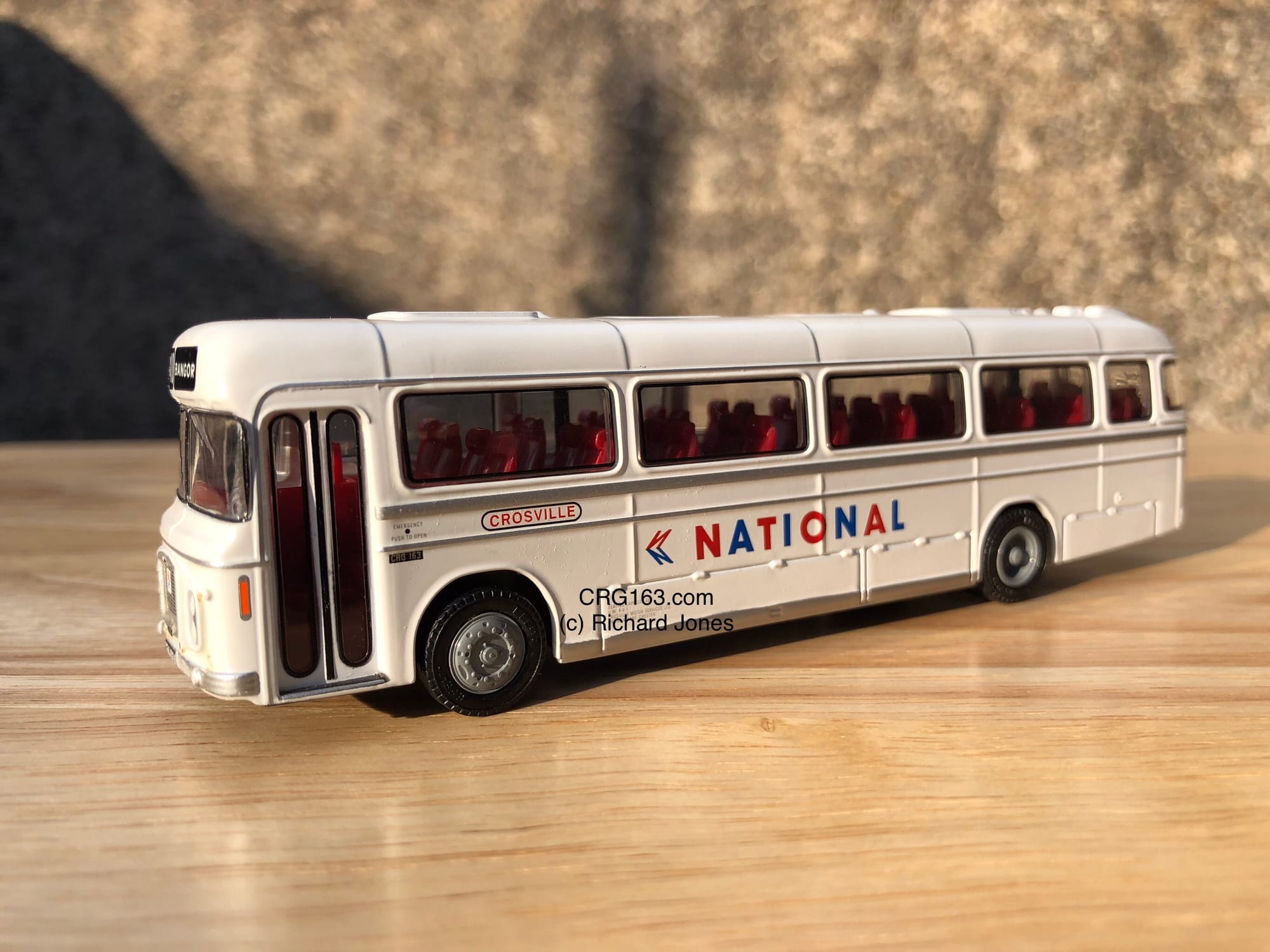


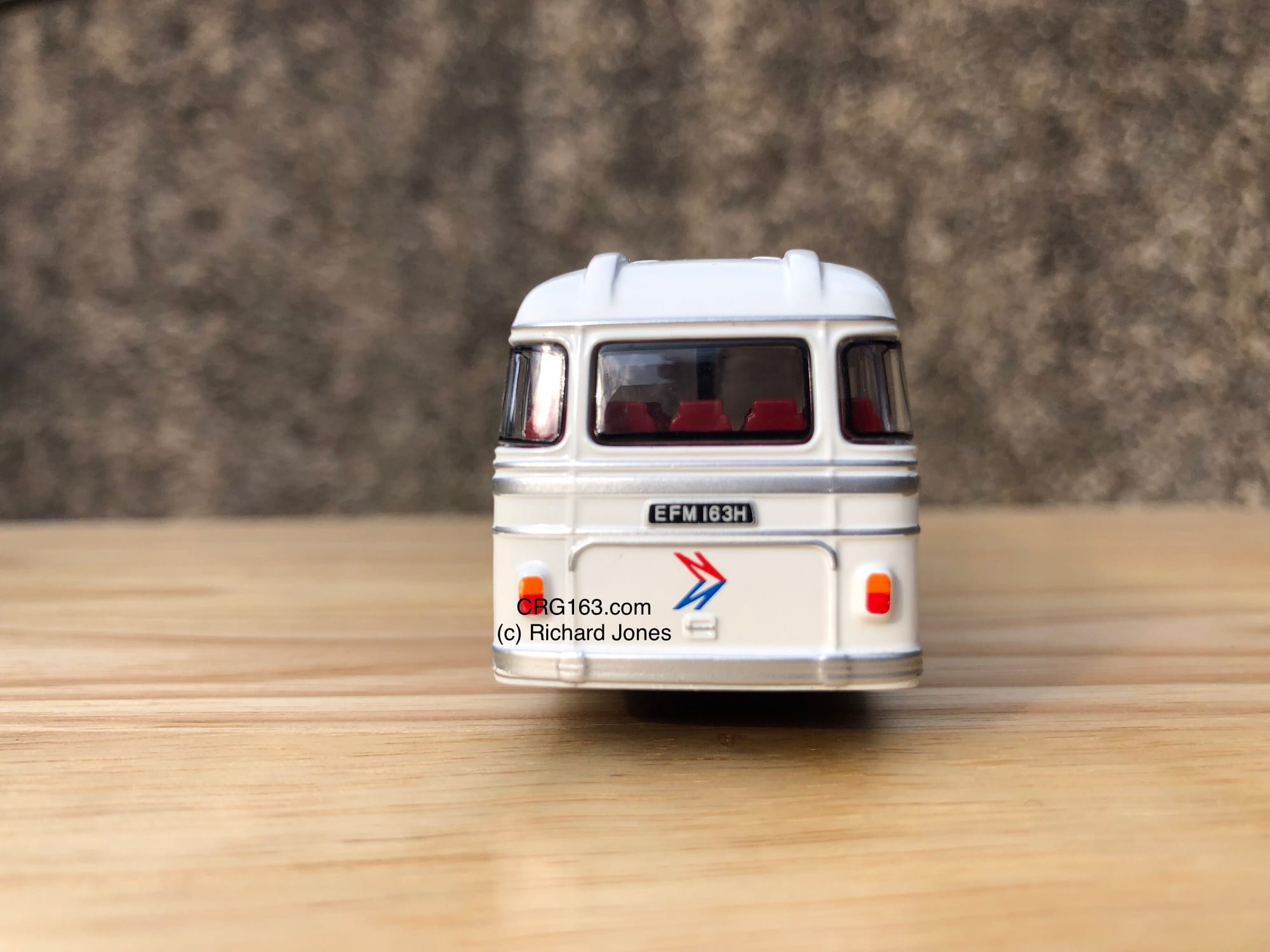


TV Appearance
 The EFE model of preserved CRG163 on BBC iplayer
The EFE model of preserved CRG163 on BBC iplayerThe EFE model of preserved CRG163 has also appeared on BBC iplayer in the programme: Timeshift: Series 10, 7 - The Modern Age of the Coach. The programme is also available on You Tube via the following web link: https://youtu.be/WQMDp2tVV-k
Contact details
If you have any photos or related information about CRG163 or any information on the parts presently required then please e-mail me, Richard Jones at post@crg163.com . Many thanks in advance.
You can also subscribe to this website by entering your e-mail address into the white box below, bottom right and click the subscription button. ⬇️
CRG163 sounds
Here are various sounds made by CRG163. The wonderful sound of the Bristol RE is quite unique. The Gardner 6HLX engine is very distinctive. The sounds captured below are different to those in the Videos page of this website.
The CRGs of 1970
CRG163 was from a batch of five coaches delivered new to Crosville in early 1970. Sadly only CRG163 survives. In all Crosville received 47 of these beautiful vehicles between 1964 and 1970. A summary of Crosville's CRG’s are below including the five vehicles in the final batch.
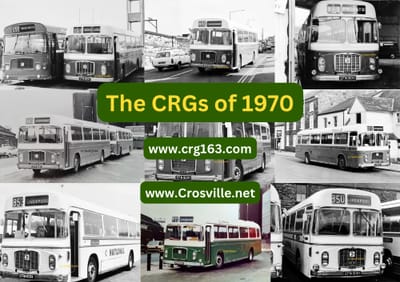
The Bristol RE was a rear engined single deck bus or coach built by Bristol Commercial Vehicle between 1962 and 1982, a manufacturer known for its innovative and robust designs. It is considered to be one of the most successful rear engined vehicles and has a huge following today, including many examples preserved such as CRG163.
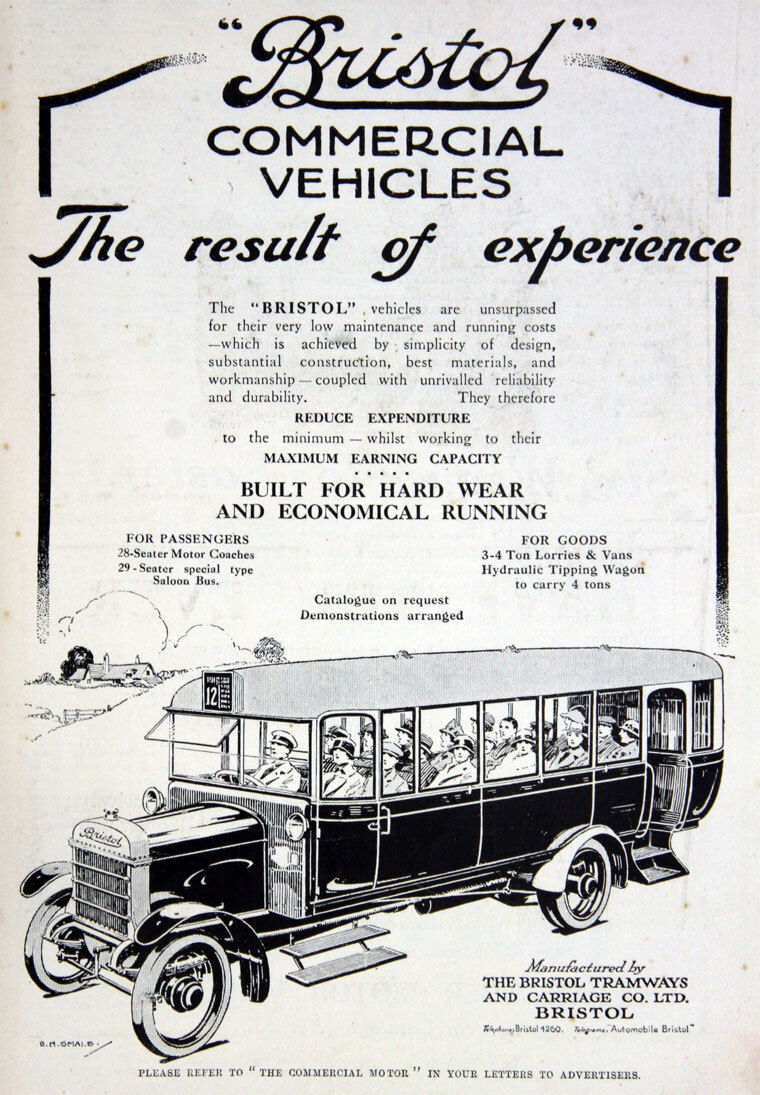
The Bristol RELH (Rear Engine, Long, High) is a significant vehicle in the history of British coach and bus transport. Known for its reliability, comfort, and engineering excellence, the RELH was a staple of long-distance and express coach services across the United Kingdom.
Powered by the Gardner 6HLX engine, the RELH was known for its fuel efficiency and longevity. The "Long" and "High" in RELH stood for its extended length and higher build, allowing for more seating capacity and greater luggage space.
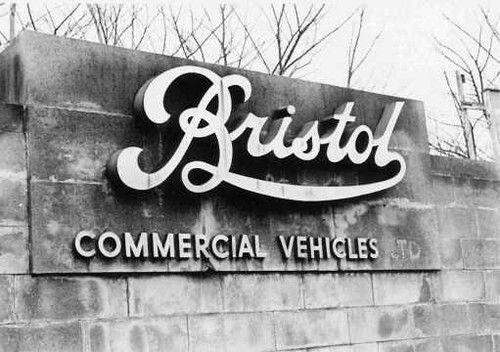
Bristol was wholly owned by the nationalised Transport Holding Company (THC) with the Bristol RE only supplied initially to subsidiaries of the THC. Leyland purchased 25% of Bristol in 1965 which led to the Bristol product being made available to non state owned bus and coach operators. Municipal bus operators and the British Electric Traction Group (BET) were also customers.
All in all Crosville would have 288 Bristol RE’s in total ranging from bus bodied examples to coaches.
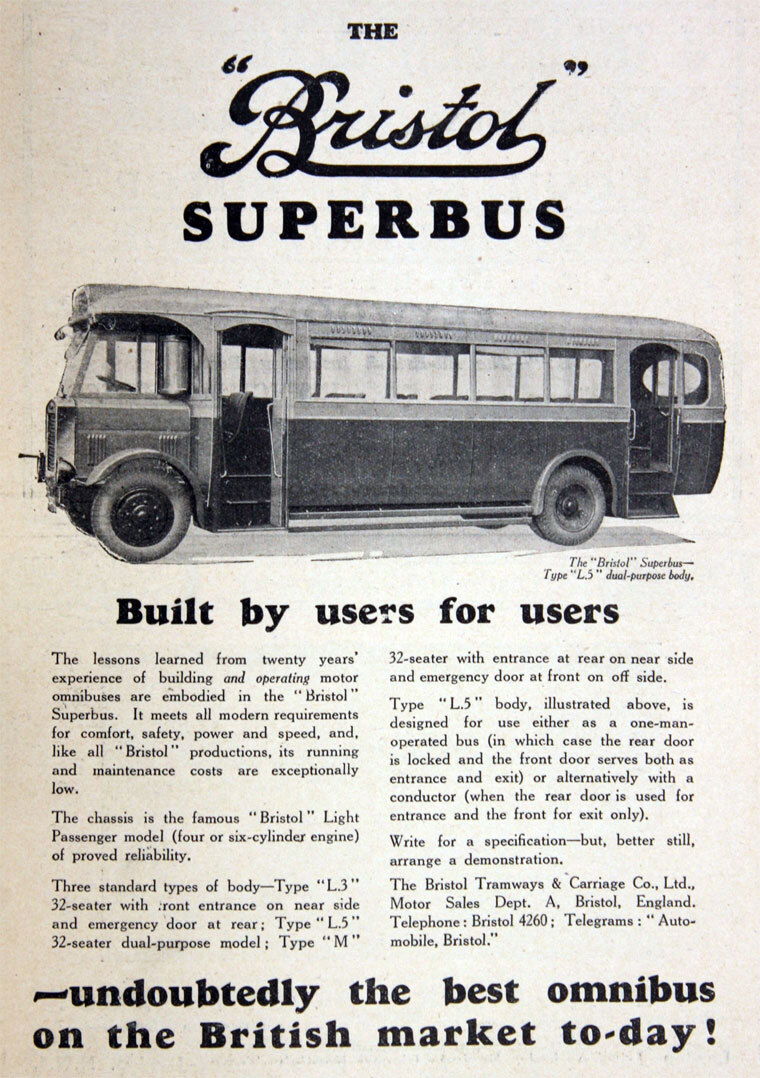
The most commonly fitted body to any Bristol RE was by Eastern Coach Works (ECW) of Lowestoft. Other manufacturers also built on the chassis such as Alexander; Duple; Plaxton.
Interestingly the Bristol RE was available in five variants from vehicle length to height (bus/coach).
The variants available were as follows:
- RELL - long vehicle length at 36 foot, low frame bus body fitted
- RESL - short vehicle length, low frame bus body fitted
- RELH - long vehicle length at 36 foot, high frame (coach or dual purpose body normally fitted). CRG163 would be RELH coach variant on ECW coach body.
- RESH - short vehicle length, high frame (coach or dual purpose body normally fitted)
- REMH - maximum vehicle length at 12m, high frame coach body fitted
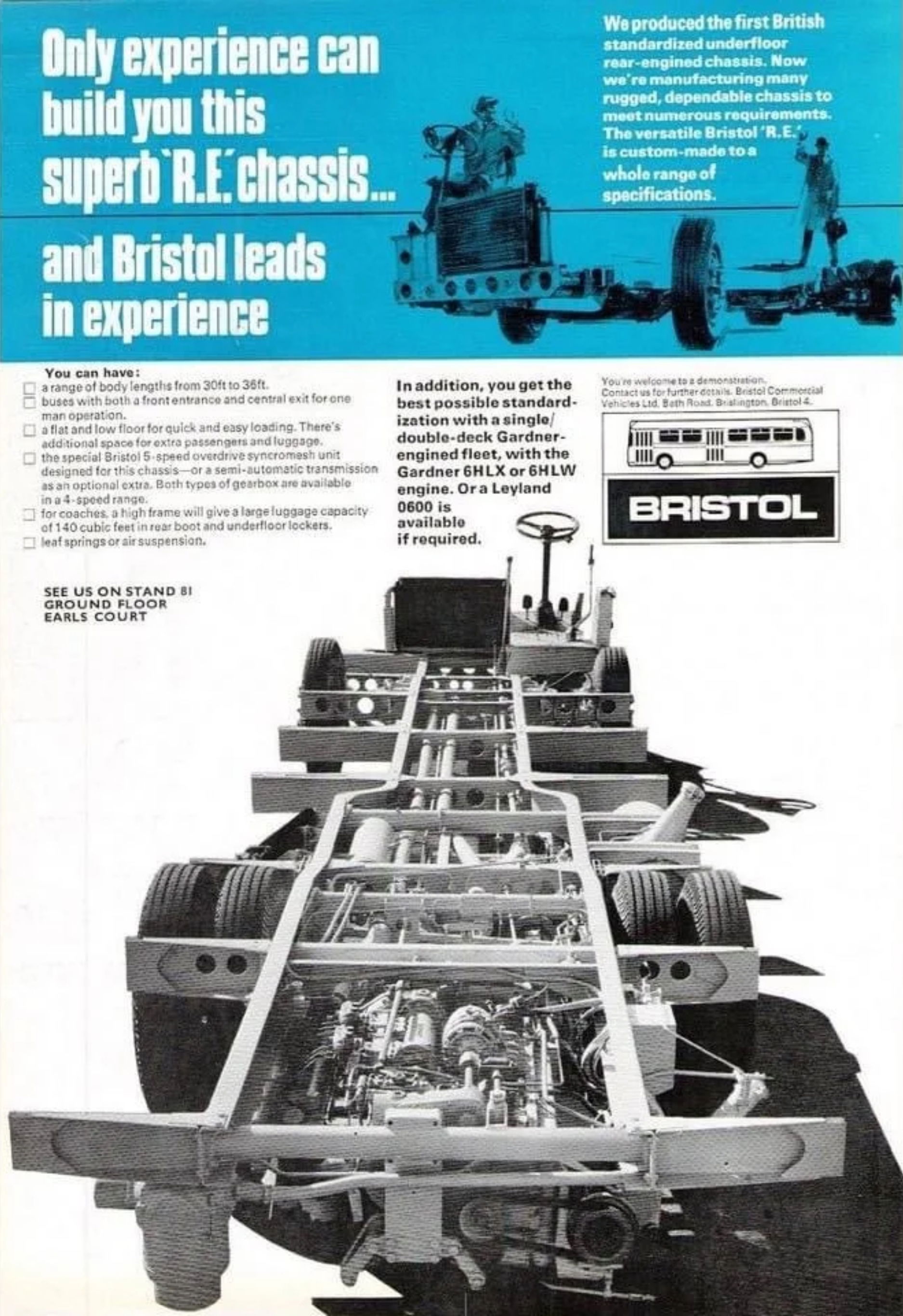
Bristol Commercial Vehicles produced three prototype RE chassis in late 1962 and early 1963.
One of the three prototypes was based upon an RELL bus chassis; and the other two were based upon the RELH chassis.
The RELL prototype was a 54 seater bus delivered to United Automobile Services in December 1962 in its Tilling red and cream livery. The chassis reference for this vehicle was REX.001, vehicle registration 7431 HN.
REX.002 followed in April 1963 and would be a RELH, high floor coach chassis. This vehicle would be registered 521 ABL, and was delivered to Thames Valley Traction’s South Midland Motor Services subsidiary in their maroon and cream livery to operate between Oxford and London. It had the stepped waist rail (bright work) a feature carried on from the latest Bristol MW coaches.
A second pre production model/prototype of the Bristol RE RELH was given chassis number REX.003. Built in July 1963 this was fitted with Bristol engine and a coach body built by ECW. It was used as a test bed by Bristol Commercial Vehicle (BCV) until February 1967, and was brought up to service standard and fitted with a Gardner engine.
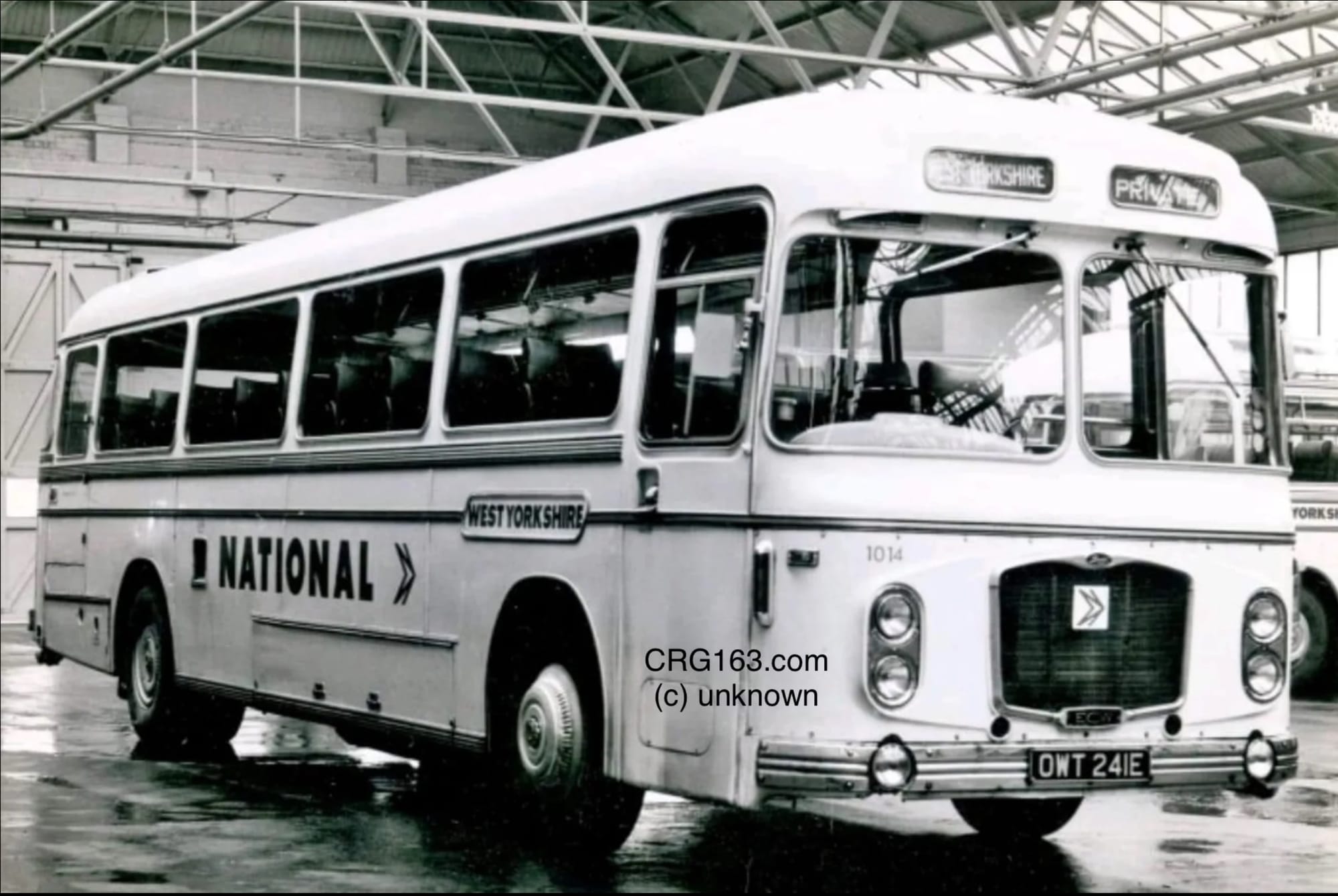 West Yorkshire 1014. Photographer unknown - but reproduced here through kind permission of Neil Halliday from his own collection.
West Yorkshire 1014. Photographer unknown - but reproduced here through kind permission of Neil Halliday from his own collection.This laterally became West Yorkshire Road Car’s CRG1 and then later it’s 1014, registration OWT241E, entering service from Harrogate depot on 01/03/67, and was withdrawn on 30/09/78.
The most popular models sold were as follows:
- RELL - 2,839
- RELH - 976 (CRG163 one of these)
- RESL - 698
- REMH - 105
- RESH - 11
The RELH was primarily used by national and regional operators for long-distance services. It was a popular choice for companies like Crosville Motor Services, which operated numerous RELHs on prestigious routes, including services to London.
Bristol RE’s were known for their mechanical reliability, with many serving well beyond their expected lifespan, a testament to their robust engineering.
Today, several Bristol RE’s are preserved by enthusiasts and transport museums, maintaining the legacy of this iconic coach, a notable example being CRG163.
The Bristol RE remains a beloved vehicle among transport historians and enthusiasts. Its combination of engineering excellence, passenger comfort, and historical significance ensures that it will be remembered and celebrated for years to come.
Crosville Bristol RELH coaches - the beautiful and elegant CRG class
Crosville took delivery of 47 new Bristol RELH Mark 1 coaches on ECW bodywork between 1964 and 1970.
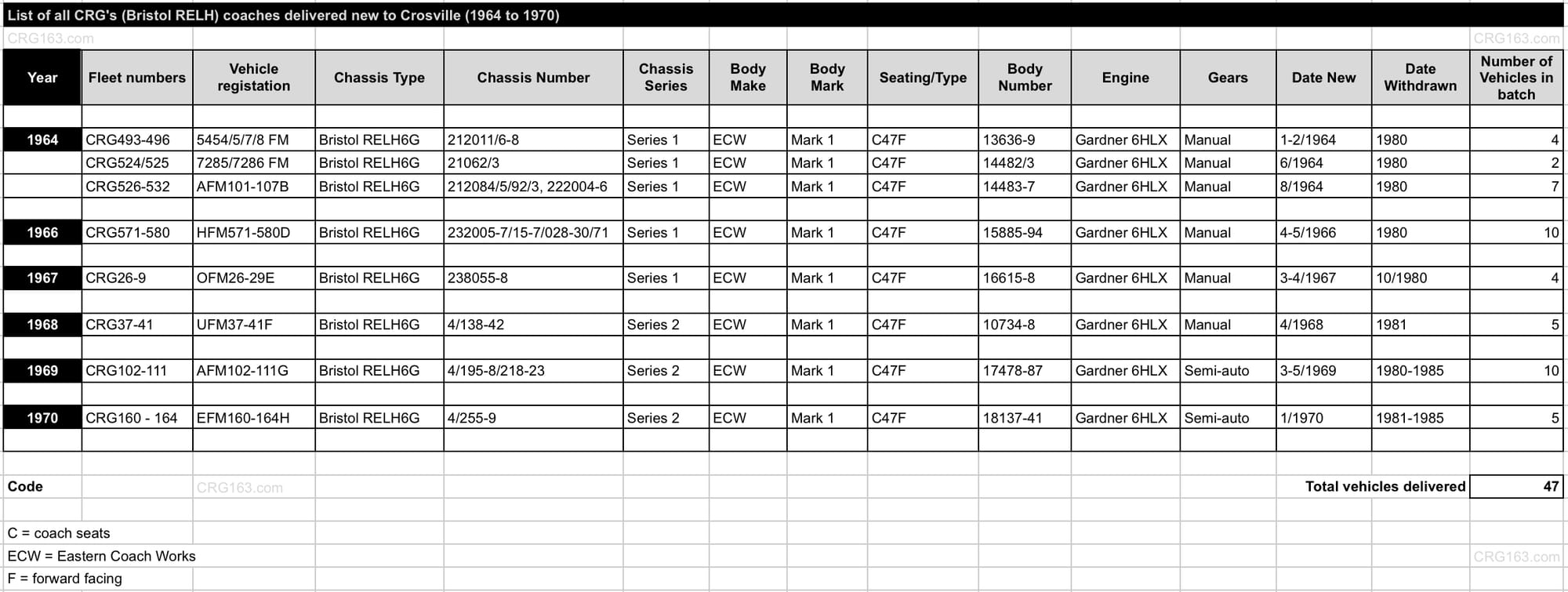
The first batch comprised of four coaches in the form of CRG493 to CRG496 which were delivered in January and February of 1964.
Below are official photographs of Crosville CRG’s as published by Crosville.
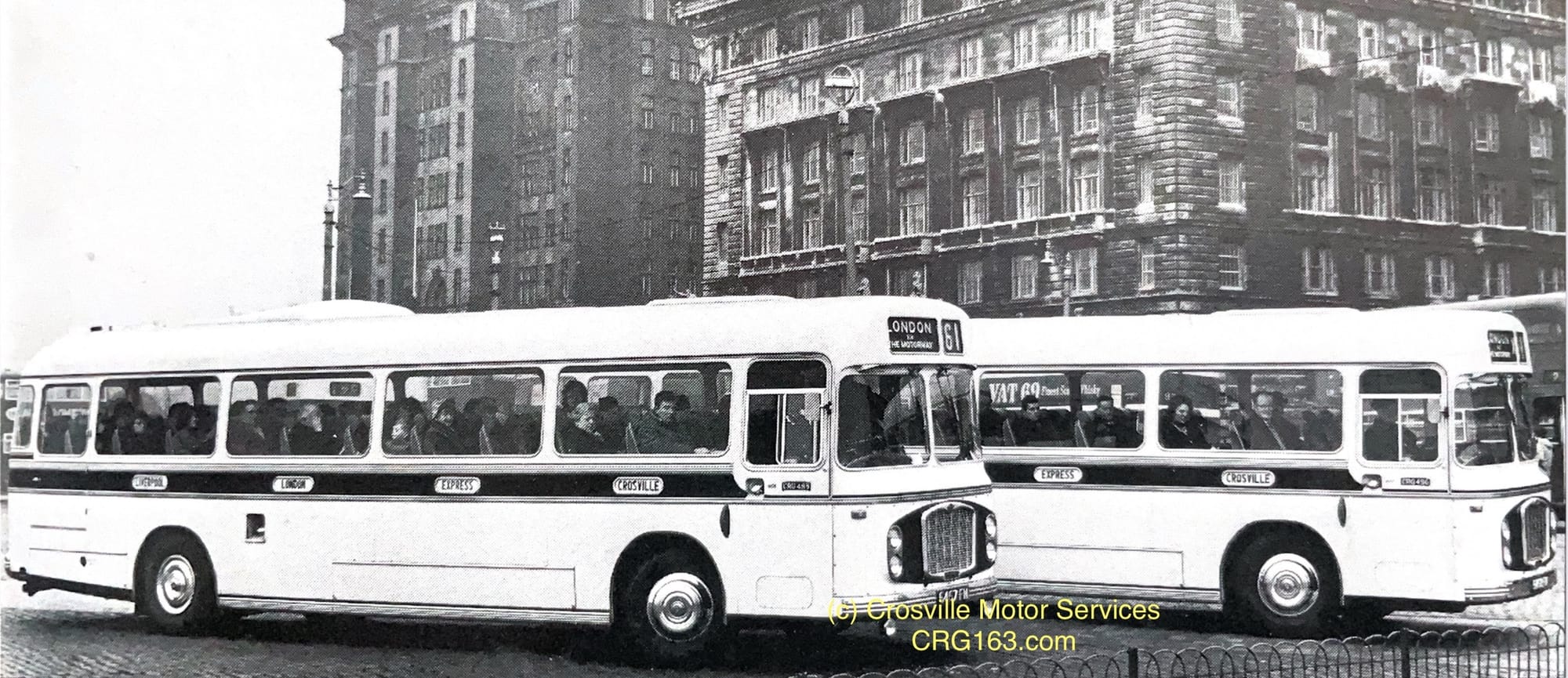 CRG495 and 496 in January 1964 departing on the X1 Liverpool to London at Mann Island. (Photo: W.J.George/CMS)
CRG495 and 496 in January 1964 departing on the X1 Liverpool to London at Mann Island. (Photo: W.J.George/CMS)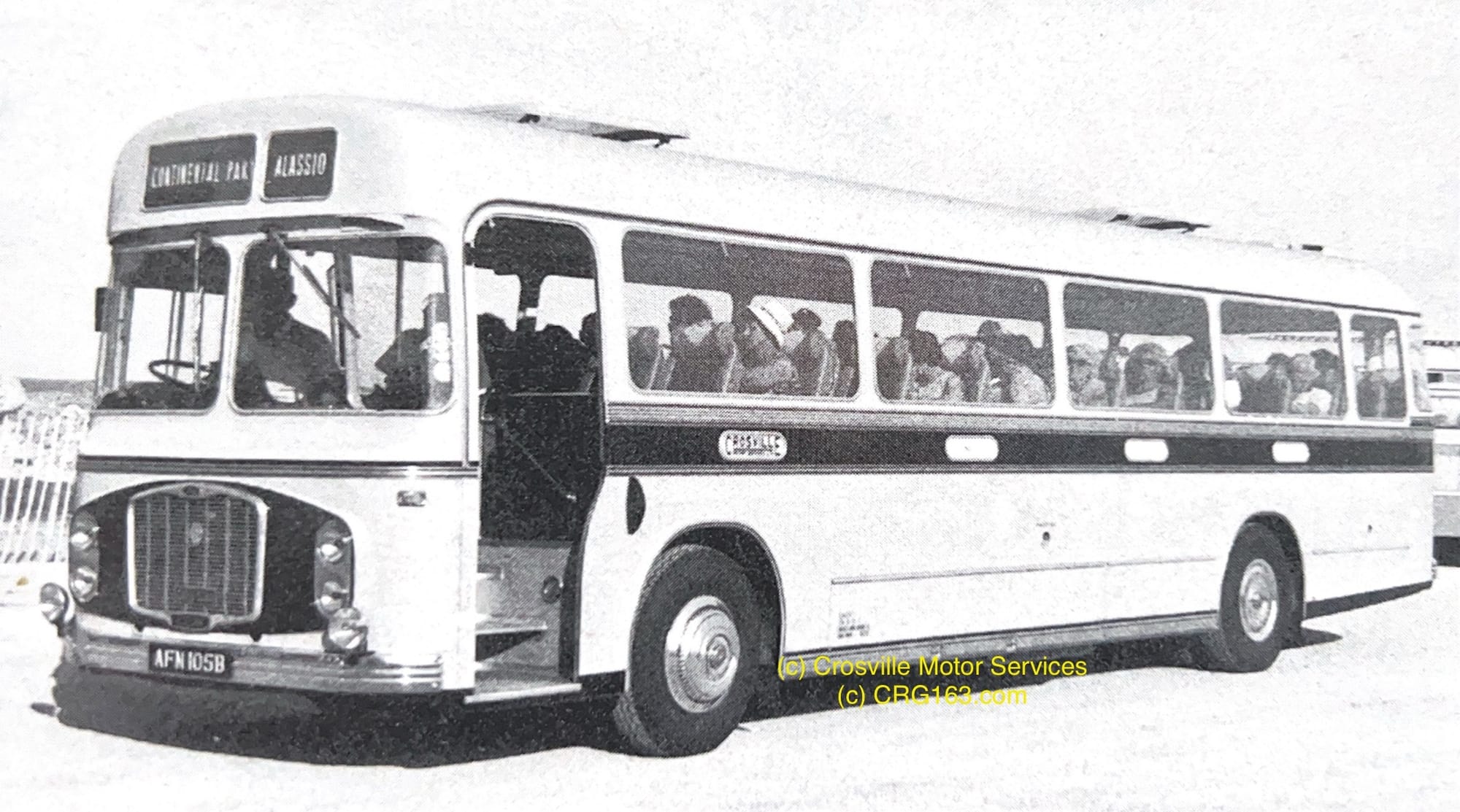 CRG530 - Italy - in house tour arranged by Stanley Hughes, North Wales Divisional Manager in 1964. One of a series of such journeys. The coach went as far as Alassio in Italy, returning via Monaco and included a special set of side panels.
CRG530 - Italy - in house tour arranged by Stanley Hughes, North Wales Divisional Manager in 1964. One of a series of such journeys. The coach went as far as Alassio in Italy, returning via Monaco and included a special set of side panels.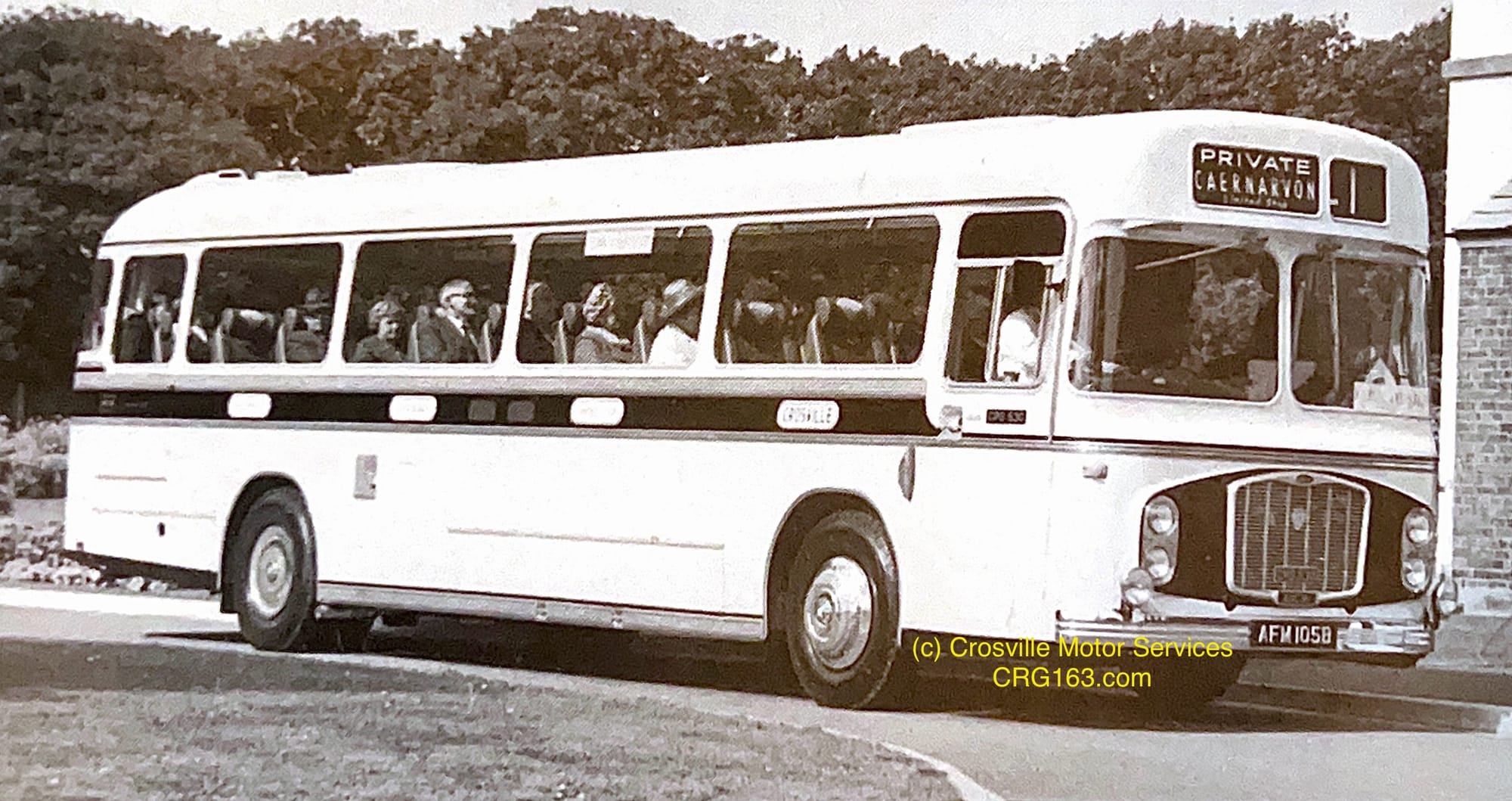 CRG530 is seen here on the first inaugural journey of the Cymru Coastliner, introduced by Crosville on the 5th of September 1965 between Caernarfon and Chester under the L1. The vehicle still displays the AA badge on the front grille from its trip to Monaco whilst the side panels have now been changed to ‘Caernarvon - Chester - Limited Stop - Crosville’.
CRG530 is seen here on the first inaugural journey of the Cymru Coastliner, introduced by Crosville on the 5th of September 1965 between Caernarfon and Chester under the L1. The vehicle still displays the AA badge on the front grille from its trip to Monaco whilst the side panels have now been changed to ‘Caernarvon - Chester - Limited Stop - Crosville’. An official photograph by Crosville Motor Services Ltd of CRG496 sweeping majestically through Chester’s Eastgate Street en route from Liverpool to London on the prestigious X1 service on 22 July 1966.
An official photograph by Crosville Motor Services Ltd of CRG496 sweeping majestically through Chester’s Eastgate Street en route from Liverpool to London on the prestigious X1 service on 22 July 1966.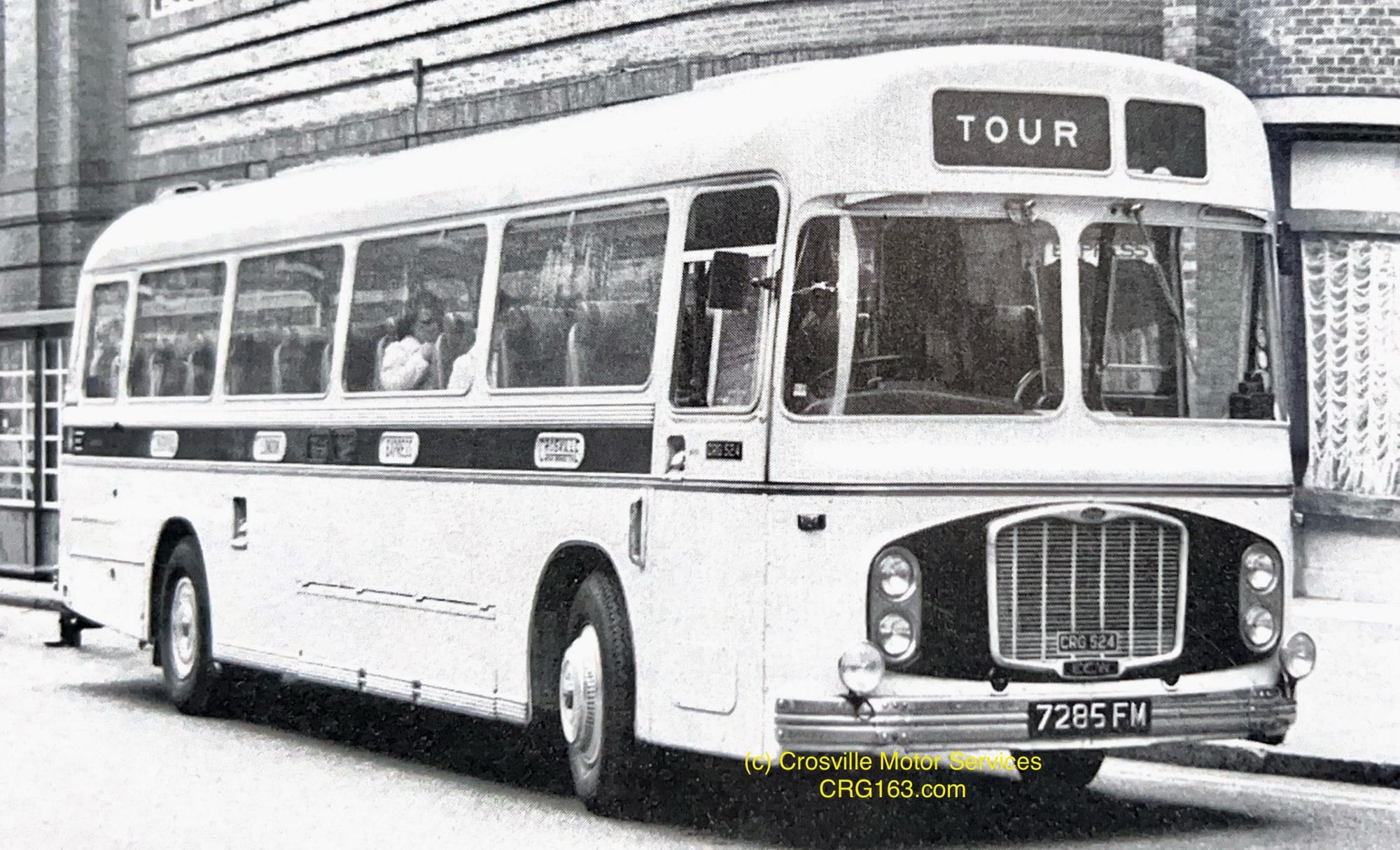 CRG524 seen here on a tour, pictured at the Odeon Cinema, Northgate Street Chester on 1st August 1968.
CRG524 seen here on a tour, pictured at the Odeon Cinema, Northgate Street Chester on 1st August 1968.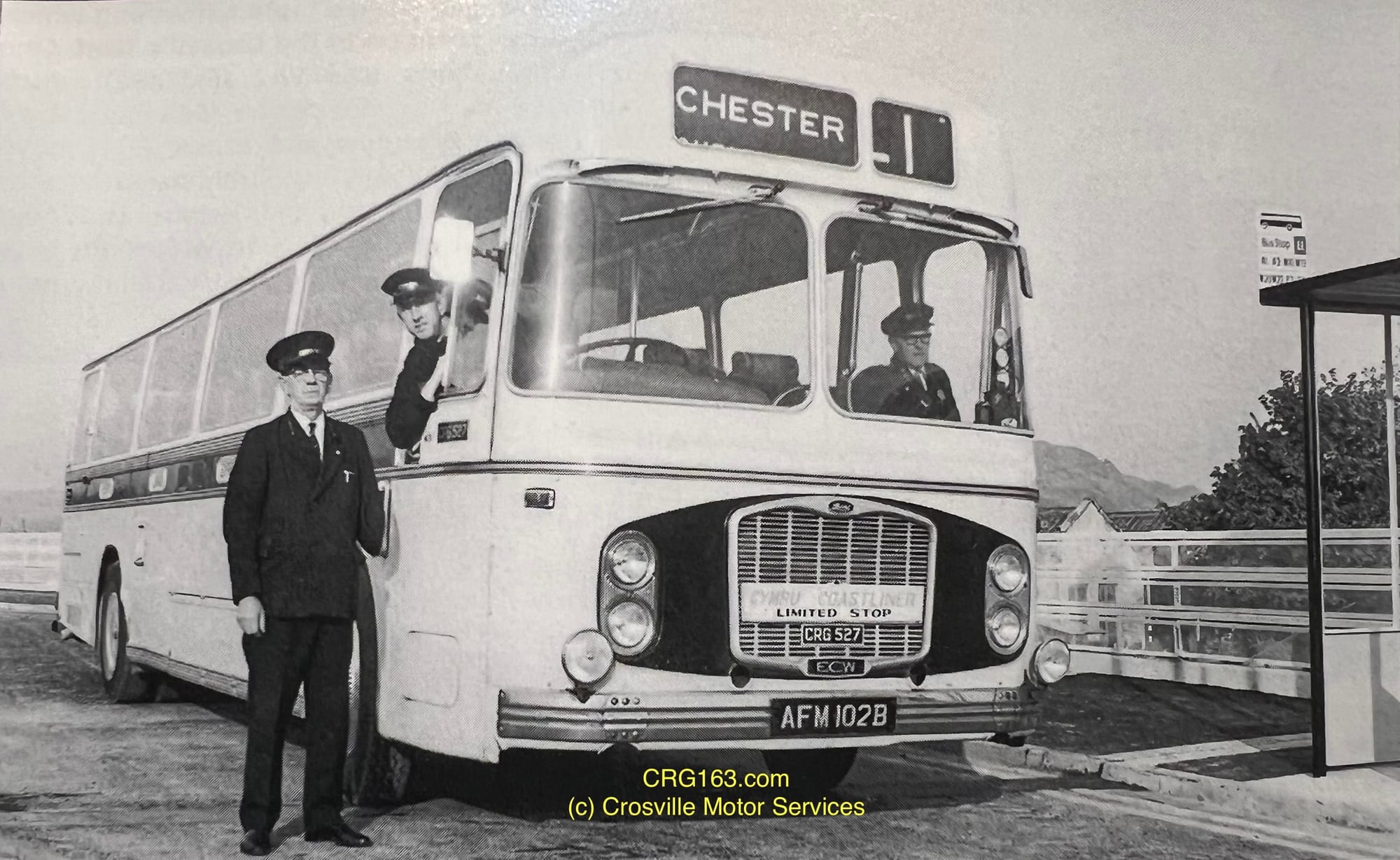 Llandudno Junction flyover - 22 May, 1969. CRG526 crosses the new flyover on the 0625 Cymru Coastliner from Bangor to Chester. Driver A. Edwards, with Conductor I. R. Roberts is seen with Inspector Ifor Williams.
Llandudno Junction flyover - 22 May, 1969. CRG526 crosses the new flyover on the 0625 Cymru Coastliner from Bangor to Chester. Driver A. Edwards, with Conductor I. R. Roberts is seen with Inspector Ifor Williams.Crosville publicity
Within Crosville’s official publicity the CRG class would feature, not only through the above photographs but also included in posters and leaflets. Examples of this are shown below.
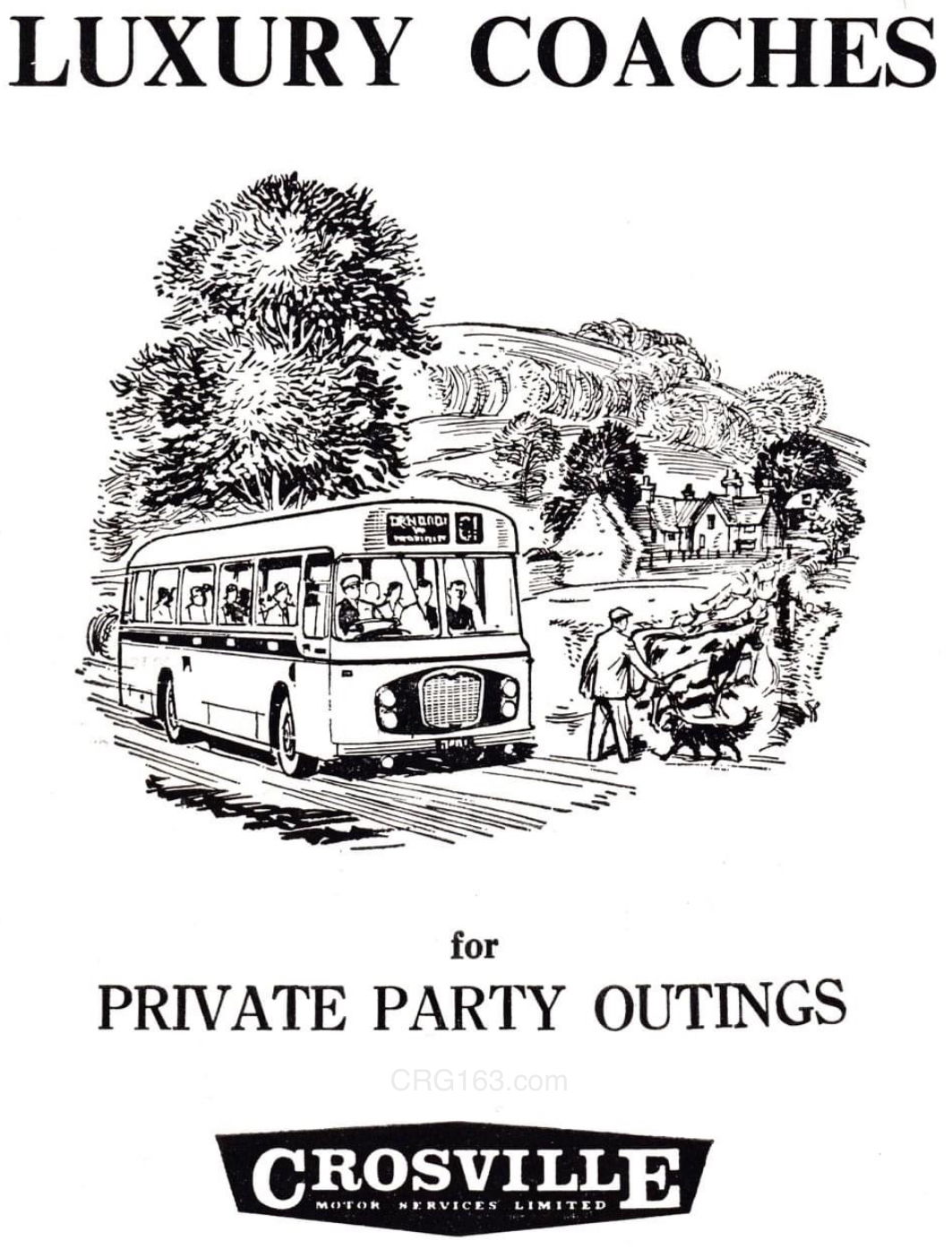
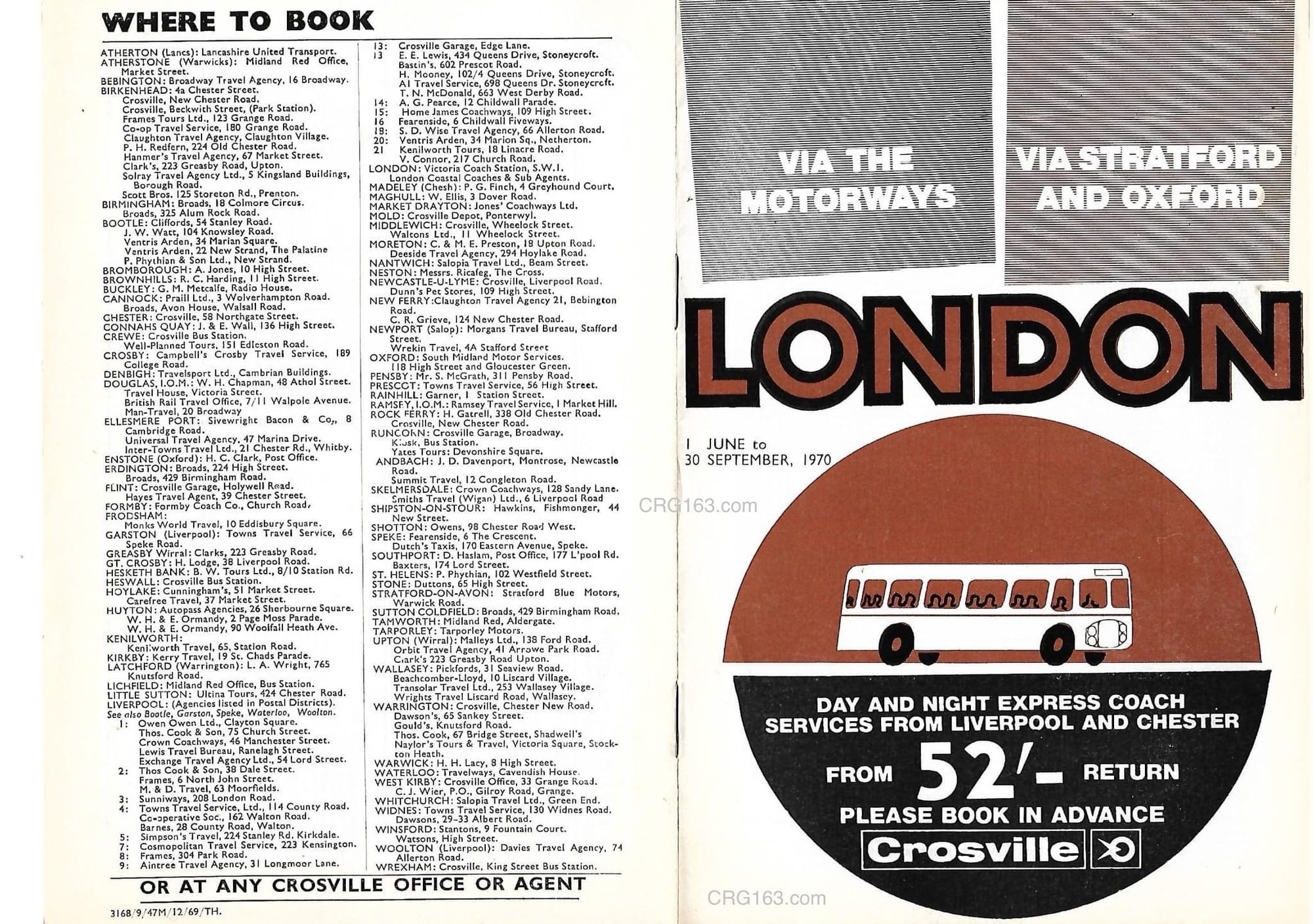
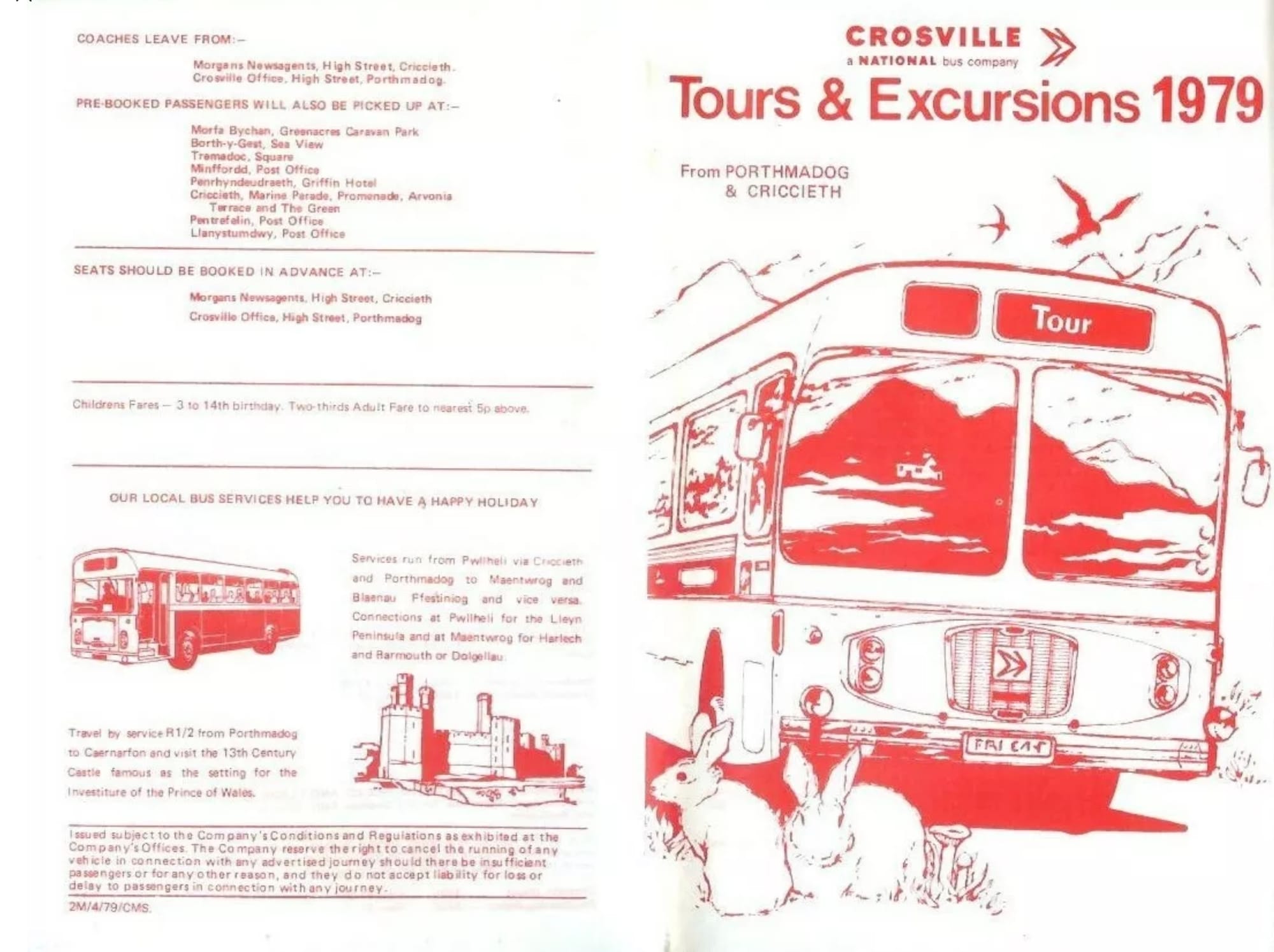
The last batch of 1970: CRG160 - CRG164
CRG163 was delivered new to Crosville Motor Services on 26 January 1970, and first registered on 6 March 1970.
CRG163 was one of five new and beautiful Bristol RELH coaches delivered to Crosville in 1970 and the final batch of this type of vehicle that the company would receive. The batch consisted of CRG160 (EFM160H) to CRG164 (EFM164H).
All in all 59 vehicles were delivered new to Crosville in 1970 of which five were coaches, that being CRG160 - CRG164.
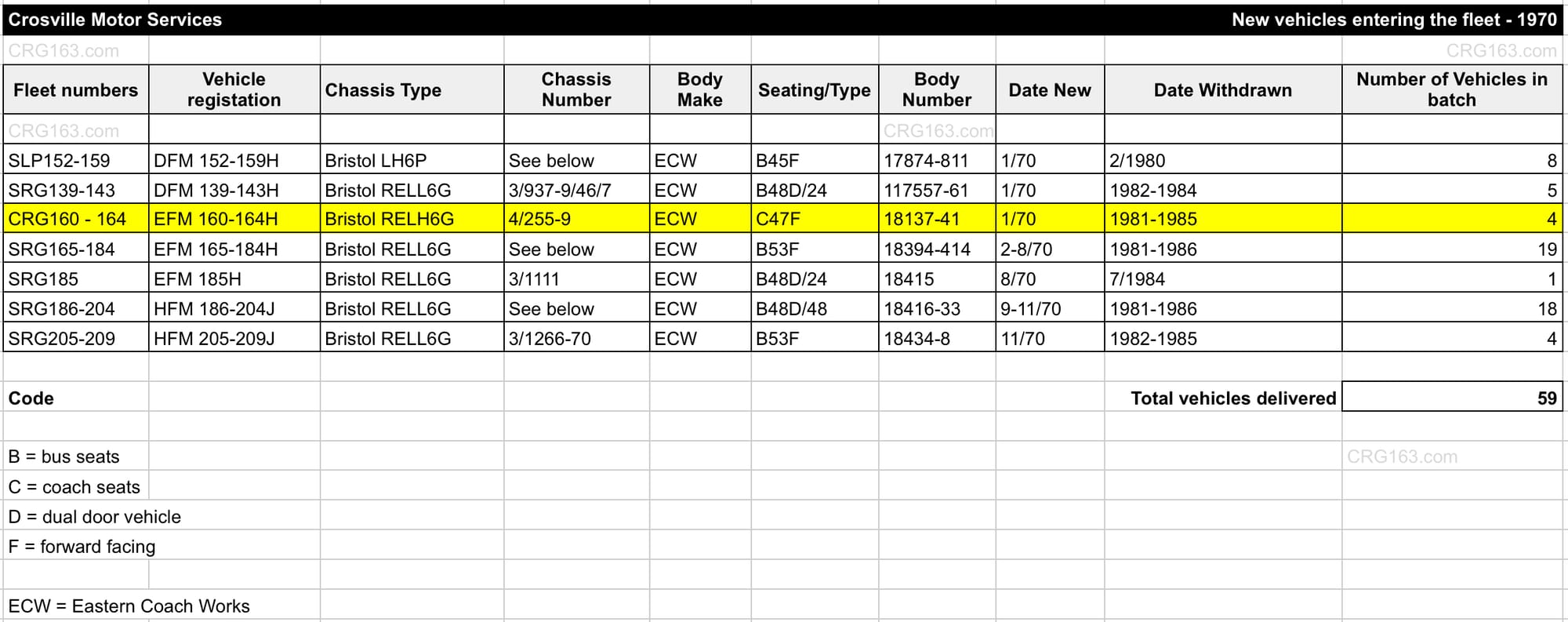
When new all five coaches were allocated to Crosville’s Edge Lane depot in Liverpool, to operate the company’s prestigious long distance scheduled coach services between Liverpool and London.
The history of each vehicle has been pieced together. Whilst introduced to the company in 1970 they were all withdrawn from service by between 1981 and 1985. There is no information available about what happened to the batch beyond being withdrawn by Crosville CRG163. The Bristol Commercial Vehicles Enthusiasts website by Rob Sly notes that each one bar CRG163 was scrapped sadly.
It appears that ERG164 was withdrawn from service as early as June 1981 which was only 11 years since new in 1970. Was there a reason why the vehicle was withdrawn so early?
If you have any information about these five coaches, or additional photographs then please get in touch by e-mailing post@crg163.com .
Crosville confirms five new coaches: 1970
Crosville Motor Services provided a regular newsletter to its staff through a company magazine called Crosville United. This would be available in the form of a soft cover book format and include updates about staff and their families, depots, company community activities and vehicles. It would be customary to include any new vehicles that would be introduced to the fleet.
Our journey in relation to these five fine vehicles goes back to Crosville United, issue number 73 from January 1970. This would provide the initial information about the upcoming delivery of five new coaches to the company in the form of CRG160, CRG161, CRG162, CRG163 and CRG164 (EFM160H - EFM164H). The cover of this very magazine issue and relevant page informing the impending delivery of these vehicles is shown below.
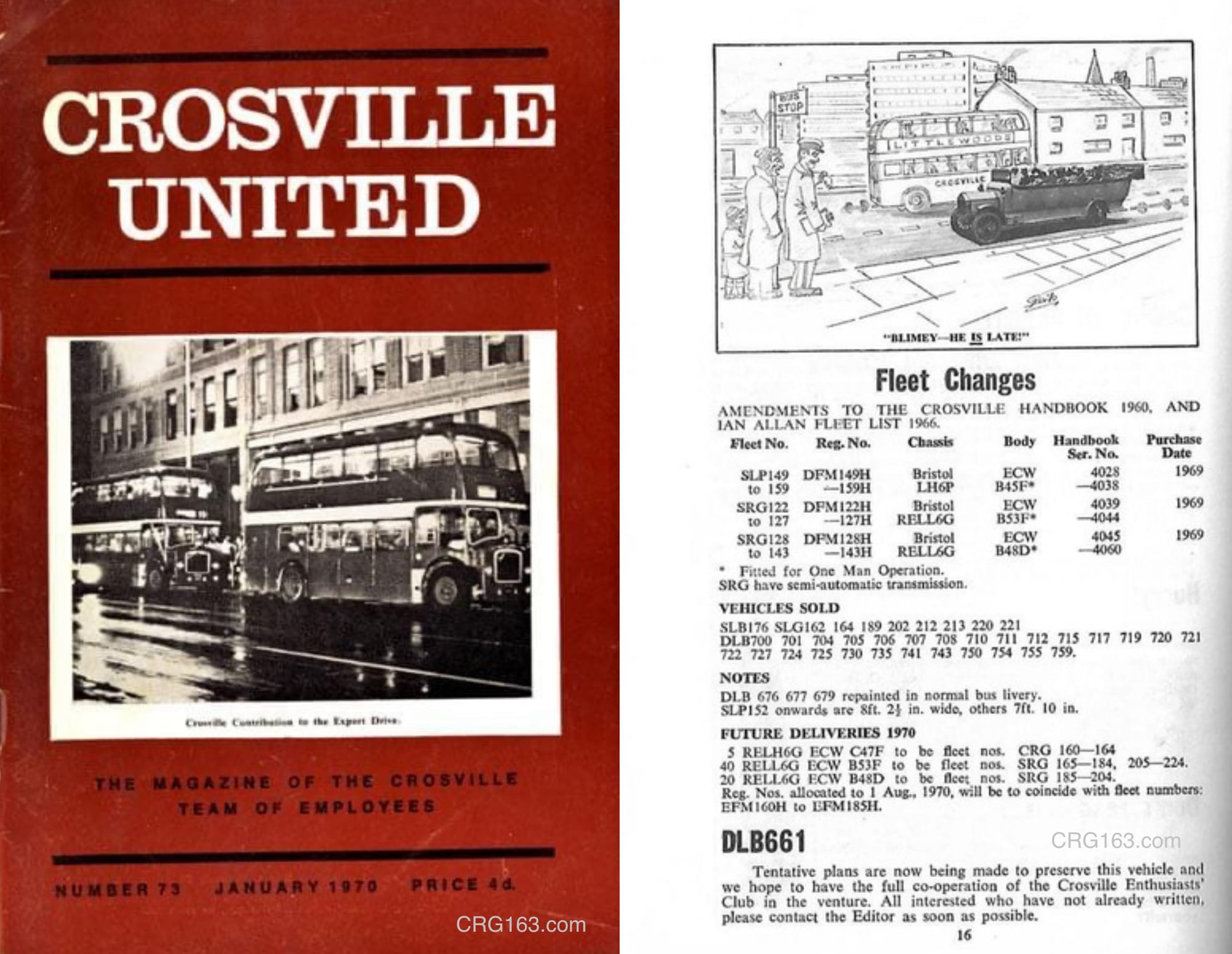
In the Crosville United edition of Spring 1970 (below), the arrival of these magnificent vehicles was confirmed as having entered the fleet. This edition of the magazine was numbered 75 as printed, however this was a typing error and as such it was issue number 74 in reality.
The printed cover of this issue and corresponding page is shown below.

On entering service the five coaches quickly settled down to their new duties at Crosville’s Edge Lane depot of operating the company’s prestigious long distance scheduled coach services between Liverpool and London.
They arrived in the company’s beautiful and elegant cream and black coaching livery which included four centre side panels on the nearside and offside of each vehicle, lighting up at night, displaying ‘CROSVILLE - LIVERPOOL - LONDON - EXPRESS’. The Mark 1 coach was truly beautiful and special, complemented fully by the wonderful cream and black coaching livery.
This livery would unfortunately only last about twelve months, favouring a more simplistic version from around 1971, replacing the four side panels each side of each vehicle with one longer panel both sides above the front wheel arch with the name ‘Crosville’ displayed in lower type font.
During 1972 the Liverpool to London service was further strengthened with the introduction of the X18 service that would predominantly operate via the motorway. CRG162 was chosen as the first vehicle that would debut and operate this new service on the 1225 departure from Liverpool Edge Lane to London. The driver would be Mr J. Martin, with Mr L. Brereton, the depot’s District Traffic Superintendent wishing him well on his journey before he set off.
The story of CRG162 first journey on the X18 service was captured again in Crosville United, issue number 82 from Autumn 1972. The story from the magazine is shown below.
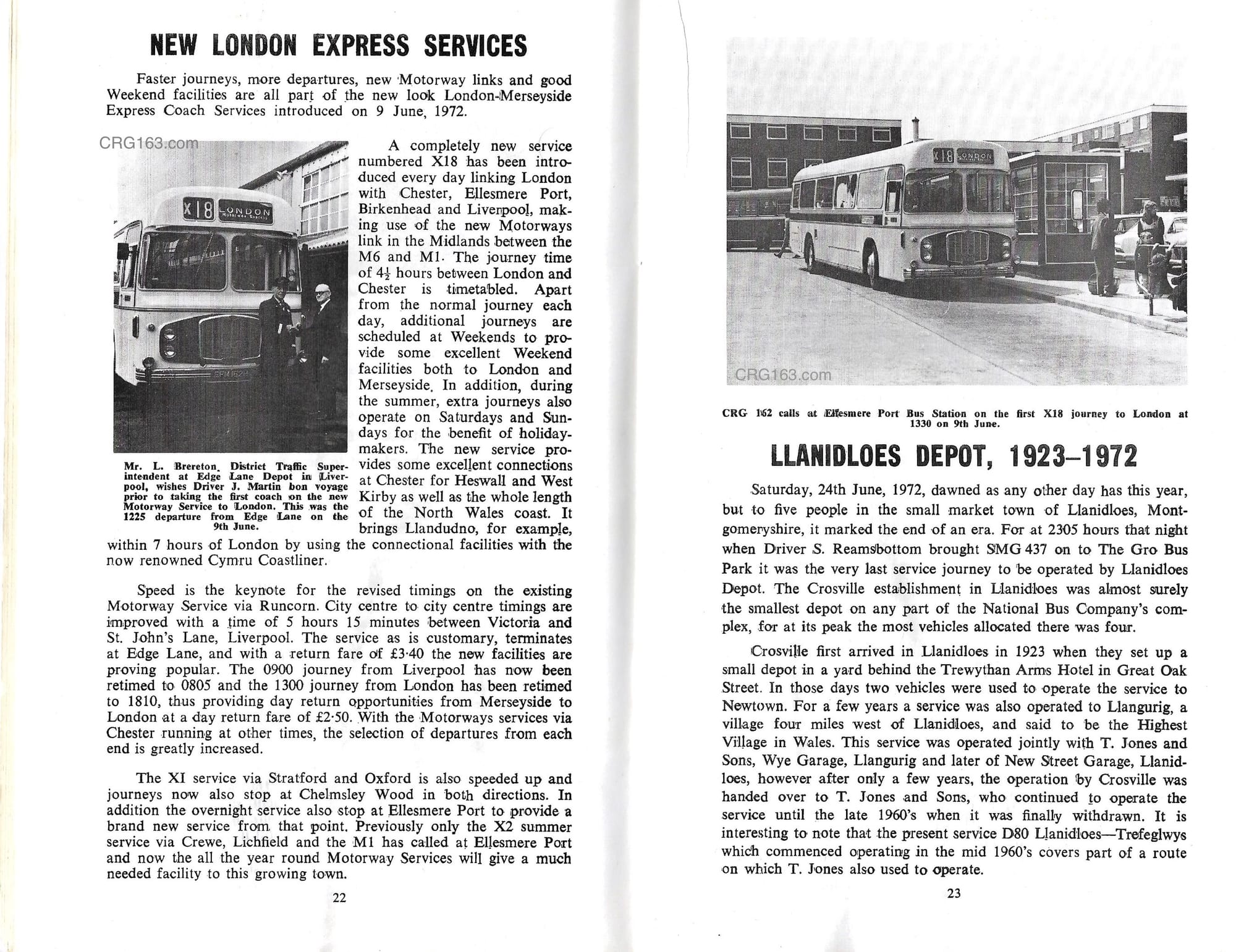
 A close up of driver J. Martin, with Mr L. Brereton, before leaving on the 1225 Liverpool to London X18 service on the 9th of June 1972.
A close up of driver J. Martin, with Mr L. Brereton, before leaving on the 1225 Liverpool to London X18 service on the 9th of June 1972.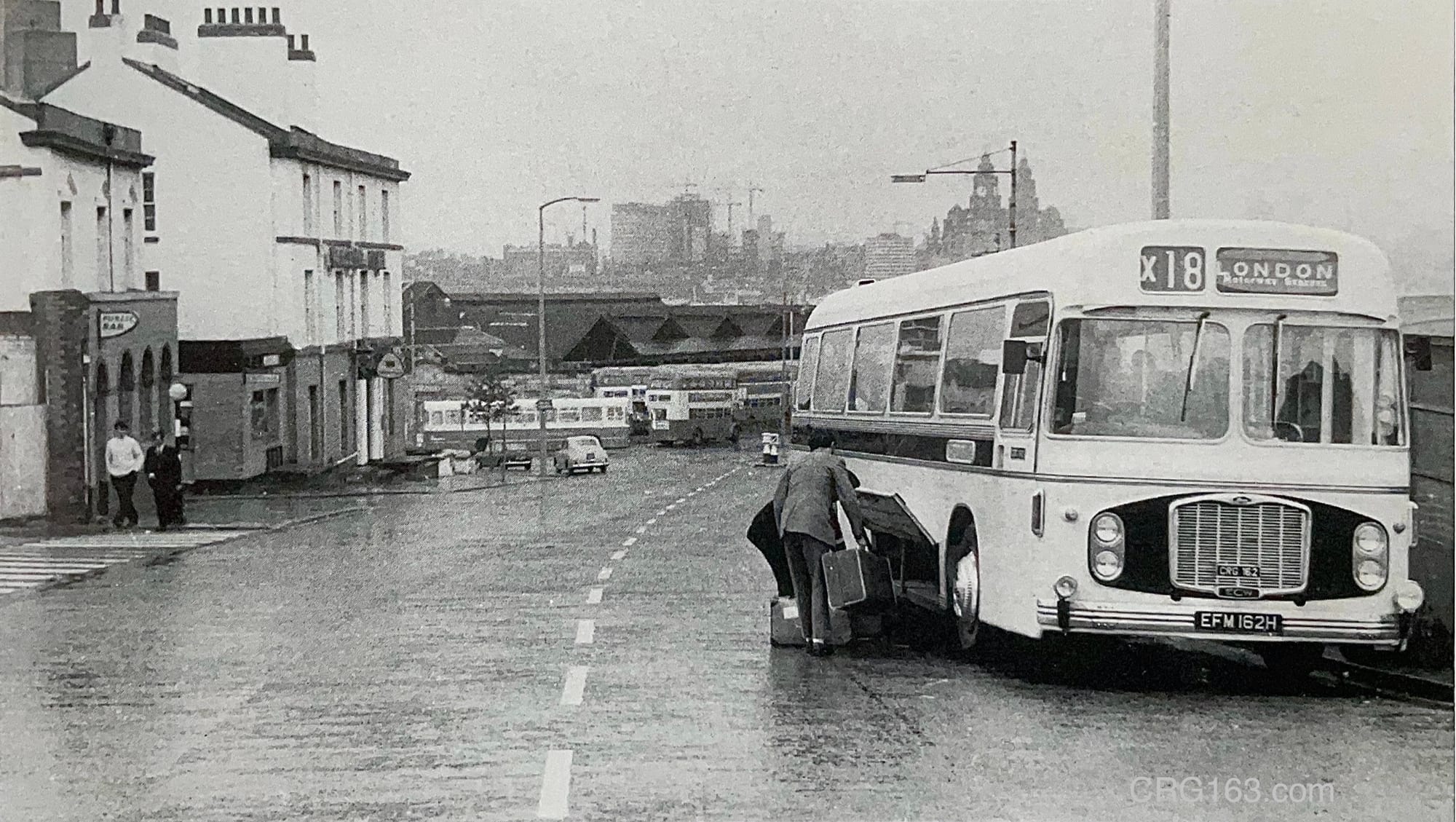 CRG162 loads up luggage at the Woodside coach stop, Birkenhead as it continues its first journey on the new X18 service on the 9th of June 1972.
CRG162 loads up luggage at the Woodside coach stop, Birkenhead as it continues its first journey on the new X18 service on the 9th of June 1972.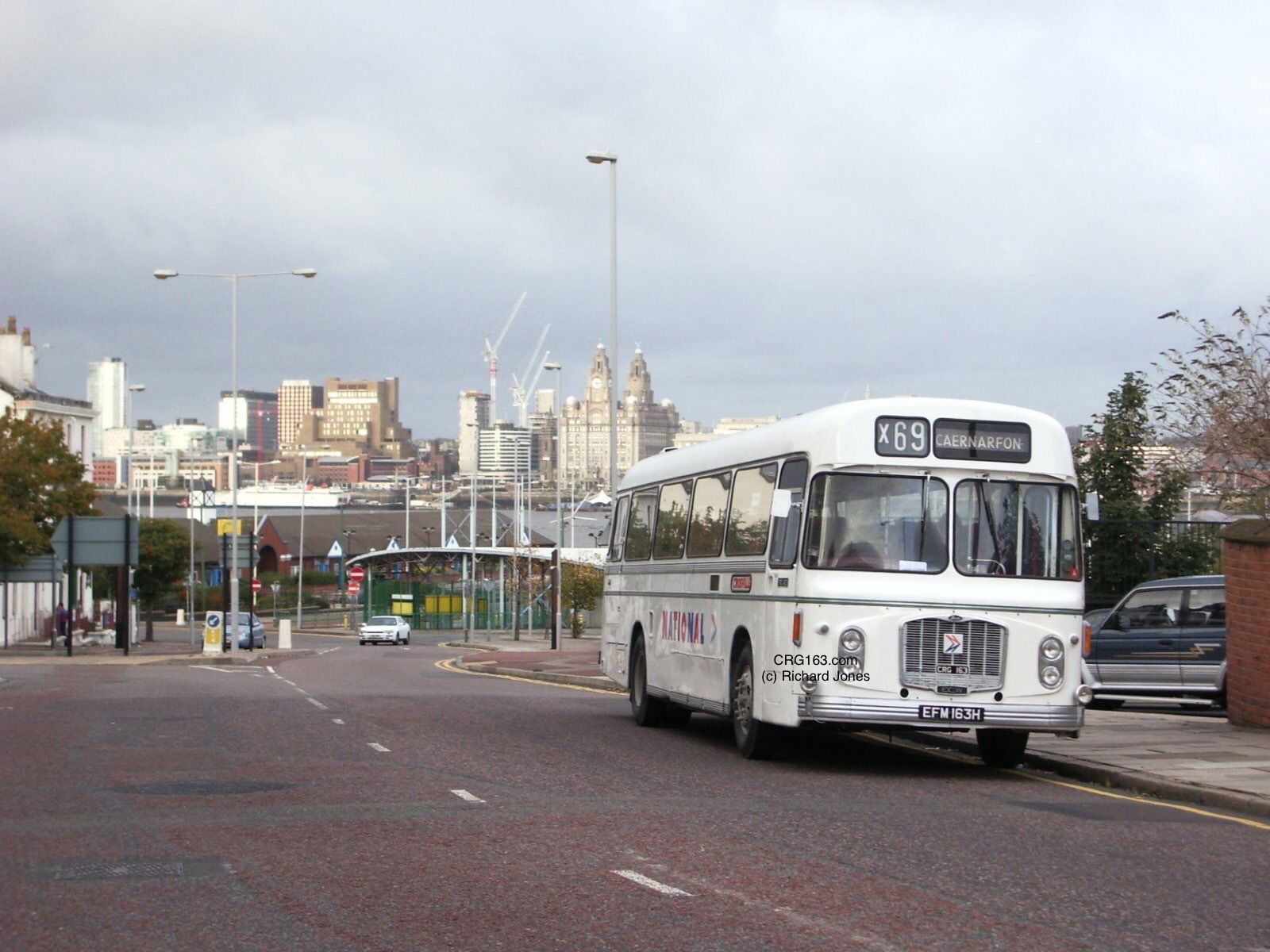 Restored and preserved CRG163 is seen here recreating the above image of CRG162, thirty three years later in 2005.
Restored and preserved CRG163 is seen here recreating the above image of CRG162, thirty three years later in 2005.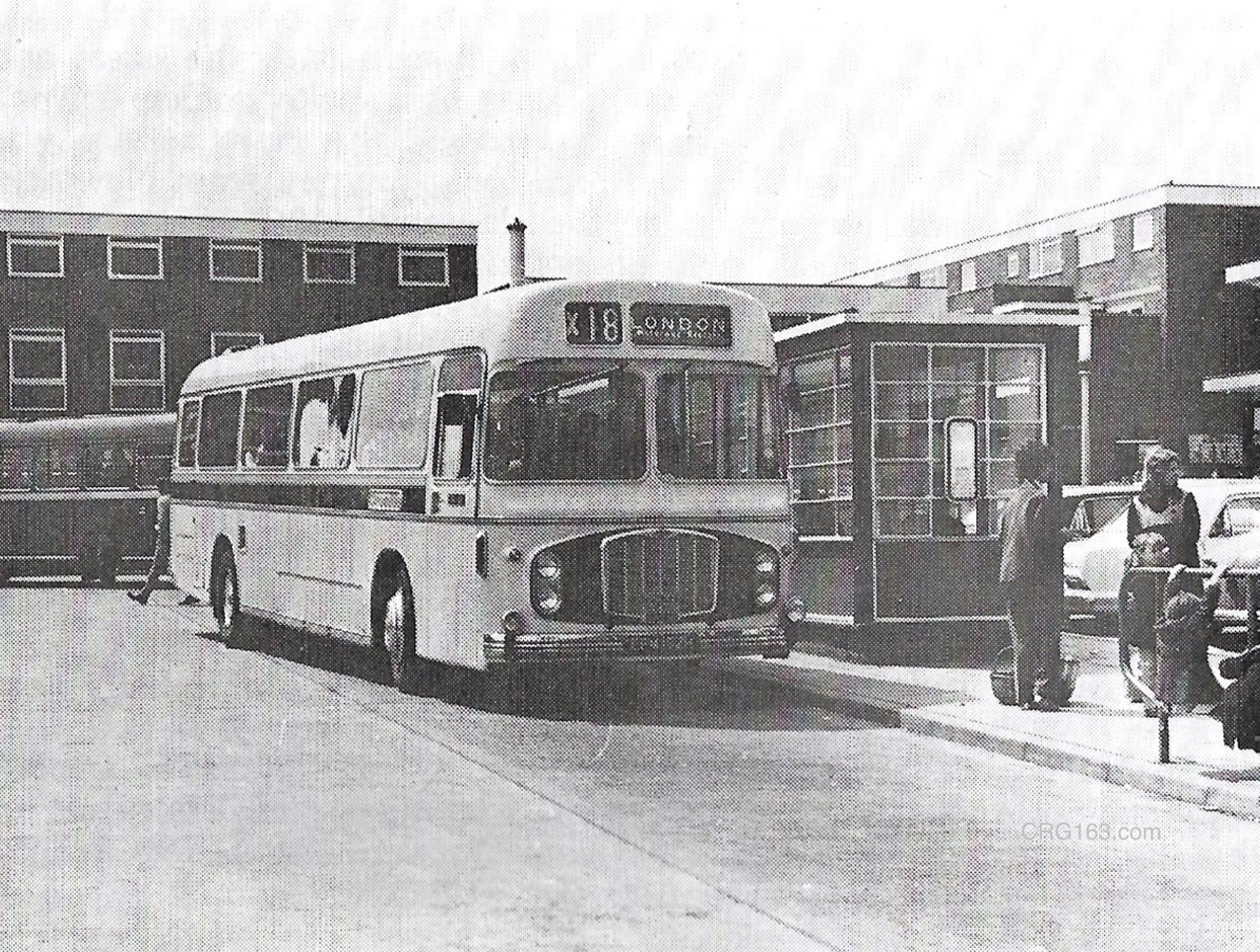
The same year Crosville introduced the next generation of Bristol RELH coach in the form of the CRL fleet class (CRL259 - CRL268). This would be the Series 2, Mark 2 Bristol RELH/ECW coaches fitted with the more powerful and faster Leyland 0.680 engine. The performance of these vehicles in terms of speed would be better than the CRG class, thus reducing the end to end journey times between Liverpool and London, and be more attractive to the passenger. This resulted in CRG160 - CRG164 being redeployed on to other long distance services over time which would included North Wales and other destinations.
From 1972 onwards the scheduled coaching element of Crosville and all other National Bus Company (NBC) subsidiaries would also see further imposed changes of conformity and co-ordination through the introduction of the NATIONAL brand. This would bring about one identity for all long distance scheduled coach services under the NATIONAL white coach brand, washing away previous coaching liveries such as Crosville’s cream and black coach livery.
With the introduction of the NATIONAL brand CRG160 to CRG164 and all other coaches would quickly be repainted into the new all white livery.
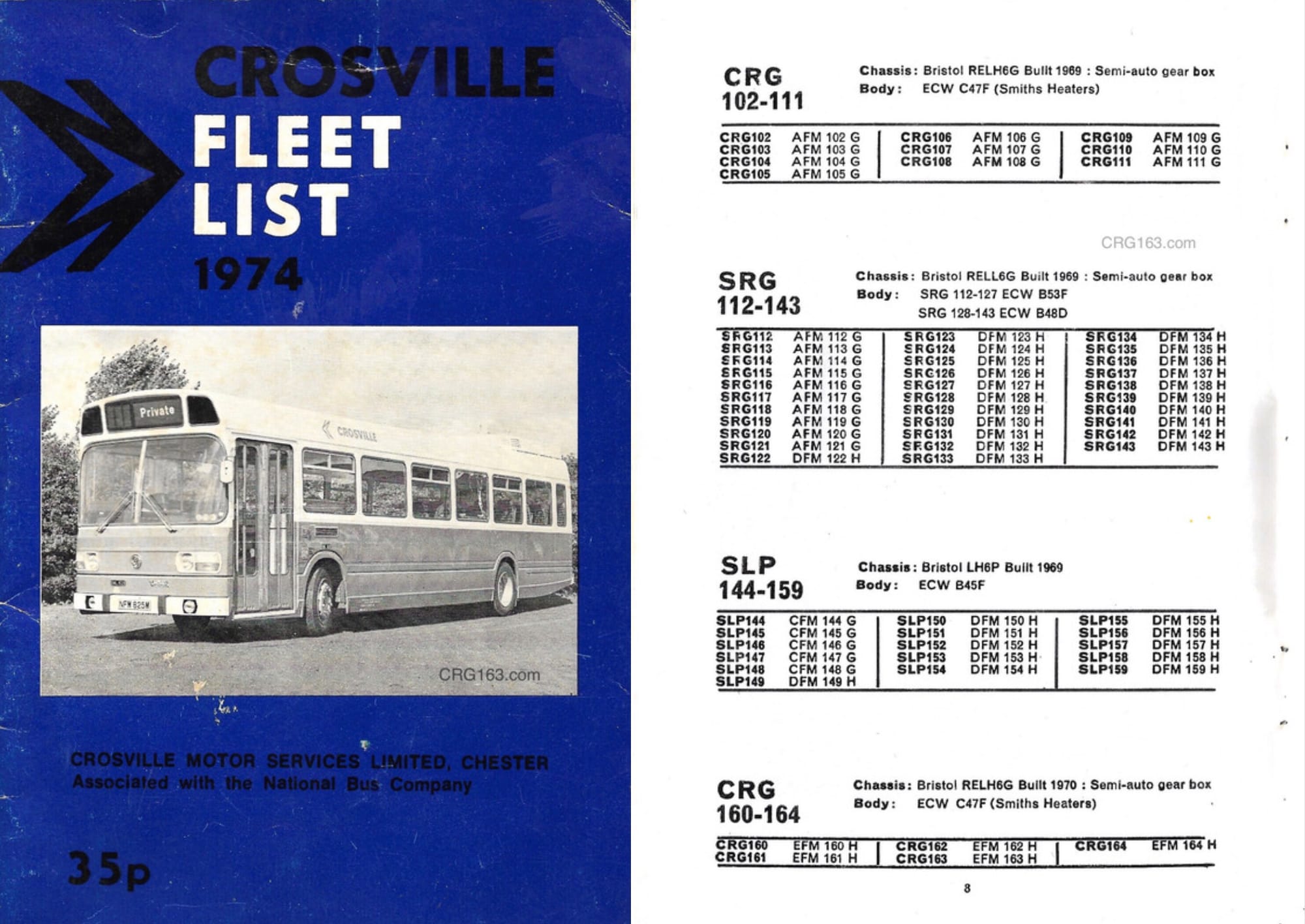
As the new CRL class of coach settled down on the Liverpool to London service, by the mid to late 1970’s, CRG160 - CRG164 would be redeployed to other depots across the company’s operational territory.
A vehicle policy of Crosville and other National Bus Companies was to downgrade vehicles of a certain age to dual purpose use, meaning that such vehicles were no longer restricted to longer distance scheduled coach services and private hire, but would now be operated on a host of services including local bus. Such vehicles would be fitted with a ticket machine and repainted into what would be called the dual purpose livery of green and white. The first letter of their fleet number would also be reclassified from ‘C’ for coach to ‘E’, signifying dual purpose use. In the case of CRG160 - CRG164 they succumbed to this process from late 1978 to late 1979, becoming ERG160 - ERG164 respectively.
Below is Crosville’s official fleet list from June 1979. CRG160 had become ERG160 by then; in the same way as CRG161 to ERG161. In August of the same year CRG164 had become ERG164 and in December CRG163 had become ERG163.
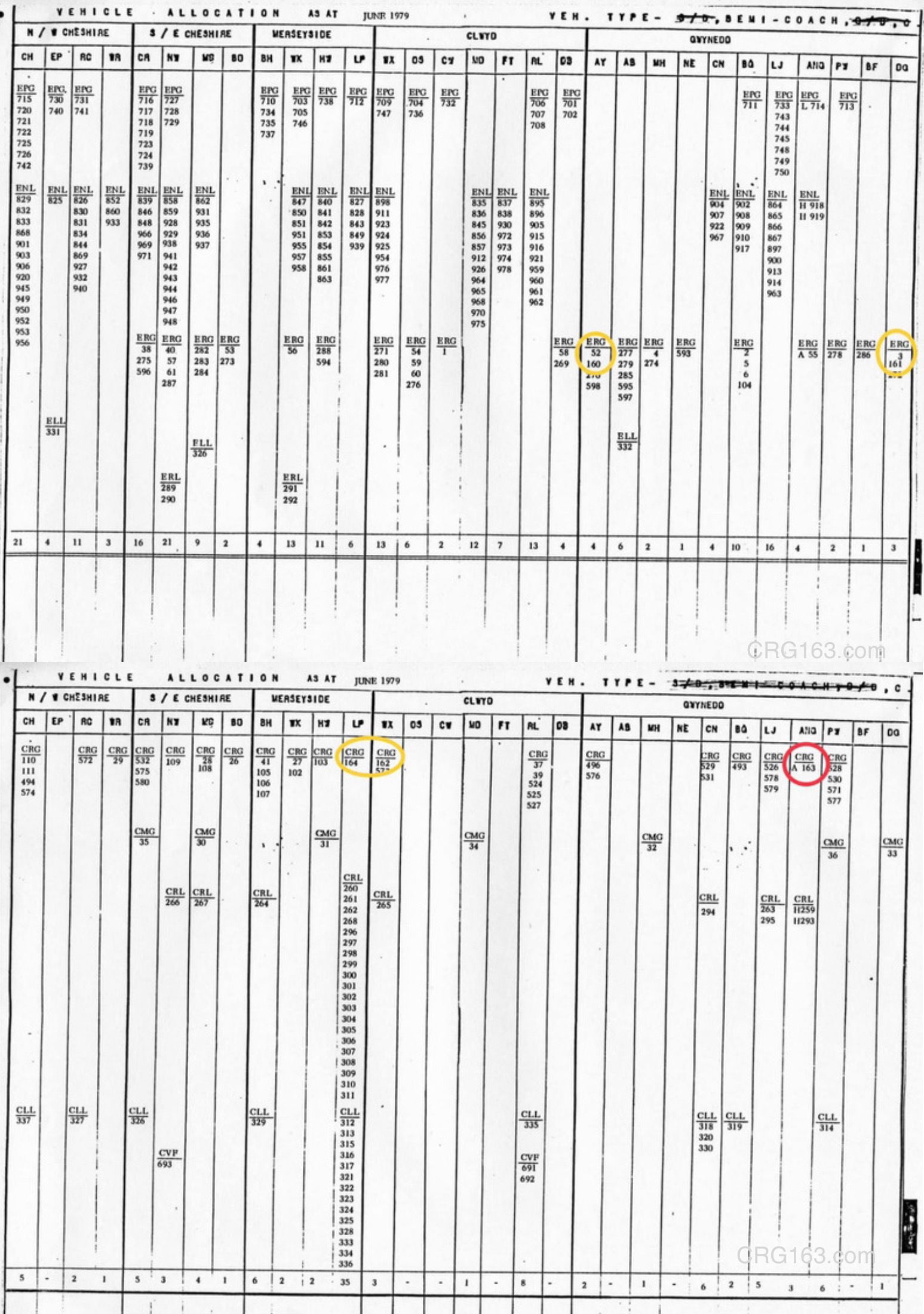
Below is Crosville’s official vehicle fleet list from 1 February 1981. Unfortunately it only provides details for Western company depots in Wales. Whilst ERG160, ERG161 and ERG163 are accounted, ERG162 is suspected to be based at Corwen depot and ERG164 suspected as being already withdrawn by the company.
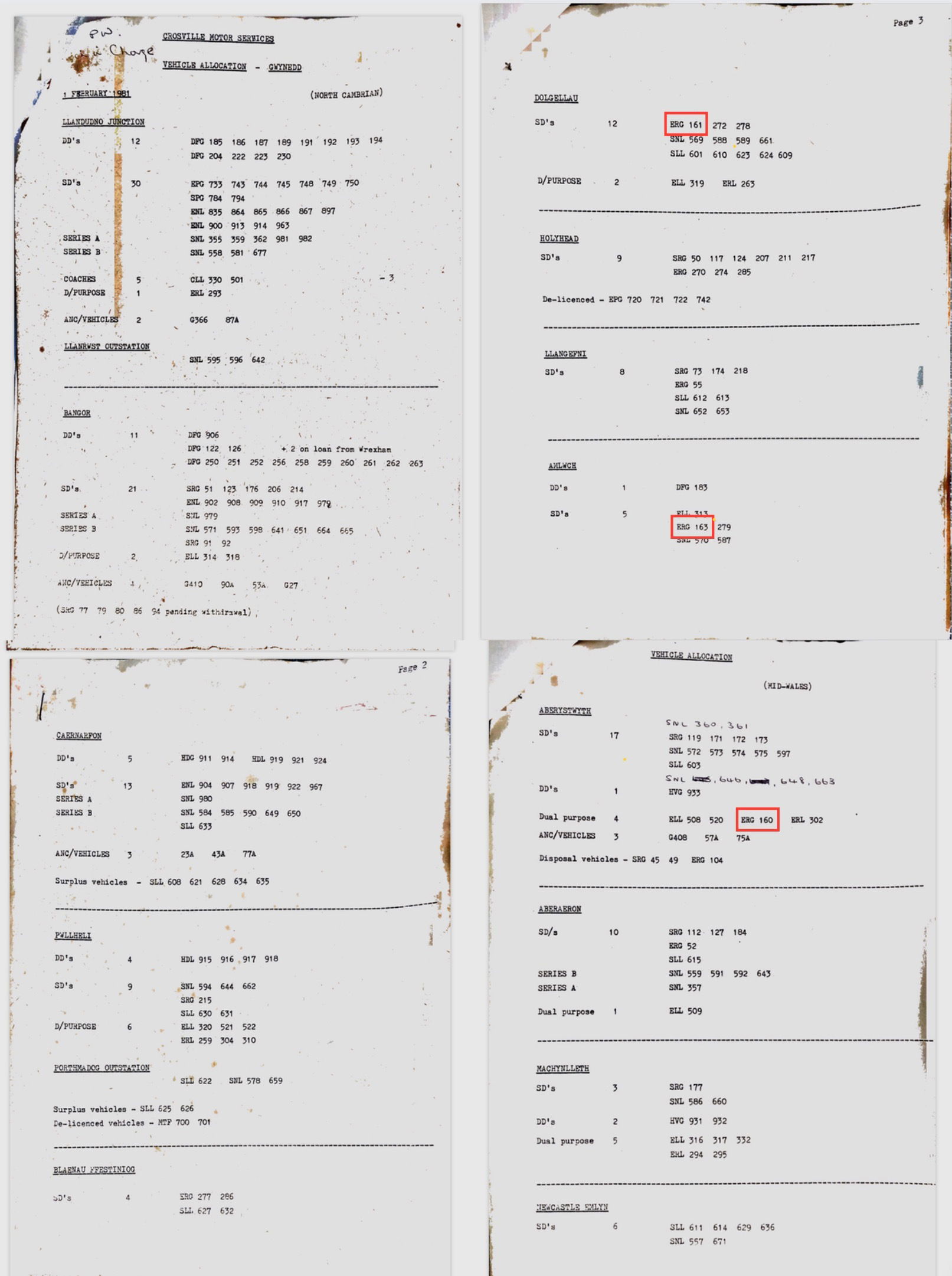
What stands out from tracing the history of these vehicles is the fact that ERG164 seems to have been withdrawn by the company as early as June 1981. There is no information that confirms why the company withdrew this vehicle at this time when only over 11 years in actual service from new. What had become of ERG162? Had the vehicle been involved in an accident in someway which forced early withdrawal?
All of the five vehicles seem to have been withdrawn by Crosville between 1981 and 1985, a period of four years. However no information is available on what happened to these fine vehicles beyond withdrawal bar that of CRG163.
If you have any further information about these five vehicles, please get in touch by e-mailing post@crg163.com .
A summary of CRG160 - CRG164 in pictures
Below is a summary profile for each of the vehicles in this batch delivered to Crosville in 1970.
This is supported by fantastic images of the five vehicles as captured by camera back in the day.
Can I please take the opportunity to say how very lucky we are to have had photographers back in the day who took the time and trouble to document Crosville and these fantastic vehicles through the lens.
Below we have truly amazing photographs captured by a number of people on this page and dotted throughout this website. These photos have been kindly provided for reproduction on this website and specifically for this page by:
- John Buchan
- Mike Lambden
- John Lee
- Andrew Marks
- Keith Mason
- Stephen Monaghan
- Don McKeown
- Geoff O’Brien
- Graham Senior
- Geoff Smith
- Grahame Warehame
Thank you very, very much for being allowed to reproduce your wonderful photographs here.
Such people are photographic historians and we are indebted to these people with our grateful thanks. Having such images keeps Crosville, these vehicles and many others very much alive and vivid to us all and future generations. Thank you very, very much.

CRG160 (EFM 160H)
Vehicle profile
New: 02/1970
Initial fleet number: CRG160
Registration number: EFM160H
Chassis type: Bristol RELH6G
Chassis number: RELH-4/255
Body make: Eastern Coach Works (ECW)
Body number: 18137
Seating: C47F
Engine: Gardner 6HLX
Gearbox: Semi-auto
Year downgraded: 1978
Downgraded fleet number: ERG160
Depot allocations: Liverpool Edge Lane; Aberystwyth
Liveries carried: Cream & black coaching; simpler cream & black coaching; National white; dual purpose green and white including ‘De Cambria Crosville’ transfers
Year withdrawn from service: 02/1983
Life beyond Crosville: not known, believed to be scrapped
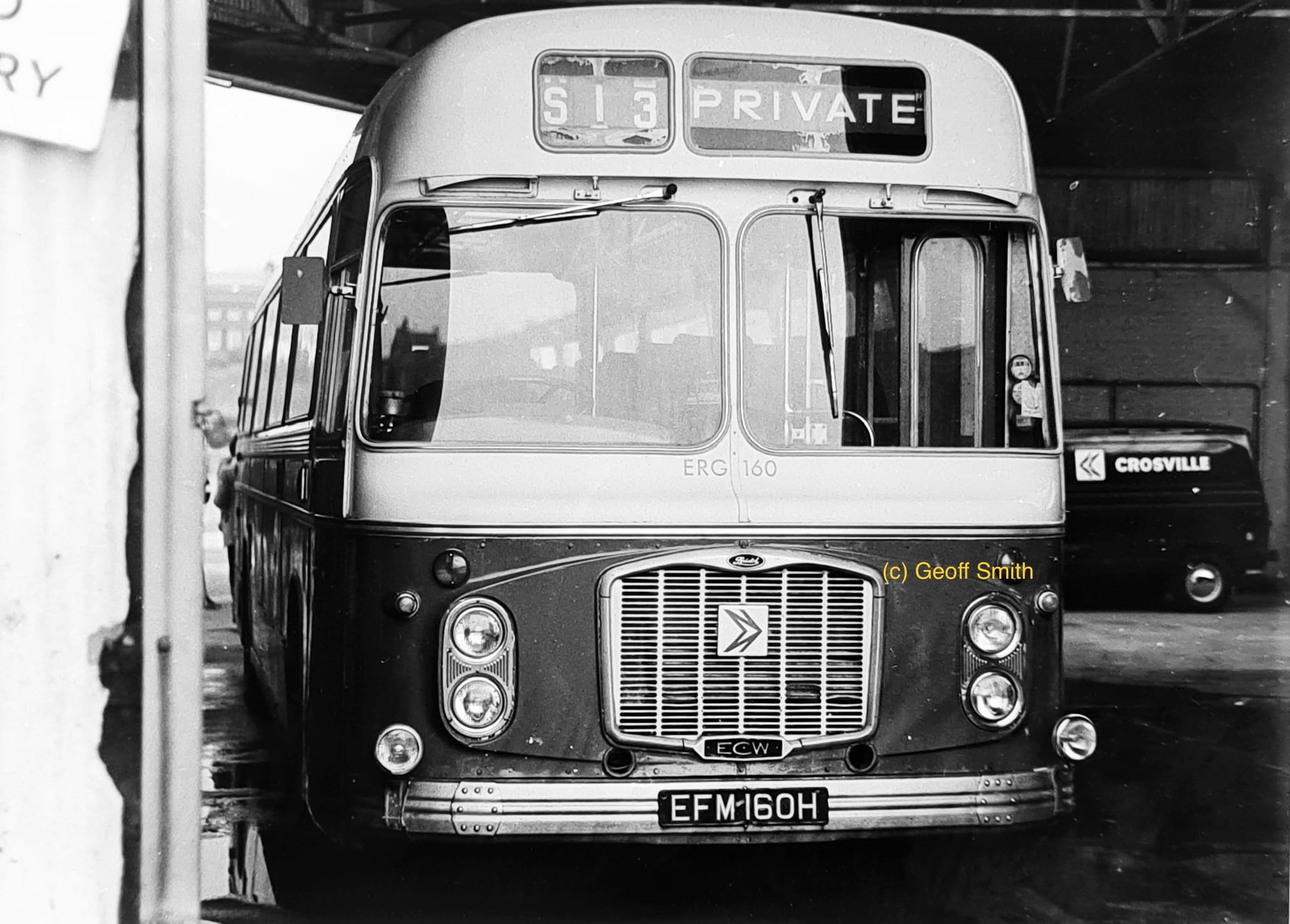
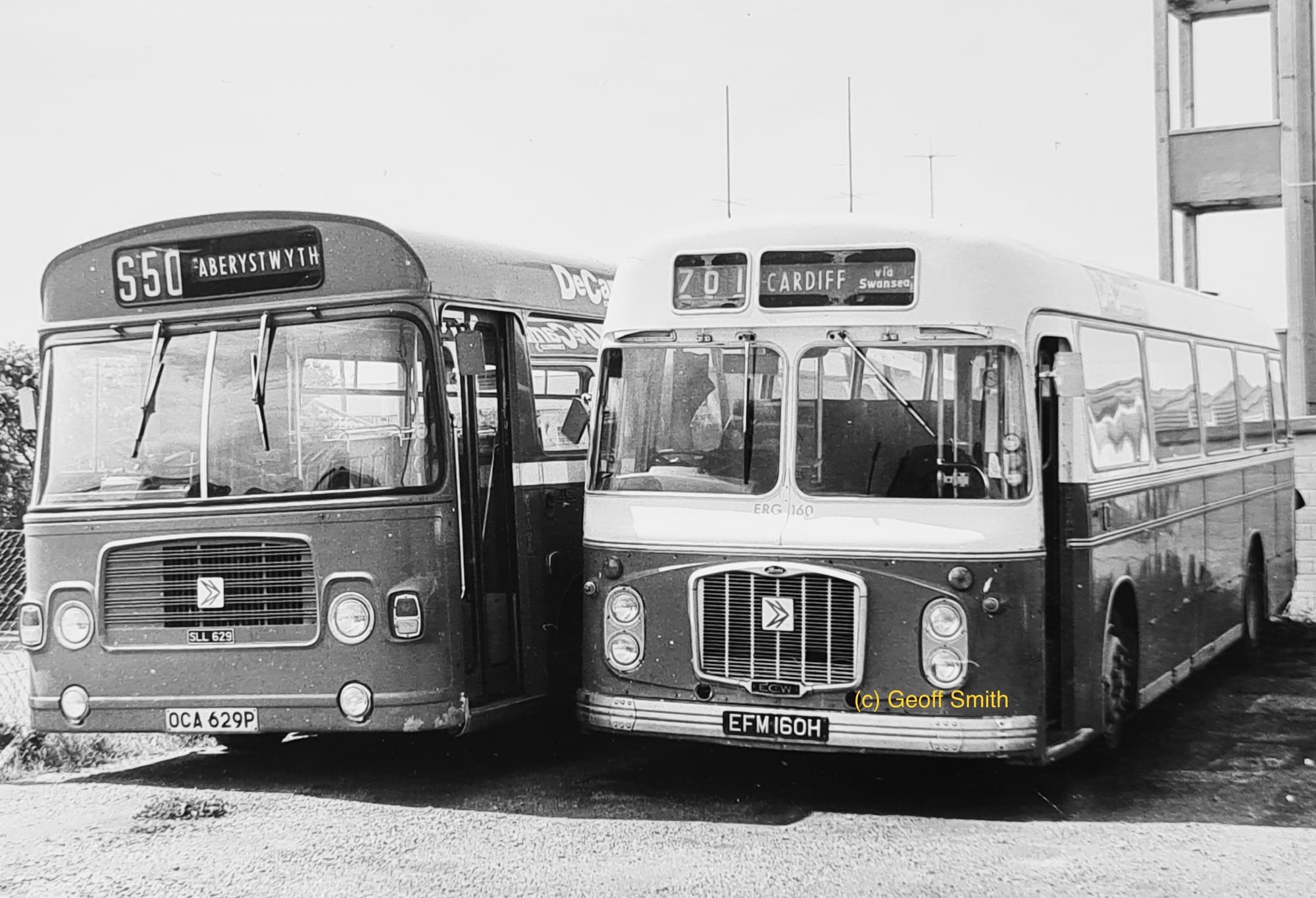
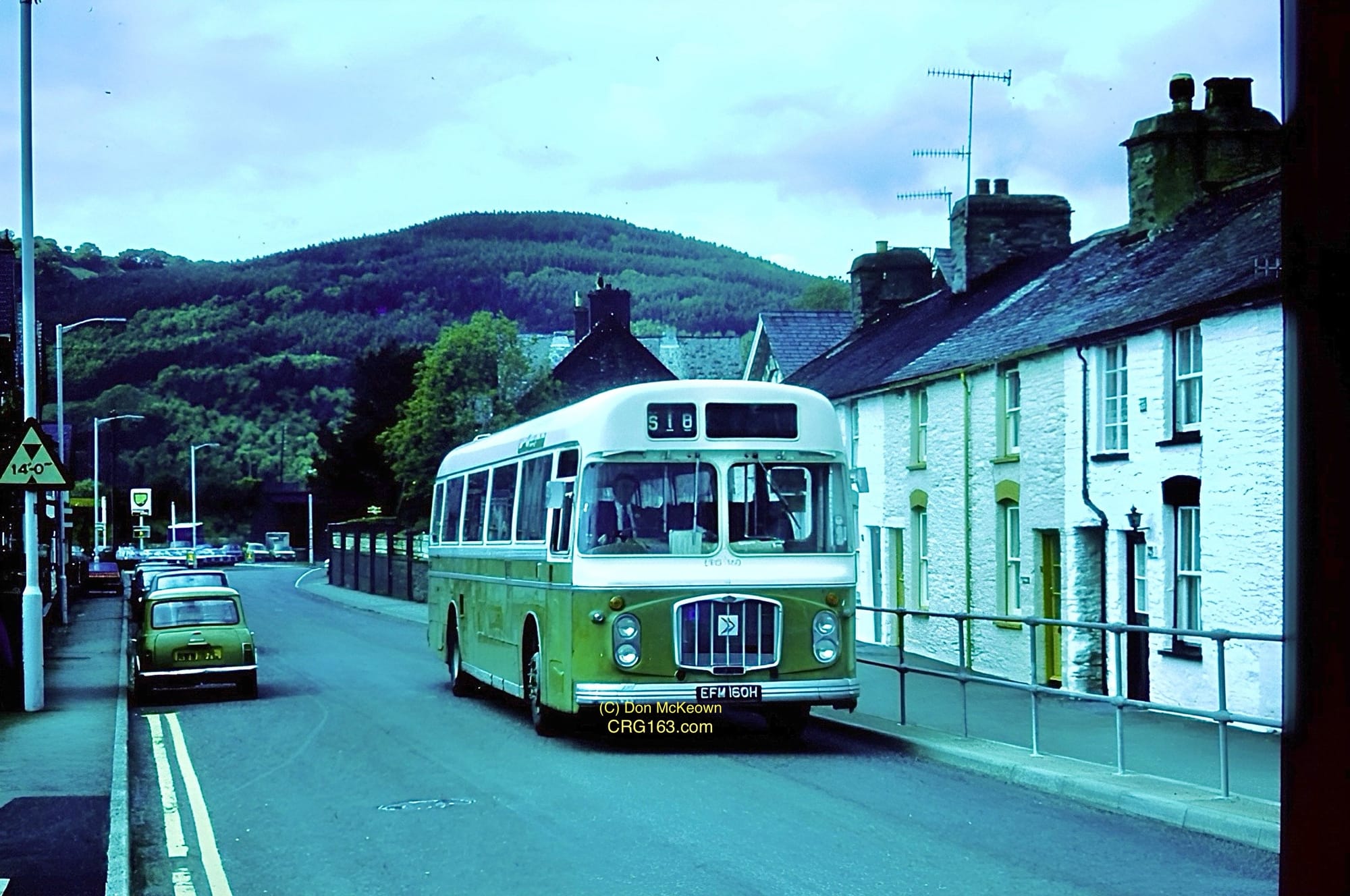 ERG160 is seen here leaving Crosville’s Machynlleth depot along Doll Street towards the centre of the town. The depot is just out of shot on the far left, before the BP garage.
ERG160 is seen here leaving Crosville’s Machynlleth depot along Doll Street towards the centre of the town. The depot is just out of shot on the far left, before the BP garage.CRG161 (EFM 161H)
Vehicle profile
New: 03/1970
Initial fleet number: CRG161
Registration number: EFM161H
Chassis type: Bristol RELH6G
Chassis number: RELH-4/256
Body make: Eastern Coach Works (ECW)
Body number: 18138
Seating: C47F
Engine: Gardner 6HLX
Gearbox: Semi-auto
Year downgraded: 1979
Downgraded fleet number: ERG161
Depot allocations: Liverpool Edge Lane; Dolgellau; Bangor
Liveries carried: Cream & black coaching; simpler cream & black coaching; National white; dual purpose green and white
Year withdrawn from service: 03/1983
Life beyond Crosville: not known, believed to be scrapped
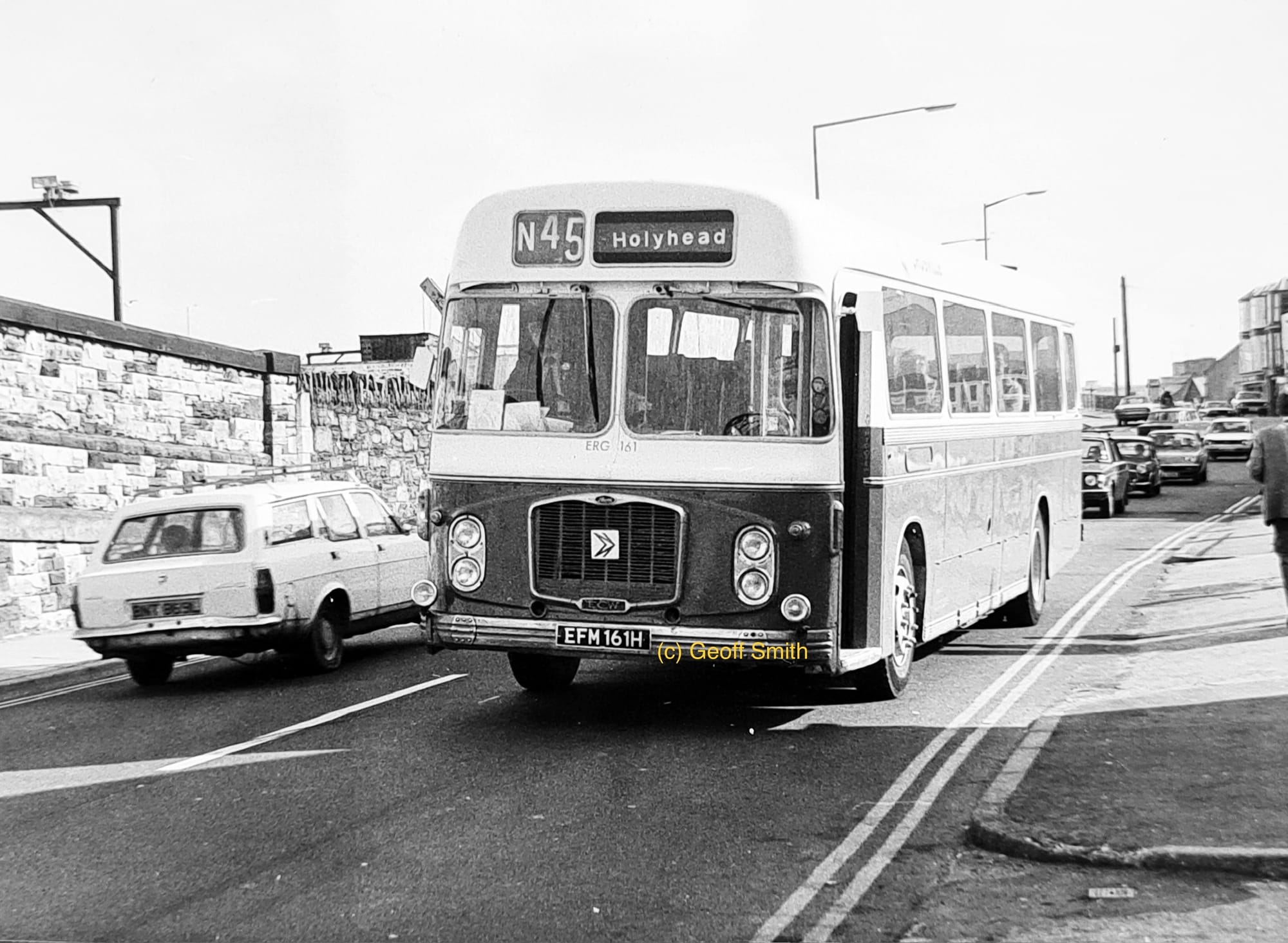 ERG161 can be seen arriving Holyhead on route N45.
ERG161 can be seen arriving Holyhead on route N45.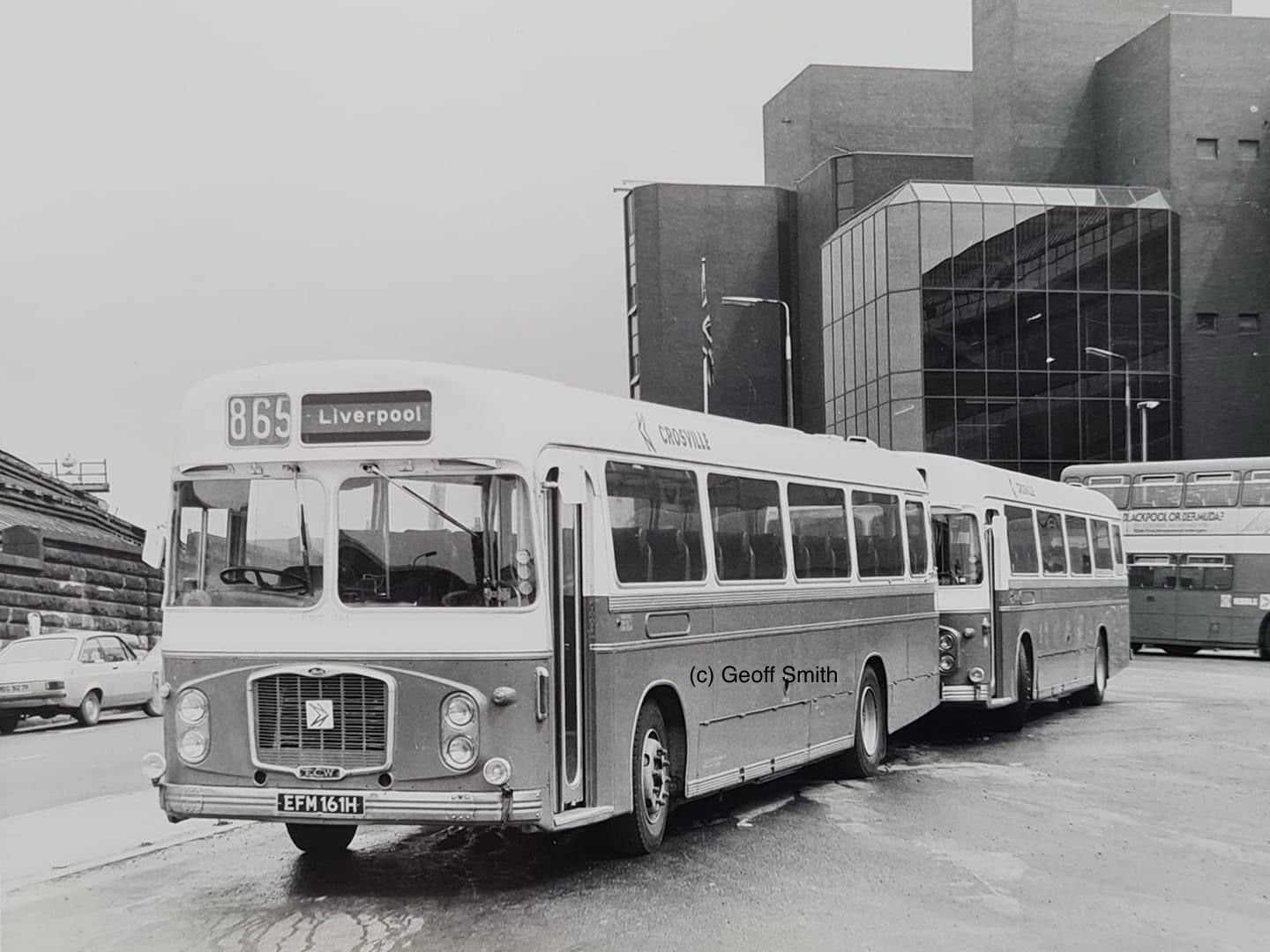 ERG161 is seen here parked in Liverpool with ERG163 parked behind minus its nearside front trafficator. Geoff comments ‘ERG161 at Skelhorne St with Copperas Hill sorting office in the background’. Geoff’s b&w photographs are absolutely amazing.
ERG161 is seen here parked in Liverpool with ERG163 parked behind minus its nearside front trafficator. Geoff comments ‘ERG161 at Skelhorne St with Copperas Hill sorting office in the background’. Geoff’s b&w photographs are absolutely amazing. 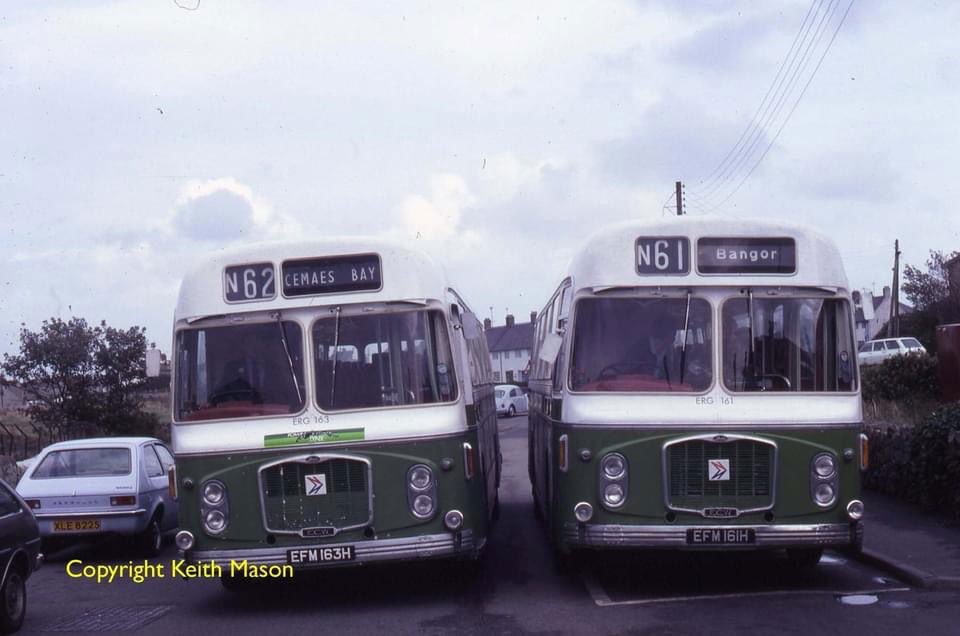
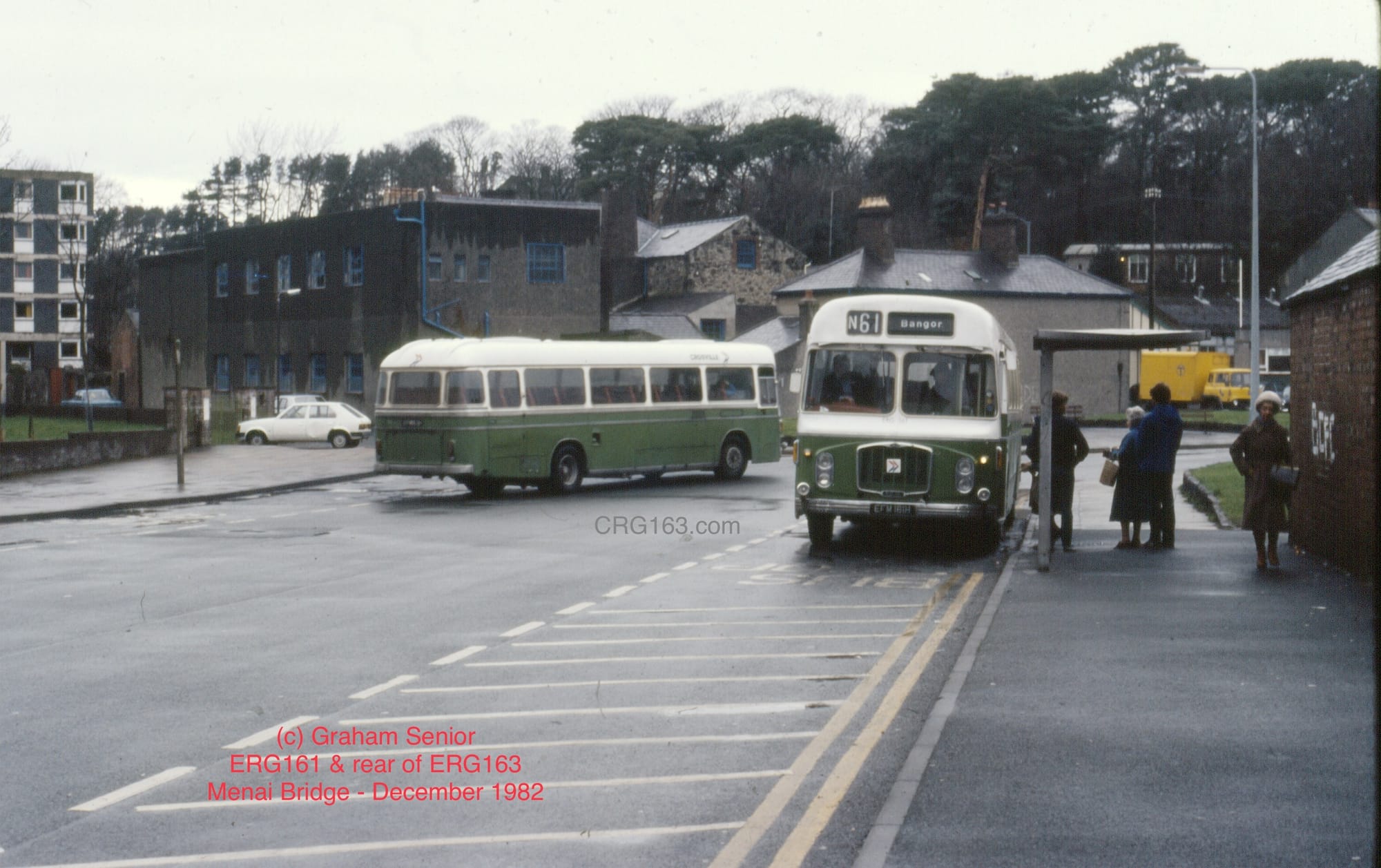
CRG162 (EFM 162H)
Vehicle profile
New: 02/1970
Initial fleet number: CRG162
Registration number: EFM162H
Chassis type: Bristol RELH6G
Chassis number: RELH-4/257
Body make: Eastern Coach Works (ECW)
Body number: 18139
Seating: C47F
Engine: Gardner 6HLX
Gearbox: Semi-auto
Year downgraded: 1979
Downgraded fleet number: ERG162
Depot allocations: Liverpool Edge Lane; Wrecsam; Corwen
Liveries carried: Cream & black coaching; simpler cream & black coaching; National white; dual purpose green and white
Year withdrawn from service: 1985
Life beyond Crosville: not known, believed to be scrapped
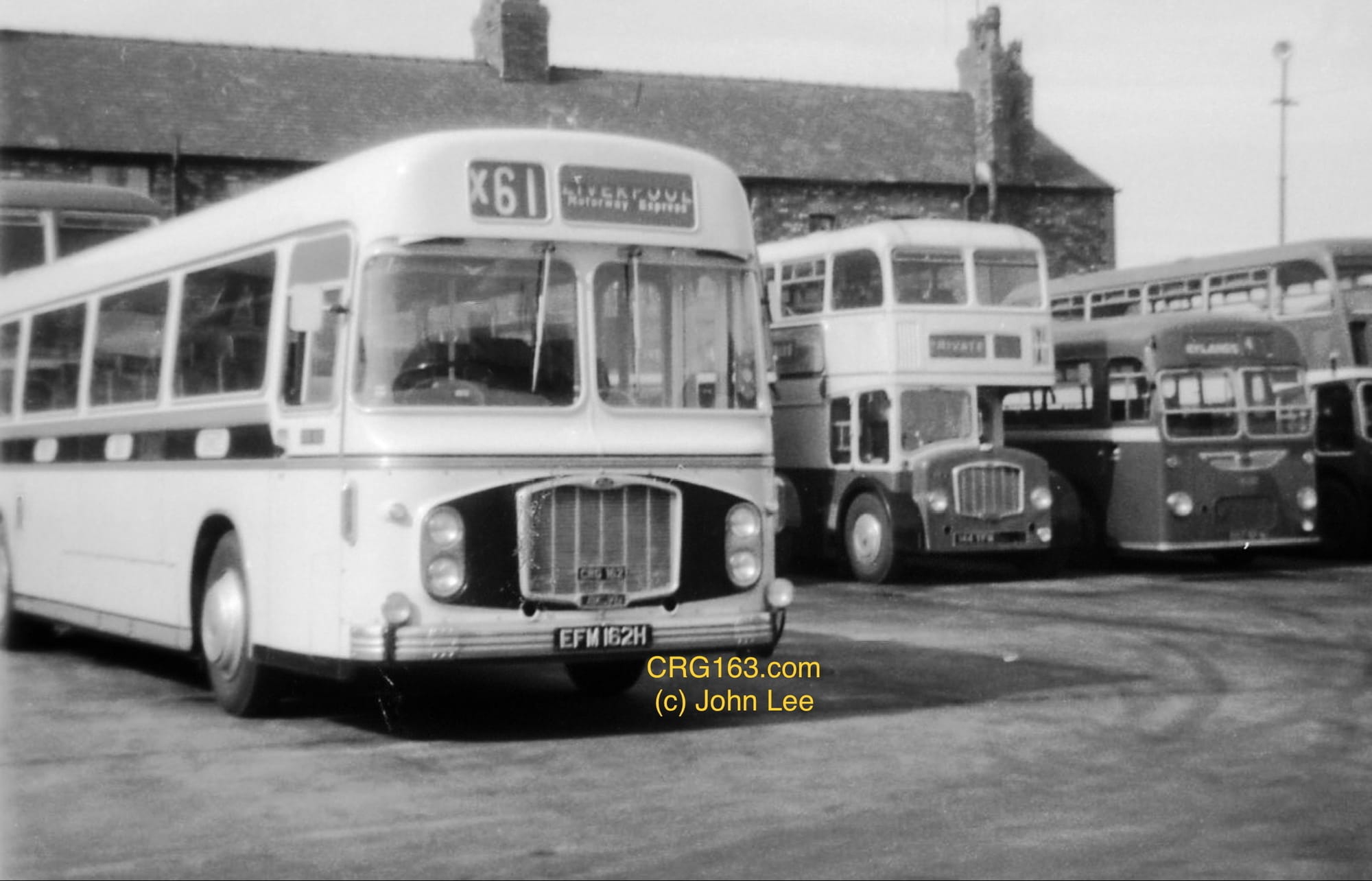
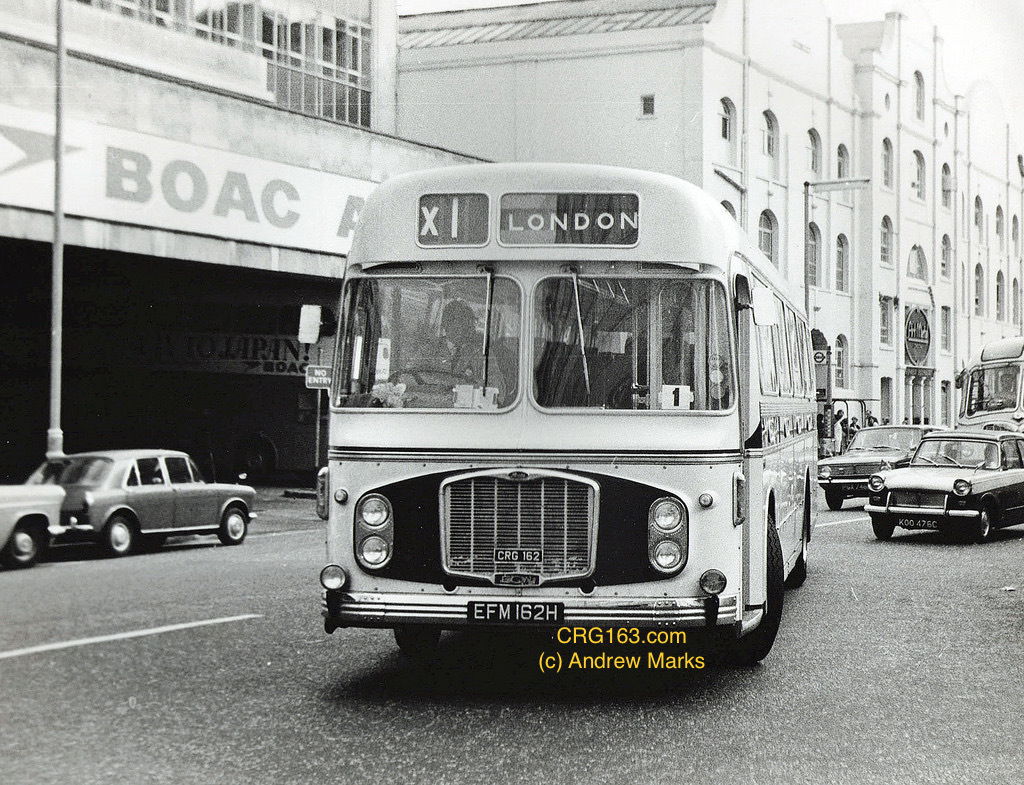
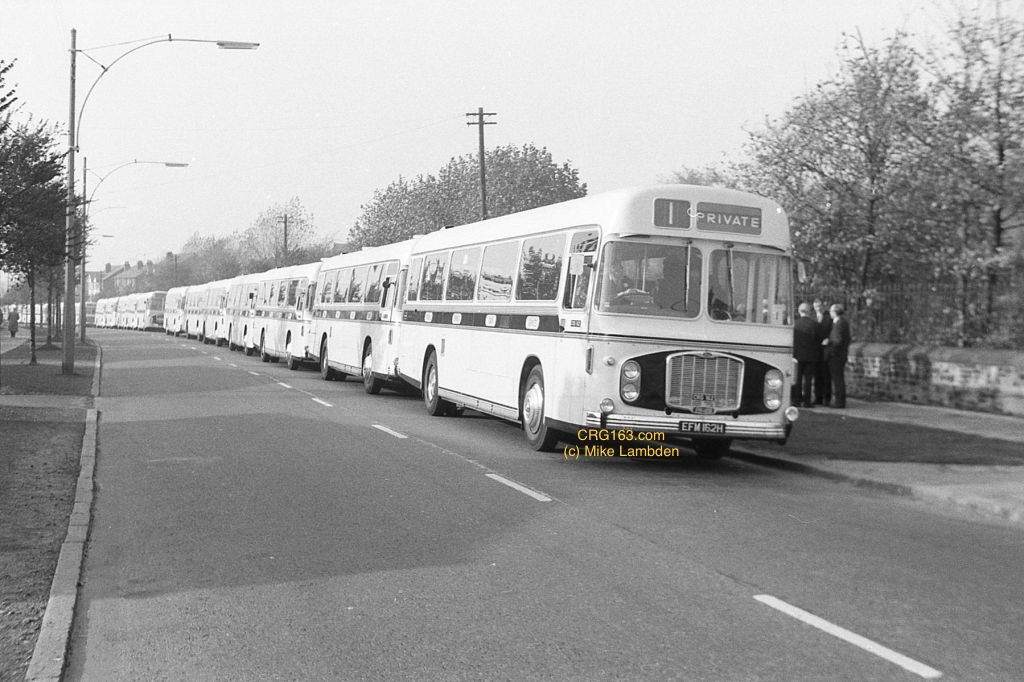
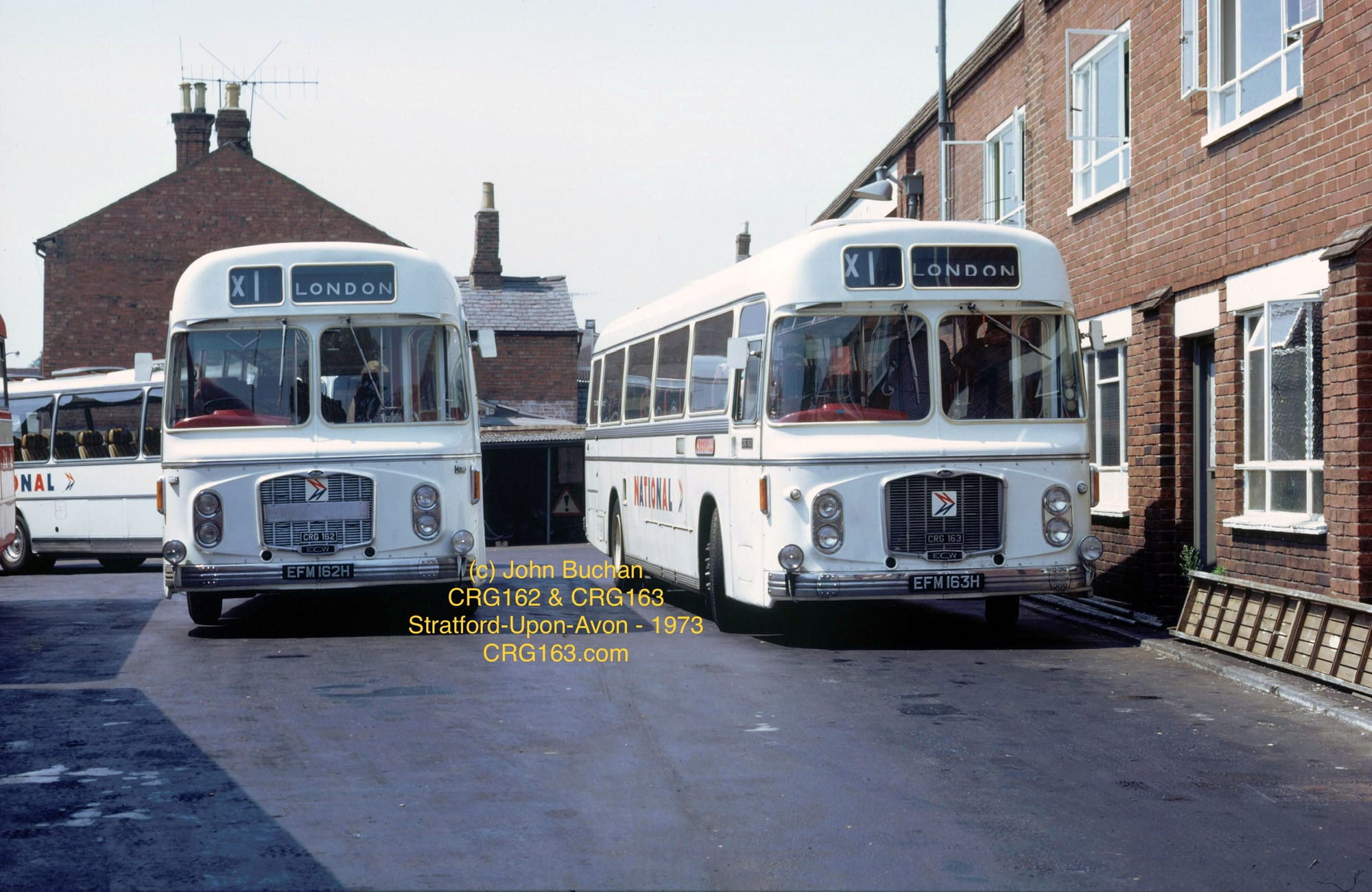
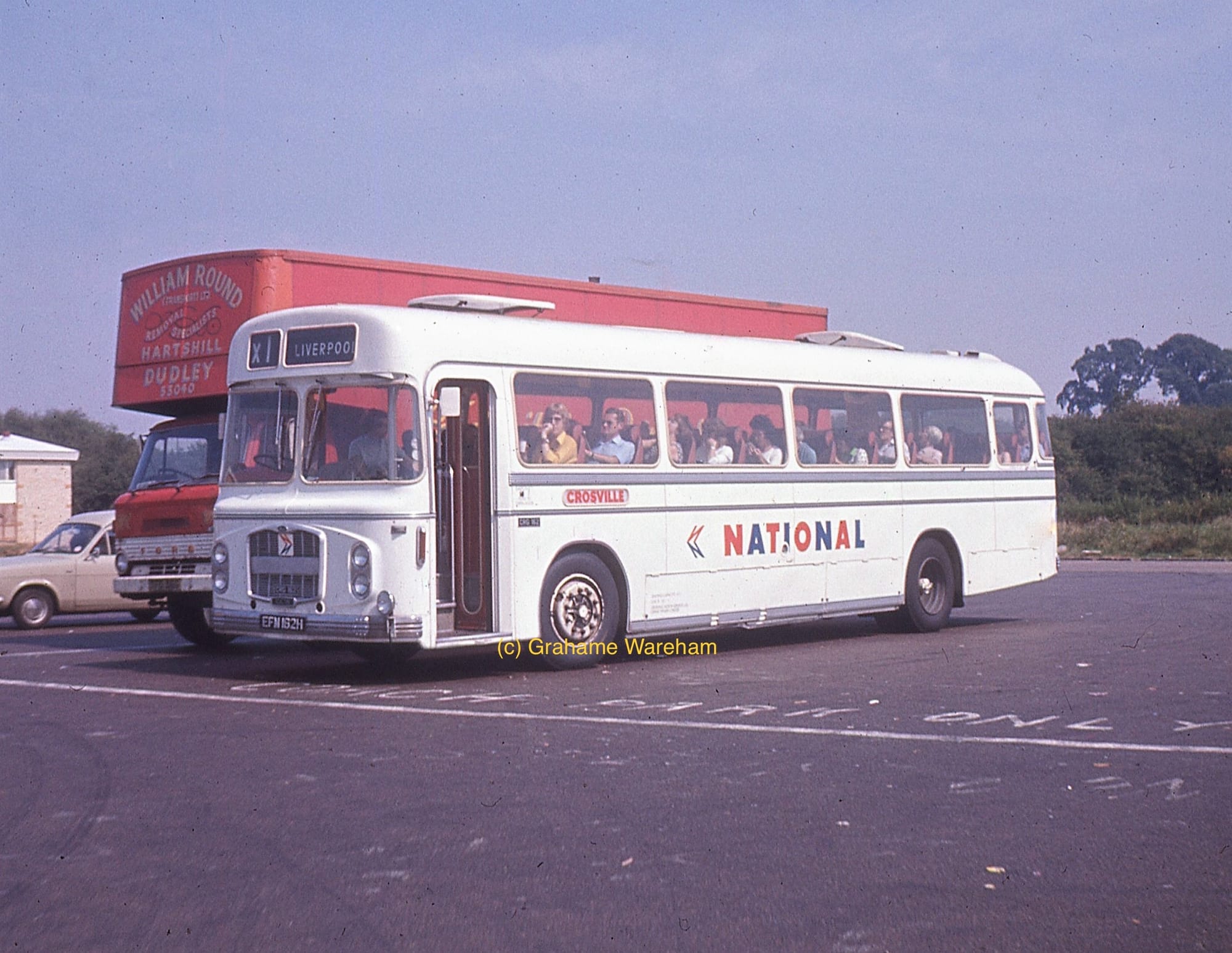
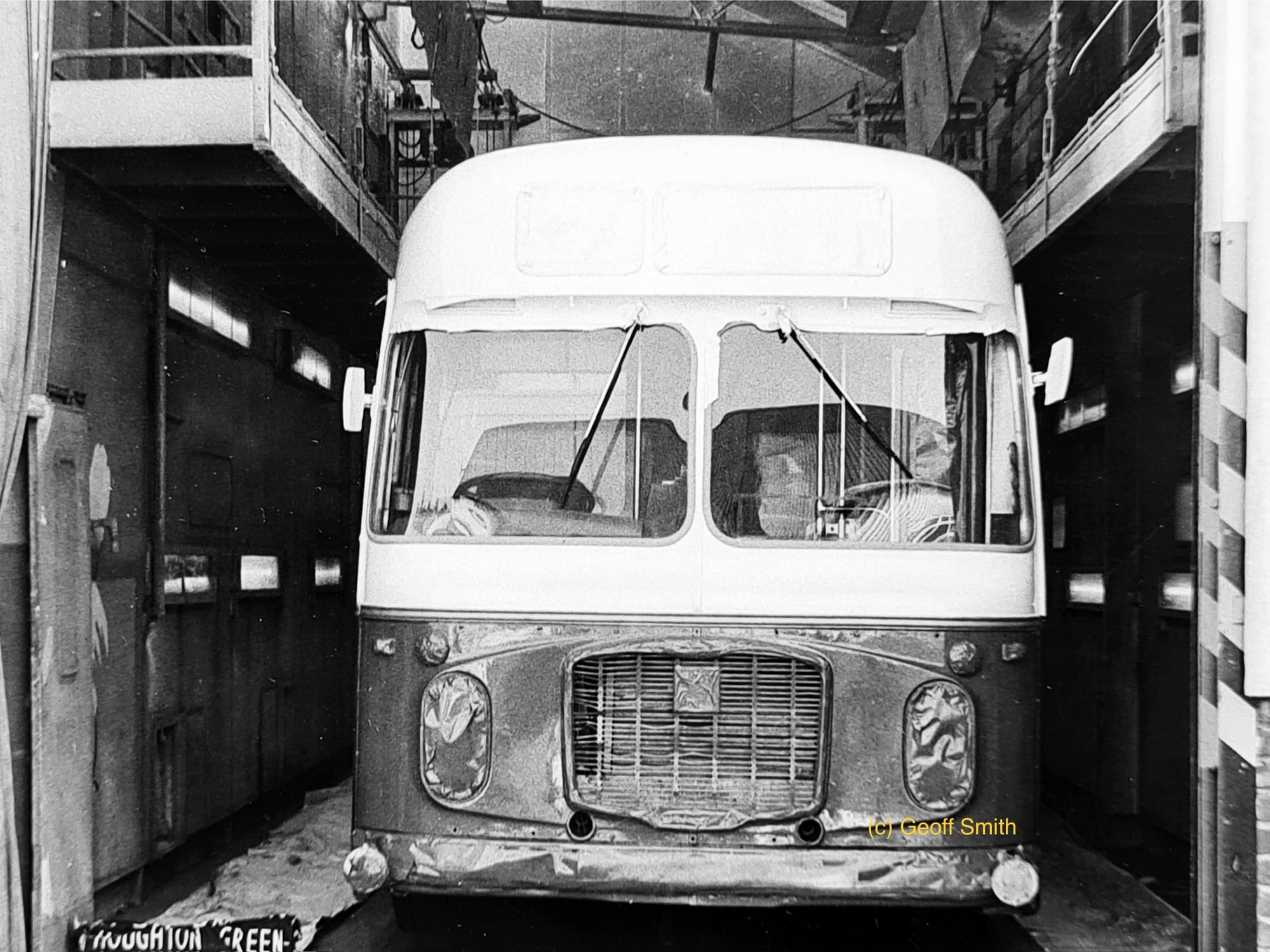
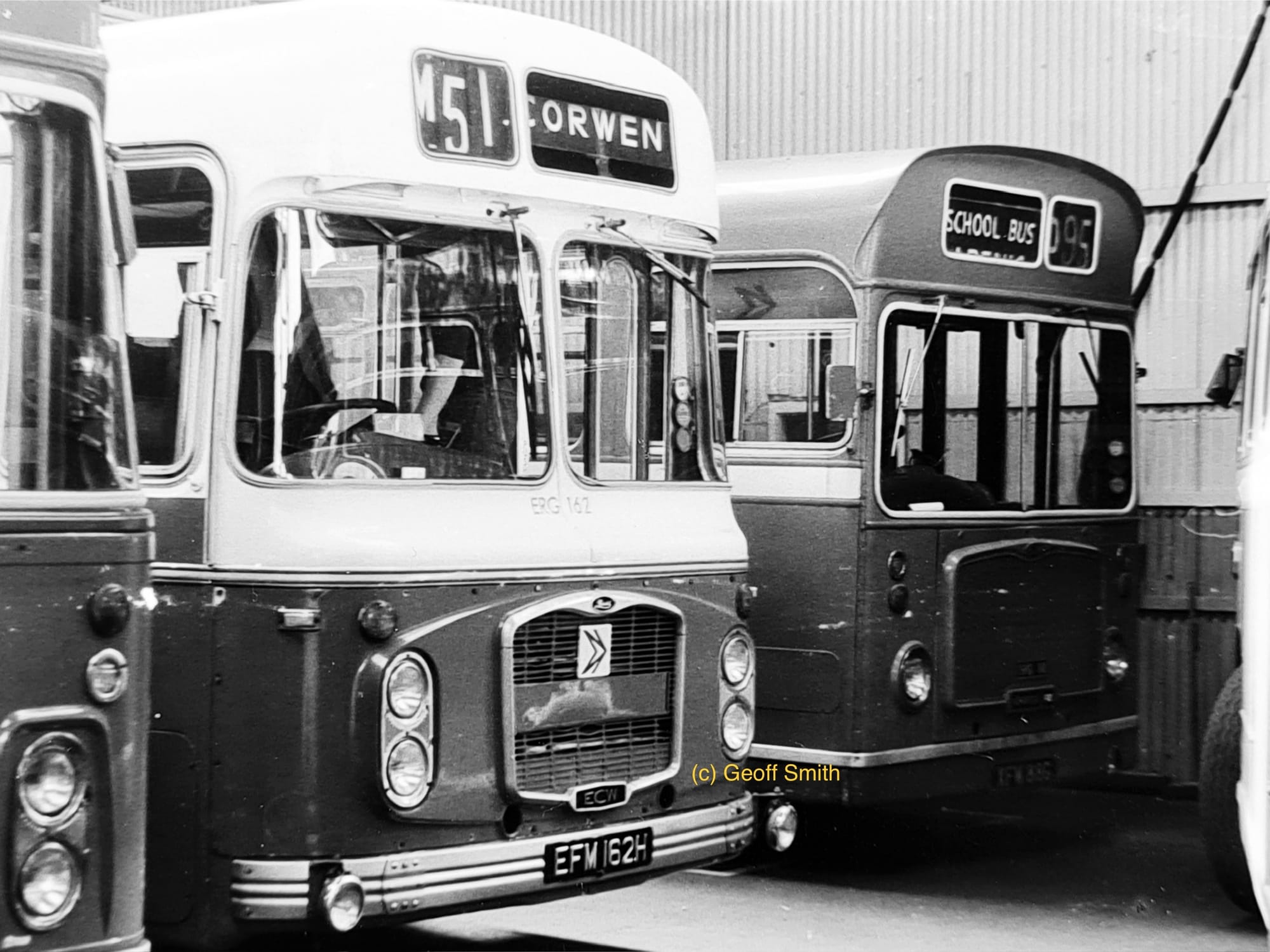
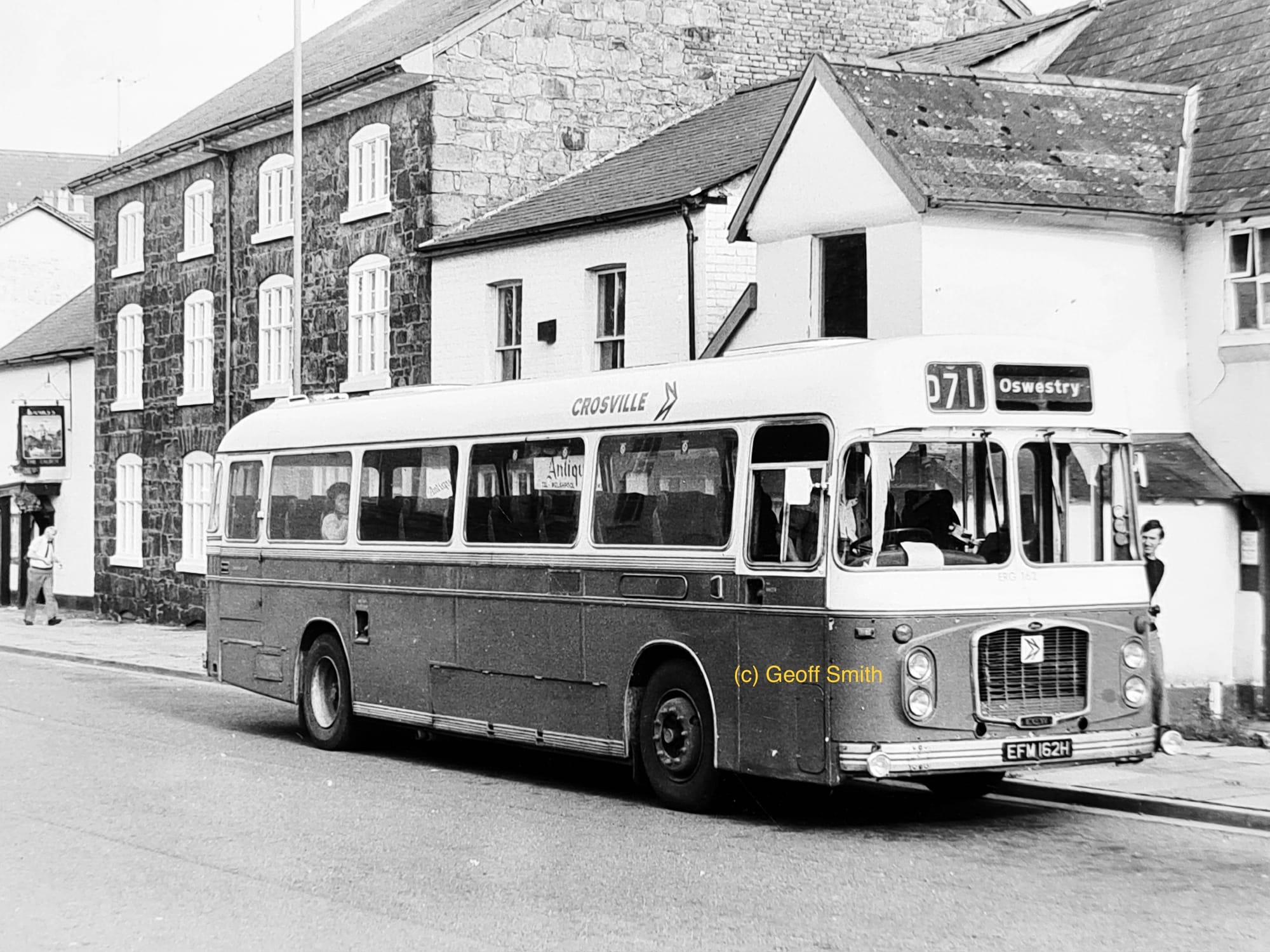
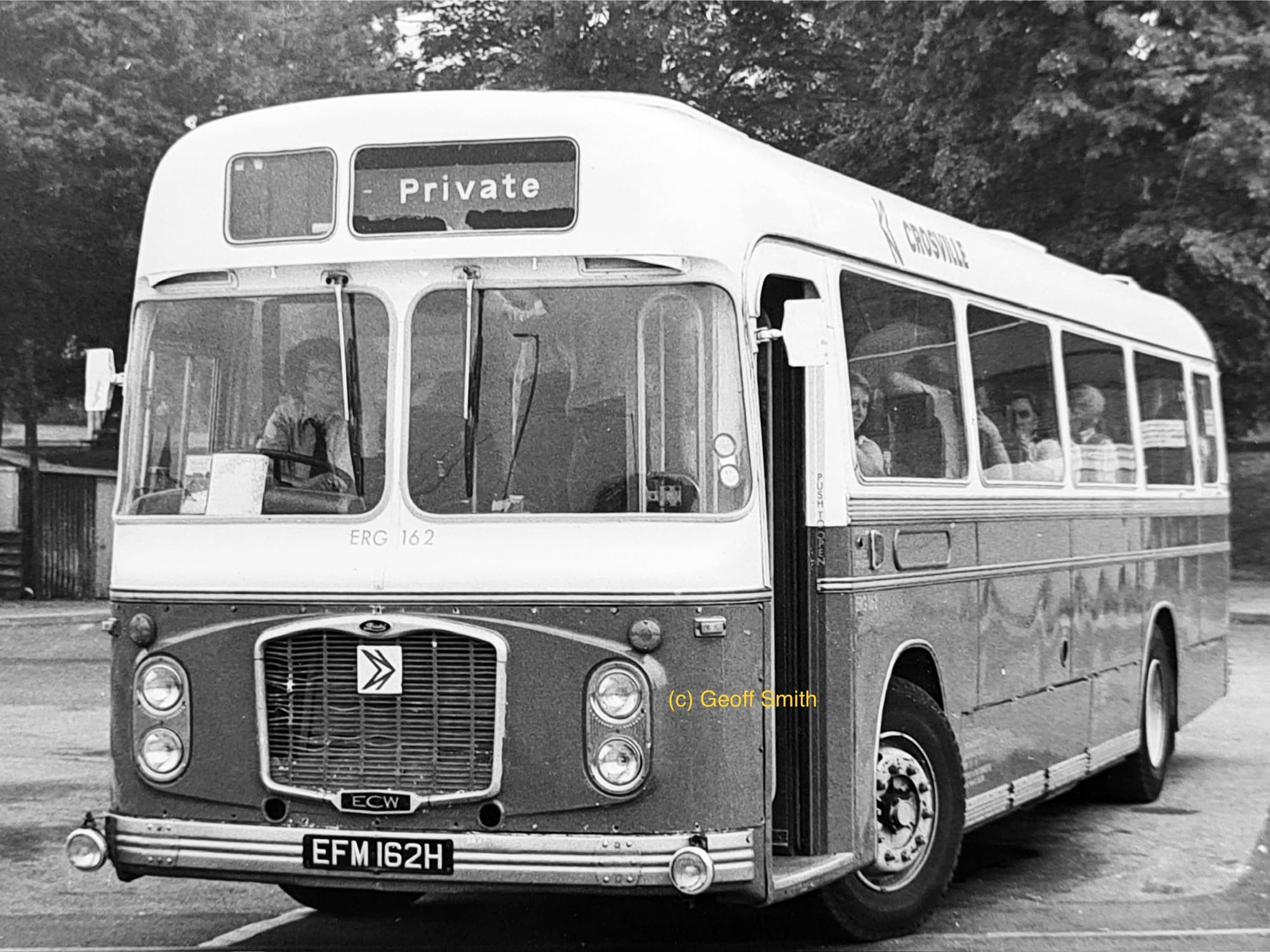
CRG163 (EFM 163H)
Vehicle profile
New: Delivered new on 26/01/1970, first registered on 06/03/1970
Initial fleet number: CRG163
Registration number: EFM162H
Chassis type: Bristol RELH6G
Chassis number: RELH-4/258
Body make: Eastern Coach Works (ECW)
Body number: 18140
Seating: C47F
Engine: Gardner 6HLX
Gearbox: Semi-auto
Year downgraded: 12/1979
Downgraded fleet number: ERG163
Depot allocations: Liverpool Edge Lane (1970-1979); Amlwch (1979-1984)
Liveries carried: Cream & black coaching; simpler cream & black coaching; National white; dual purpose green and white
Year withdrawn from service: 04/1984
Life beyond Crosville: Entered preservation with Gordon Bate (1984-2002) restored to second version of cream & black livery; Richard Lloyd Jones (2002 - onwards) restored to National white livery
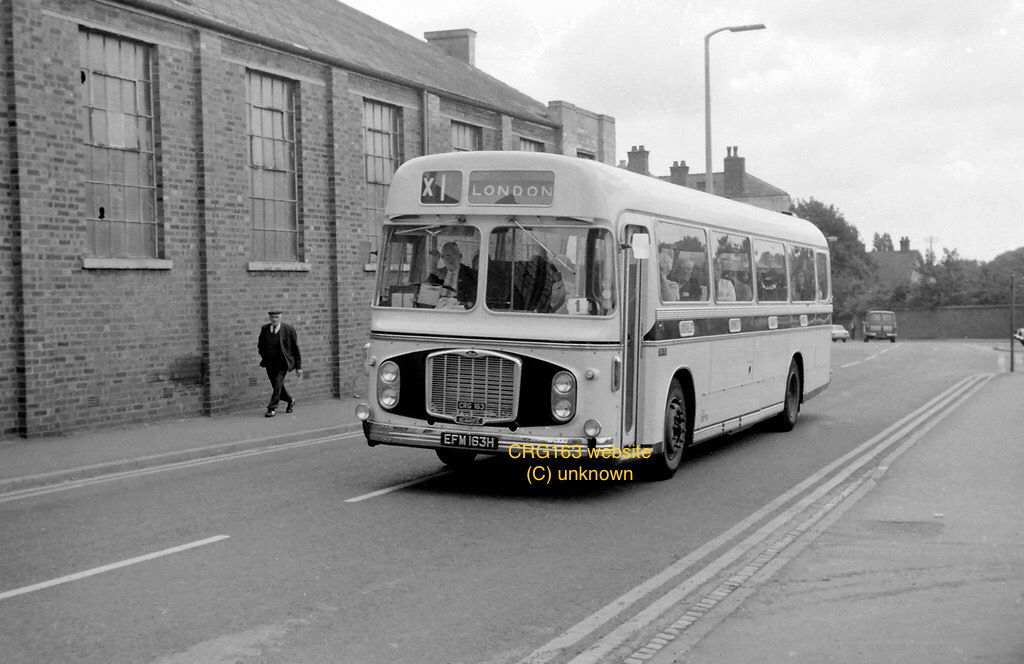
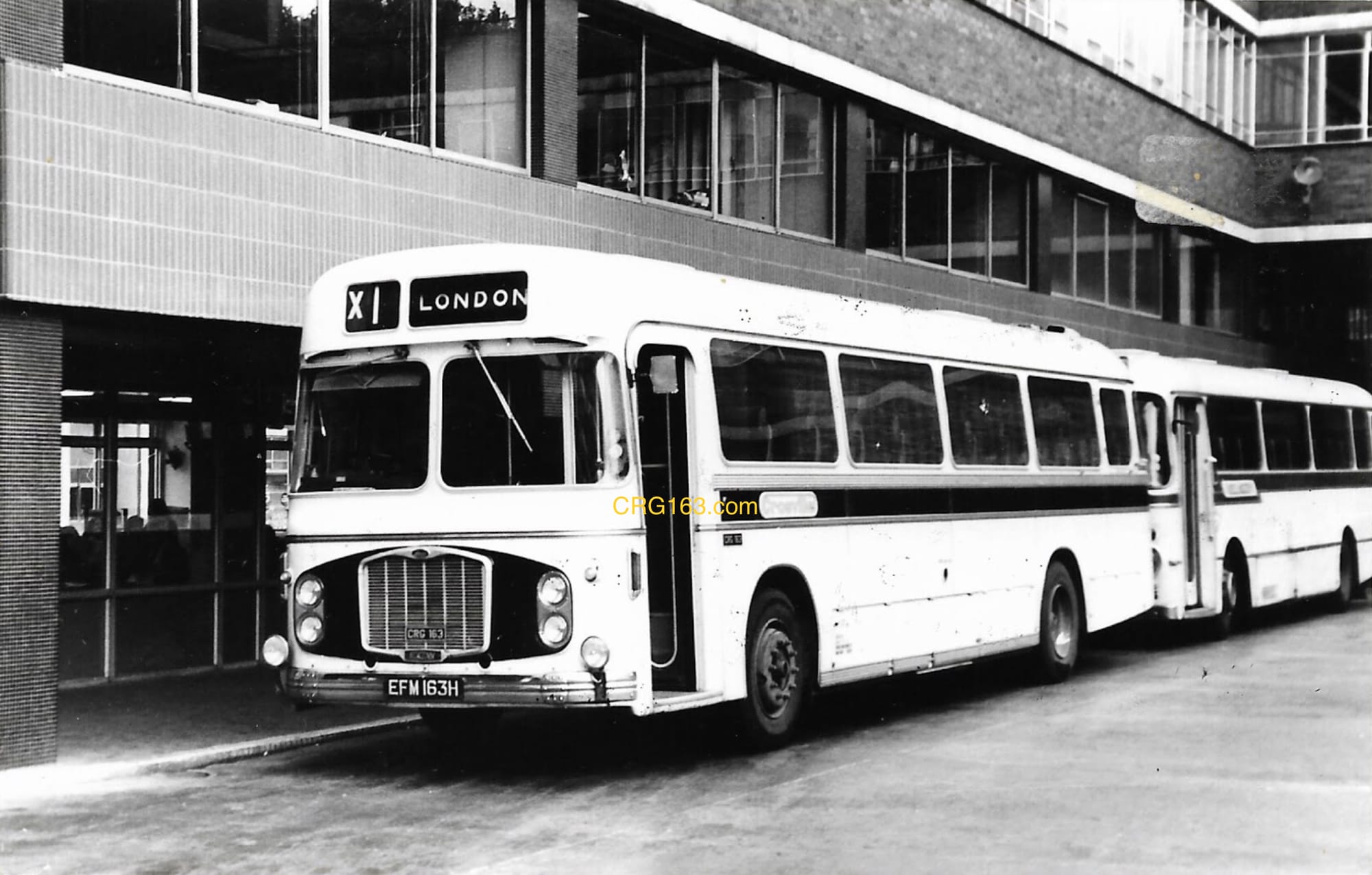
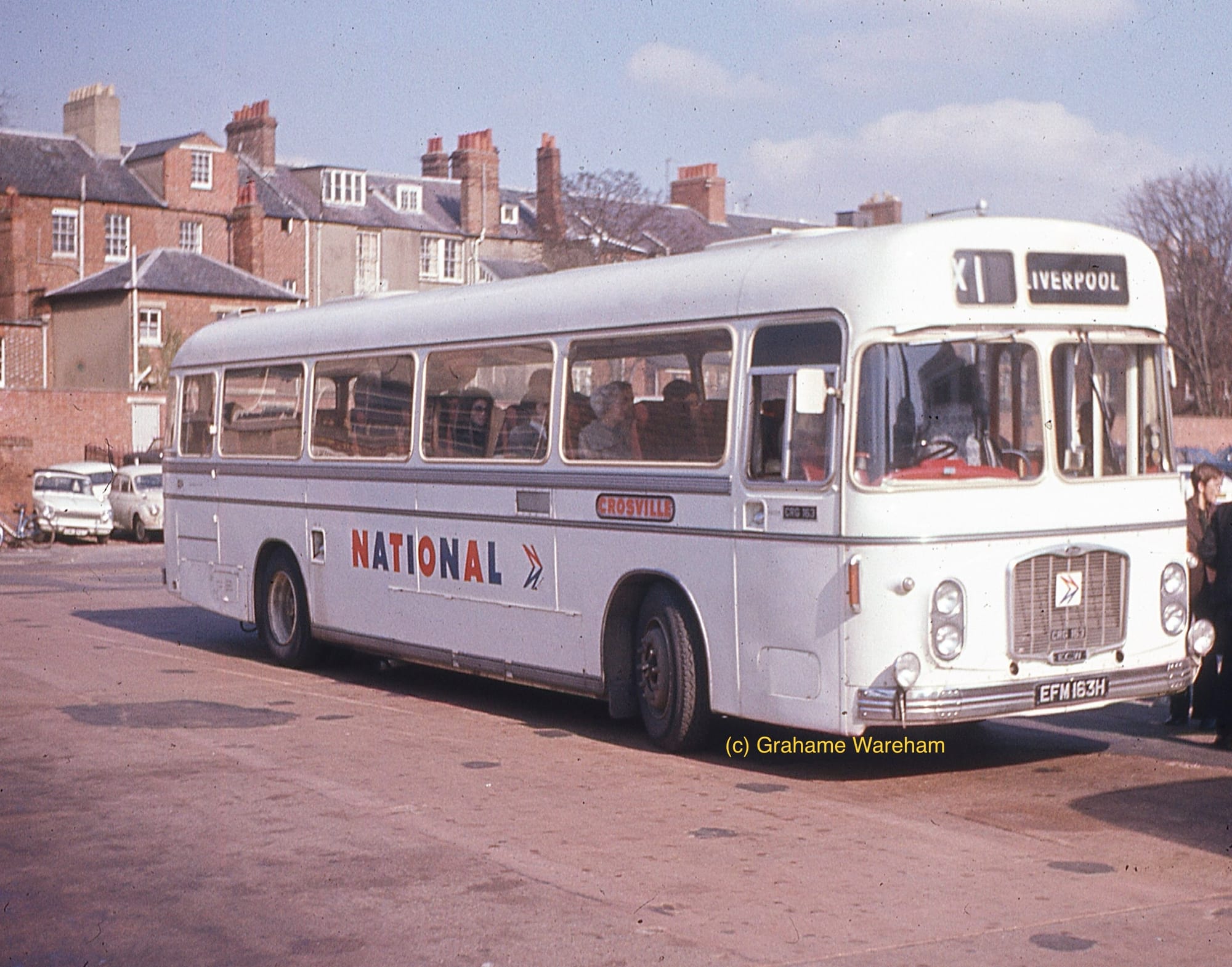
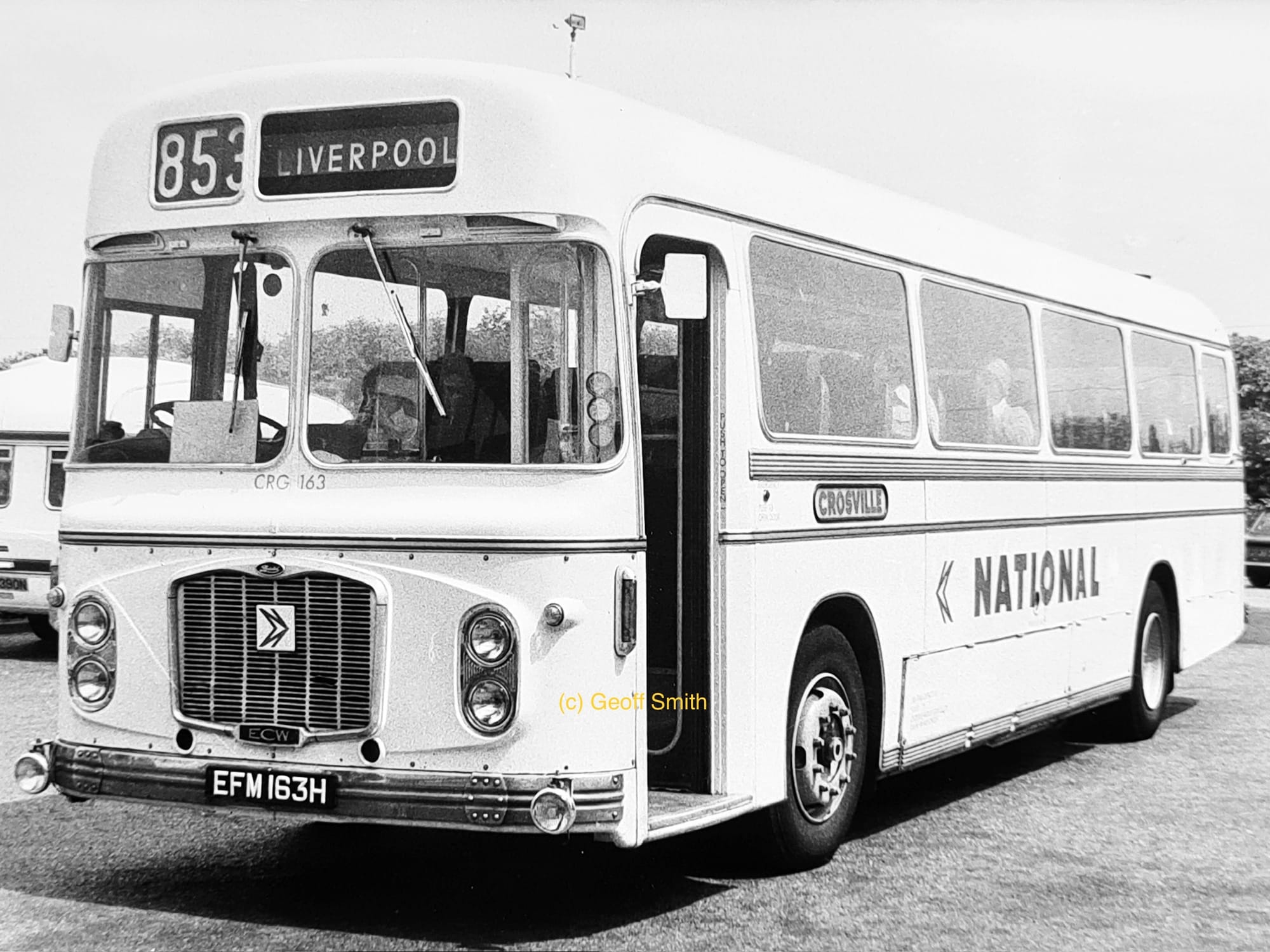
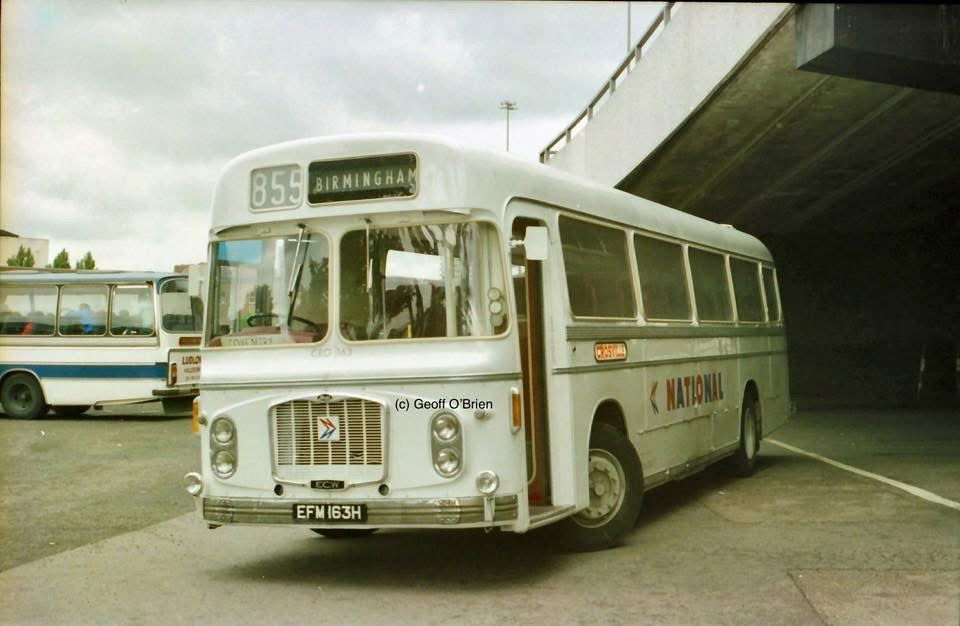 CRG163 on the 855 service between 1977 and 1979, seen here at Coventry with the side panel showing Crosville above the front nearside wheel arch illuminated.
CRG163 on the 855 service between 1977 and 1979, seen here at Coventry with the side panel showing Crosville above the front nearside wheel arch illuminated.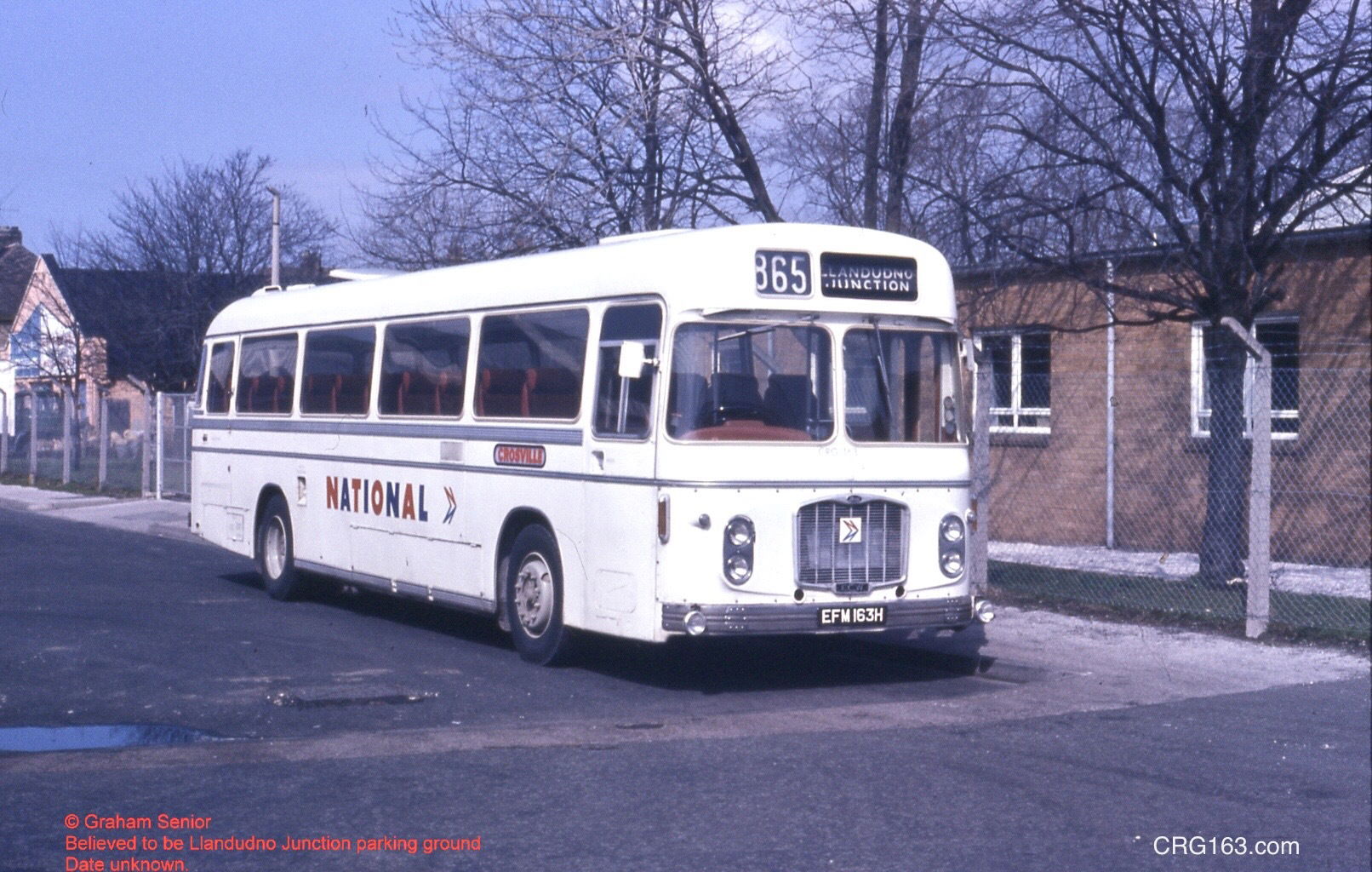
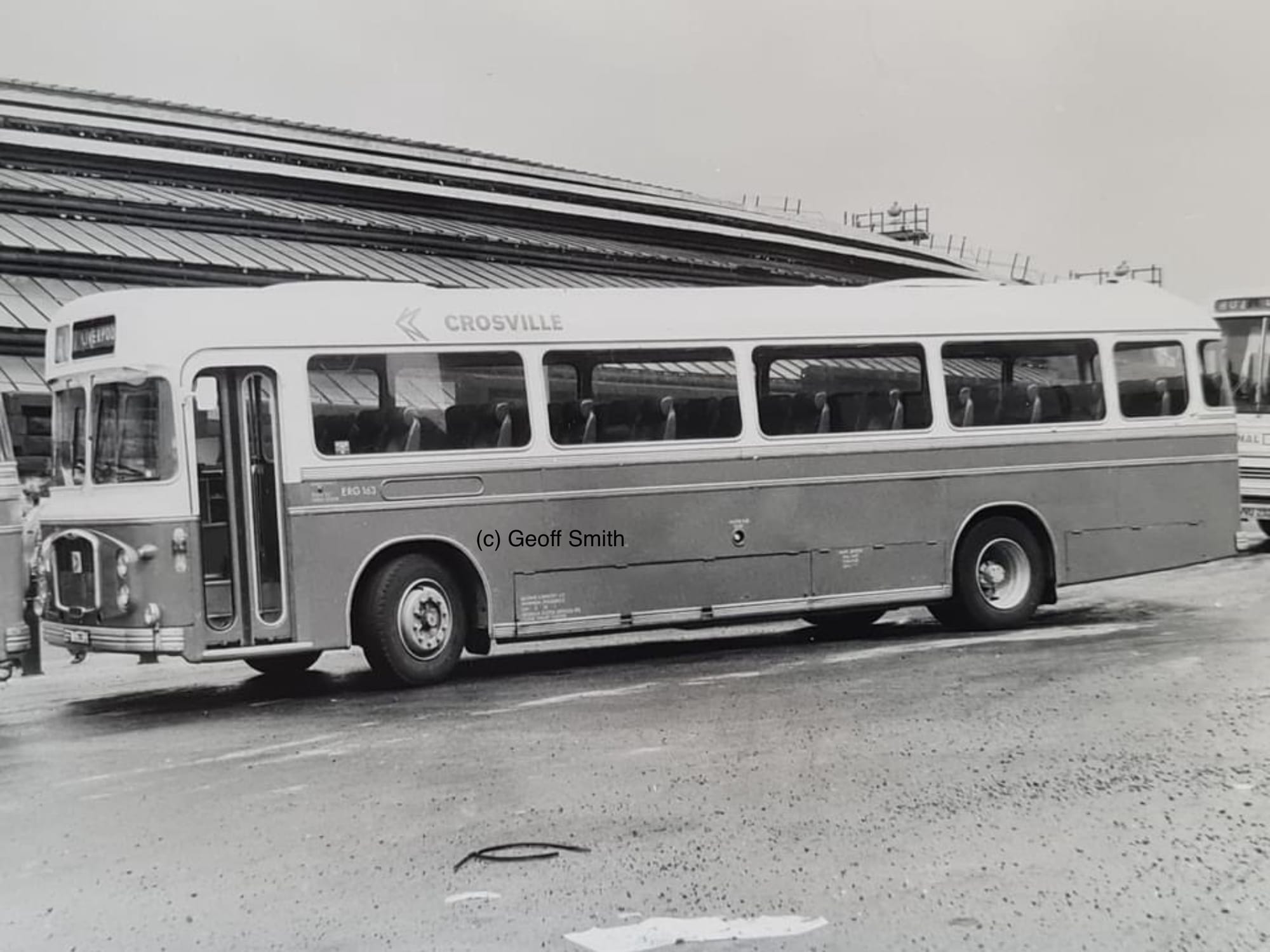
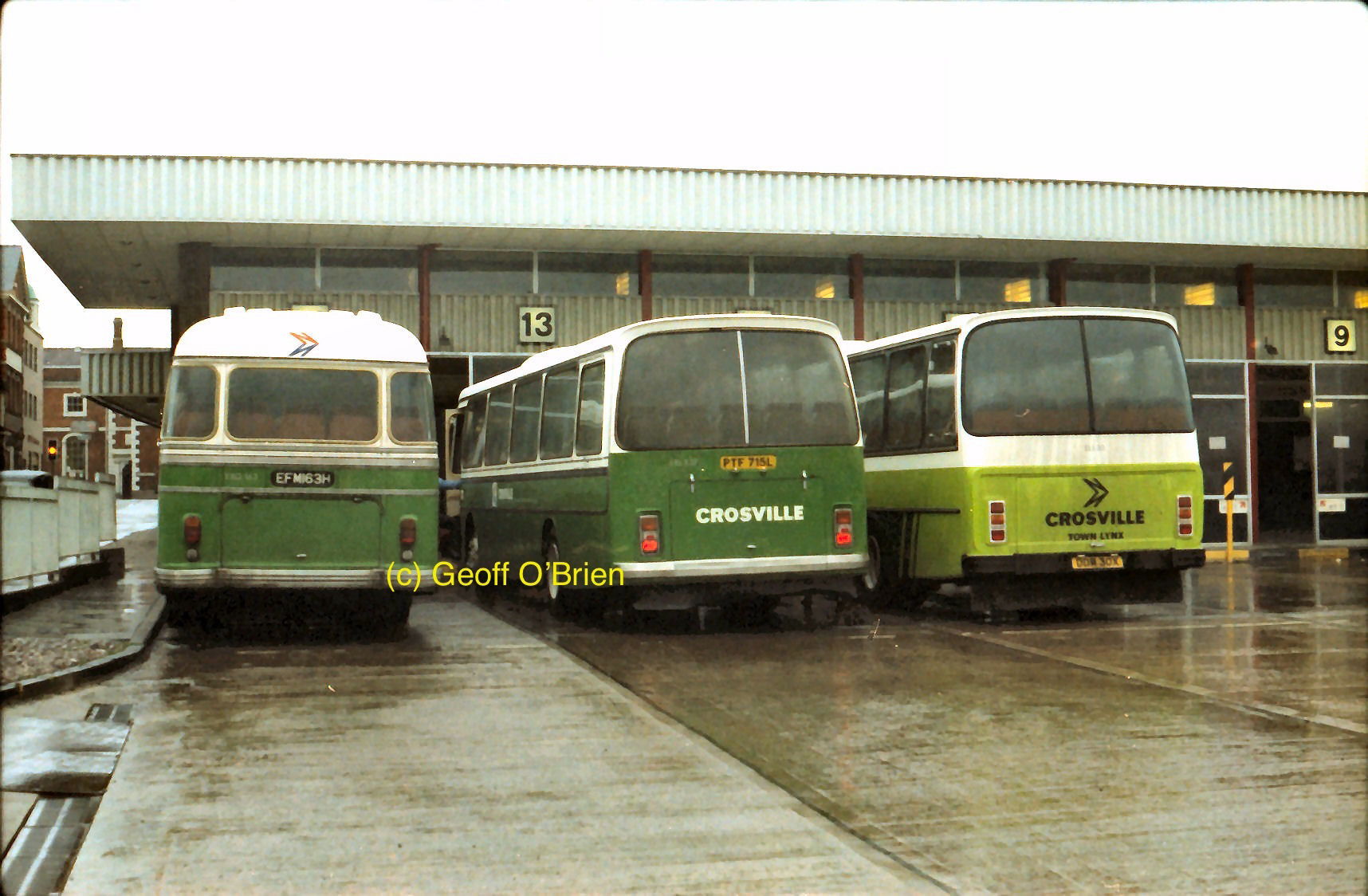 A row of Crosville coaches parked at Delamere Street bus and coach station, Chester in the early 1980’s. ERG163 is parked on stand 14, operating the X10 service between Cemaes Bay and Liverpool, flanked by ERL527 on the right and ELL30 far right.
A row of Crosville coaches parked at Delamere Street bus and coach station, Chester in the early 1980’s. ERG163 is parked on stand 14, operating the X10 service between Cemaes Bay and Liverpool, flanked by ERL527 on the right and ELL30 far right. 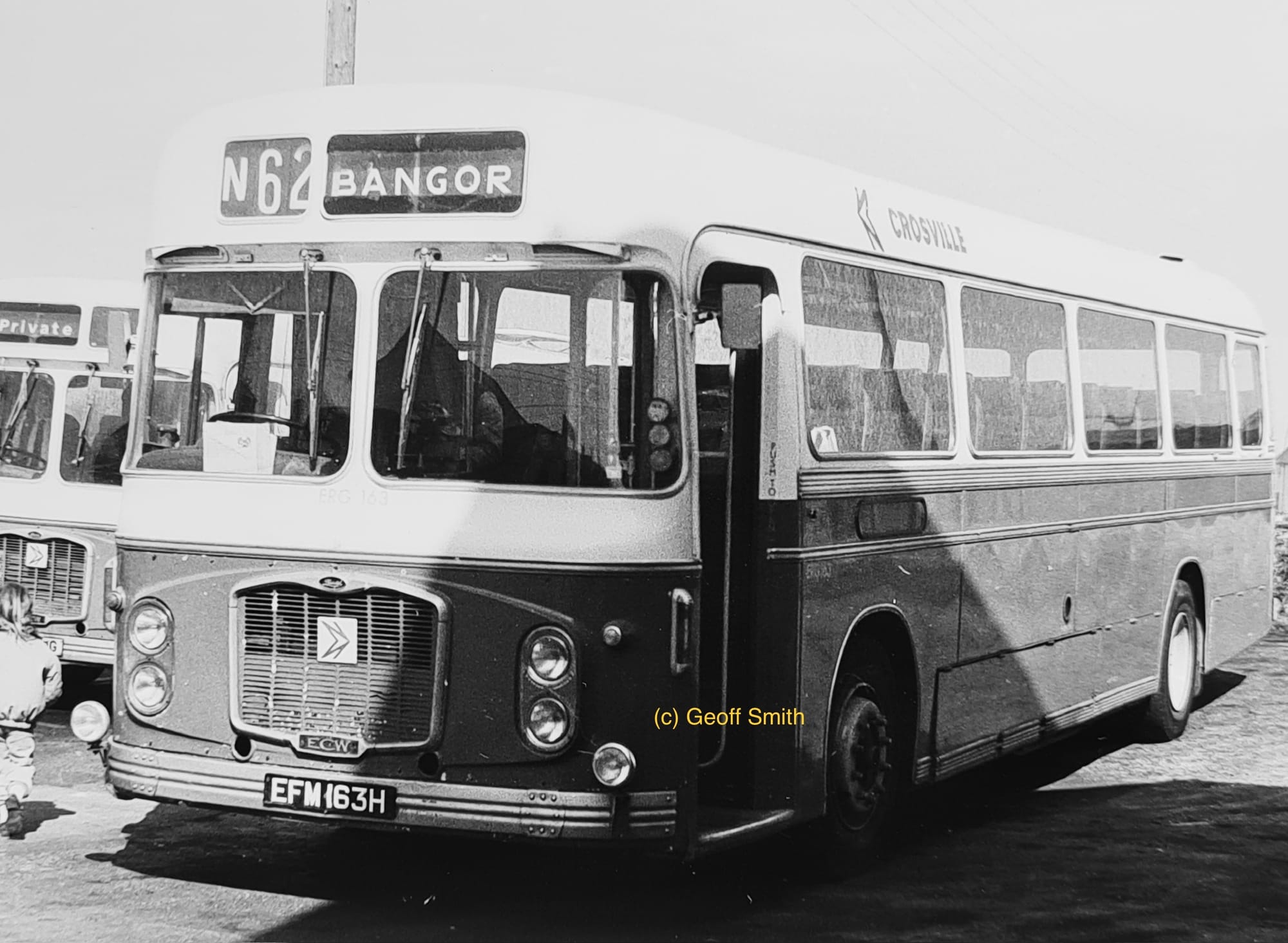
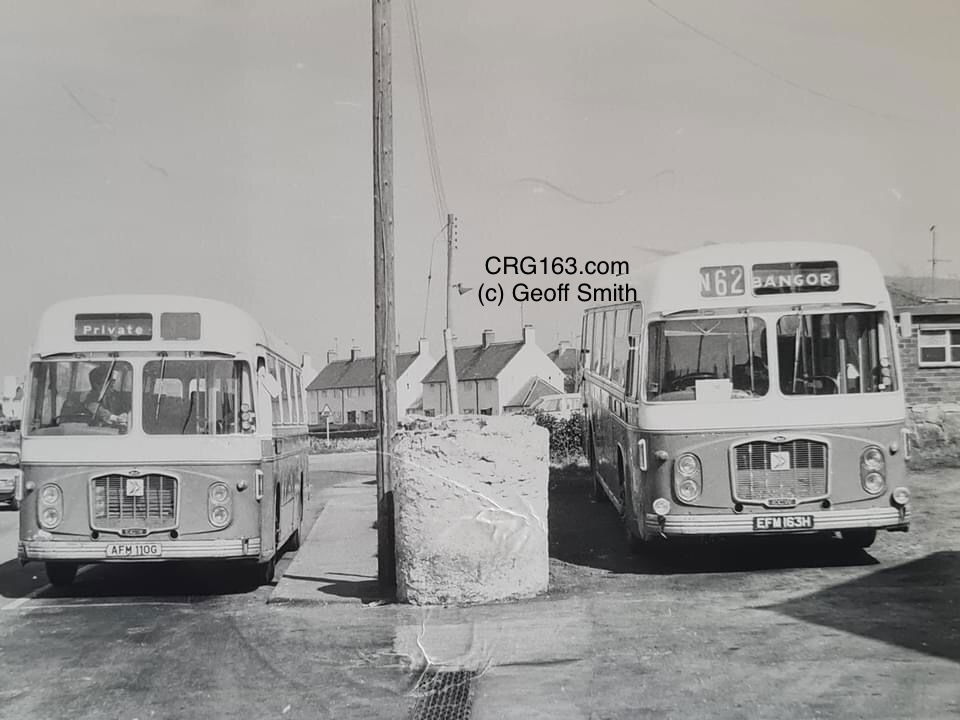

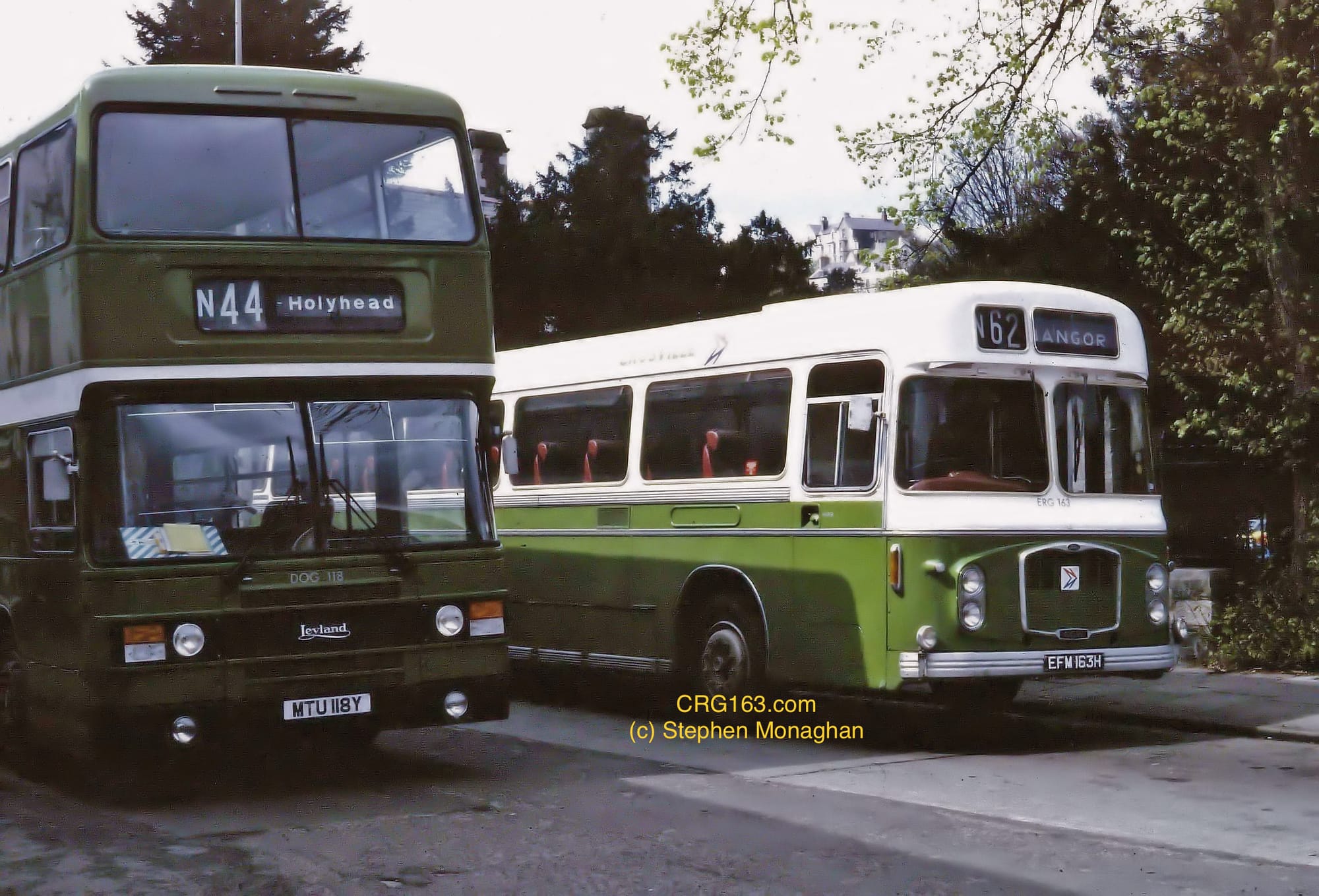
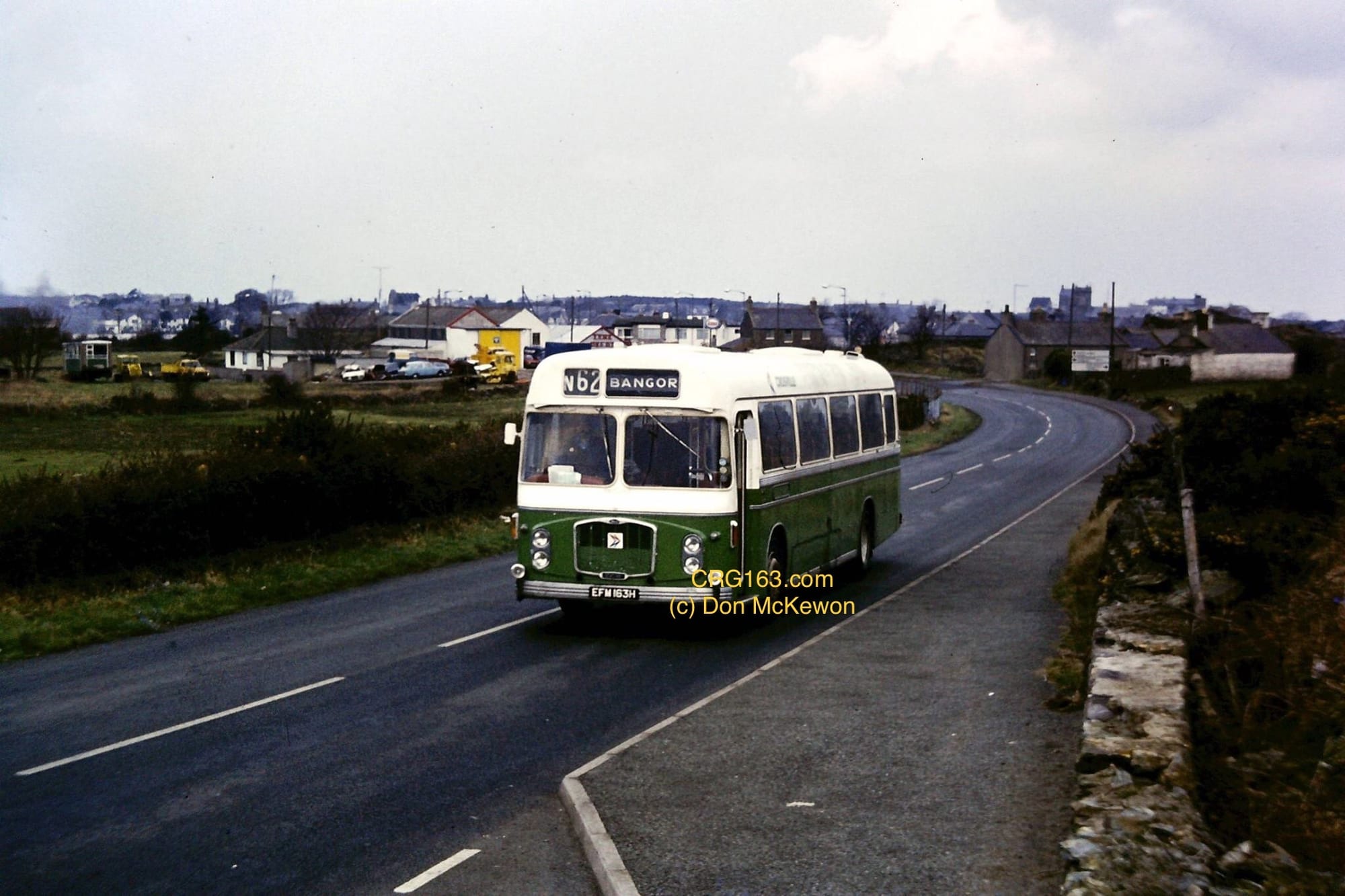
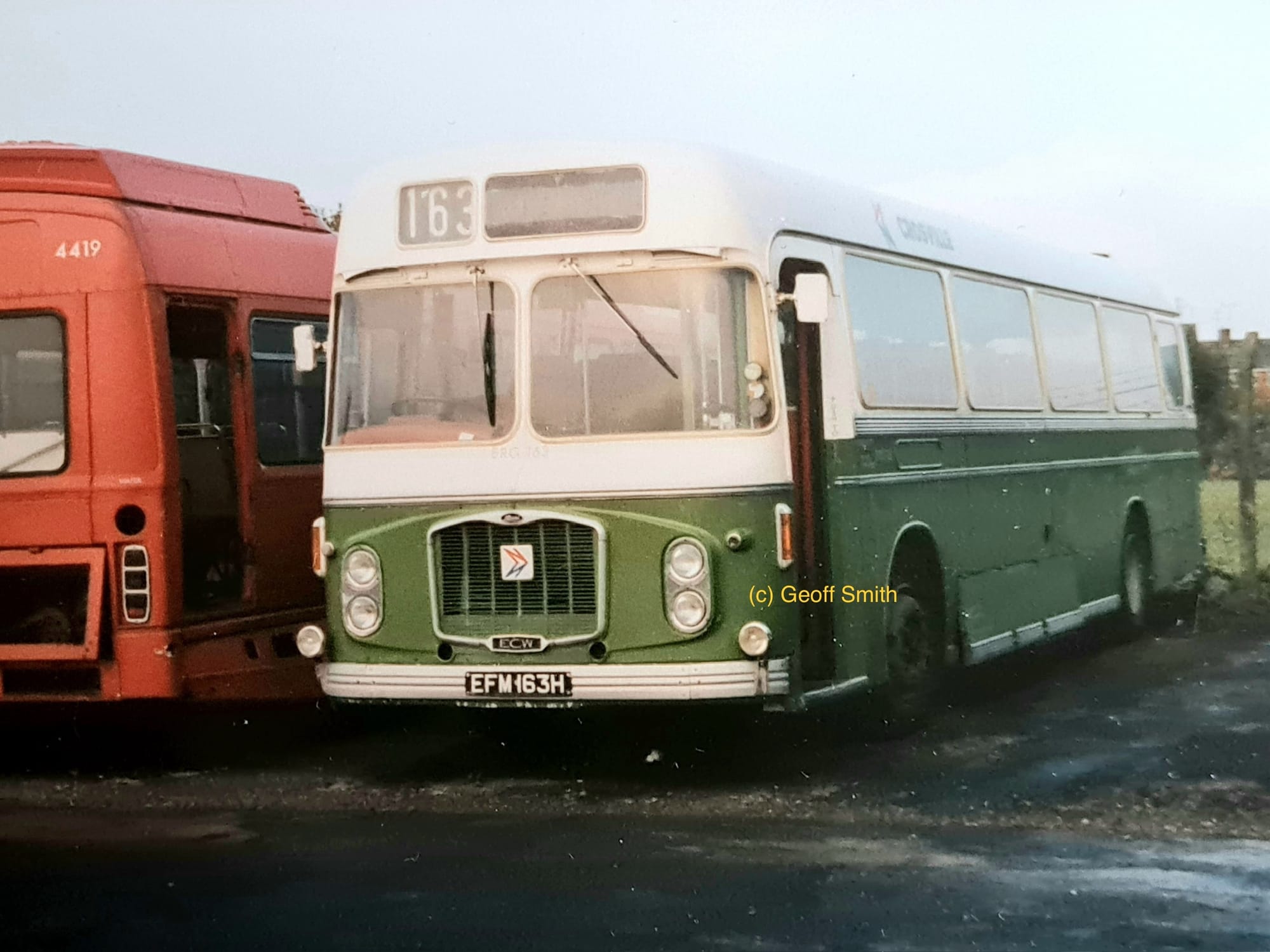
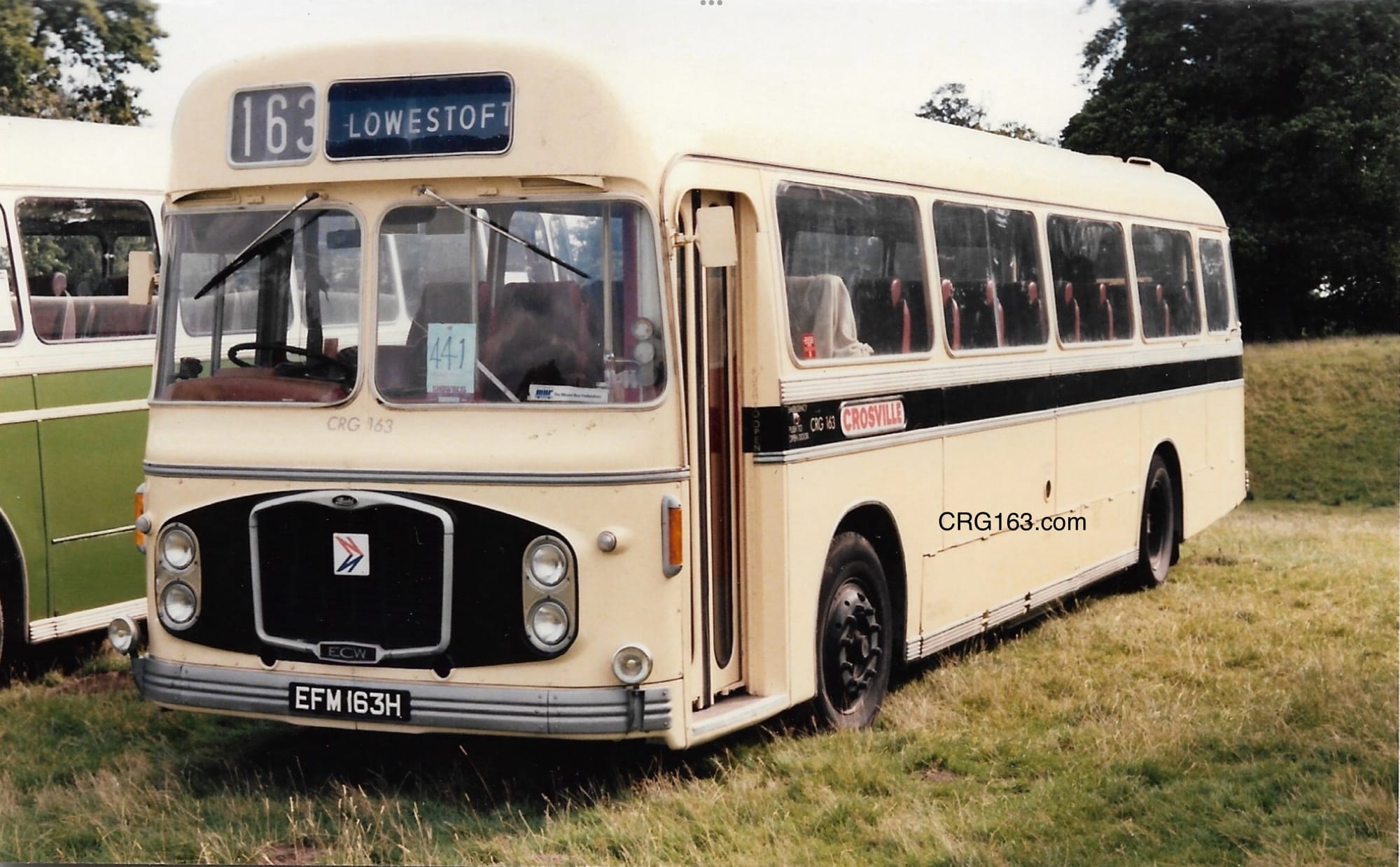
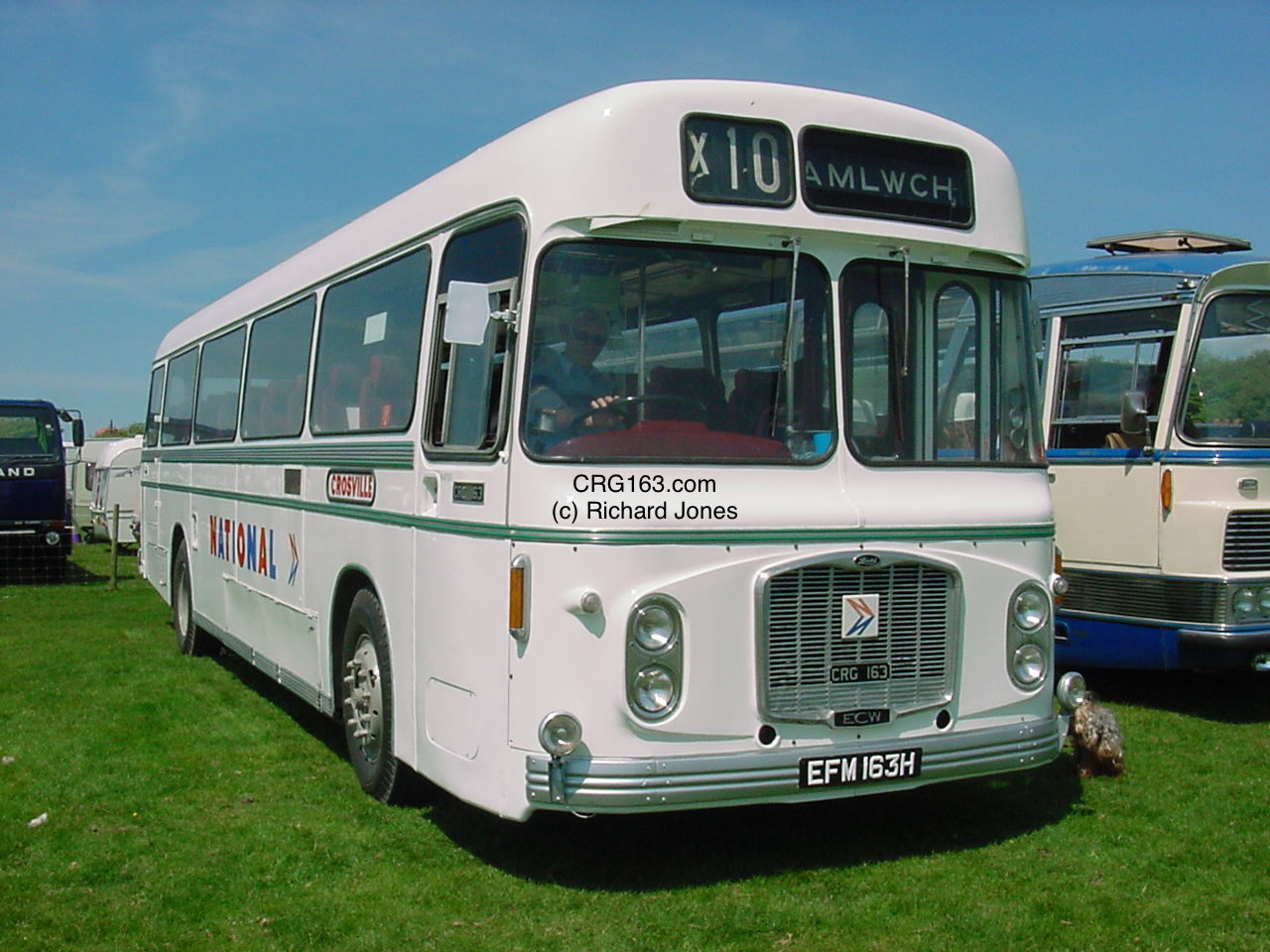
CRG164 (EFM 164H)
Vehicle profile
New: 02/1970
Initial fleet number: CRG164
Registration number: EFM164H
Chassis type: Bristol RELH6G
Chassis number: RELH-4/259
Body make: Eastern Coach Works (ECW)
Body number: 18141
Seating: C47F
Engine: Gardner 6HLX
Gearbox: Semi-auto
Year downgraded: 08/1979
Downgraded fleet number: ERG164
Depot allocations: Liverpool Edge Lane (1970-1979); Warrington (1979); Denbigh (1980); Runcorn (1980)
Liveries carried: Cream & black coaching; simpler cream & black coaching; National white; dual purpose green and white
Year withdrawn from service: 06/1981
Life beyond Crosville: not known, believed to be scrapped
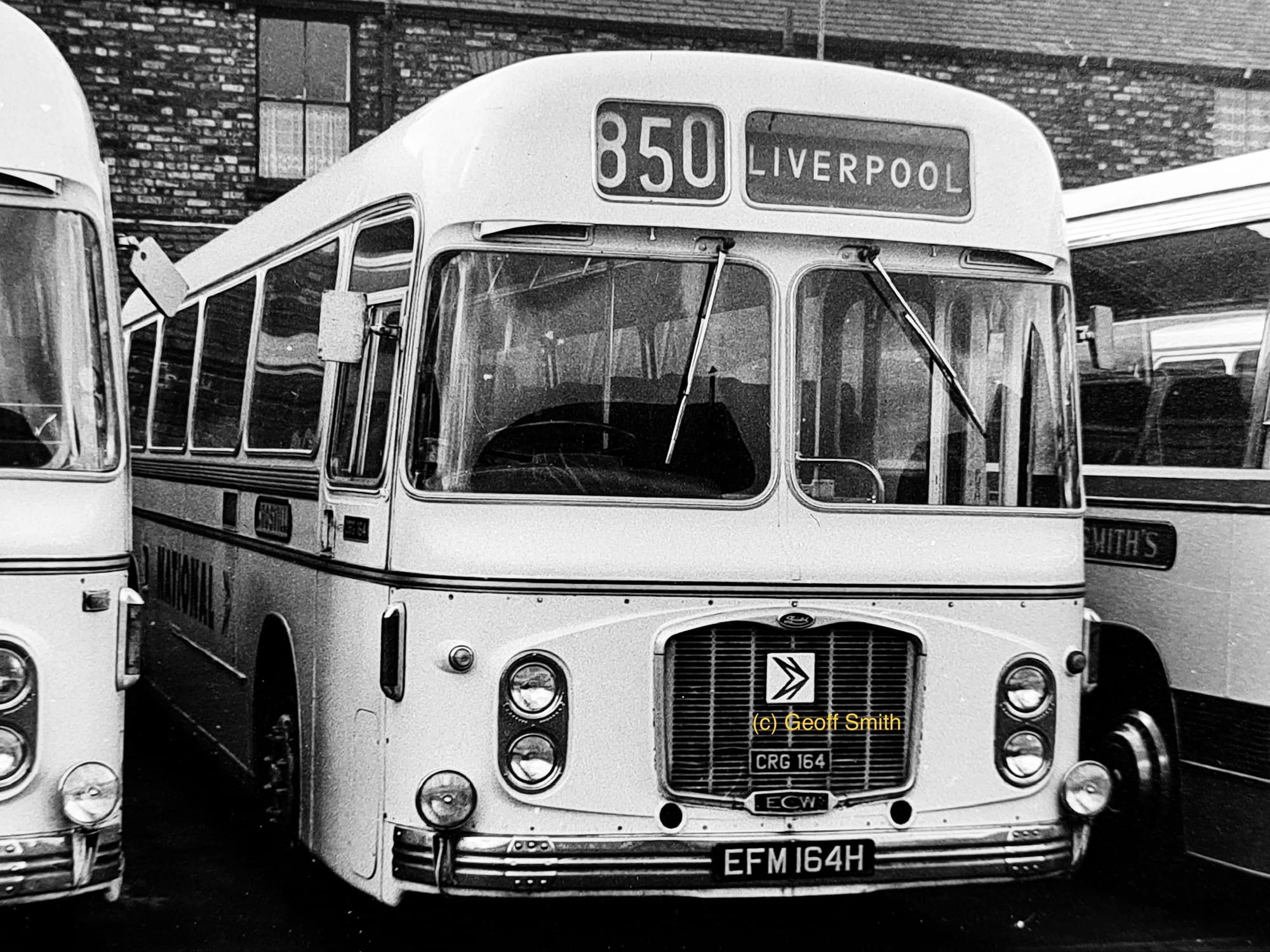

The surviving Crosville CRG (Bristol RELH) coaches are in date order of build: CRG530, CRG573, CRG103, CRG106, CRG111, CRG163 (6 in total from 47 original)
New Crosville in Liverpool book
A new book on the history of Crosville in Liverpool will be available from 15 July 2025 onwards. For further details and to pre-order please click HERE or visit the following web address.

Contact details
If you have any photos or related information about CRG163 or sister vehicles then please e-mail us at post@crg163.com . Many thanks in advance.
Please note
There are some photos on this website where copyright is unknown. If these photos are yours then please let me know by e-mailing post@crg163.com so that they can either be removed immediately or copyrighted to your name accordingly. Thank you.
All photographs have been watermarked on this website and should not be reproduced elsewhere without prior consent. Unfortunately some private photos previously shared on line have been copied without permission and have subsequently appeared for sale by third parties on e-bay.
Subscription
You can also subscribe to this website by entering your e-mail address into the white box below, bottom right and click the subscription button ⬇️

Parts Wanted
Crosville - CRG163: Timeline
Combined key facts for Crosville Motor Services / Crosville Wales / CRG163 / Bristol RE from 1906 onwards. Liverpool and Amlwch depots have been included in relation to their connection with CRG163.
1906
The Crosville Motor Company is formed by George Crosland Taylor and his French business associate George de Ville in order to assemble and sell French designed cars and marine engines with company premises at Crane Wharf, Chester.
27/10/19061908
Car making activities however cease in 1908, with the company focussing its activities on agency work and repairs.
01/01/19081910
Due to its increasing fleet size, Crosville adopts a new fleet numbering system which involves naming buses with such names as ‘The Alma’ and ‘Busy Bee’. In all the company would develop four methods of fleet vehicle recognition over the years.
01/01/19101911
On the 2nd of February, 1911 the company starts its first bus service, operating between Ellesmere Port and Chester having been advised to diversify its business into passenger transport. Once established a few years later the bus service was extended to New Ferry with a second new bus service introduced between Chester and Kelsall.
02/02/19111913
Crosville begins to expand its operations into mid Cheshire, predominantly around Crewe in December 1913 when the council at Crewe approved licences for services in the area. This included acquiring the established business of Ward Brothers in the area. The company’s fleet livery at this time was grey. Wartime restricted expansion until 1919 when Crosville introduced a Chester circular service as well as from New Ferry to Meols, with other destinations also established from Chester.
01/12/19131915
Around 1915 Crosville introduces its second fleet recognition method which simply involves numbering vehicles such as ‘1’; ’2’ and so fourth between 1 and 1000. Crosville being superstitious never used the number ‘13’ but used ‘AC’ instead. This method of recognition continues until 1934.
01/01/19151922
In the early years of the company it had always been an ambition to access the lucrative bus market of Liverpool. Indeed the company was looking for ways to enter the city. Identification had been made by the Crosland Taylors that Warrington and Widness would be possible access points to the city. In June 1922 the company commenced the operation of three new routes from Widnes that would serve Speke, Garston and Warrington with an outstation at Widnes. This was subsequently closed when the new depot at Warrington (Chester New Road) was opened in 1923.
01/06/19241924
Crosville continued to expand into the Wirral and into north Wales with the introduction of a circular service including Mold and Flint, again acquiring existing bus operators. The company continued to expand across north Wales with further acquisitions taking place of local bus operators such as Owens of Caernarfon and Cynfi Motors of Deiniolen with new depots being opened in Dolgellau and Blaenau Ffestiniog in 1924. Services were rapidly extended to the Llyn Peninsula as well as Aberystwyth and Aberaeron establishing new depots along the way.
01/01/19241927
In 1927 the company purchased land in Liverpool at the junction of Church Road and Edge Lane measuring 3,350 sq. yd. Here what became to be known as the company’s Edge Lane depot would be built and brought into use in June 1928. The depot was extended with additional adjoining land purchased in 1937 with maintenance facilities being extended in 1942.
01/01/19271928
Popularity for excursions and long distance travel by charabanc or coach had also attracted the attention of Crosville, experimenting with a few weekend excursions to London in 1928.
01/01/19281929
The weekend excursions to London established In 1928 proved popular. As a result in 1929 Crosville introduced it’s first regular daily service between Liverpool and London, the four Leyland Tiger buses, registration FM5222- FM52225, fleet numbers 175 - 178; each with 25 coach seats fitted. Routes to Chester and North Wales were introduced from Liverpool in the 1930s.
01/01/19291929
In February 1929 company ownership changes when the London, Midland and Scottish Railways Company (LMS) purchases Crosville Motor Company Limited due to it losing passengers to road traffic. The company was purchased outright for £398,750.00.
01/02/19291929
The Crosville Motor Company is placed into voluntary liquidation in November 1929 and a new company trading as LMS (Crosville) was introduced. Claude Crosland Taylor becomes the manager of the new business who was the son of the original company founder.
01/11/19291930
In 1930 further company changes take place from an agreement made between the railway companies and the Tilling and British Automobile Traction (T&BAT) Group . It was to acquire 50% of the shareholdings of each company under the group’s control. In return the railway companies sold 50% of their shareholdings in acquired businesses to the T&BAT. In some cases new companies were formed, however in relation to LMS (Crosville), Crosville Motor Services Ltd., emerged on the 15th of May, 1930, with LMS having only owned Crosville outright for just nine months. Claude Crosland Taylor was retained as the new company’s General Manager, retaining the family - company connection.
15/05/19301930
By 1930 Crosville had consolidated it’s operations in north and mid Wales as well as on the Wirral and Cheshire.
01/06/19301931
In 1931 Crosville establishes services between Merseyside and north Wales through an arrangement with Maxways and the Wirral Transport Company, succumbing to Crosville in 1934.
01/02/19311934
Around 1934 Crosville introduces its third method of fleet recognition through an alpha-digit numeric system. Simply a letter was assigned to the type of vehicle such as ‘C’ for a Leyland Lion LT1. Some vehicles used two characters as the fleet grew followed by the assigned number. The number did not correspond to the registration of the vehicle. This method continues until 1958.
01/01/19341935
Crosville open their new depot at Amlwch on the Isle of Anglesey in 1935.
01/01/19351936
As new depots were built by the company so too were new friendships and communities which would become known as the Crosville family. Staff who worked for the company were extremely proud to do so which is evident from photos of the time. Example photos are within of the Crosville family from the Caernarfon and Blaenau Ffestiniog depots. The Caernarfon photo was taken in 1936. All staff can be seen proudly and professionally wearing their uniforms with depot management and office staff also appropriately attired.
01/01/19361939
Expansion of the company was hindered in 1939 due to World War Two, forcing cuts to services and dropping completely non-essential work. However there was growth in some services where additional buses were needed to support industries and demand including a shift towards double deckers. This trend continued in peacetime.
01/09/19391942
On the 3rd of December 1942, Crosville Motor Services became a subsidiary of the Tilling Group having previously been a part of the British Electrical Traction (BET). By 1945 Tilling green had replaced the maroon livery previously adopted by LMS on all company vehicles. Bristol vehicles as owned by Tilling became the favoured order of the day through the company‘s vehicle purchasing policy.
03/12/19421945
As the company continued to expand, management changes also took place. On the 31st of March 1945 Claude Crosland Taylor died at the young age of 45. He was the son of the late George Crosland Taylor and company founder and had headed the company since 1923 following the death of his father whilst company ownership was with the railways. Following Claude’s death his brother James was appointed the company‘s general manager, continuing the family connection with the company.
31/03/19451945
By the end of World War Two, Crosville found itself in a very health position. Over 50% additional passengers were now being carried with revenue almost 90% in excess of that of pre-war. As a result the company was able to reinvest in property which would rise in value. Post war service provision grew once more as additional resources became available such as driving staff and vehicles.
02/09/19481948
On the 1st of January 1948 the Transport Act 1947 came into effect. Simply under the terms of the Act, the railway network, long-distance road haulage and various other types of transport were nationalised and came under the administration of the British Transport Commission (BTC) which acquired the Tilling Group shareholding. At the same time the Railway Executive took control of the four mainline railway companies with their shareholding in Crosville passing over to BTC.
01/01/19481950
Staff recruitment became difficult in the 1950’s for Crosville and other companies which led to staff shortage as bus work at the time was relatively low paid. One man operation was however introduced during the following decade which would reduce labour costs away from the traditional driver and conductor model.
01/01/19501958
Crosville introduces its fourth and final fleet recognition through an alpha-numeric system comprising of three letters denoting the vehicle type then between one and three numbers replicating the vehicle registration number. The numbers used were not always replicated.
01/01/19581960
During the 1960’s Crosville adopted a contraction policy that involved withdrawing from unprofitable routes whilst the company was able to expand in other areas when markets supported this.
01/01/19601962
Bristol Commercial Vehicle commences the production of the Bristol RE in 1962.
Learn More01/01/19621963
REX.002 followed in April 1963 and would be the RELH, C47F seat high floor coach chassis. This vehicle would be registered 521 ABL, delivered to Thames Valley Traction’s South Midland in the maroon and cream livery between Oxford and London. It would have the stepped wait rail (bright work) a feature carried from the Bristol MW. A second pre production model/prototype of the Bristol RE RELH was given the number REX.003 built in July 1963. This would be a coach body built by ECW and used as a test bed by Bristol Commercial Vehicle (BCV) until February 1967 when brought up to service standard, fitted with a Gardner engine.
01/04/19631963
Fifteen years later under the Transport Act 1962, the government dissolved the British Transport Commission and created the British Railway Board to take over railway duties from 1 January 1963 and the Transport Holding Company (THC) to take over bus operations from the same date.
01/01/19631965
The Cymru Coastliner limited stop service was introduced by the company in 1965 and operated hourly between Caernarfon and Chester. The service commenced its operation with Bristol RE’s, Bristol FLF double deck buses with luxury seating. In the early days of the Coastliner, vehicles such as CRG163 would also be used with route branding provided through specially designed radiator grill plates that would fit onto the front grille of the vehicle through special fittings. The below plate is an exmaple of such branding plates used.
01/01/19651967
In November 1967 British Electric Traction (BET) unexpectedly offered to sell its bus operations to the government. BET, who had been the only major private bus operating group, received £35 million for its 25 provincial bus companies and 11,300 vehicles.
01/11/19671969
From the 1st of January 1969 a significant change took place to the UK bus industry with the introduction of the National Bus Company (NBC). This involved the merger of the Transport Holdings Company (THC) and the British Transport Commission (BET) organisations into a single National Bus Company (NBC) following the White Paper recommendations forming a part of the Transport Act 1968.
01/01/19691970
On 06 March 1970, CRG163 is first registered by Crosville Motor Services in the smart and beautiful cream & black coaching livery with four illuminated side panels each side of the vehicle. CRG163 would be based at the company’s Liverpool Edge Lane depot, allocated to the company’s prestigious Liverpool - London services.
Learn More06/03/19701971
In October/November 1971, CRG163 would be repainted into the 2nd more simpler cream & black coaching livery. The four side illuminated side panels would be removed and replaced by one longer pane above the front wheel arch on both sides of the vehicle.
01/10/19711971
The Runcorn Busway was introduced in February 1971 and was the world’s first rapid transport system, being conceived in the Runcorn New Town Masterplan in 1966. The busway is a totally separate road network available for bus use only unlike bus priority lanes or guided busways. By 1980 all 14 miles (22 kilometres) of the busway was operational, designed in such a way that the majority of residents were no more than a five minute walk from a bus stop. Dedicated raised busways provide access to services at the busways main station situated at Runcorn Shopping Centre.
01/02/19711972
From 1972, the sales of Bristol RE’s to the National Bus Company (NBC), which had taken over both THC and BET began to dry up. This was due to the introduction of the Leyland National. The Bristol RE remained in production from 1976, but only for the Northern Irish state owned bus companies Ulsterbus and Citybus and for the Christchurch Transport Board, New Zealand which continued until 1983.
01/01/19721972
Following the appointment of Frederick Wood as chairman in 1972, NBC introduced a corporate identity. This was launched on the 10th of April 1972. This included the famous double ‘N’ symbol devised by Norman Wilson who was a leading Manchester graphic designer of the 1970s.
10/04/19721972
In December 1972, CRG163 is repainted into the National white livery. For a short period CRG163 would carry the short lived 3” green fleet name within the illuminated panel each side before being replaced with the more familiar red upper case Crosville fleet name.
01/12/19721973
In 1973 Crosville’s half cab open top double decker DLG811 (vehicle registration XFM223) was used in the film titled ‘Holiday on the Buses’ which was filmed at Pontins Prestatyn and other location including Rhyl.
01/02/19731974
In November 1974, CRG163 receives its second repaint into National white livery.
01/11/19741976
By this time the X1, X2, X18 and X61 services have been renumbered 850, 851, 853, 854 and 855 and absorbed into the wide National Express coach network and numbering system.
26/09/19761977
In March 1977, CRG163 receives its third and final repaint into National white livery. At the same time CRG163’s traditional metal fleet plates are removed and replaced by the standard National Bus Company (NBC) corporate grey fleet stickers.
01/03/19771979
In April 1979, CRG163 is reallocated to Crosville’s Amlwch depot on the Isle of Anglesey, North Wales. By August of the same year CRG163 is repainted into NBC dual purpose livery of green and white and reclassified as ERG163. As ERG163 the vehicle would operate on a range of services from local bus to longer distance services such as the Saturday X10 service between Cemaes Bay and Liverpool.
01/04/19791979
On the 1st of June 1979, service 700 was introduced between Bangor and Cardiff via Brecon, Machynlleth, Dolgellau, Porthmadog and Caernarfon branded as TrawsCambria, operated jointly with Western Welsh.
01/06/19791979
Crosville also developed it’s own express network of coach services branded as ‘Town Lynx’ introduced on the 3rd of December, 1979.
03/12/19791980
The Map Analysis Project is commissioned by the National Bus Company. This was an exercise that would look in detail at existing bus networks through data gathering undertaken by surveys of existing passengers, performance of services and costs being incurred.
06/10/19801980
On the 6th of October the Transport Act 1980 was introduced ending the licensing regulation imposed on express coach routes and tours over 30 miles.
06/10/19801982
Production of the Bristol RE comes to an end.
01/01/19821983
The Eurolynx International concept was the development by Crosville of European continental weekend coach trips beyond the UK to Amsterdam and Paris.
01/01/19831984
On 13 April 1984, ERG163 is withdrawn from active service by Crosville for disposal with ERG163’s future looking very uncertain. However the vehicle is sold to a Mr Gordon Bate from the Manchester area for preservation. Mr Bate would also save other Crosville vehicles in the same way. Mr Bate repaints ERG163 into the vehicle’s second cream & black coaching livery variant from 1971 and applies new NBC style fleet number stickers, reclassifying ERG163 as CRG163 once more.
13/04/19841985
In the 1980’s Crosville’s engineers led the way in converting the Leyland National’s power unit from it‘s standard Leyland 510 engine to the Gardner 6HLXB in a drive to improve economies on fuel consumption. Whilst the Leyland’s fuel consumption rate per gallon was approximately 6 miles, the Gardner would afford closer to 10 miles, dependant on the way the vehicle was driven; route terrain and other factors such as rural and urban operation around congestion and stop and starts. The conversion was covered in the COMMERCIAL MOTOR publication, w/e March 30, 1985.
30/03/19861985
On the 3rd of August 1985, Crosville’s Edge Lane depot is closed with the company‘s entire operation relocated to Love Lane depot from Sunday the 4th of August. The site was once occupied by Tate and Lyle and was situated at the end of Love Lane.
03/08/19851985
Crosville’s new Liverpool depot opens at Love Lane.
04/08/19851986
On the 13th of February 1986, the then Secretary of State for Transport, Nicholas Ridley demanded that the four largest NBC companies be further split in the spirit of competition as they provided too great a competitive threat on deregulation to other operators. This has a major impact on Crosville as it is forced to be split.
13/02/19861986
Ahead of deregulation the new Crosville Wales Ltd., is created from the renaming of ‘The Devon General Omnibus And Touring Company on the 20th of May 1986, with the new company becoming fully operational from the 10th of August 1986.
10/08/19861986
Bws Gwynedd was the brand name given by Gwynedd County Council to the emerging deregulated bus network in the county of Gwynedd in 1986 with its famous red front and yellow line which segregated the red from the colours of the operating bus company.
01/04/19861986
Launch of the new Crosville Wales identity at Penrhyn Castle on 4 September 1986.
04/09/19861986
One of the biggest upheavals to impact the bus industry in the UK in modern times was the introduction of the Transport Act 1985 on the 26th of October 1986.
26/10/19861986
The mini bus revolution comes following deregulation. The age of the mini bus was based upon replacing existing big bus operation as well as introducing new services to housing estates and places not previously served.
26/10/19861987
Crosville closes its Love Lane depot in Liverpool following a difficult period of labour relations. 270 job losses take place, 230 of which were drivers. This sadly ended Crosville’s 60 year presence in Liverpool.
31/01/19871987
Crosville Wales Ltd., is purchased through a management buy-out from the National Bus Company.
22/12/19871988
Crosville Motor Services is sold to ATL (Western) Ltd. of Rotherham with 1,169 staff and 470 vehicles. Coincidentally 470 vehicles were also allocated to the new Crosville Wales company on the split, which was sold three months earlier. Crosville’s new owner was ATL (Western) Ltd. of Rotherham and parent company of Carlton PSV (Sales) Ltd. It had also purchased National Travel (East) Ltd as well as Yelloway of Rochdale. ATL soon ran into difficulties from the inexperience of running bus companies, in particularly around maintenance. Yelloway’s operating licence was subsequently cancelled with Crosville taking over it’s operations from a depot in Rochdale.
25/03/19881988
In October 1988 Crosville Wales’ management sells to National Express.
01/10/19881989
Less than a year later Crosville Motor Services was sold again, this time to the Drawlane Group on the 18th of February, 1989. It was announced that Crosville would return again to it’s previous flagship status, however sadly this never happened. Heswall depot was closed on the 4th of September, 1988 with vehicle fleet being reallocated to Rock Ferry depot. West Kirby bus station also succumbed to closure on the 10th of April, 1989 as well as the depot itself not long afterwards. Drawlane also owned North Western and Midland Red North and as such saw an opportunity in September 1989 to rationalise operations between it’s neighbouring subsidiaries. Crosville had already been weakened under ATL ownership, and was to be further weakened through the upcoming rationalisation. This resulted in Crosville depots and staff being split and transferred to other companies as follows: - The Crewe operation transferred to Midland Red North - Manchester and Rochdale operations went to Bee-Line - East Cheshire operations went to C-Line - Runcorn and Warrington depots were transferred to North Western with Northwich following in January 1990.
18/02/19891989
In June 1989 National Express Holdings acquire Amberline Ltd. This was the renamed Amberline of Speake which was formed in the mid 1970’s. At the time Amberline had 120 odd staff with a fleet size of 55 vehicles. The fleet was made up of mini buses; double deckers; coaches and a number of double deck Metroliners. The company was already operating services on behalf of National Express through contract; private hire and local bus services. Subsequently Crosville Wales vehicles were drafted into Merseyside to bolster the ailing company with Crosville Wales’ new dragon logo replaced with a similar Liver bird design. Vehicles used by Amberline on local bus services would adopt the Crosville Wales green and white. Losses also took place in local authority contracts as well as a decision by Amberline to terminate some contracts. As a result of Crosville Wales becoming responsible for Amberline this placed further financial pressure on the former, itself a fledgling company struggling to survive in the brave new world of bus deregulation and privatisation.
01/06/19891990
Crosville’s remaining depots at Chester, Ellesmere Port and Rock Ferry were subsequently sold to PMT Ltd., of Stoke-on-Trent on the 2nd of February 1990. PMT also purchased the rights to use the Crosville name. PMT Ltd. (company number 02291753) was created on 12 December 1986 when it was purchased by its management and employees through a buyout from the National Bus Company. This is not to me confused with the original Potteries Motor Traction company (company number 00057968) incorporated on 28 June, 1898.
02/02/19901990
The original Crosville company was left with only six vehicles for disposal. As the rights to use the Crosville name had been sold to PMT the original Crosville Motor Services Ltd., was renamed North British Bus Ltd., from 30 March 1990.
30/03/19901990
PMT (Stoke) Limited, (company number 00057968) the original Potteries Motor Traction company incorporated on 28 June 1898, a dormant company by now, is re-registered as Crosville Limited on 15 August 1990, to protect the Crosville name, having purchased the rights to use the name on the 2nd of February 1990. Crosville Limited still exists today, albeit as a dormant, non trading company within the First Bus Group.
15/08/19901990
In October 1990 Crosville Wales’ Amlwch depot closes for the very last time to make way for a new Kwik Save store that opened on the site in 1992. Crosville Wales as it was by then continued its presence in Amlwch but operating from a vehicle parking area situated on the nearby industrial estate. This was unfortunately the fate of other depots in the region during this period including Caernarfon in 1991 followed by Pwllheli in 1992.
01/10/19901991
In June 1991 the National Express Group sells to the Drawlane Transport Group for £10.25m. The deal includes subsidiaries Crosville Wales, Eurolines (UK), Amberline, Tayside Travel Services, Roadmaster Travel Services, Carlton PSV and the trading units of Crusader Group Travel, Travellers World and National Express Holidays.
01/06/19911992
British Bus is founded in November 1992 when the Drawlane Transport Group decides to split its bus interests from its National Express ownership in the lead up to the stock market listing of National Express. British Bus would own 21 bus companies, including Crosville Wales.
01/11/19921992
National Express is floated on the London Stock Exchange on the 1st of December 1992 for a price of 165p per share.
01/12/19921993
The assets of the Drawlane Transport Group plc is taken over by British Bus plc in early 1993 following the floatation of National Express in 1992.
01/01/19931995
The final throws of the Cymru Coastliner service saw the service operated by Leyland Tiger/ Plaxton coaches in the standard Crosville Cymru bus livery but with special vinyls applied. Sadly the Cymru Coastliner was withdrawn completely in 1995 due to reduced farebox revenue and service rationalisation just before it reached its 30 years in operation.
01/06/19951995
In June 1995 PMT Ltd., is sold to Badgerline which in turn would be merged with the GRT Group, forming First Bus. This is then further reorganised to First Staffordshire & South Cheshire (covering the original Potteries Motor Traction operations) and First Chester & The Wirral (covering north Cheshire and Wirral operations) but remaining a part of First Potteries until 2010. On 12 November 2012 First Chester & The Wirral was sold to Stagecoach Merseyside and South Lancashire which had also purchased Ribble Motor Services in 1988. First Potteries Limited (company number 02291753) is still active within the First Bus Group and is actually the re-registered PMT Limited, which took place on 09 August 2001 with Companies House.
01/06/19951996
In August 1996 Cowie purchases British Bus. It had been proposed to float British Bus on the stock exchange but this was cancelled with the business sold to the Cowie Group. Crosville Wales is also sold as a part of British Bus.
01/08/19961997
In 1997 Cowie adopts a policy that would introduce a corporate identity for all companies owned. The name would be Arriva. The first vehicle at Crosville Wales to appear in the new Arriva branding and livery would be Mercedes Benz MMM240, in December of the same year.
01/01/19971998
Crosville Wales Ltd., is officially renamed Arriva Cymru Ltd., on the 2nd of April, 1998 with Companies House brining the beginning of the end of the Crosville name in Wales. Full fleet branding into the corporate identity would be accelerated.
02/08/19982001
Possibly the last recorded vehicle to carry the Crosville Wales fleet brand and livery in live service in Wales was EOG212, seen by Andy Hamer at Caego depot on 25 July 2001. Andy commented that EOG212 clung on in very faded Crosville Wales livery, still carrying the livery and fleet names with a small white Arriva logo/name on the first nearside window.
25/07/20012002
On 09 June 2002, CRG163 is sold to Richard Lloyd Jones for further preservation following numerous phone calls and meetings. By now CRG163 was down at heel, requiring further restoration and significant investment.
Learn More09/06/20032002
From the 10th of June 2002 onwards active restoration of CRG163 begins taking two years to complete. Hundreds of miles are travelled across the UK in the search for parts. The furthest location being the Scotch Corner in sourcing six hubs (wheels).
Learn More10/06/20032002
On 08 November 2002, registered company Frontline Enterprises Limited (company number 2718097) is re-registered Crosville Bus Limited. On the actual written resolution accompanying the certification of registration of name change it states for and on behalf of Stevensons of Uttoxeter Limited. Crosville Bus Limited, a dormant company is however dissolved on 13 April 2013. Stevensons of Uttoxeter was purchased in June 1994 by British Bus and operated it in conjunction with Midland Red North, which by today is part of Arriva Midlands.
Learn More08/11/20032004
On 01 May 2004, CRG163 is publicly unveiled for the first time following restoration at the Llandudno Transport Festival. By now CRG163 has been restored and repainted into the National white livery the vehicle carried between 1972 and 1979. CRG163 would also proudly carry new bespoke traditional metal fleet plates and as carried when new.
Learn More01/05/20042004
CRG163 attends an event at Parc Glynllifon which includes preserved, historic vehicles.
Learn More09/05/20042004
CRG163 surprises the Crosville Enthusiasts Club 1967 North Wales tour by appearing at Conwy through a surprise arrangement with the late Gwyn Taylor-Williams, conveying members to Bangor. It was an absolutely amazing day as Mr Jack Cowap was on board, 88 years old and former driver of CRG163 when based at Crosville’s Edge Lane depot operating the Liverpool - London service. Also on the same journey was another valuable passenger in the form of Bob Moelfre (Robert Roberts). Bob once worked at Crosville’s Amlwch depot and drive many miles with CRG163 when as ERG163 on the X10 from Cemaes Bay to Liverpool. Bob even drove restored CRG163 around the Cibyn Industrial Estate on the same afternoon. What an absolute magic moment!
Learn More12/06/20042004
CRG163 attends the Oswestry Show stopping in Bala on the way home for an evening meal at ‘Y Badell Aur’ Chip Shop.
Learn More20/06/20042004
Newly restored CRG163 becomes a bit of a celebrity by being featured on the front page of the Bus & Coach Preservation magazine, Volume 7, Issue 2 with a five page internal spread. This included a full photo shoot of the vehicle between Bangor and Menai Bridge with the main cover photo taken of CRG163 driving through the famous arches of the Menai Suspension Bridge displaying X10 Bangor on the destination screen. Coincidentally the X10 never operated to Bangor but operated from Cemaes Bay to Liverpool and vice versa. Bangor was added as the destination for the photo shoot as on the day the final destination was Bangor. X10 was added on the destination screen out of respect for Crosville’s Amlwch staff. This destination of X10 Bangor would be used for the EFE model launched in September 2006.
Learn More01/07/20042004
On 03 October 2004, restored CRG163 returns home to Merseyside by attending the Wirral Bus & Tram Show in Birkenhead. Following the show CRG163 visits the Woodside Ferry Terminal, followed by an impromptu trip across to Liverpool Lime Street Station where CRG163 and as ERG163 would operate in active service with Crosville. On the way home to North Wales CRG163 stops outside Crosville’s former Rock Ferry depot in Birkenhead.
Learn More03/10/20042005
CRG163 operates a free shuttle bus service from the Porthmadog Park bus station to the Leisure Centre car park in the same time town in support of a model railway exhibition taking place at the Glaslyn Leisure Centre.
Learn More16/07/20052005
CRG163 takes part again in the Wirral Bus & Tram Show before stopping once again at the location once used for long distance coach services at Woodside, Birkenhead.
Learn More01/10/20052006
CRG163 takes part in the Crosville 100 event to commemorate 100 since Crosville began back in 1906. The event consisted of all vehicles parked at the Rhyl Arena forming a static exhibition before a road run of all vehicles present from Rhyl to the Llandudno Transport Festival following the former 409 bus route operated by Crosville.
Learn More30/04/20062006
EFE launches its first 1:76 scale model of the ECW bodied Bristol RELH Series 2 Mark 1 coach with CRG 163 being used for this purpose. The model is unveiled and represents CRG 163 in preservation with X10 Bangor on the model’s destination screen. The model number is 32202.
Learn More01/09/20062007
Restored CRG163 returns to its former home of Amlwch and pays homage to Crosville’s former depot in the town and all it’s staff. Again it proudly displays ‘X10’ on it’s destination out of respect which was the express service once operated from the depot back in the day from Cemaes Bay to Liverpool on Saturdays
Learn More12/06/20202008
This was an emotional day without doubt as John ‘Llanrug’ Griffith, family and friends had a ride out with CRG 163 on former Crosville routes in the Caernarfon area. John was a former driver of Crosville’s Caernarfon depot who sadly passed away from illness a few weeks later. However we all had a fantastic day with CRG 163 including John’s drive around the Caernarfon Cibyn Industrial Estate. Subsequently following John’s passing the photo of him peering out of CRG 163’s cab window was framed and presented to John’s wife as a memento of the day.
Learn More07/12/20082009
CRG163 attends her final show and this at the Llandudno Transport Festival where it all began five years earlier in 2004, before bowing out of the bus preservation scene for quite some time due to changes in life circumstances and priorities around family and work. Parking and engineering support has also become an issue. CRG 163 is moved for storage.
Learn More03/05/20092010
CRG163 is forced to move from its current location as parking is no longer available.
Learn More06/11/20102013
North British Bus Ltd., is dissolved on the 8th of April, 2013 having been incorporated on the 30th of May 1930 having previously operated as the original Crosville Motor Services Limited between the 30th of May 1930 and the 30th of March 1990.
08/04/20132014
CRG163 is moved again with mechanical work undertaken in preparation for MOT. Work is however stopped as well as access to the vehicle sadly becoming impossible.
01/03/20142018
CRG163 finally becomes accessible and is moved again to new storage. Access remains very limited.
02/09/20182020
A new private Facebook group is launched on all things CRG163 for family and friends.
11/01/20202020
CRG 163 is moved again in order to access engineering support and facilitate further restoration.
12/01/20202020
The world is engulfed by a world wide emergency in the form of the Covid19 pandemic. National UK lockdowns come into force in an attempt to curb the pandemic. No further work on CRG163 takes place.
01/04/20202021
The world begins to emerge from the Covid19 pandemic and so does the continuation of the further restoration of CRG163. New parts for CRG 163 are quickly ordered which includes replacement fog lights and trafficators (front side indicators) following unknown damage.
12/06/20202021
A new bespoke website on all things CRG163 is launched. This website will grow considerably over time and will chart CRG163’s developments going forward.
30/06/20202022
CRG 163’s second restoration gathers pace and includes sandblasting, treatment and painting of all hubs; new tyres all round; new woodwork for the vehicle’s nearside lockers and vehicle frame; rebuilt radiator and other work.
22/01/20222022
CRG163 is included in official publicity photographs by National Express as it celebrates 50 years in operation.
29/03/20222022
A new book is published titled ‘National Express - The Journey of an Iconic Brand’, featuring an image of CRG163 in preservation taken by the owner at the beginning of October, 2005 at Woodside, Birkenhead.
Learn More10/05/20222022
CRG163’s EFE 1:76 scale model appears in the Bus & Coach Preservation magazine.
Learn More07/12/20222023
CRG163 is moved again to a new location and presently awaits inspection and preparation for its voluntary MOT.
16/04/2023A very special reunion - Richard Lewis
History was made today through a very special reunion between Richard Lewis, a former Crosville driver at the company’s Amlwch depot and CRG163, a dear friend from 40 years ago. (27.03.24).
Learn More27/03/2024Crosville Fleet Numbering
This is all down to the vehicle recognition system that Crosville devised and introduced that would allow employees within the company to recognise a vehicle quickly by simply its allocated fleet number.
A summary of the company’s fleet recognitions systems over the years is described below.
A summary of Crosville’s fleet numbering system
Crosville had adopted four methods of vehicle recognition through fleet numbering over the years.
1910 - 1915
Method one around 1910 involved naming buses with such names as ’The Alma’ and ‘Busy Bee’.

1915 - 1934
Around 1915 method two was introduced and simply involved numbering vehicles such as ‘1’; ’2’ and so fourth between 1 and 1000. Crosville being superstitious never used the number ‘13’ but used ‘AC’ instead.
1934 - 1958
Around 1934 an alpha-digit numeric system was introduced. Simply a letter was assigned to the type of vehicle such as ‘C’ for a Leyland Lion LT1. Some vehicles used two characters as the fleet grew followed by the assigned number. The number did not correspond to the registration of the vehicle.
1958 onwards
The fourth and final method the company adopted was the alpha-numeric system comprising of three letters denoting the vehicle type then between one and three numbers replicating the vehicle registration number. The numbers used were not always replicated.
In terms of CRG163 this was the fleet numbering system used.
Crosville had a significantly sized fleet of varying vehicle types in specification from engine type, make, model. They tended to be delivered new to the company in batches of the same type. The company adopted an unique alpha-neumeric fleet recognition system that would allow all company vehicles to be easily and quickly identified for the purpose of internal processes through its unique fleet number. No two vehicles would hold the same fleet number at any one time. This was especially useful for the Engineering and Traffic divisions of the company when dealing with internal maintenance regimes and traffic operational allocations.
Basically the principles of allocating an alpha-numeric system to new vehicles entering the Crosville fleet involved three letters (unless classed as auxiliary/supportive vehicles such as cars or engineering vehicles denoted by ‘A’) followed by the majority of times the corresponding numbers displayed on the vehicle’s registration number plate. Not always though did the same registration number correspond especially if another vehicle in the fleet was allocated these numbers.
The three letters applied was specific and based upon vehicle characteristics on the following principles:
- First assigned letter denoted the body type e.g.
- C = Coach;
- D = Double Decker (low height);
- E = dual purpose/Express vehicle that would normally be fitted by semi coach seats but also fitted with a driver cab door and ticket machine and could also be used on local bus services as well as coach work;
- H = Double Decker (high bridge);
- M = Mini bus;
- O = Open Top;
- S = Single Decker;
- Second assigned letter denoted the vehicle chassis type e.g.
- L = Leyland Leopard / Bristol LH
- N = Leyland National;
- O = Leyland Olympian
- R = Bristol RE;
- V = Bristol VRT
- Third assigned letter denoted the engine type e.g.
- G = Gardner;
- L = Leyland;
- M = Mercedes
- The numeric element of the fleet number would generally correspond with the numbers displayed on the vehicle registration, but not always the case as explained above.
The following are examples of how the company applied the alpha-numeric fleet numbering system to actual vehicles in the Crosville fleet:

Dual purpose = multi use on local bus and express longer distance services. In respect of EFM 163H, the allocated fleet number was CRG163, simply equating to C = Coach; R = Bristol RE (rear engine); G = Gardner engine; followed by 163 from its registration of EFM163H
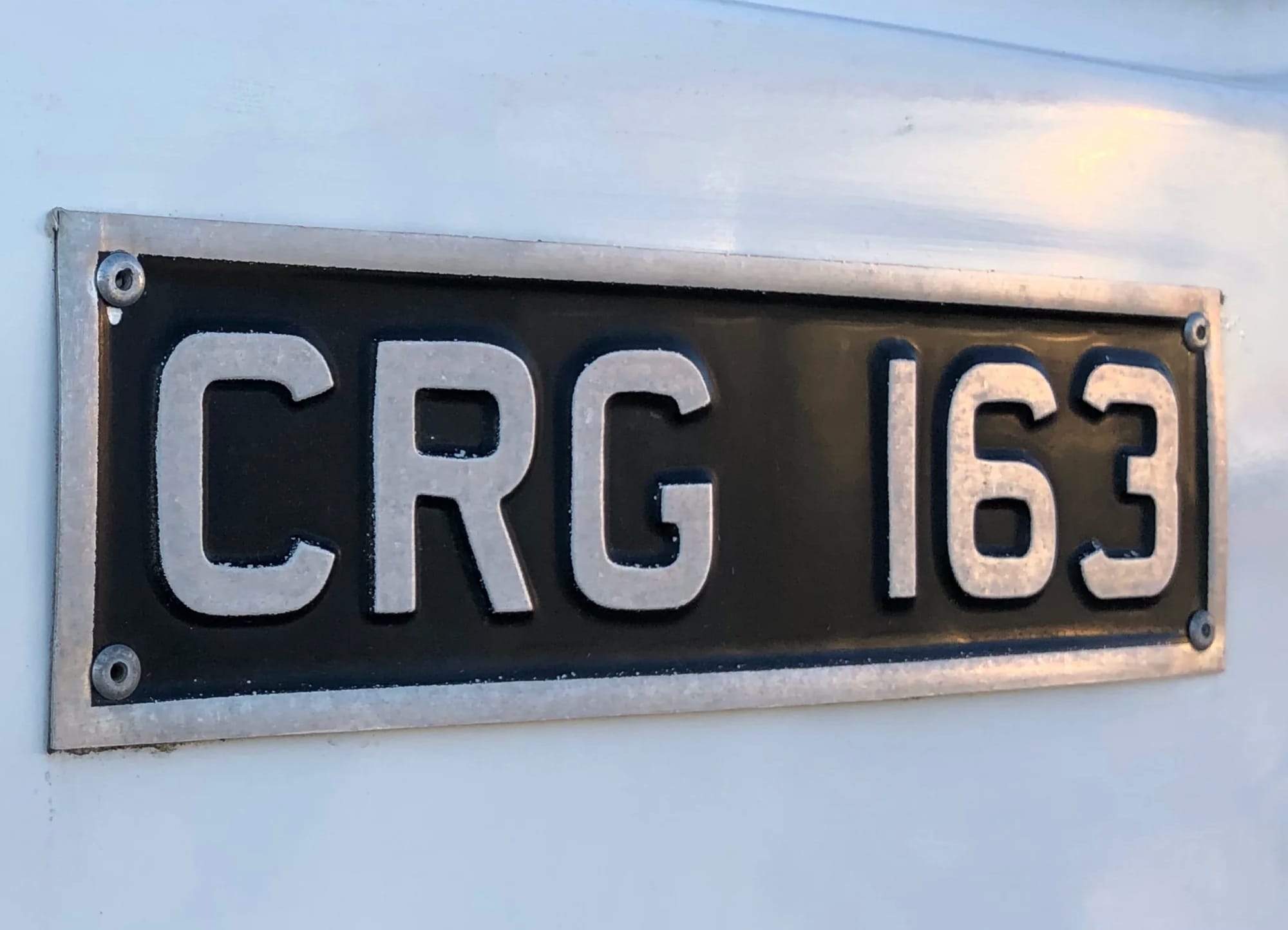
At that time all Crosville vehicles proudly carried metal fleet plates which were placed on the vehicle’s front panel, normally on the grill if available as well as under the driver’s offside cab window and below the nearside front passenger window externally as well as on the boot in some cases. Vehicles would also have a much smaller fleet plate inside the driver’s cab area, normally above the driver’s offside window.

In relation to CRG163 this was the vehicle‘s first fleet designation in recognition of coaching duties. However in 1979 the vehicle was downgraded to dual purpose use, i.e. the vehicle would be used on any service which would include local bus service operation as well.
The ‘E’ letter would replace the ‘C’ letter in the vehicle’s classification. Fleet numbers would be applied with stickers to National Bus Company specification of font and size and shade of grey.
Reclassification from CRG to ERG would also involve the fitment of a ticket machine and fixed holder as well as a change in livery to white (roof to below the passenger window line) and leaf green below this. This livery of white and green would always be associated with a dual purpose vehicle in Crosville’s fleet.
Contact details
If you have any photos or related information about CRG163 or any information on the parts presently required then please e-mail me, Richard Jones at post@crg163.com . Many thanks in advance.
You can also subscribe to this website by entering your e-mail address into the white box below, bottom right and click the subscription button. ⬇️

Crosville Memories
On this page of the website we have cherished memories from former Crosville staff, their families and friends. These memories gravitate around Crosville Motor Services and the un-sung heroes that made the company what it was, as we pay our respects to them. We also include memories of CRG/ERG163 in this context. My grateful and sincere thanks to all that have collaborated with me and contributed to this page so far. More articles will be published over time.
Crosville leaflets & timetables
This page of the website contains images of Crosville leaflets and timetables over the years including those that CRG/ERG163 would have operated including the X1.X10, X18, X61 and the 853 to name a few.
National Connection
The purpose of this page of the website is to provide a summary of the history of National Express, it’s connection to CRG163 and me and especially as it celebrated 50 years of existence in 2022.
The National Bus Company (NBC) years and the introduction of National Travel - NATIONAL & National Express
From the 1st of January 1969 a significant change took place to the UK bus industry with the introduction of the National Bus Company (NBC). This involved the merger of the Transport Holdings Company (THC) and the British Transport Commission (BET) organisations into a single National Bus Company (NBC) following the White Paper recommendations forming a part of the Transport Act 1968.
The NBC inherited 75% shareholdings in chassis manufacturer Bristol Commercial Vehicles and body builder Eastern Coach Works from the THC. Also in 1969 NBC formed a joint venture with British Leyland who owned the other 25% of Bristol and ECW, designing the Leyland National.
After the creation of the National Bus Company, but before the launch of the 'National' coach branding, the NBC began producing its own express services timetable book which at the time was named "Britain's Express Coach Guide". This replaced the 'ABC Coach and Bus Guide' which had been the bible for booking and enquiry office staff all over Britain and, like the ABC, featured timetables of numerous independent express service operators.
 Britain’s Express Coach Guide - Summer 1972.
Britain’s Express Coach Guide - Summer 1972.Under the NBC, buses would be operated by locally managed subsidiary companies. In the early years of the National Bus Company, there was some rationalisation, generally leading to the amalgamation of operators into larger units and the transfer of areas between them. As a part of this Crosville took over the former North Western depots of Northwich, Macclesfield and Biddulph as well as the former Western Welsh depots in New Quay and Newcastle Emlyn.


Following the appointment of Frederick Wood as chairman in 1972, NBC introduced a corporate identity. This was launched on the 10th of April 1972. Under the leadership of Sir Wood, the National Bus Company moved to bring together all of the scheduled coach services operated by its subsidiary companies across the UK under one network brand in 1972. From this point coaches would be branded as National Travel and painted in white, with the NBC logo and the 'NATIONAL' name in alternate red & blue letters added as shown below. This would include a new logo created by designer Norman Wilson in the shape of the letter ‘N’ for National in red, but with a mirrored shadow ‘N’ underneath in blue. This was a truly iconic logo that became synonymous for over 30 years between bus and coach travel in the UK.

Whilst the logo was no longer used on vehicles operating local bus services beyond deregulation and privatisation of the National Bus Company it continued on longer distance coach express services under the National Express brand until such time when National Express changed their logo in 2003. Further details of Norman Wilson is available through the nationalbusmanual.com website.
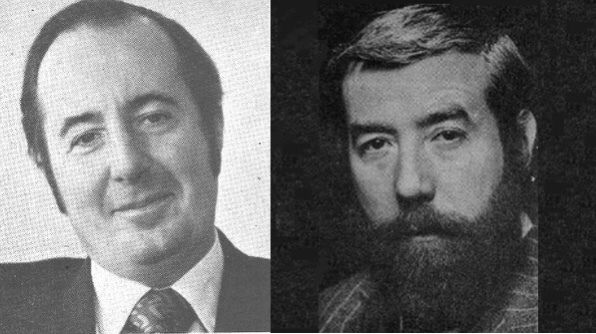
 NATIONAL’s Britain’s Express Service Guide - Winter 1973/74.
NATIONAL’s Britain’s Express Service Guide - Winter 1973/74.The inspiration came from the Unitied States which since the 1940’s operated a network of national coaches under the banner Greyhound.

CRG163 was one of the first Crosville coaches to be repainted into the all white NATIONAL corporate livery in late 1972.
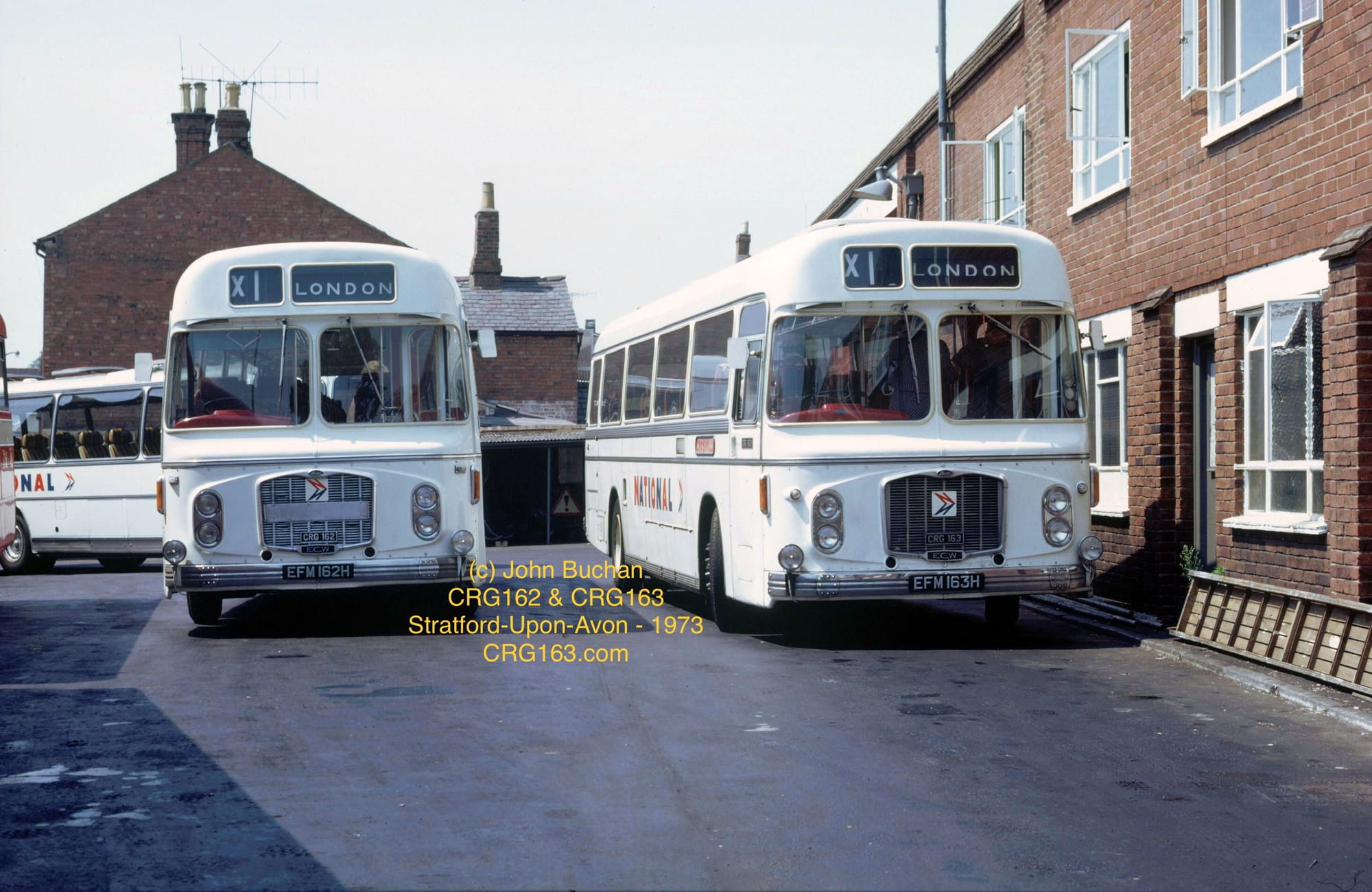 CRG162 & CRG163 at Stratford-Upon-Avon in 1973. Both vehicles operating NATIONAL service X1 to London.
CRG162 & CRG163 at Stratford-Upon-Avon in 1973. Both vehicles operating NATIONAL service X1 to London.CRG163 continued in this livery until 1979 when downgraded to NBC dual purpose (DP) status in 1979. The story of CRG/ERG163 is captured elsewhere on this website.
Sir Frederick Wood remained as chairman of the group from 1972 to 1978 and was knighted in 1977. More information about Sir Wood is available by clicking HERE .
A glimpse into NATIONAL services in the early to mid 1970’s is available on You Tube courtesy of the Huntley Film Archives (archive film 62650). It depicts a coach trip on a Plaxton Elite Bristol RELH coach in the then National white livery and branding leaving the Victoria Coach Station, London.

To see this video either click on the image above or click HERE.
National Holidays
National Holidays (the original company) also had white coaches with a red and blue brand but separate to National Express and co-ordinated the coach activities of the National Bus Company, formed in 1976. It was purchased by Pleasurama in July 1986 as a part of the privatisation of the National Bus Company. Jenkins, Skewin was subsequently purchased in 1988.
National Holidays was rebranded as Shearings National in 1989 when Mecca Leisure Group purchased Pleasurama, merging National Holidays with Shearings. Mecca was taken over in 1990 by the Rank Organisation. This added the business of Eagle Coaches - Tunbridge Wells and Gwalia Coaches - Llandudno Junction the same year. Rank sold Shearings Holidays to a management buyout in 1996.
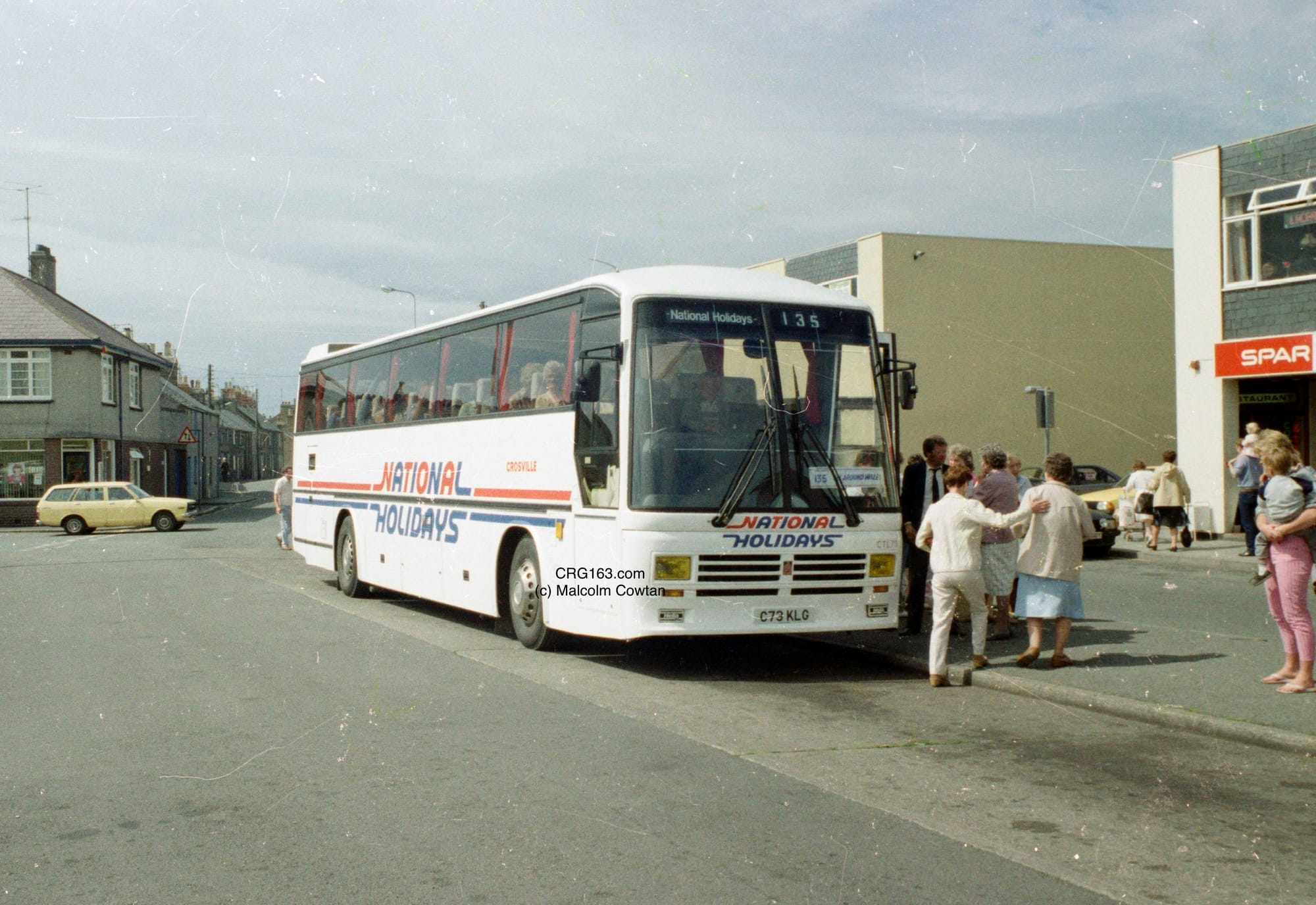 Crosville CTL73, (C73 KLG), Leyland Tiger with Duple 340 body stands at the original Pwllheli, North Wales bus station on the Maes (Square) mid 1980’s.
Crosville CTL73, (C73 KLG), Leyland Tiger with Duple 340 body stands at the original Pwllheli, North Wales bus station on the Maes (Square) mid 1980’s.Change of branding
The ’NATIONAL’ brand would be superseded eventually by the National Express identity shown below. The National Express identity first appeared on coach guides in 1974 before appearing on coaches in 1978.
 National Express services guide - Summer 1974.
National Express services guide - Summer 1974.
 National Express services guide - Summer 1979.
National Express services guide - Summer 1979.Transport Act 1980 and Competition
On the 6th of October, 1980 travel was deregulated under the Transport Act 1980. The introduction of this act ended the licensing regulation imposed on express coach routes and tours over 30 miles. This resulted in the introduction of competition between publicly owned National Express and private companies. Coach services in Scotland, including routes between Scotland and England, were operated by the subsidiaries of the Scottish Bus Group (SBG), which was also state-owned. The act also allowed county councils to set up ‘trial areas’ in which road service licences were no longer required, allowing operators the opportunity to operate services on any route they wished.
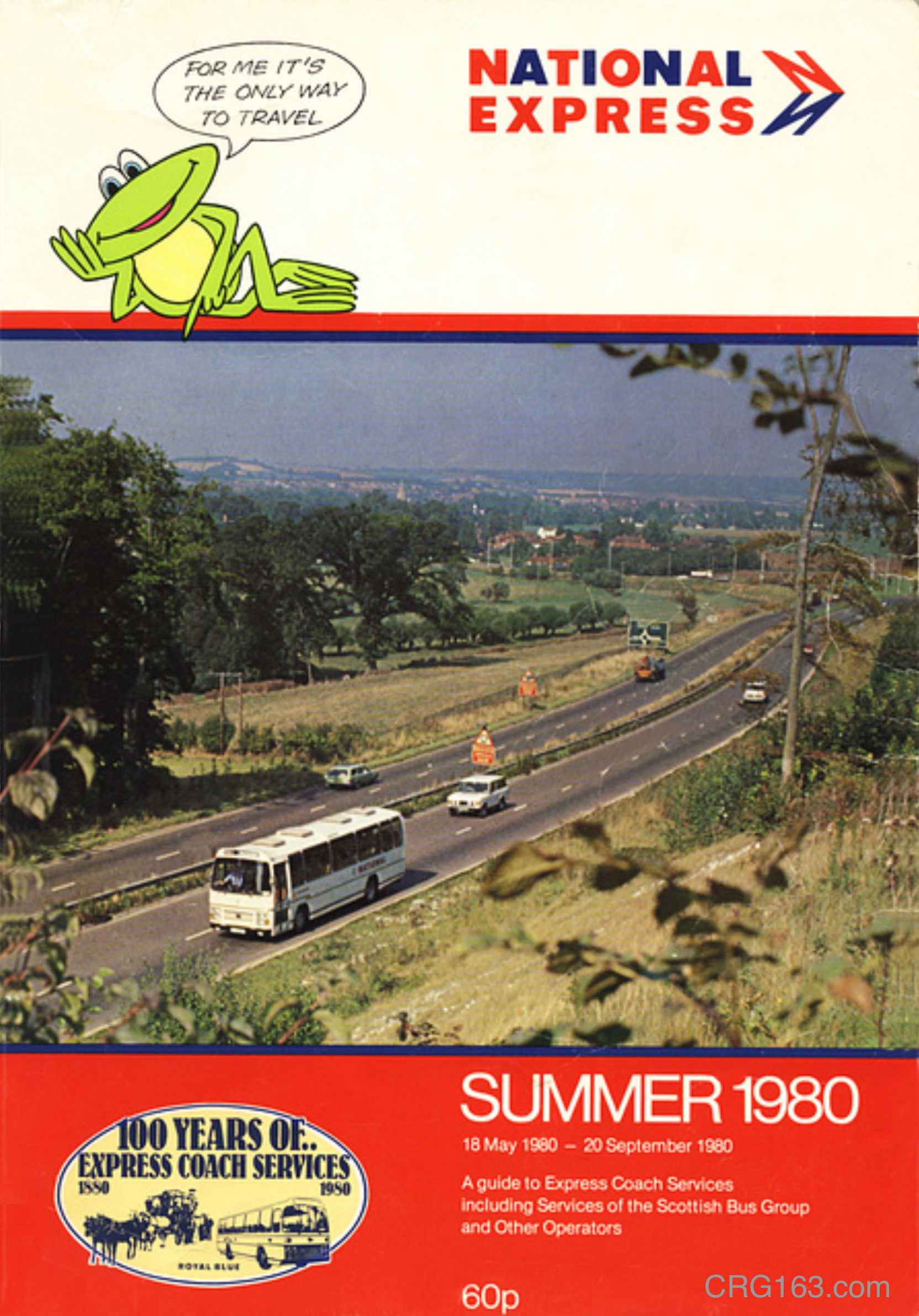 National Express services guide with Beep the Frog - Summer 1980.
National Express services guide with Beep the Frog - Summer 1980.British Coachways
In the early years of National Express it had little competition in the long distance coach market. However after deregulation of coach travel following the introduction of the Transport Act 1980 a number of operators attempted to compete but many had ceased by the end of the decade. One of the competitors was the British Coachways consortium consisting initially of six of independent coach companies across the UK. These were Wallace Arnold; Grey-Green; Shearings; Morris Bros; Ellerman Bee Line and Park’s Motor Group. their combined fleet mounted to approximately 700 vehicles. The consortium were keen to present a nationwide image and adopted the colours of red, white and blue (shown below) with some coaches receiving this livery and branding.

British Coachways commenced operation on the day of coaching de-regulation and immediately charged very low fares. National Express responded to this fare policy with a similar response in Scotland. By April 1981 members if the consortium began to pull out. British Coachways was dissolved in October 1982 led to the withdrawal of all but one of its former routes by the surviving constituent companies. Many consortium members went on to operate services on behalf of National Express. The inly route that continued was the London-Poole service operated by Excelsior. This continued in competition with National Express until February 1998 before being taken over. The Transport Act 1980 caused National Express’ market share to temporarily reduce, however in real terms passenger numbers increased.
Significant competition against National Express by independents had reduced to only two routes by 2001 which included the route between London and Glasgow. However in 2003 Stagecoach introduced its Megabus brand and network of services. this would provide more frequent services over more routes than previously provided by the British Coachways. Megabus introduced a price war with National Express in 2004 with Megabus fares advertised as only £1 for those booking early to travel on services. Competition between both companies continues to this day which was intensified in 2007 when Megabus changed its terminus in London to the Victoria Coach Station from the Green Line Coach station.
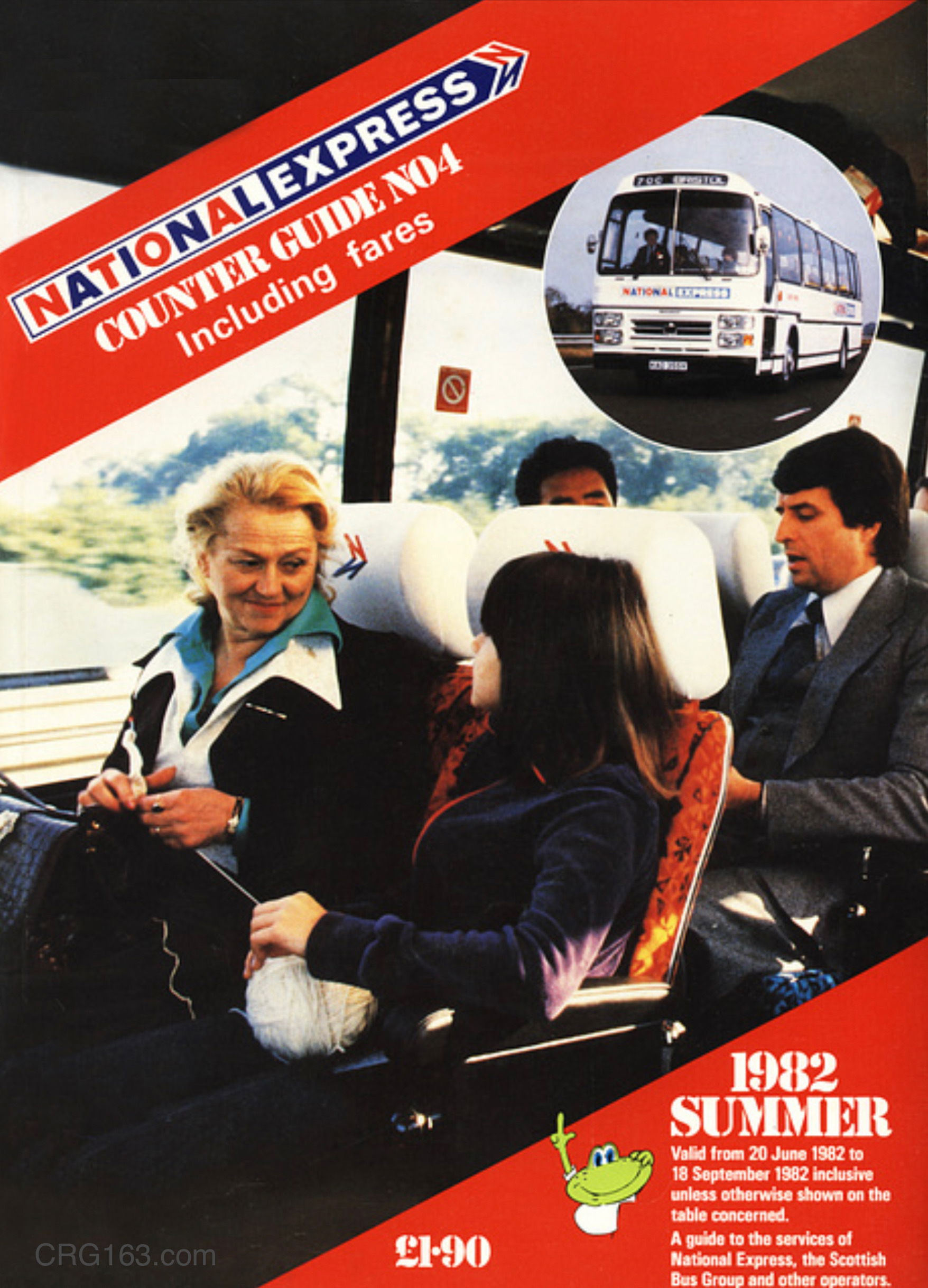 National Express services guide - Summer 1982.
National Express services guide - Summer 1982.Transport Act 1985 - Deregulation and Privatisation
One of the biggest upheavals to impact the bus industry in the UK in modern times was the introduction of the Transport Act 1985 on the 25th of October 1986. This would have significant and far reaching consequences on the National Bus Company and National Express.
The provision of the Act brought with it two distinctive parts:
- Part 1 - deregulation, replacing service licensing with a system of registration, allowing bus companies to charge any fares they wished (on commercially operated services, i.e. bus services operated at the cost of the operator) and creating a free market in which bus companies with an operating licence could decide and register commercial services with the traffic commissioner between any points. Local authorities would then fill the gaps in commercial networks by tendering and then subsidising services not operated commercially based upon their local assessment of local needs. Deregulation did not occur in Greater London in the same way. This was based on a franchising system, operated by private companies but managed by London Buses Ltd.
- Part 2 - privatisation of public sector owned bus companies under the umbrella of the NBC. In essence this was the end of the road for the National Bus Company. It was subsequently divided into seventy units and sold off to the private sector, commencing with National Holidays in July 1986 with the last sale being completed in April 1988.
 National Express Coach Guide - Summer 1987.
National Express Coach Guide - Summer 1987.National Express beyond the NBC and into the privatised new world
Following the introduction of the Transport Act 1985 the National Bus Company was divided into 70 units. The first sale was National Holidays to Pleasurama in July 1986. The last sale was completed in April 1988. National Express was subject to a management buy-out in March 1988 In the same way as all of its subsidiary companies.

The future of the famous “double-N” logo
The break up of the National Bus Company into 70 separate units and subsequent sale of each of these units brought to an end the corporate liveries and imagery that were introduced on the formation of the National Bus Company. Individual new liveries of privatised companies emerged, keen to make their own presence known and subsequent branding. This resulted in the slow withdrawal of the "double-N" logo introduced on the 10th of April 1972 from all vehicles and premises now operating under new companies and management. However the “double-N” logo was maintained by National Express when sold to its management and continued to be used until 2003, 31 years after its initial introducing when the famous NBC logo finally disappeared to make way for a new logo, it itself replaced in 2007. The “double-N” logo is still owned by National Express and trademarked with special permission being sought and given for its use on preserved CRG163 and this website with much thanks.
The various logos and branding used by National Express over the past fifty years are shown lower down on this page including the dates in which they were used.
National Express expansion
Following the purchase of National Express the management of the newly acquired company decided to diversify its portfolio. Not only had Crosville Motor Services and Crosville Wales had a long standing connection with National/National Express in operating services on it’s behalf, National Express would go on to purchase Crosville Wales in 1989 and become its parent company.
In June 1989 National Express Holdings acquired Amberline Ltd. of Liverpool which was placed under direct control of Crosville Wales by its parent owner. This resulted in financial pressure placed on the fledgling Crosville Wales company, itself purchased by its own management in the same way as National Express post deregulation and itself attempting to operate in the brave new world of privatisation. Suffice to say this did not bode well.
In July 1989 ATL Holdings was purchased (with Sheffield operations) with 50% in Yelloway Trathen, which was renamed Trathens Travel Services.
In October 1989 National Express acquired the Scotland-England coach services of Stagecoach and created a Scottish subsidiary with the brand of Caledonian Express.
National Express Annual Report 1991
In 1991 a new management team headed up National Express with the backing of the private equity firm, ECI Partners, deciding to concentrate on its core activities. Crosville Wales was sold to British Bus in July of the same year with National Express purchasing Speedlink which was a coach operator between Gatwick and Heathrow Airports.
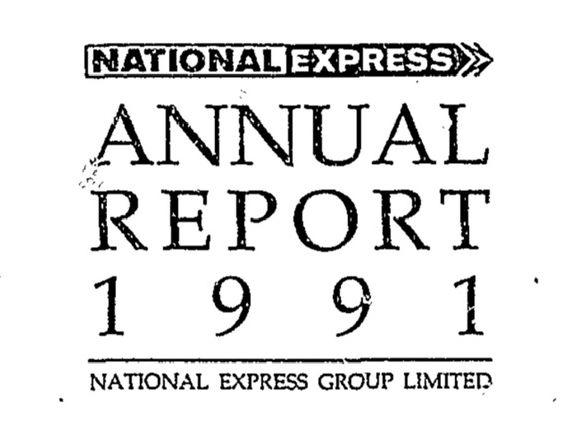
The National Express Annual Report, 1991 provided the company’s present position (at the time) and its intended future direction as noted in the report’s forward and the Chairman’s Review section by Mr P R McEnhill on the 28th April, 1992. The text of both sections of the report have been reproduced below. Other sections of the report including financials have not been included due to the size of the report.
Report Forward
National Express is the largest operator of long distance scheduled coach services throughout the United Kingdom. It is a unique business with an extremely well recognised brand name, and for many people it represents the only alternative to rail as a means of long distance travel.
National Express accounts for about 80% of all scheduled coach services in this country, serving 1,500 destinations, and as in the sole UK member of Eurolines which operates an expanding network of scheduled express coach services from London to over 270 destinations in 15 countries.
National Express also operates Speedlink, which provides high-quality interlinking coach services between London airports, together with other airport services, Jetlink and Flightline.
Express Travel comprises the group’s in-house coach operations. The majority of National Express services are contracted out to some 80 operators, mostly regional bus companies, but many are independent coach companies. National Express devise the network of services, markets them, contracts out their operation, and ensures the maintenance of quality standards.
Chairman’s Review
On the 23 July 1991 National Express Group Limited acquired National Express Holdings Limited and all its subsidiaries, other than a sub-group principally comprising Crosville Wales Limited, a regional bus company, and Amberline Limited, which operates local buses and certain contracts on behalf of National Express Limited.
The initial objective of the new owners and management if National Express Group has been to focus the group closely on three key businesses:
- the operation of a national network of long distance coach services - the National Express business
- participation in the operation of long distance coach services in continental Europe - the Eurolines (UK) business
- the operation of coaches on National Express contracts - the Express Travel business

Steps taken since July 1992 to achieve this logical grouping included the disposal of stakes of joint venture coach operating companies and the consolidation of all the retained coach operating subsidiaries under the Express Travel name and organisation.
National Express was floated on the London Stock Exchange on the 1st of December 1992 for a price of 165p per share.
 National Express Coach Guide - Summer 1992.
National Express Coach Guide - Summer 1992.The National Express Group was sold to the Drawlane Transport Group plc with it’s assets taken over by British Bus plc in early 1993 following the floatation of National Express in 1992. In August 1996 Cowie purchased British Bus.
Further expansion
In 1993 Scottish Citylink, East Midlands Airport and Eurolines were acquired with West Midlands Travel in 1995, rebranded Travel West Midlands in September 1996.
In March 1996 National Express acquired the Manchester-Birmingham-Heathrow-Gatwick express coach services of Birmingham based Flight’s Travel Group which included the ‘Flightlink’ brand name. The branding was expanded to cover a number of National Express services that linked different regions of Britain with key airports including the services from South Wales.

During 1996 National Express diversified into rail operations in the form of Gatwick Express and Midland Mainline. In 1997 Silverlink, Central Trains and ScotRail were won.
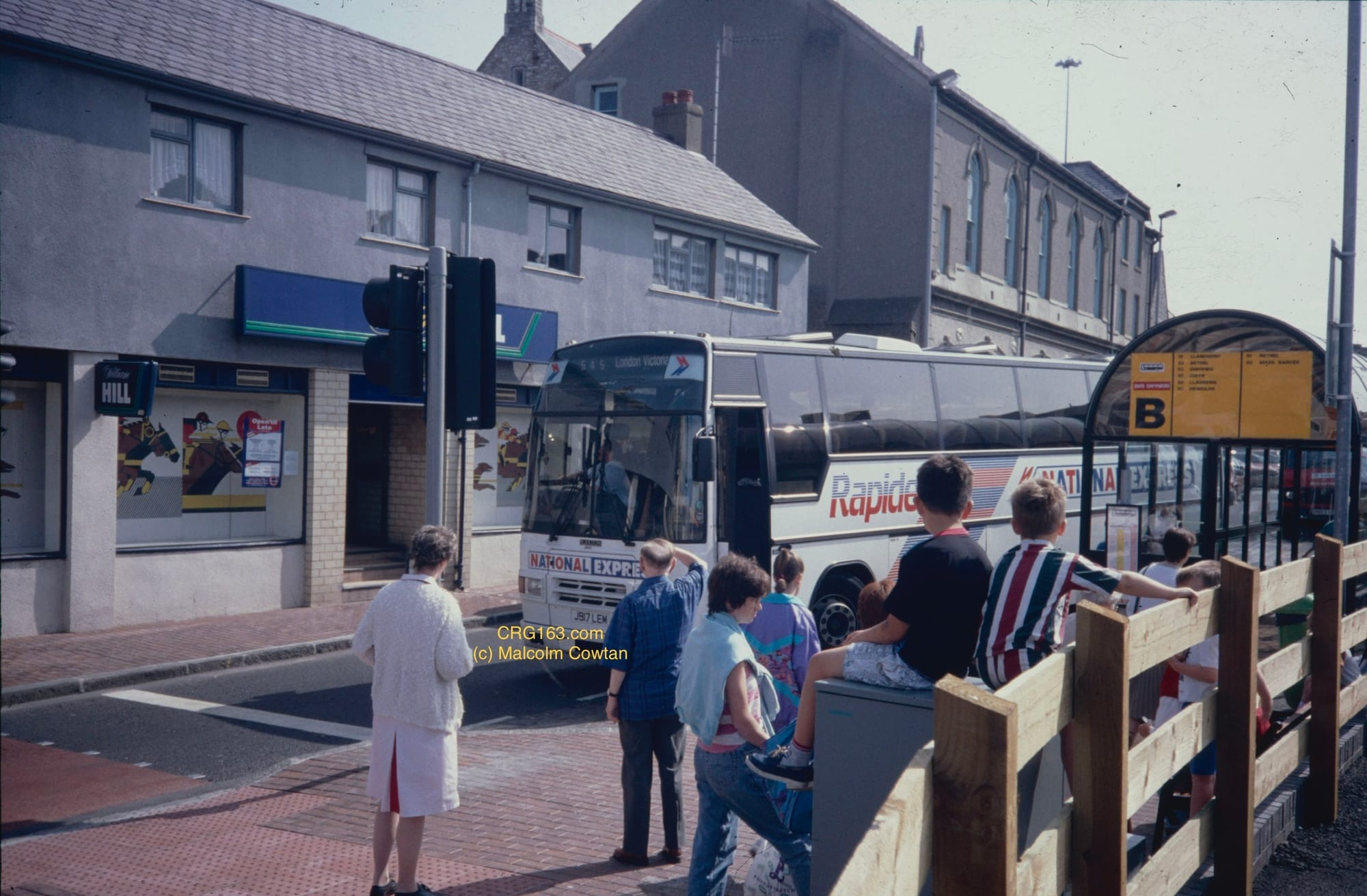 J917 LEM, a VOLVO B10M, Plaxton 3500 Expressliner coach departing Caernarfon bus station (Pool side) in the early 1990’s on National Express Rapide 545 service to London.
J917 LEM, a VOLVO B10M, Plaxton 3500 Expressliner coach departing Caernarfon bus station (Pool side) in the early 1990’s on National Express Rapide 545 service to London.In February 1997 Taybus Public Transport was acquired and rebranded Travel Dundee. Scottish Citylink was sold in 1998 to Metroline due to the Monopolies & Mergers Commission ruling on its winning of the Scottish Citylink around competition concerns. In September 1998 National Express ventured across the water to the United Sates by acquiring Crabtree-Harmon.
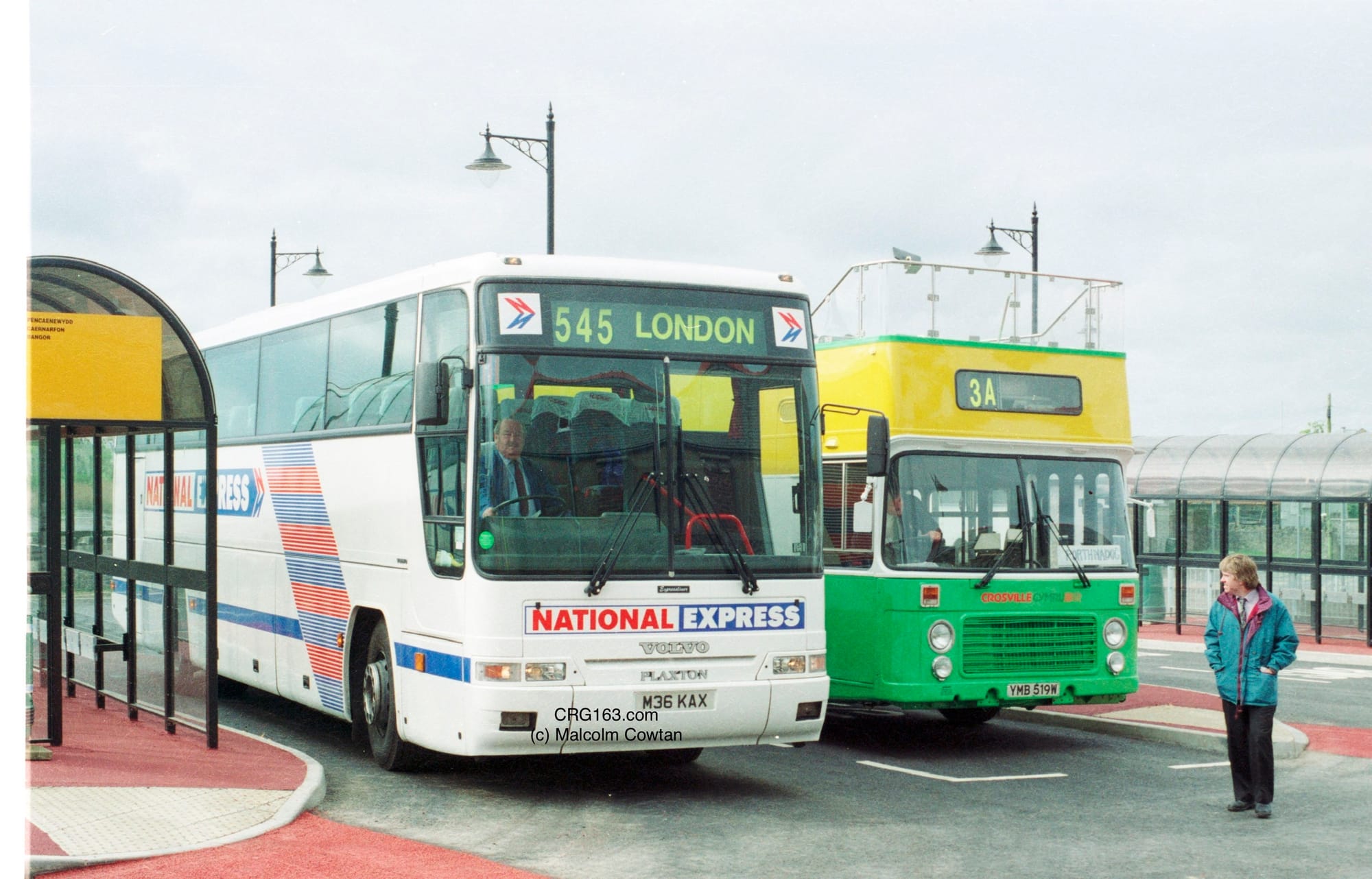 M36 KAX - BEBB’s of Llantwit Fadre VOLVO B10M, Plaxton Premiere 350 about to leave Pwllheli Bus station on the National Express 545 service to London with Gwilym ‘Berch’ Williams at the wheel. Also pictured right, Dewi Roberts (Gwynedd County Council), previous driver and manager at Crosville Motor Services having driven many miles himself on National Express services across the UK back in the day.
M36 KAX - BEBB’s of Llantwit Fadre VOLVO B10M, Plaxton Premiere 350 about to leave Pwllheli Bus station on the National Express 545 service to London with Gwilym ‘Berch’ Williams at the wheel. Also pictured right, Dewi Roberts (Gwynedd County Council), previous driver and manager at Crosville Motor Services having driven many miles himself on National Express services across the UK back in the day.During 1999 Robinson Bus Service was purchased in February; Australia’s largest private bus company - National Bus Company in May; and Durham Transportation in August 1999. Also in the same month National Express won the M>Tram and V/L Passenger rail franchise in the Australian state of Victoria.
In August 1999 the Eurolines services from London to Europe (Alicante, Barcelona and Paris) was purchased from Wallace Arnold.
Airlinks/Jetlink (owned by National Express) acquired the Cambridge Coach Services (CCS) business in October 1999 and subsequently introduced a turquoise based livery which replaced their green and yellow style. Jetlink and Speedlink were original brands of Airlinks (The Airport Coach Company).
January 2000 saw National Express expand again by acquiring ATC, an American public transport operator. In the same year Prism Rail was purchased in July adding the c2c, Wales &Borders, Wessex Trains and West Anglia Great Northern franchises to the company’s portfolio. However in December 2002 the company withdraws from the Victorian rail franchise having not being able to renegotiate financial terms with government.
During 2003 National Express adopted a new logo and type font that would replace the long established and famous double ‘N’ logo designed by Norman Wilson. This is represented further on this page. The new logo comprised of of a red and blue circle with a white arrow linking both, representing people moving from one place to another. The new logo only lasted four years, being dropped in 2007.

2004 saw further developments and withdrawals. In February Connex was acquired and rebranded Travel London. In April National Express Wast Anglia commenced operations on the Greater Anglia rail franchise. In September of the same year the company’s Brisbane, Melbourne and Perth bus operations in Australia were sold.
June 2005 saw the purchase of Telling-Golden Miller’s bus operations which was rebranded Travel London. The following month of July saw the company sell its American public transport operator ATC to Connex.
Further in the same year National Express took on the majority of ALSA’s bus and coach services in October 2005 in Spain, Portugal and Morocco and it’s long distance operations to other parts of Europe. South America and China services were retained by the previous owner post acquisition.
During 2006 National Express launches its first fully accessible coach on its network in the form of a Caetano Levante.
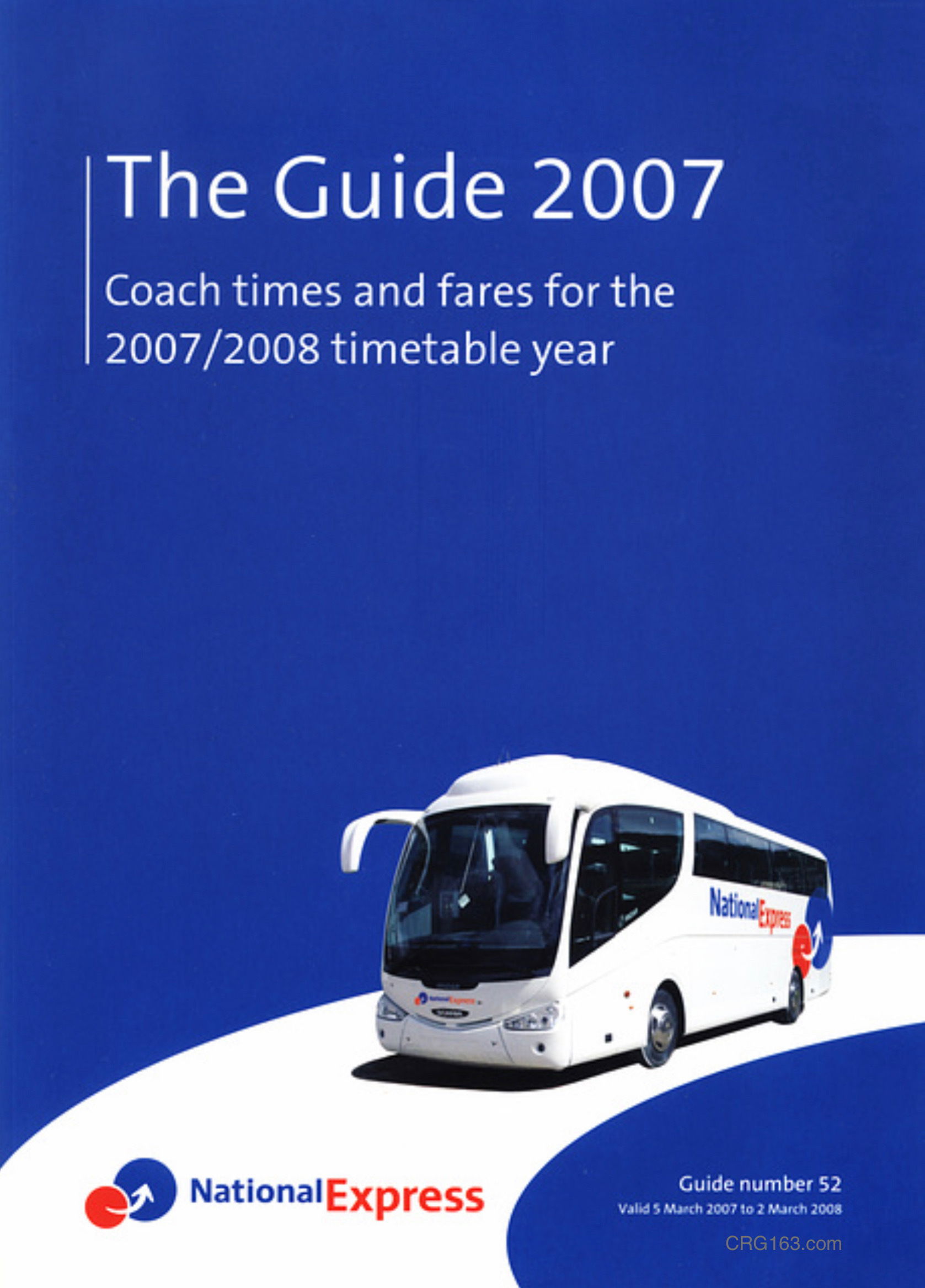 National Express Coach Guide - 2007/2008.
National Express Coach Guide - 2007/2008.In aligning its presence and operations in Spain the company acquired Continental Auto in April 2007, being the second largest bus and coach operator in Spain at the time with The Kings Ferry purchased in November of the same year. The company also launched an airport to hotel mini bus shuttle service but this ceased operations the following year in November 2008 as it did not reach the anticipated success required to be sustainable.
November 2007 saw National Express announce plans to introduce uniformed company branding across all of its operations. This involved dropping the circle to circle logo in 2003 with dot to dot grey stripes and a new lower case type font that consisted of curvier lettering, a mire rounded typeface.

The new branding was launched on the 9th of December 2007 on the new railway franchise now called National Express East Coast, formerly GNER operating rhe InterCity East Coast franchise. During the following month the new branding began to be rolled out across the coach fleet; on National Express West Midlands (formerly Travel West Midlands) on the 4th of February 2007 and then on National Express East Anglia (formerly One Railway) on the 26th of the the same month.
In May 2008 National Express sells Travel London and Travel Surrey to Abellio.
On the 18th of December 2009 the new Birmingham Coach Station is officially opened by Fabio Capello, replacing the previous Digberth coach station. The original interchange was built in 1929 as a bus depot by Midland Red, which was later converted into Digbeth Coach Station. The old coach station closed in November 2007 for redevelopment. The new interchange would be called Birmingham Central Coach Station. The refurbishment was estimated to have cost £15 million. It also received a BREEM ‘excellent’ rating. BREEAM is an assessment undertaken by independent licensed assessors using scientifically-based sustainability metrics and indices which cover a range of environmental issues. More details about BREEAM can be found by clicking HERE.
February 2013 sees National Express Germany awarded with two regional rail contracts by the Verkehrsverbund Rhein-Ruhr, Zweckverband Nahverkehr Rheinland and Zweckverband Nahverkehr Westfalen-Lippe authorities. These contracts commenced operations in December 2015.
Also during 2015 the Bayerische Eisenbahngesellschaft announced that National Express had been selected to operate the Nuremberg S-Bahn system, to commence operations from December 2018. This would be the first Deutsche Bahn S-Bahn network to be operated by a private operator. However during 2016 National Express withdraws sighting a delay in the ability to order new rolling stock.
June 2015 brought an announcement that parts 2 and 3 of the Rhein-Ruhr-Express would be operated by National Express to be introduced in 2018.
On the 8th of September, 2016 Plymouth Coach Station opens. Construction on the coach station began in January 2016. It replaced Bretonside bus station. In the same year National Express becoming an accredited Living Wage Foundation employer.
On the 16th of December 2016, respected family owned independent Clarkes of London was purchased, a coach operator comprising of 56 vehicles.
March 2020 sees Lucketts Group being purchased by National Express. The group at the time of purchase included Lucketts Travel, Coliseum Coaches, Mortons Travel, Solent Coaches and Worthing Coaches and was the largest coach operator on the South Coast employing 350 people and operating a fleet of 160 coaches and buses.
On the 3rd of February 2020 it was announced that Dublin Express would launch in March of the same year connecting Dublin Airport and the city centre, running on a 24hour basis. Three routes would be introduced with a phased expansion of the network.
By this point National Express was already operating 1,100 airport services every day on a 24 hour basis direct to the terminals of all UK airports including Gatwick, Luton, Stansted, Heathrow and Manchester. Further details are available HERE if the services presently being provided.
Rapide Services
National Express introduced the Rapide services in 1981 which would provide passengers with on-board tea/coffee services and sandwiches served by on-board hostesses. On-board television and toilet was also provided on vehicles operating under the brand. Rapide services were heavily marketed through its branding and extensive advertisement campaigns. Such branding would be displayed on the side of coaches, leaflets, posters etc.

 Crosville Cymru/Wales Leyland Tiger CTL65 (C65 JTU) parked outside the company‘s Llandudno Junction depot (which was also its headquarters) in National Express Rapide branding.
Crosville Cymru/Wales Leyland Tiger CTL65 (C65 JTU) parked outside the company‘s Llandudno Junction depot (which was also its headquarters) in National Express Rapide branding.

National Express phased out the Rapide offering and branding in April 2001. It’s on board television service had already been withdrawn in the 1990’s.
However in late 2004, National Express introducing NXTV/National Xpress Television showing various episodes of British Television series. This was short lived as it was phased out in the summer of 2006. However in more modern times National Express now offers free WiFi on most of its coach services.
Branding changes over the years
Since 1972 National Express’s branding has changed significantly over the years, from it’s early days as depicted on CRG163 to present times. The different core branding adopted by the company over the years is represented below including the periods of operation.
1972 - 1982

1974 - 1982

1982 - 1991

1991 - 2003

2003 - 2007


2007 - present


Vehicle liveries
Predominantly coaches operating on National Express carry an all over white livery.
In the 1980’s coaches operating on National Express services developed an attractive ‘venetian blind’ (as its referenced) branding of blue and red, together with the white coach and National Express name as reproduced below. Some companies such as Crosville also applied black paint around the vehicle’s front windscreen. Some companies also applied black paint to the lower skirt of the vehicle.

In the 1990’s the ’venetian blind’ livery gave way to a much crisper and cleaner version as reproduced below. Vehicles remained white and still carried the National Express name. The application of black paint around vehicle windscreens and lower skirts was also replaced by white only.

Additional branding used
Over the years other liveries have also been carried on National Express services depicting specific branding on services that operated to Ireland, airports and Europe. Some of these are depicted below.
Supabus
The 'Supabus' name was once used in the 1980’s to promote services between London and other UK destinations to destinations in Ireland such as Belfast, Cork, and Galway also. Such services operated under the Supabus brand was jointly operated by Bus Éireann and National Express.
In one marketing poster dating from 16 April 1988, the Supabus service was marketed as “Travelling to Ireland by Supabus isn’t only comfortable and cheap - it’s trouble free too. For many destinations the same luxurious seat carries you all the way. Reclining seats and toilets.”

Other branding has also been used by National Express over the years to promote specific services such as Rapide. This has included services across to Ireland under the Supabus branding in the 1980’s to FlightLink promoting airport services.
Caledonian Express?
In October 1989 National Express acquired the Scotland-England coach services of Stagecoach when its agreement with Scottish CityLink came to an end and created a Scottish subsidiary with the brand of Caledonian Express operating from Stagecoach’s old depot at Perth. The branding for Caledonian Express below. The branding ceased in 1993.

Eurolines
Acquired by National Express in 1993.
 Flightlink
FlightlinkFlightLink was a brand initially operated by Flights Coaches of Birmingham, taken over by National Express in 1996. For a period such services would continue to operate under the Flights Coaches cream and black livery but with the famous “double-N” logo applied.

Express Shuttle
National Express also operated a variant of their own branding on airport services titled ‘Express Shuttle” which would comprise of a dark grey skirting applied to vehicles used. However in 2007 all branding was simplified as shown above.
‘Express Shuttle’ livery was used on the Cambridge to London service as well as on the Poole-Bournemouth-London service 032.

GobyCoach
Early to mid 2000’s the GoByCoach.com website was created by National Express and this graphic design was carried by the coaches operated on the network. A large variant of the logo would also appear on the side of coaches in green.

Jetlink


National Express Airport
The Airport brand was created in 2003 when the National Express image brand was updated, merging the former Airlink, Flightlink, Jetlink and Speedlink brands. This was however dropped in 2007 when the company introduced a uniform brand and image across all operations.
Other livery variants
National Express have also used a number of other liveries over the years through various acquisitions and marketing opportunities.
Airports
In the 1990s National Express Group moved into the privatisation of airports, eventually purchasing East Midlands Airport, Bournemouth Airport and Humberside Airport. In a move to concentrate on bus and rail provision, the airports were sold to Manchester Airports Group for £241m in March 2001.
Until November 2007, the group also operated Stewart International Airport in New Windsor, New York. However, the lease was sold to the public Port Authority of New York and New Jersey.
Vehicles
Over the past 50 years of operation many vehicle types have been employed on National and then National Express services. This has ranged from the majestic ECW coach on a Bristol RELH chassis powered by a Gardner engine like CRG163 to the Caetano Levante III (introduced July 2018) which seems to be the favoured vehicle at the moment. Other such vehicles have included the dual purpose ECW bodied RE; Leyland Leopards (on Plaxton Elite/Dominant Duple body variants); Leyland Tigers (on various body variants from Duple Caribbean to Duple Laser); Bovas; MCW; the first Expressliner in the form of the Plaxton 3500 powered by Volvo; Van Hool Alizeé bodied Volvo B10M; Jonckheere Mistral bodied Volvo B10M; Plaxton Premiere; Plaxton Paragon and now the Caetano Levante.
Publicity
Over the years NATIONAL and then National Express have embarked on many publicity opportunities to promote it’s network and services which has ranged from general promotional leaflets and timetables, Beeper the frog to promotional advertisement which has included David Soul, better known as Hutch from the 1970’s American Cop show Starsky & Hutch.
National Bus Company
One of the strap lines used by the National Bus Company back in the day.

Beeper the Frog
Beeper the Frog makes an appearance in promoting cheaper fares on National Express services in the 1980’s.
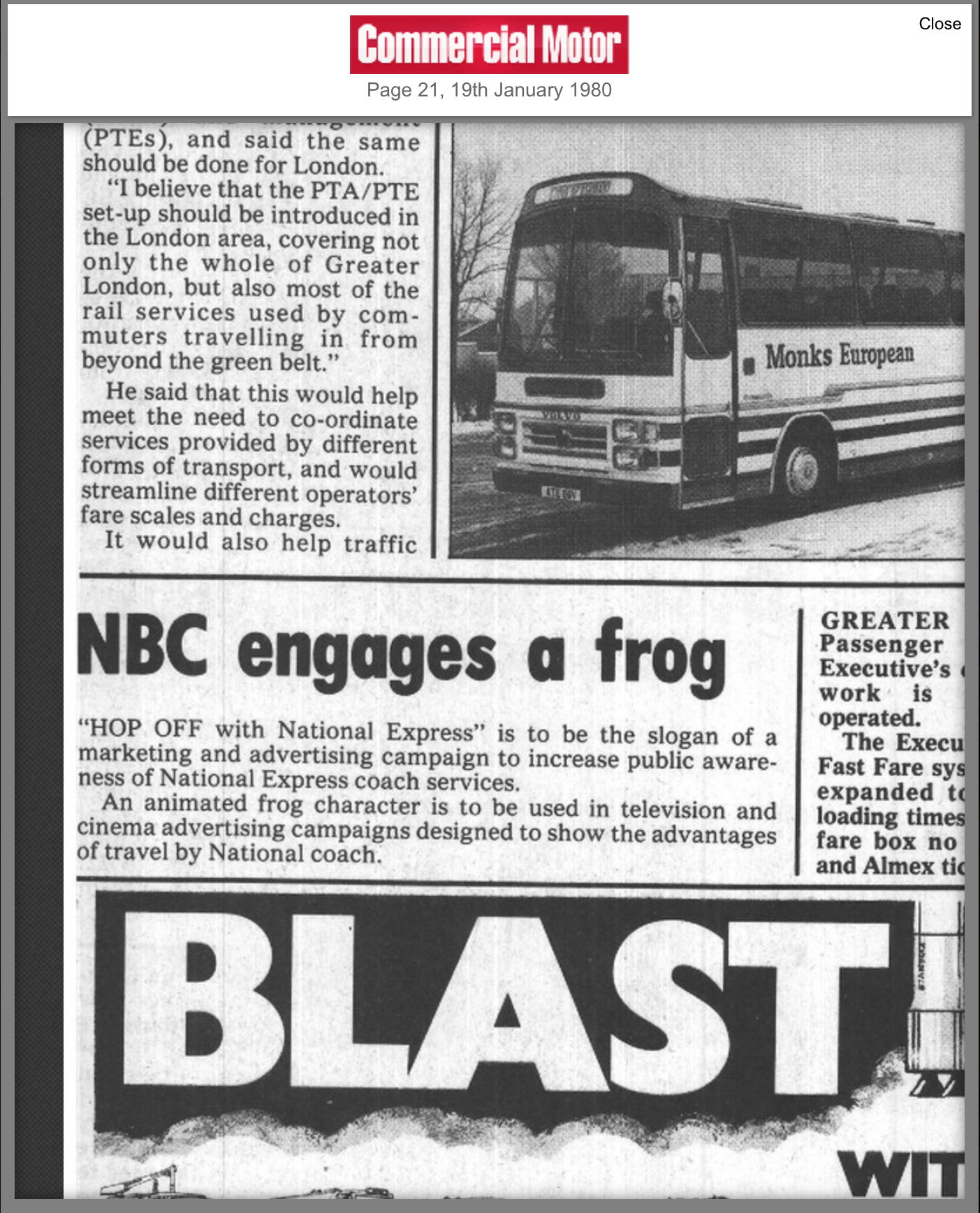



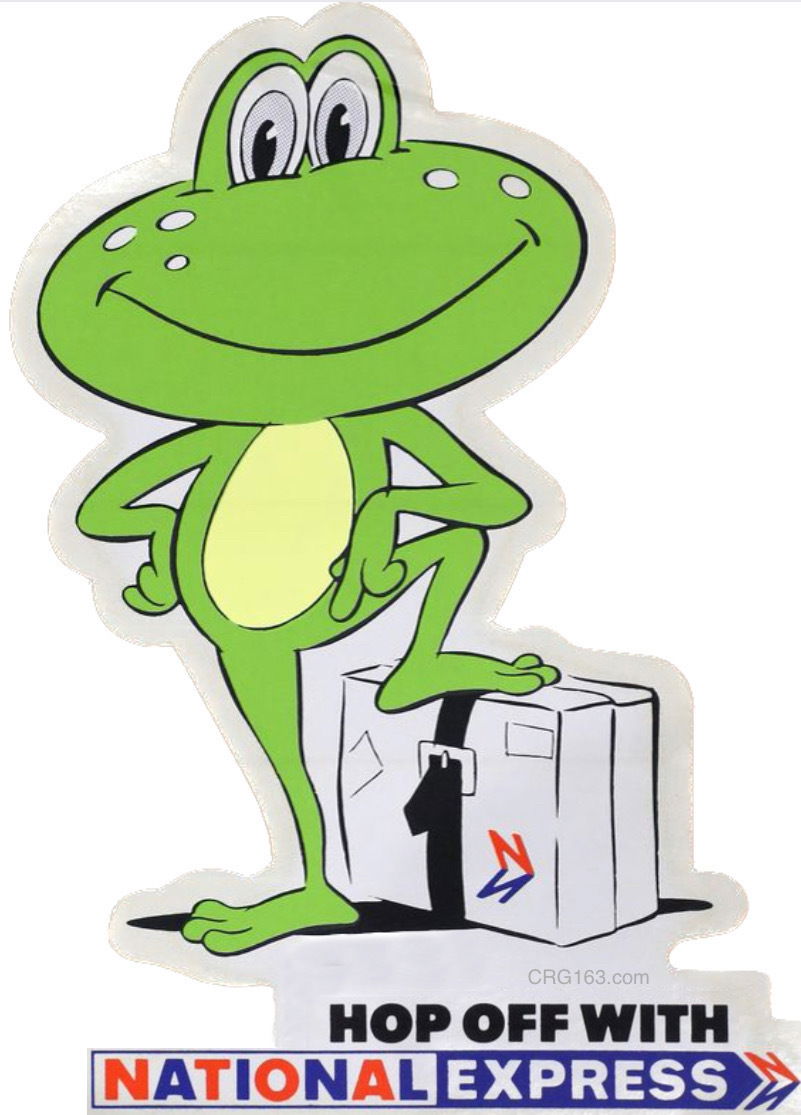
Leaflets, posters and timetables over the years
National Express have produced a plethora of promotional material over 50 years ranging from leaflets advertising service timetables, products available, ticketing and branding. Below is a collage of many leaflets produced over many years.
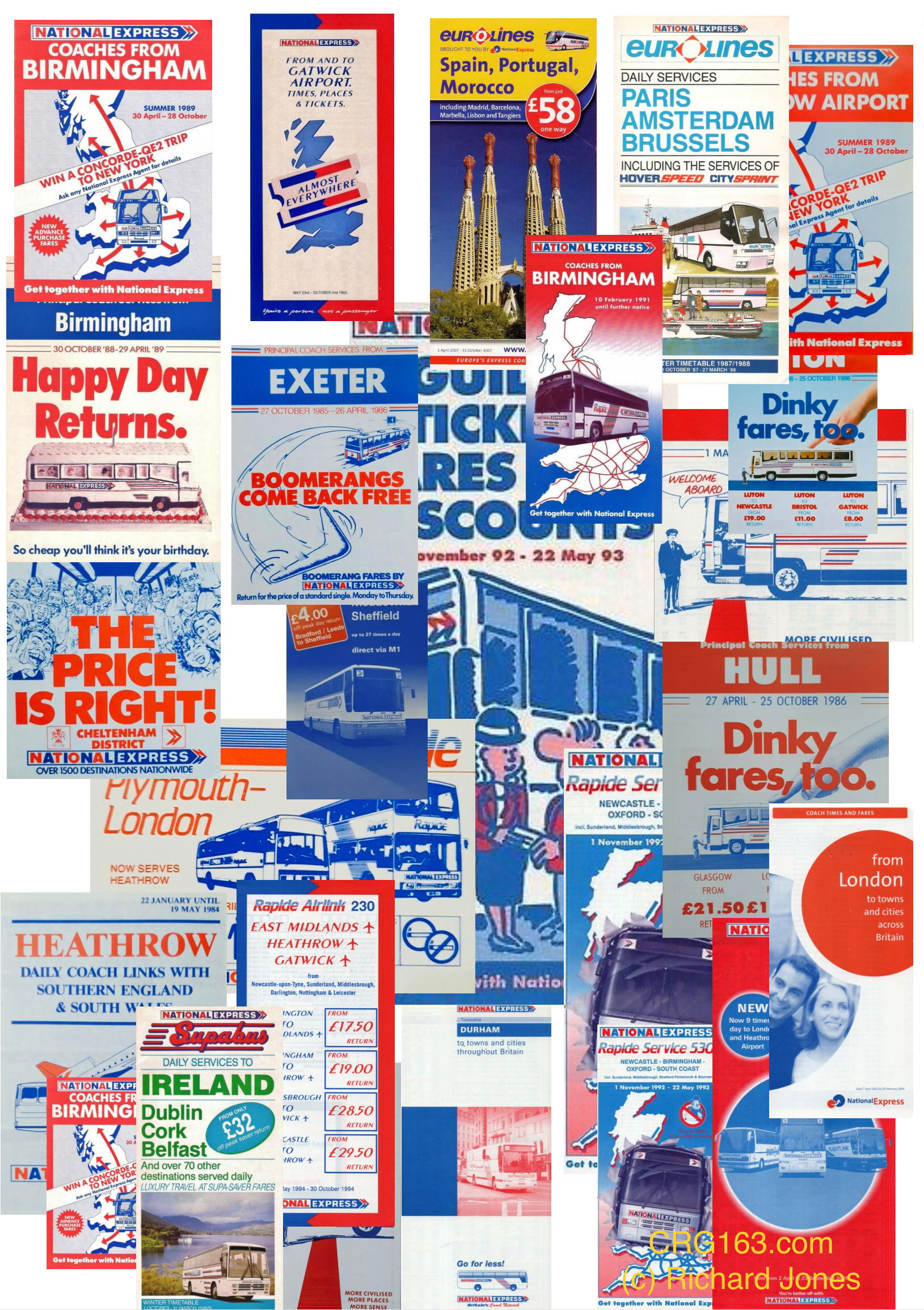
National Express Rapide cardboard coasters
During the Rapide era many publicity leaflets and posters were produced to advertise the brand. Cardboard coasters displaying an MCW coach in the National Express Rapide livery and branding were also produced including biros.

Divine Comedy - ‘National Express’
In 1999 further publicity came to National Express in the shape of Devine Comedy which provided a feel good song about National Express.
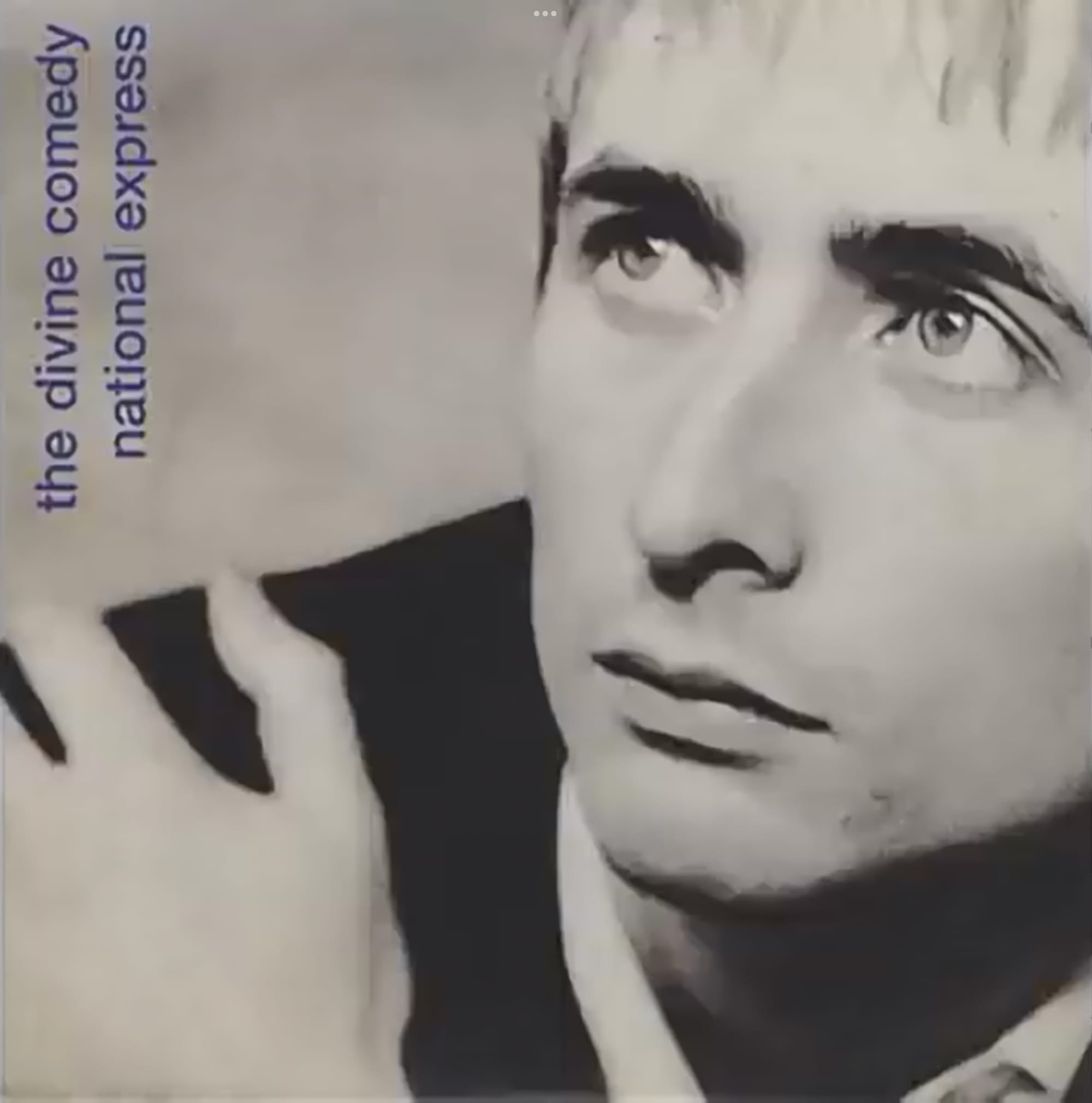
History of coach travel in the UK
National Express celebrates 40 years by sharing the video below on line.

To see the short film via You Tube click on the above image or click HERE.
National Express celebrates 40 years of coach travel
During 2012 National Express celebrated 40 years of coach travel and as a part of this released the following on-line video - 20.09.12.

To see the short film via You Tube click on the image above or click HERE.
National Express presence via on-line platforms
Below are only a few examples of many on line videos produced by National Express in recent years in promoting the brand and product offered. National Express have come a long way since its early days.
David Soul - Silver Lady
The late David Soul from Starsky & Hutch fame behind the wheel of a National Express Caetano Levante coach - 14 June 2014.
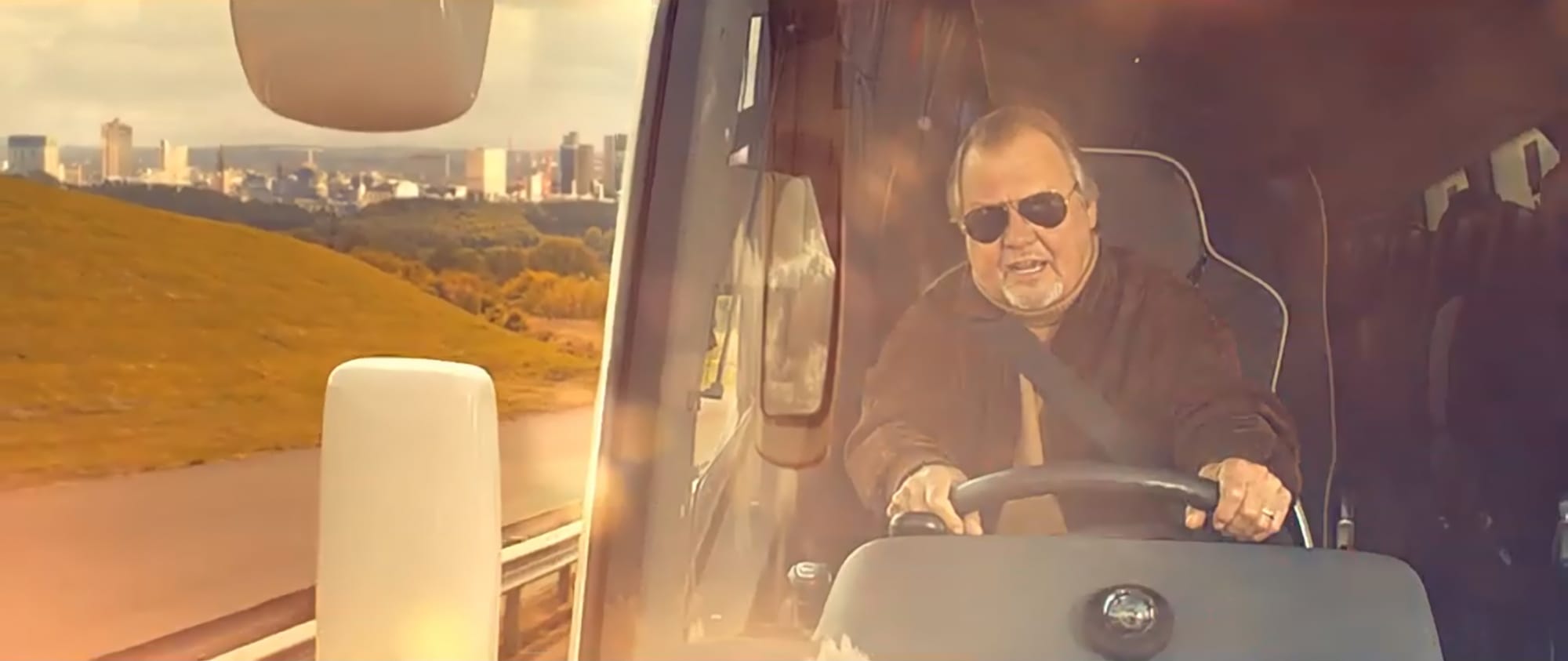
National Express - Go Get It
National Express launched a 20 second video in 2025 titled Go Get It.

To see the advert via You Tube click on the image above or click HERE.
National Express - Take a Different View TV ad
National Express launched a 43 second TV ad in February of 2016 featuring the Levante coach.

To see the advert in full via You Tube click on the image above or click HERE.
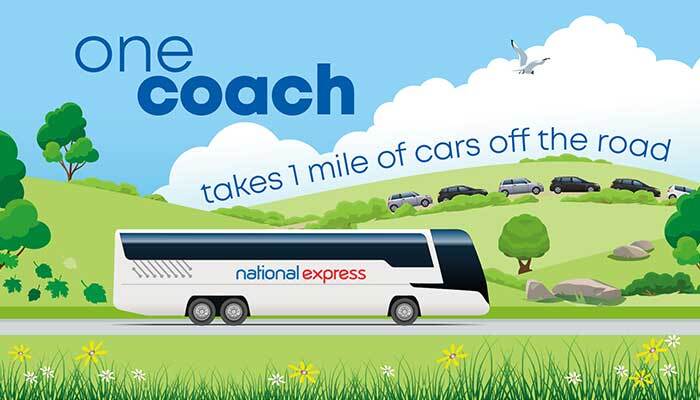
National Express statistics
At the time of writing (05.01.23) the following statistics are current:
National Express coaches have journeyed 3.8 billion miles across the length and breadth of the UK since 1972 to 2022 (50 years of operation)
A national network links more than 540 locations, including 59 of the UK mainland's 76 cities
1,800 plus services operate every day, increasing to over 1,900 on Fridays
Over 1,000 airport services a day run direct to the terminal for all major UK airports
The Fleet
National Express and its franchisees operate a limited number of coach types. Primarily standardising its main coach operation on the Caetano Levante body on Mercedes-Benz, Scania and Volvo chassis. The Levante was designed between 2003 and 2005 by Portuguese coach builder Salvador Caetano and National Express exclusively for use on their network, equipped with a wheelchair lift at the front entrance door, and could be built on either two or three axels depending on chassis configuration. The most recent tri-axle Levante III was introduced onto the network in July 2018, with an updated version named the Levante IIIA introduced from late 2022.

The future
The future for National Express is bright, although competition continues from various sources including Stageocach MegaBus and FlixBus. The National Express Group is now the Mobico Group, a multinational public transport company.
The company operates bus and coach services through the National Express brand as well as train services in the Republic of Ireland, Eurolines in connection with Bus Éireann, USA, Canada, Spain, Germany and other countries involving long distance coach services across Europe.
National Express Transport Solutions

National Express Transport Solutions provides transport for businesses. Whether it relates to staff transport, one-off event shuttles or a long term bespoke network.
it works with clients such as See Tickets, Metropolitan Police and the BBC, and provided services for a multitude of industries. From transporting employees to their place of work on a daily basis to providing hundreds of coaches for events like Glastonbury, a huge range of services are offered, all tailored to the needs of businesses.
Travel had also been provided travel for a number of UEFA Champions League Finals, as well as having transported David Cameron around on a custom wrapped ‘Conservative Battle Coach’.
My own connection with National Express
You may be wondering what is my own connection with National Express? Over the past 32 odd years (2022) of working in the bus industry I‘ve had a few connections as I remember below.
Early influence
Even before any direct career connection with the bus industry I had always been interested in working for the industry one day from school. Below is a painting I made in school when I was about 14/15 years old. It is of Crosville Wales Leyland Tiger Laser 2 B151ALG (fleet number CTL51). The vehicle depicts National Express’ venetian blind livery, operating the 709 service from Pwllheli to Liverpool, departing Blaenau Ffestiniog.

Bangor Clock Travel Office
My first paid job and that in the bus industry started with Crosville Wales at it’s travel office at the Bangor Clock bus station on school holidays. I would catch the first bus out of Blaenau Ffestiniog at 0715 having travelled by bike initially from Tanygrisiau, keepin my bike at the depot. I would then change buses in Caernarfon to get to Bangor before doings the journey in reverse in the evening, eventually getting back home for around 1930hrs (07.30pm).
At the Bangor Town Clock office not only would we provide general bus travel information and the selling of weekly and monthly travel cards but the little office was also a National Express agent. As an agent we would provide travel information on all National Express services including cost and would also sell travel tickets to passengers via the paper tickets including booking subsequent journeys on the little computer system linked to the wider network. This would book a seat for passengers on the services they were about to travel on in the coming days. The computer screen looked very similar in appearance of graphis to the ild Ceefax system to give you an idea but simply dealt with National Express coach bookings. This was in the late 1980’s.
When I was old enough to drive a car I’d also cover at the company’s similar travel office at Rhyl bus station. Living in Tanygrisiau, Blaenau Ffestiniog it would have been logistically impossible to get to Rhyl by public transport for a day’s work.
Crosville Wales shunt driver
When I was a bus driver with Crosville Wales in the early 1990’s as I was under 21 years old I could only drive up to 50KM’s from the depot I was based in accordance with the regulations. Once becoming 21 years old it was a different story and mileage was no longer an issue. once I reached 21 years old I would drive on Crosville’s Cymru Coastliner service which used double deckers with dual purpose coach seats between Caernarfon and Chester. That is another story covered elsewhere on this website.
When I drove buses from Crosville Wales’ Pwllheli depot there would be local service bus duties that would involve driving the National Express 580 service (Pwllheli - Newcastle) either from Pwllheli to Caernarfon or vice versa In it‘s return in the evening. The vehicle used to operate the service was based at Pwllheli depot. This was simply a shunt as we would call it in supporting the main drivers and their drivers hours. On one occasion I got the opportunity to drive the 580 service back from Caernarfon one summer's evening to Pwllheli via Porthmadog.
The vehicle in question was one of the three Duple 425's - E611AEY to E613AEY.
National Express driver 2002 - 2005
In 2002 I was asked if I could cover the North West end of the 545 service (Pwllheli - London) as a driver on Saturday over a few weeks. Providing driver cover for only a few weeks ended up driving the Pwllheli end of the service every Saturday for two years including here and there during holiday periods. The 545 service at this time was provided on behalf of National Express by First Wessex / First Southern National, managed from its operational base at Birmingham by the capable Clive Lee. Clive had been a driver at one point but was now heading up the operation for First at Birmingham and Bristol. Other services included those to Manchester and other destinations. Clive was highly respected by all who worked for him.
The Pwllheli based driver would start off the London bound service at Pwllheli, departing at 0800am and drive to Llandudno in service. At Llandudno the service would be become double crewed by two drivers, i.e. the driver from Pwllheli and a driver from the Birmingham depot who had stayed in Llandudno the night before (having operated the north bound service the previous day with one of the other members of the Pwllheli based team) drove the service onwards to Chester. The Pwllheli driver would drive again from Chester to Stoke on Trent (Hanley bus/coach station). On arrival at Stoke on Trent at approximately 1330hrs (01.30pm) the Pwllheli driver would alight from the vehicle before picking up the northbound 545 service from Hanley at approximately 1500hrs (3pm) that had departed London at 1030 the same day. The same pattern of shared driving as the morning would be repeated but in the opposite direction arriving back in Pwllheli at around 2030hrs (if on time). The southbound service (that had started from Pwllheli at 0800am) would depart from Hanley and continue with a shunt driver to Birmingham with another driver from Birmingham taking the service onwards to London, arriving London Victoria Coach Station at approximately 1800hrs. Service timings would suffer considerably over the summer holiday months due to congestion across the North Wales coast and motorways between London. Due to the high demand for the service back then many duplicate vehicles would be employed from operators near and far.
The Pwllheli end team of the operation consisted of Evan Herbert (ex Crosville Pwllheli depot); Derek Roberts, Gwilym ‘Berch’ Williams; Wyn Pete and myself, Richard Jones,
Drivers from the Birmingham team included Rob Hatton; Johnny Green (now sadly passed away); Mickey Perks; Leon Walker; Linzel; Phil; all professional people and true ambassadors for National Express and First Bus (the operating company on behalf of National Express) and also truly brilliant people to work with.
Below I include a few photos from my time as a driver on National Express.




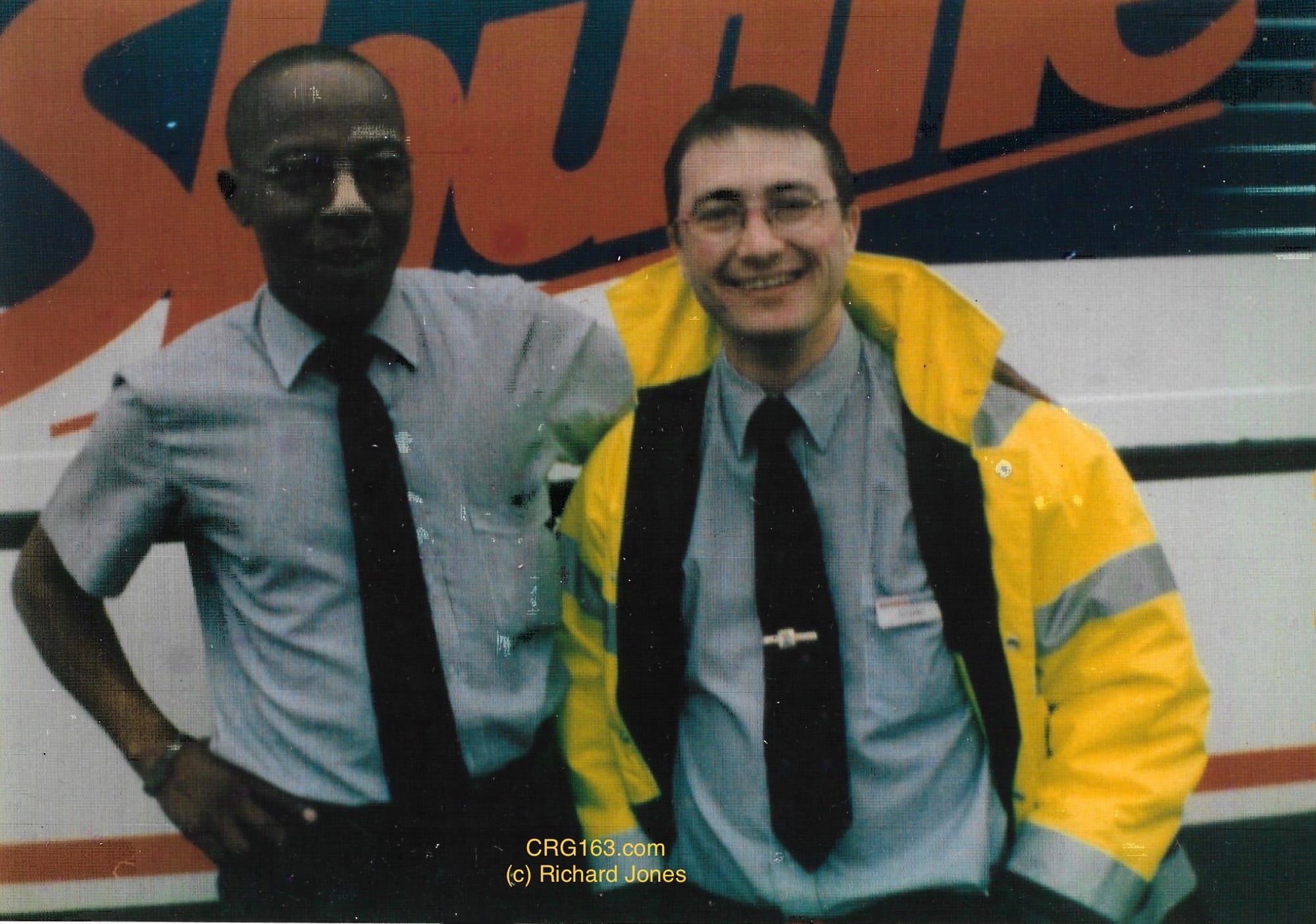

CRG163 - preserved Crosville coach in NATIONAL livery
My third connection with National Express is of course my very own preserved Crosville coach which has been painted in the first NATIONAL livery that was introduced in 1972 under Sir Frederick Wood’s leadership. My ownership of CRG163 began on the 9th of June 2002. Whilst there are several fantastic examples of other similar Crosville coaches in the wonderful cream and black coaching livery my decision to restore CRG163 to the NATIONAL livery of the day was to depict another important era of coach travel across the UK.
I was brought up during the National Bus Company era of bus and coach operation and I have fond and happy memories of travelling on Crosville buses and coaches during my childhood which have been captured elsewhere on this website. The ’double N’ logo is therefore an important personal reminder to me of this period as well as my various connections with National Express as detailed above. Before CRG163 was painted in this livery with the double ‘N’ logo applied special care was taken to seek and receive permission from National Express to be allowed to use the branding ‘NATIONAL’ and double ‘N’ logo in 2003. My thanks to National Express for this.

The famous double ’N’ logo reproduced in 3D
Christmas 2023 saw my youngest son (11 years old) receive a 3D printer as his main Christmas present. Subsequently my eldest son (14 years old at the time) created a digital 3D model through specific computer software of Norman Wilson’s famous logo taken from a 2D digital image and together produced a one off gift for me, for their Dad.
How times have changed over the years as I remember reproducing the same logo when I was their age, but then it involved a pencil a ruler and a piece of paper! Thank you boys for such a wonderful present. Still trying to remember that you are only 11 and 14 years old at the time of writing this entry on our website!
Hard to believe that this logo was created 50 years ago at the time of writing. What would Norman Wilson have to say I wonder?


Happy 50th National Express
This page is not a promotional platform for National Express, but a mere page summarising the history of National Express and a name that has been synonymous with coach travel in the UK since 1972 and it’s link to CRG163, Crosville, Crosville Wales and myself.
Happy 50 years National Express with very best wishes!
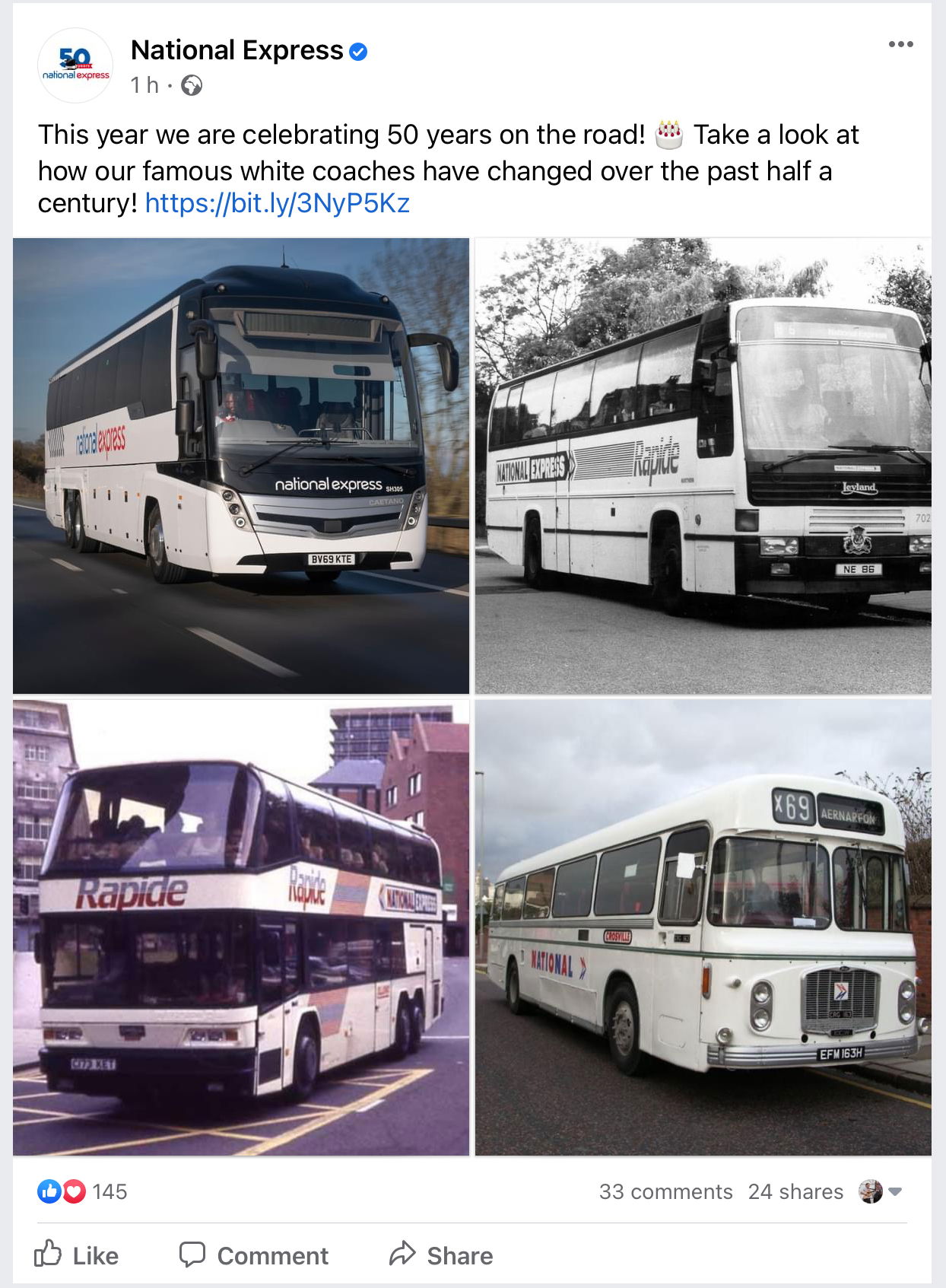

Contact details
If you have any photos or related information about CRG163 or any information on the parts presently required then please e-mail me, Richard Jones at post@crg163.com . Many thanks in advance.

Bristol RE
CRG163 is a Bristol RELH6G. What does this mean?
CRG163 is a rear engined vehicle with a Bristol Commercial Vehicle chassis to the long, coach high configuration.
Simply RELH6G means a Bristol RE to the Long, High chassis configuration with a 6 cylinder Gardner engine - Bristol RELH6G.

Bristol Commercial Vehicles
The Bristol RE was a rear engined single deck bus or coach built by Bristol Commercial Vehicle between 1962 and 1982.
The Bristol RE is considered to be one of the most successful rear engined vehicles and has a huge following to today, and includes many examples preserved such as CRG163.
Bristol was wholly owned by the nationalised Transport Holding Company (THC) with the Bristol RE only supplied initially to subsidiaries of the the THC. Leyland purchased 25% of Bristol in 1965 which led to the Bristol product being made available to non state owned bus and coach operators. Municipal bus operators including the British Electric Traction Group (BET) were also customers.

Sales to the National Bus Company (NBC) however began to dry up from 1972 as the Leyland National product was also available. The NBC had taken over the operations of the THC and BET.
Unfortunately the Bristol RE was only available for export to Christchurch, New Zeland as well as Ulsterbus and Citybus in Ireland from 1976.

Sale statistics
The sale statistics for the Bristol RE was as follows:
- 4,629 Bristol RE’s were built
- 3,242 of which were sold to NBC Subsidiaries
- Bristol Omnibus Company was the biggest single customer at 439 orders
- Crosville Motor Services at 288
- Ulsterbus & Citybus in Ireland combined at 620
- United Automobile Services at 470
- West Yorkeshire Road Car Company at 259
- 148 were sold to members of the Scottish Bus Group
- 405 to British municipalities and PTE’s
- 834 to other operators
Vehicle Body - Eastern Coach Works
The most common fitted body to any Bristol RE was Eastern Coach Works (ECW) of Lowestoft. Other manufacturers also built on the chassis such as Alexander; Duple; Plaxton.
Interestingly the Bristol RE was available in five variants from vehicle length to height (bus/coach).

Chassis variants
The variants available were as follows:
- RELL - long vehicle length at 36 foot, low frame bus body fitted
- RESL - short vehicle length, low frame bus body fitted
- RELH - long vehicle length at 36 foot, high frame (coach or dual purpose body normally fitted). CRG163 would be the coach variant.
- RESH - short vehicle length, high frame (coach or dual purpose body normally fitted)
- REMH - long vehicle length at 12m, high frame coach body fitted

Engines
The Bristol RE would normally be fitted with a Gardner 6 cylinder engine or a six cylinder Leyland diesel engine, either a 0.600 or 0.680. As such the variant codes above would be suffixed by a code indicating the engine fitted such as RELH6G in the case of CRG163. The codes would be:
6G would refer to the Gardner 6 cylinder engine, for example the 6HLX in the case of CRG163. The engine would be a Gardner 6LX vertical engine, however in the Bristol RE the engine would be fitted horizontally denoted with a ‘H’ in 6HLX.
The Gardner 6HLX engine in CRG163 is 150 hp @ 1700 RPM and a Natural 6-cylinder diesel. It’s cylinder capacity is 10,450 cc
6L would refer to the Leyland 6 cylinder engine, normally the 0.600 or 0.680.

L. Gardner and Sons Ltd was a British company specialising in the building of diesel engines. founded in Manchester in 1868. It started building engines around 1895 and used in many forms from stationary, marine, road in lorries and buses and rail. The firm ceased engine production in the mid 1990’s.

The following images are from the Gardner service manual and provides images of the 6LX as it would appear in its horizontal (HLX) form in CRG163.


Bristol RE - Pre production models
Bristol Commercial Vehicles produced three prototype RE chassis in late 1962 and early 1963.
The three prototypes were based upon an RELL bus chassis; and two based upon the RELH chassis.
The RELL prototype was a 54 seater bus delivered to United in December 1962 in its Tilling red and cream livery. The chassis reference for this vehicle would be REX.001, vehicle registration 7431 HN.
REX.002 followed in April 1963 and would be the RELH, C47F seat high floor coach chassis. This vehicle would be registered 521 ABL, delivered to Thames Valley Traction’s South Midland in the maroon and cream livery between Oxford and London. It would have the stepped wait rail (bright work) a feature carried from the Bristol MW.
A second pre production model/prototype of the Bristol RE RELH was given the number REX.003 built in July 1963. This would be a coach body built by ECW and used as a test bed by Bristol Commercial Vehicle (BCV) until February 1967 when brought up to service standard, fitted with a Gardner engine.
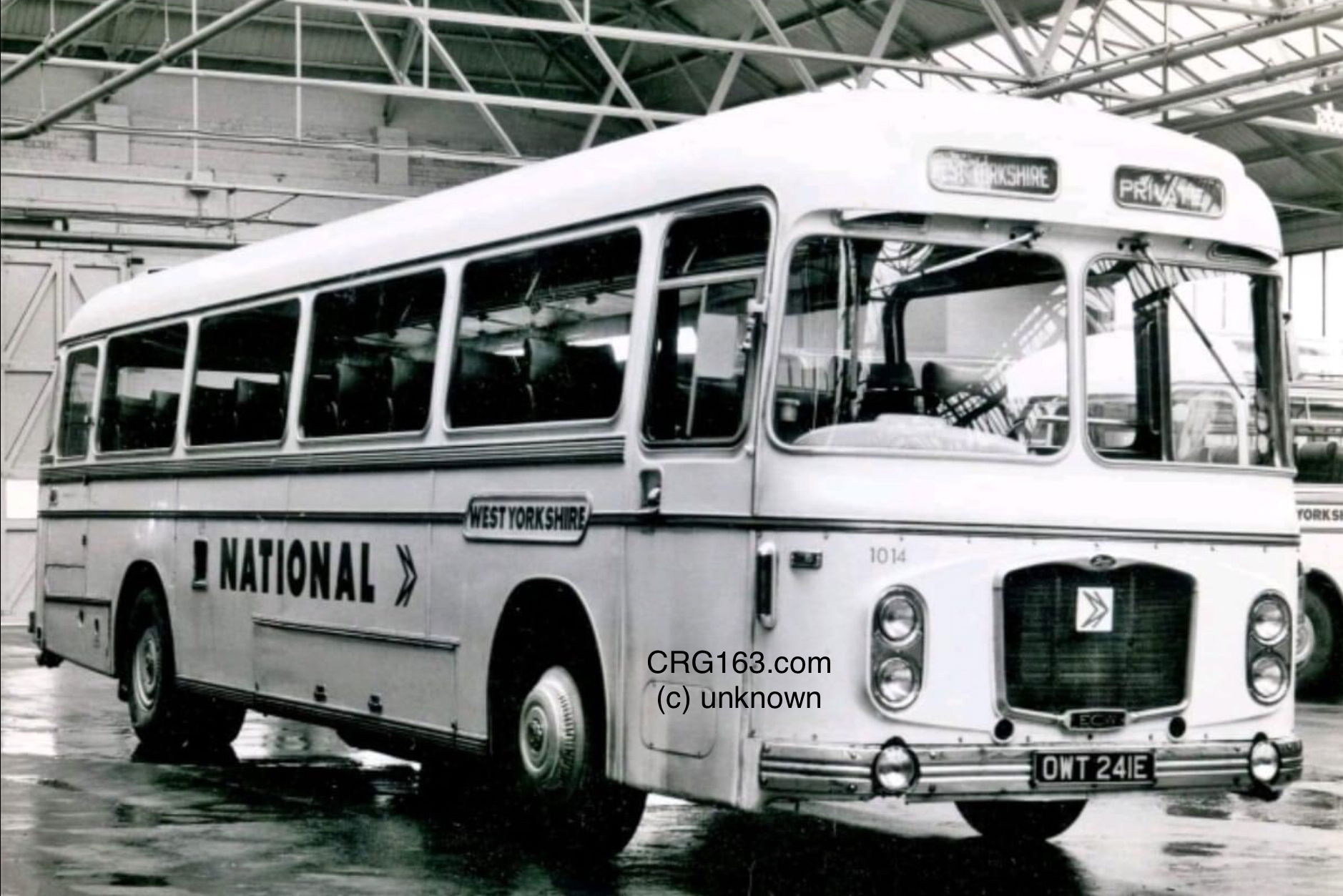 West Yorkshire 1014. Photographer unknown - but reproduced here through kind permission of Neil Halliday from his own collection.
West Yorkshire 1014. Photographer unknown - but reproduced here through kind permission of Neil Halliday from his own collection.This laterally became West Yorkshire CRG1 and then 1014, registration OWT241E, entering service from Harrogate depot on 01/03/66, withdrawn on 30/09/78.
Most popular models
The most popular models sold were as follows:
- RELL - 2,839
- RELH - 976 with CRG163 being one of them
- RESL - 698
- REMH - 105
- RESH - 11
The REML, a sixth model variant was advertised in 1968 but none were built. This would have been a 20 foot wheelbase of the REMH but with a low frame for a bus body.

From 1972, the sales of Bristol RE’s to the National Bus Company (NBC), which had taken over both THC and BET began to dry up. This was due to the introduction of the Leyland National. The Bristol RE remained in production from 1976, but only for the Northern Irish state owned bus companies Ulsterbus and Citybus and for the Christchurch Transport Board, New Zealand which continued until 1983.
Contact details
If you have any photos or related information about CRG163 or any information on the parts presently required then please e-mail me, Richard Jones at post@crg163.com . Many thanks in advance.
You can also subscribe to this website by entering your e-mail address into the white box below, bottom right and click the subscription button. ⬇️

Web links
This page provides web links to on-line documentaries and related websites about the UK bus and coach industry over the years; and those that have supported CRG163’s continued restoration and preservation.
Bristol RELH/ECW coaches
This site was originally created by Carl Berry, who was a friend to many and owner of preserved Crosville CRG103. Carl sadly passed away in 2022, but now Nick Jackson and Nigel Frampton have both created this new version of the site, with grateful support and input from Adele Berry. We remember Carl.
Read MoreThe Modern Age of Coach - BBC Timeshift documentary - Series 10, episode 7
An interesting documentary on the history of the modern age of coach travel featuring the EFE model of CRG163.
Read MoreThe Golden Age of Coach Travel - BBC Timeshift Documentary - Series 10, episode 6
An interesting documentary on the history of the modern age of coach travel featuring the EFE model of CRG163.
Read MoreEastern Coach Works (ECW) Remembered
An interesting short documentary remembering Eastern Coach Works (ECW) and staff.
Read MoreCrosville 100 Centenary - Rhyl 2006
An You Tube video of the Crosville 100 gathering celebrating 100 years since the commencement of Crosville.
Read MoreCrosville 100 Centenary Road Run from Rhyl to Llandudno - 2006
An You Tube video of the Crosville 100 centenary road run from Rhyl to Llandudno in 2006 following Crosville’s old 409 route via Colwyn Bay.
Read MoreRobert J Montgomery Transport Archive
A fantastic pictorial tribute to Crosville and buses by Robert J Montgomery capturing not only the vehicles but also some of the staff including those from the company’s Liverpool Edge Lane depot. The website is managed by Graham Warren.
Read MoreCrosville Edge Lane depot model - Graham Warren
A model of Crosville’s Edge Lane depot, Liverpool with wonderfully angled images representing the depot’s operational period with the company by Graham Warren, son of the late George Warren who worked for Crosville.
Read MoreThe rise of the white coach
Vision, compromise and change all played a part in the roll-out of the National white coach, reflected in the 1972 first edition of the Corporate Identity Manual.
Read MoreCrosville Enthusiasts’ Club (1967)
As the name suggests the current club was founded during 1967 to cater for those interested in the operations and vehicles of Crosville Motor Services Limited. When it was formed the membership was mostly based in the operating area of Crosville, however this has expanded over the years and we now have members from all over the United Kingdom.
Read MoreIllustrated History for EFM163H - Bristol Commercial Vehicles Enthusiasts
This website is for anyone interested in the products of Bristol Commercial Vehicles which includes CRG163 (EFM163H).
Read MoreHuntley Film Archives (archive film 62650)
This short video via You Tube provides a glimpse of NATIONAL services in the mid 1970’s.
Read MoreThe Coach Travellers in 1965 - Nostalgic colour film
The joy of coach travel in 1965.
Read MoreClassic Bus Histories Episode 10: Bristol RE
In this, the tenth episode of Classic Bus Histories, this covers the history of the Bristol RE - without a doubt the most successful rear underfloor engined single decker to emerge from the 1960's.
Read MoreRed & White - RC9868 (OAX 9F) ‘Ruby’
This is a superb website of a superbly restored Bristol RELH, owned by Jonathan Radley.
Read MoreDerek’s Tyre Services
A web link to Derek’s Tyre Services that have sourced and fitted CRG163’s new tyres.
Read MoreSandblasting and Spraying
A web link to ‘Sandblasting and Spraying’ - the company that sandblasted and treated CRG163’s rims.
Read MoreSion Lloyd - Saer Coed / Carpenter
A web link to Sion Lloyd’s website, the carpenter and friend who has been tackling CRG163’s woodwork and lockers.
Read MoreClwyd Auto Electricals
A web link to ‘Clwyd Auto Electricals’ - the company that tested CRG163’s alternator.
Read MoreContact
Please get in touch if you have any photos or history of CRG163 or aware of any of the parts being sought. It would be gratefully appreciated, thank you.
Acknowledgements

We would like to thank the following people for allowing the use of their photographs on this website. Without the time and trouble taken by the following people we would not have such valued photographs depicting the history of CRG/ERG163 as well as Crosville and the wider bus industry. Our grateful thanks to you for documenting the history of transport and that of CRG163 in context of our website. Thank you.
- Andrew Hamer
- Andrew Marks
- Arwyn Herald
- Clive A. Brown
- Dave Cousins
- Derek Thompson
- Dewi Roberts
- Dominic Eaton
- Don McKewon
- Duncan Roberts
- E. A. Allison, Crosville Motor Services Ltd
- Geoff Smith
- Gethin Jones
- Gordon Bate
- Graham Senior
- Graham Warren
- Grahame Wareham
- John Carter
- John F Baker
- John Buchan
- John Lee
- Malcolm Cowtan
- Martin Pinnington
- Mike Street
- Neil Halliday
- Robert Brian Humphreys
- Robert J Montgomery
- Stephen Monaghan
- Tom Lynn
The origins of some of the photographs are unknown and have been depicted as such. However please do get in touch through e-mail if you have any details such as location, dates or if you are the photographer so that the correct acknowledgements can be added or the photos removed if preferred by the owner.
Thank you.
Richard

Contact details
If you have any photos or related information about CRG163 or any information on the parts presently required then please e-mail me, Richard Jones at post@crg163.com . Many thanks in advance.
You can also subscribe to this website by entering your e-mail address into the white box below, bottom right and click the subscription button. ⬇️

Items for sale
Click on the individual pages below for further details.
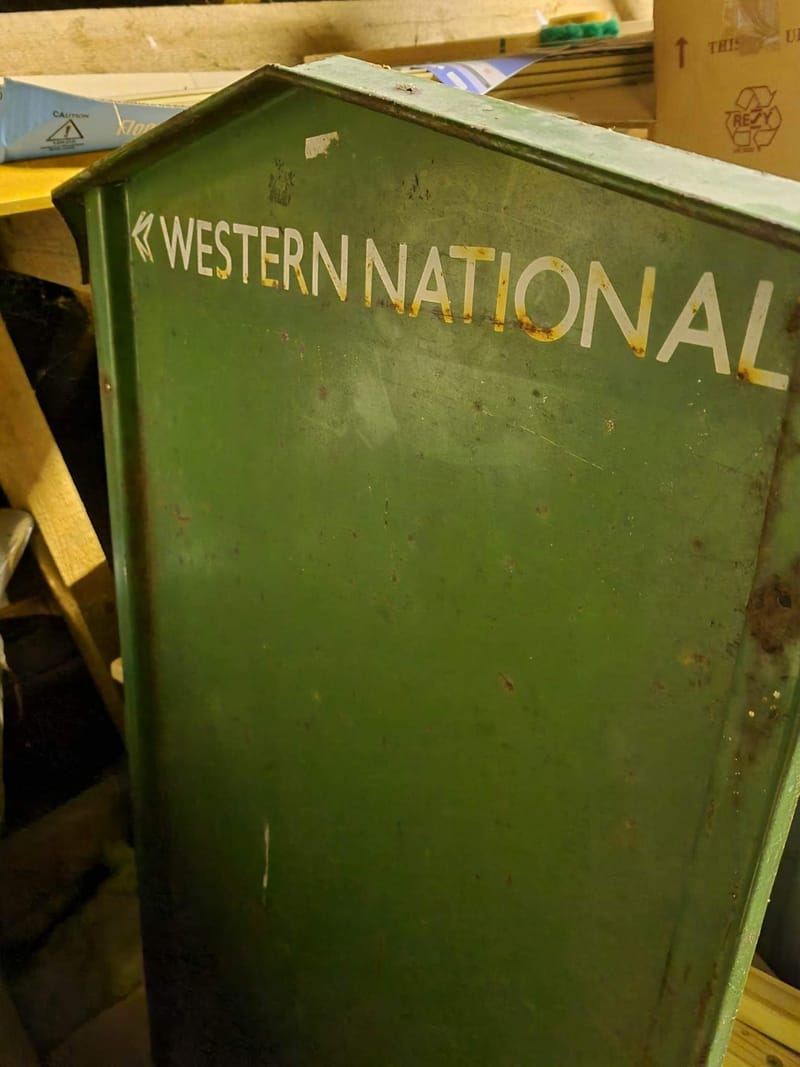
Genuine Western National (NBC) information board
This is a genuine Western National information board as used by the company during it’s National Bus Company period of operation.
Learn More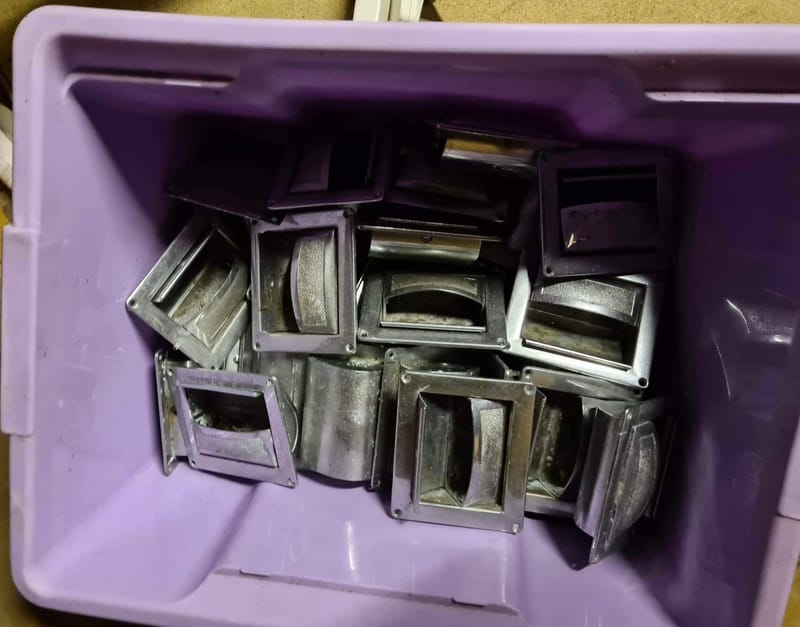
Genuine Eastern Coach Works (ECW) coach seat ash trays
Genuine Eastern Coach Works (ECW) coach seat ash trays
Learn More